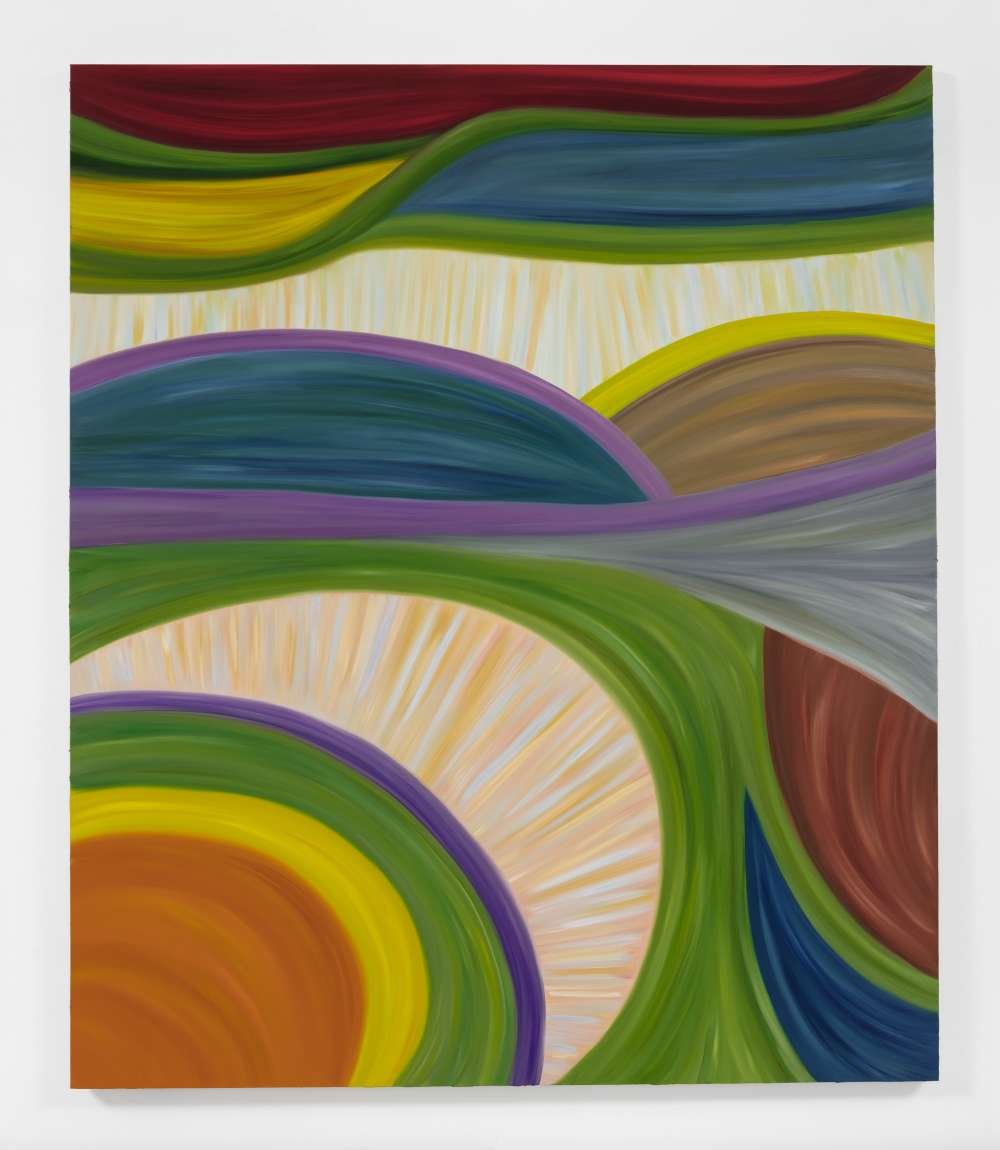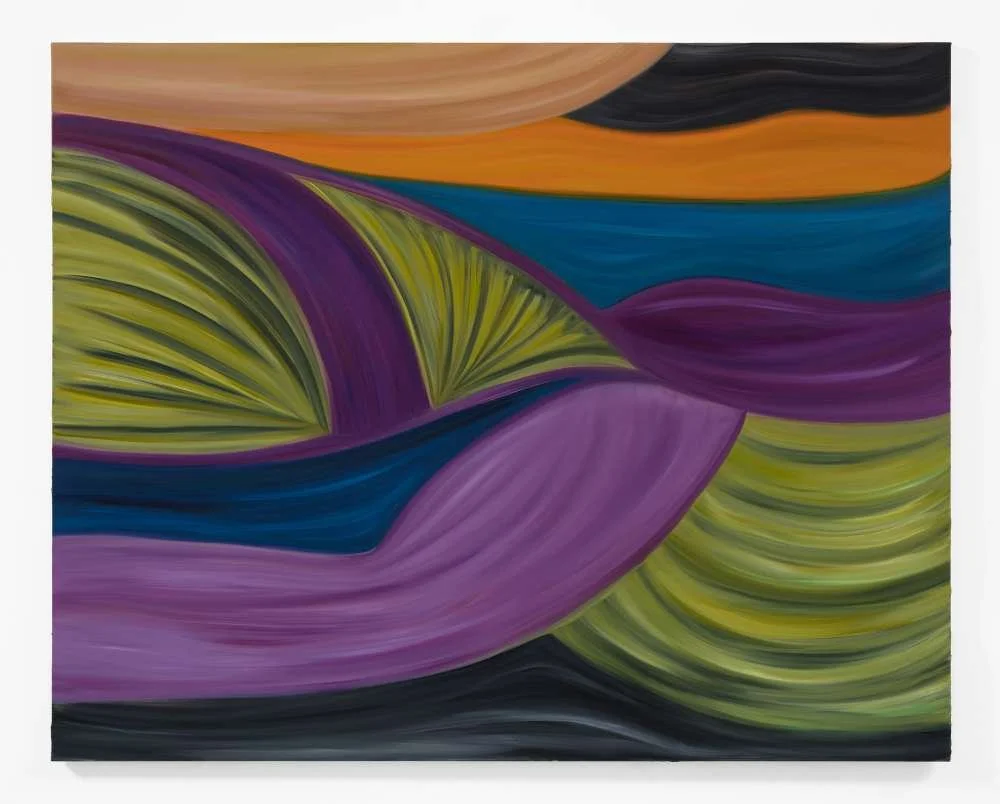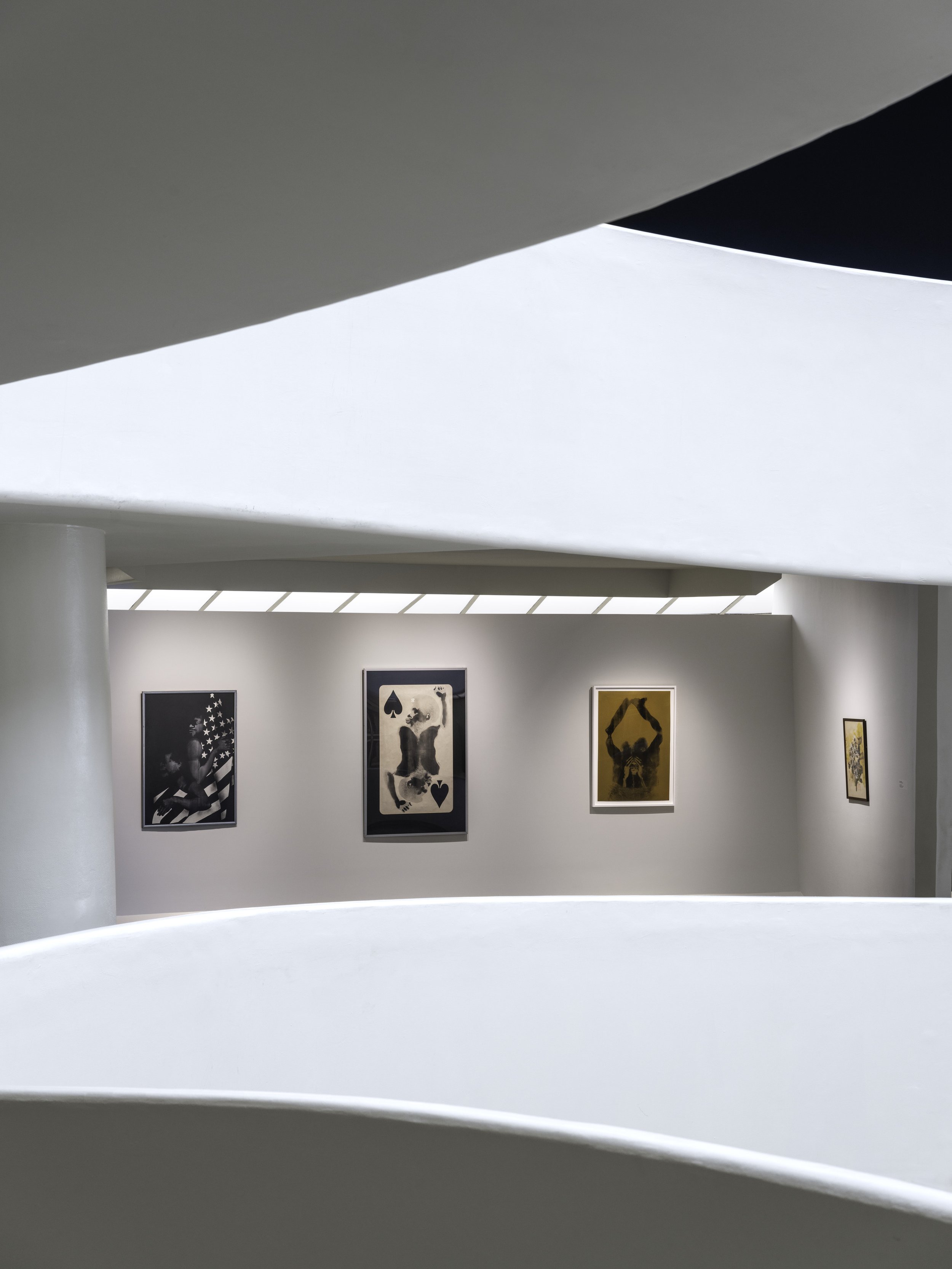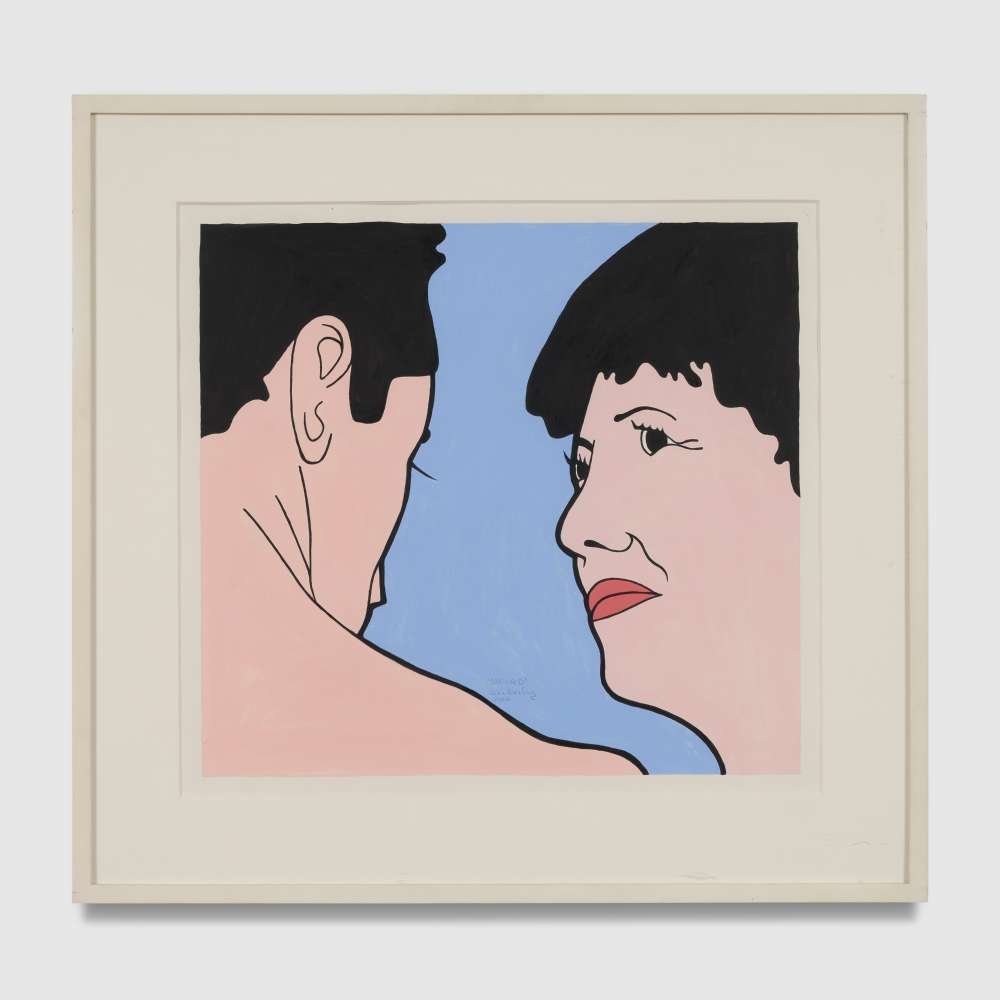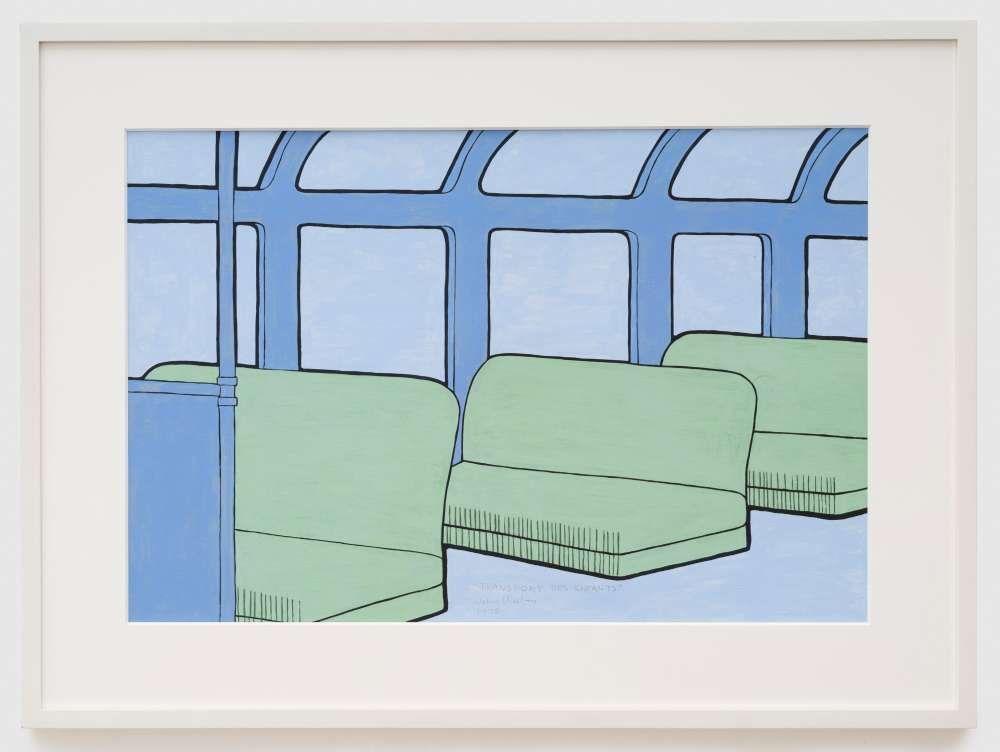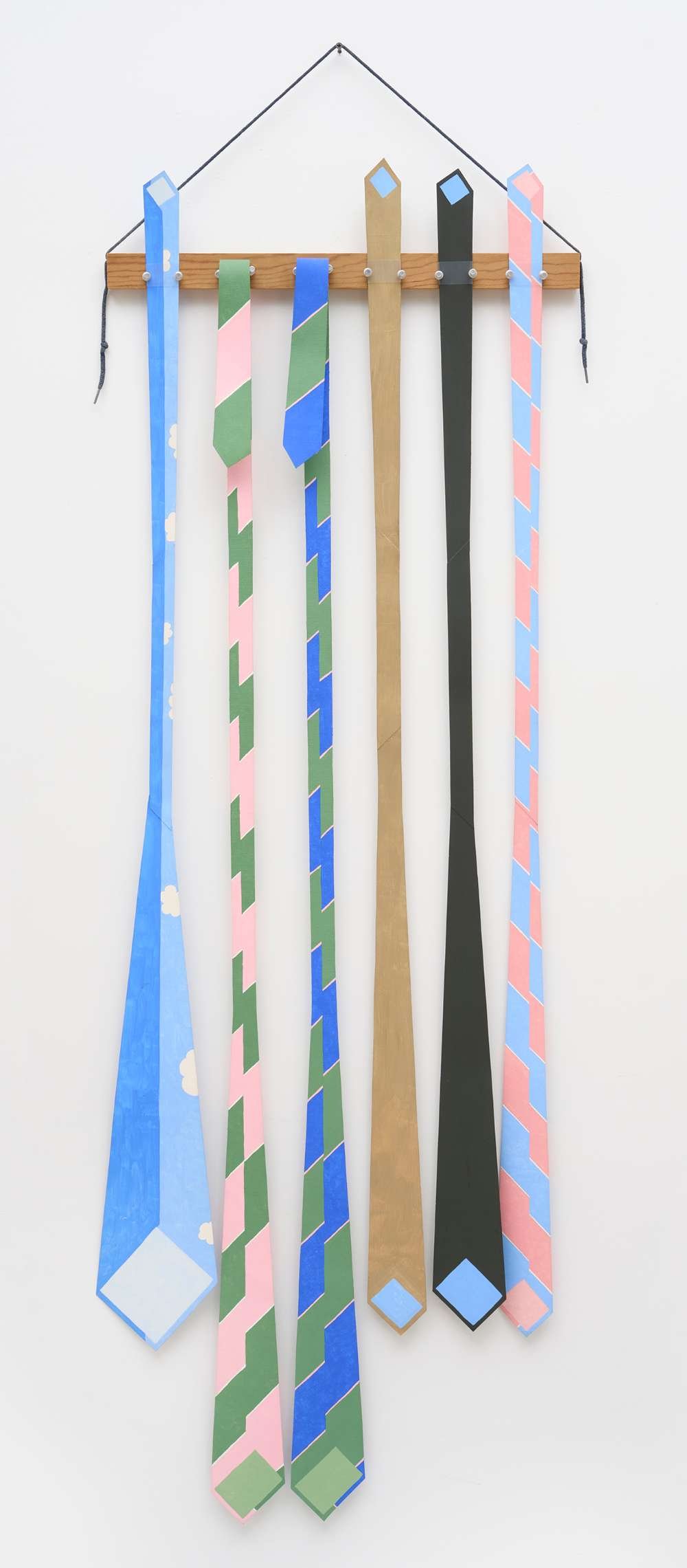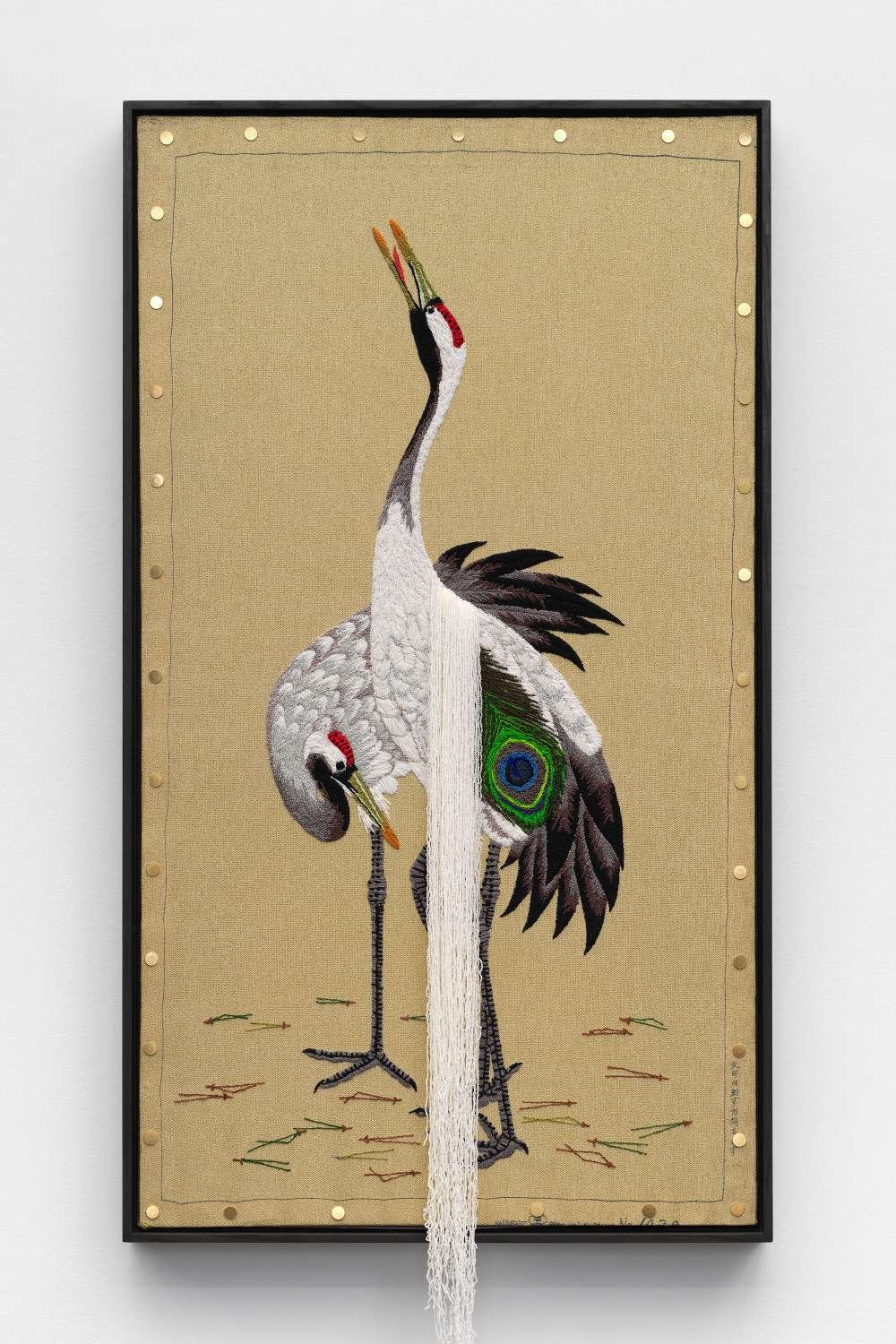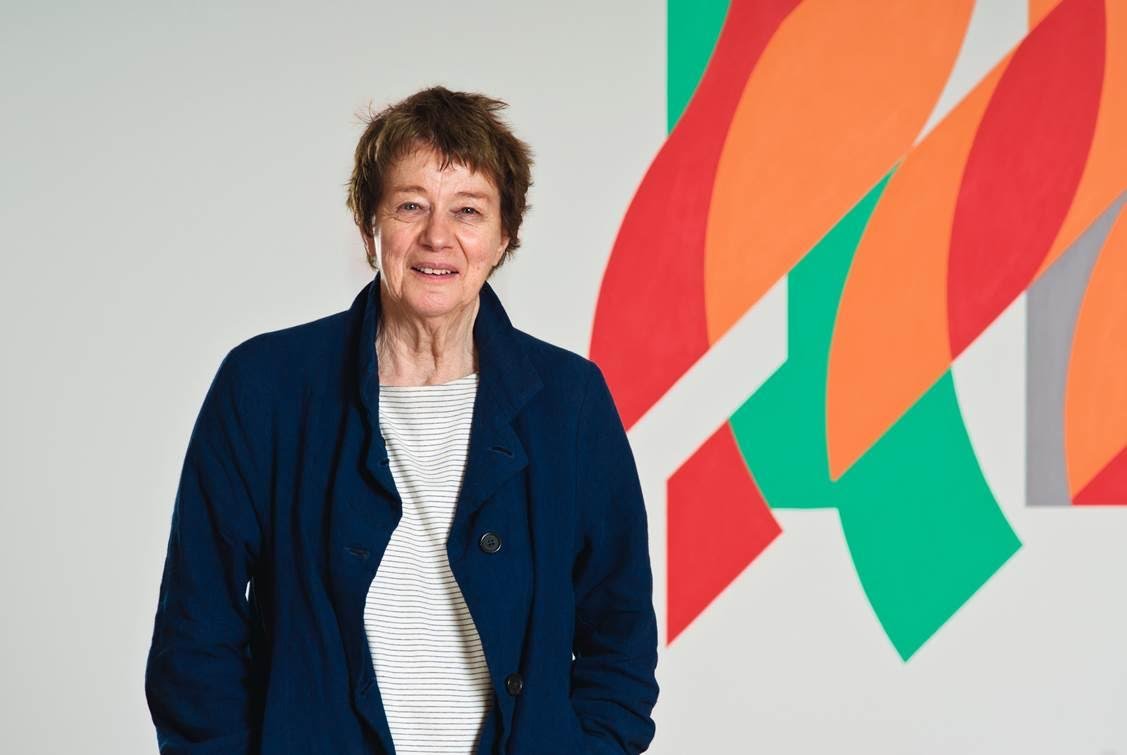LEONARD MARTIN:Suite Zabriskie
Toutes les images/All images:© Courtesy de l'artiste et TEMPLON, Paris—Brussels—NewYork
Multimedia artist Léonard Martin has joined the Galerie Templon family. The gallery marked his arrival with a solo exhibition of brand-new work, the fruit of a dialogue between painting and film he developed during his 2019 residency at Villa Medici.
Painter, video maker, and sculptor, he strives to build bridges between different eras and forms. The French art scene has been captivated by his work since he graduated from Beaux-Arts de Paris in 2015. His creative process makes use of drawings, papers, and precious sculptures he occasionally animates with stop motion, a motor, or video. Léonard Martin finds his subjects by delving into literature and the history of art. Wooden figures on tracks bring to life the characters of Irish novelist and poet James Joyce on their strolls. Italian painter Paolo Uccello’s horse riders serve as a pretext to create an interactive piece. He sometimes takes a break from building marionettes and automatons and uses painting to capture the theatre of objects that is his workshop. Visibly playing with perspective and cultural labels, particularly “painting” and “sculptures,” the scenes he creates generate a dialogue between mediums and eras.
Toutes les images/All images:© Courtesy de l'artiste et TEMPLON, Paris—Brussels—NewYork
Suite Zabriskie is a new series of paintings that invents a possible sequel to Zabriskie Point (1970), Michelangelo Antonioni’s famous movie, following on from the final scene. The film ends with a luxurious villa exploding in a billowing cloud of smoke and household items suspended in the sky, all against a background of music by Pink Floyd. The canvases emerge in a landscape of objects it would be difficult to describe as still lifes, since their spatial representation cuts loose from genre codes to embrace theatre design, for instance, or mental mapping.
Antonioni’s film criticised the society of the time, disparaging consumerism, police violence and the conservative system. While these problems have yet to be resolved, they have now been joined by other issues, such as the ecological crisis and need to protect the living world.

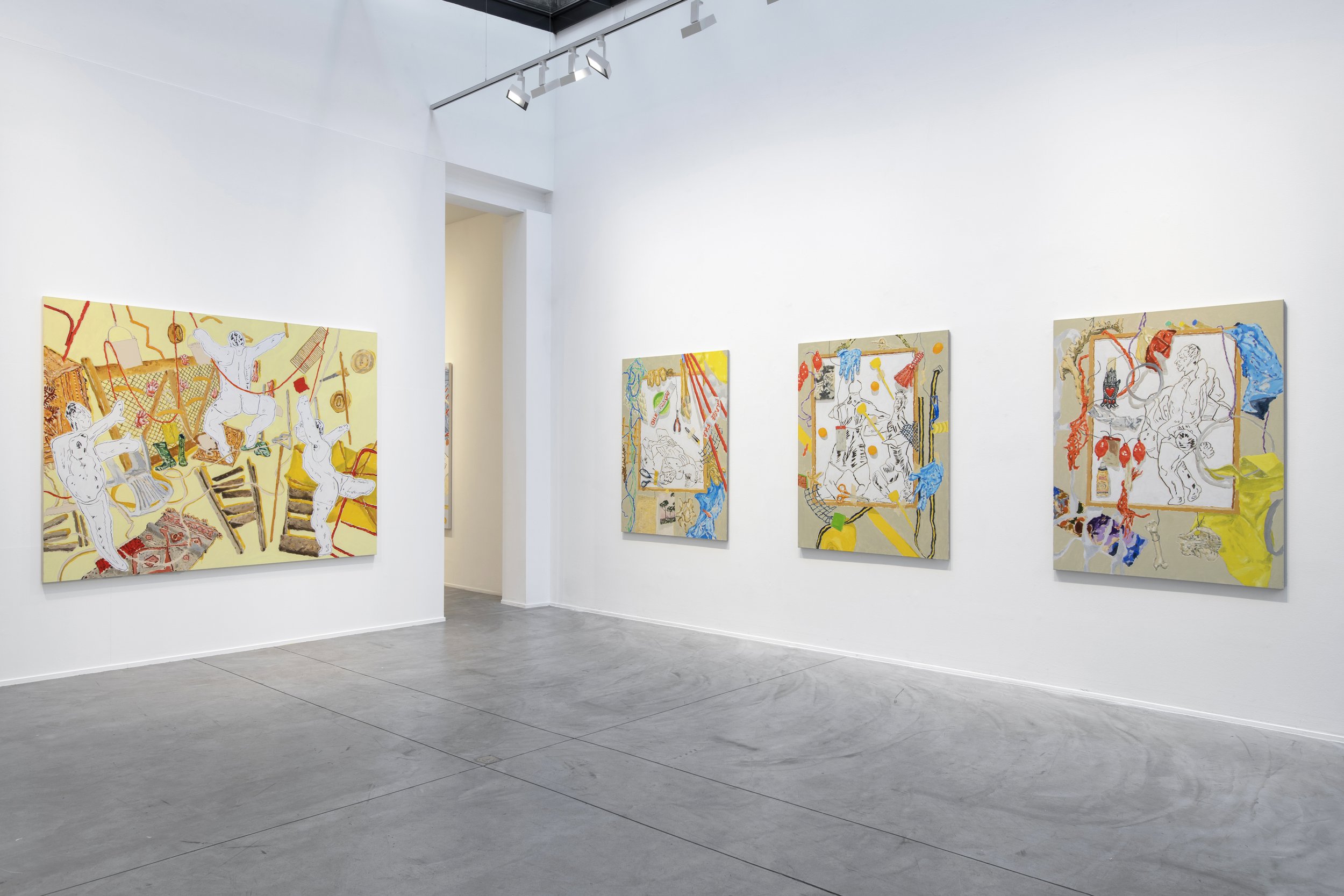
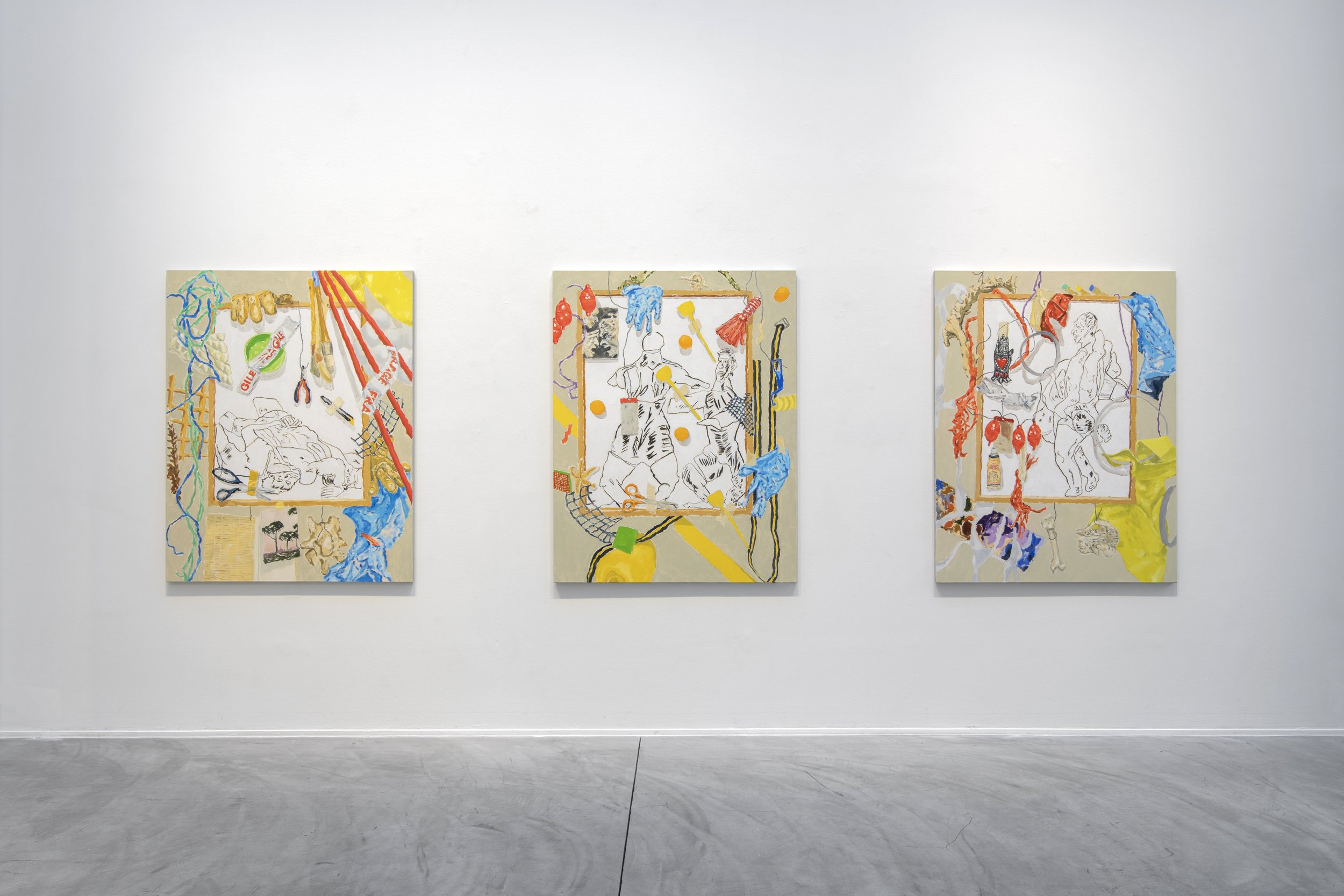

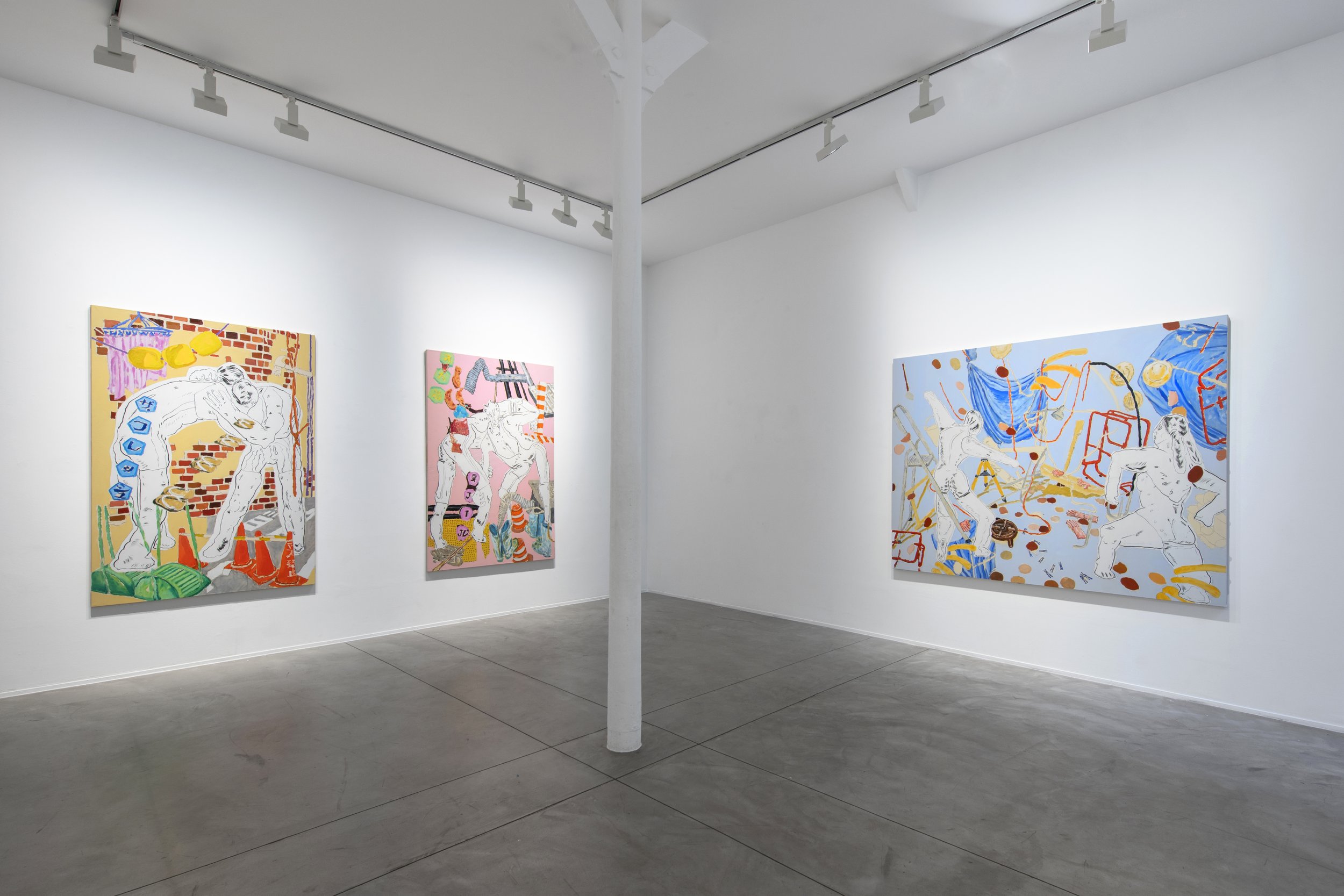
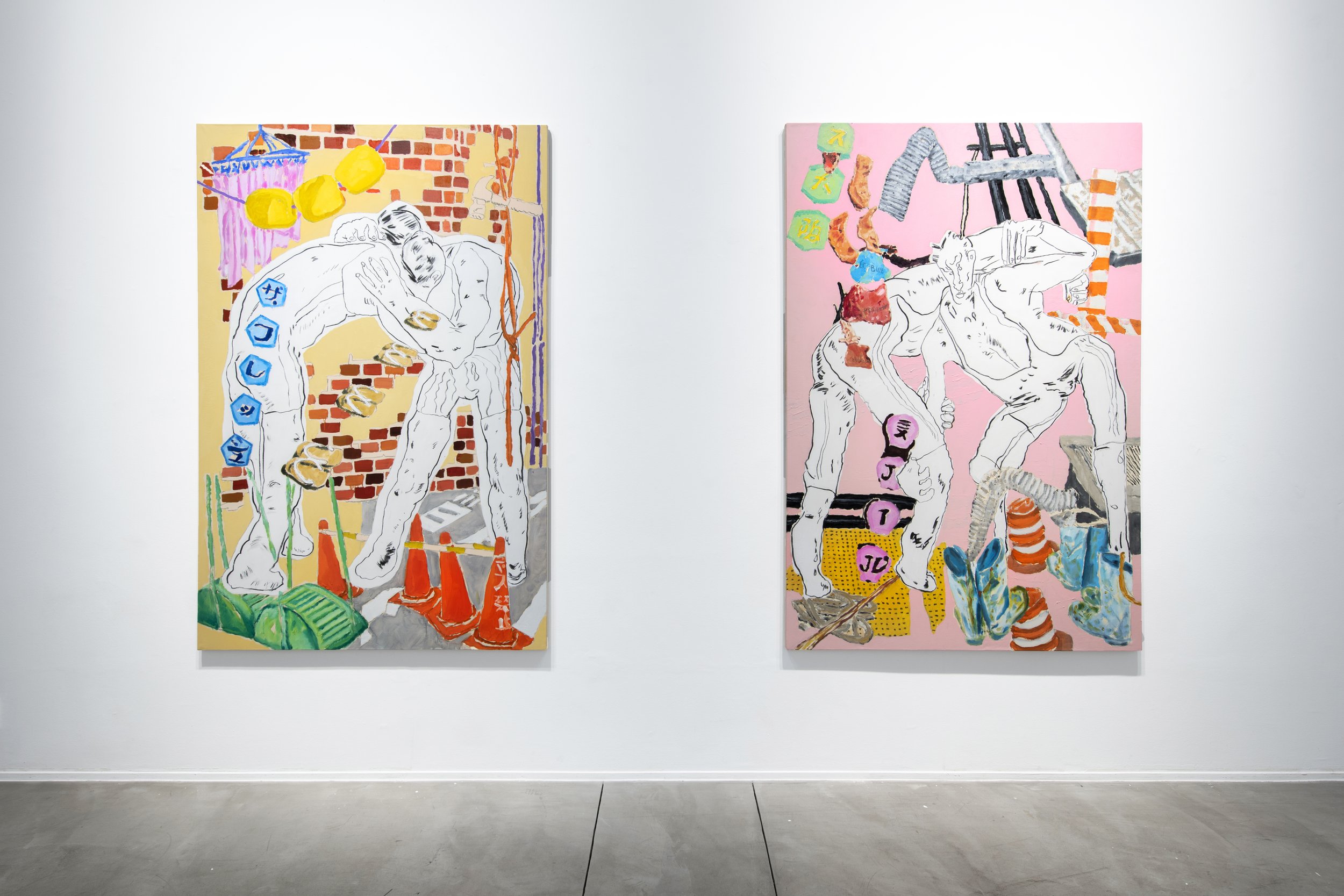
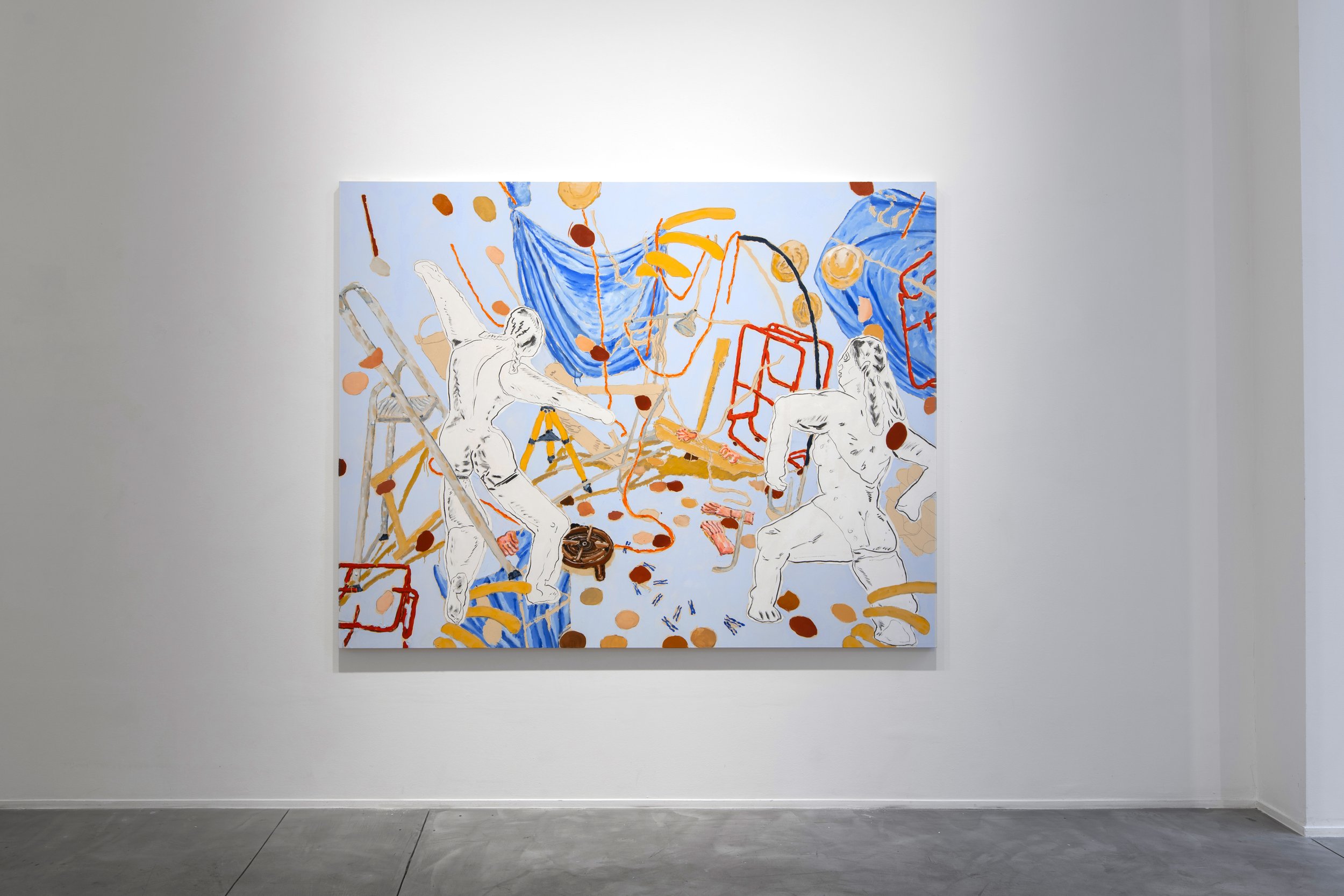
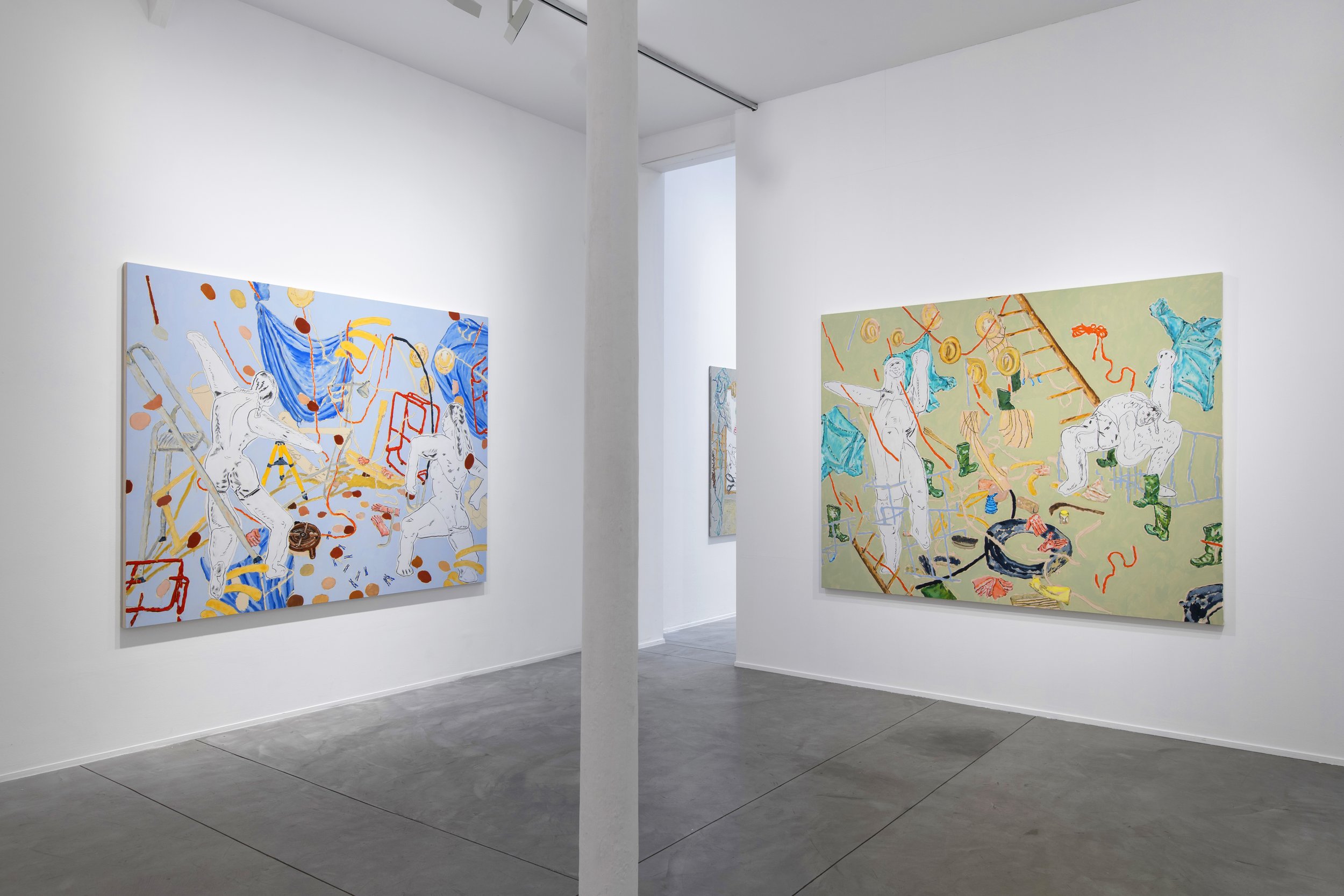

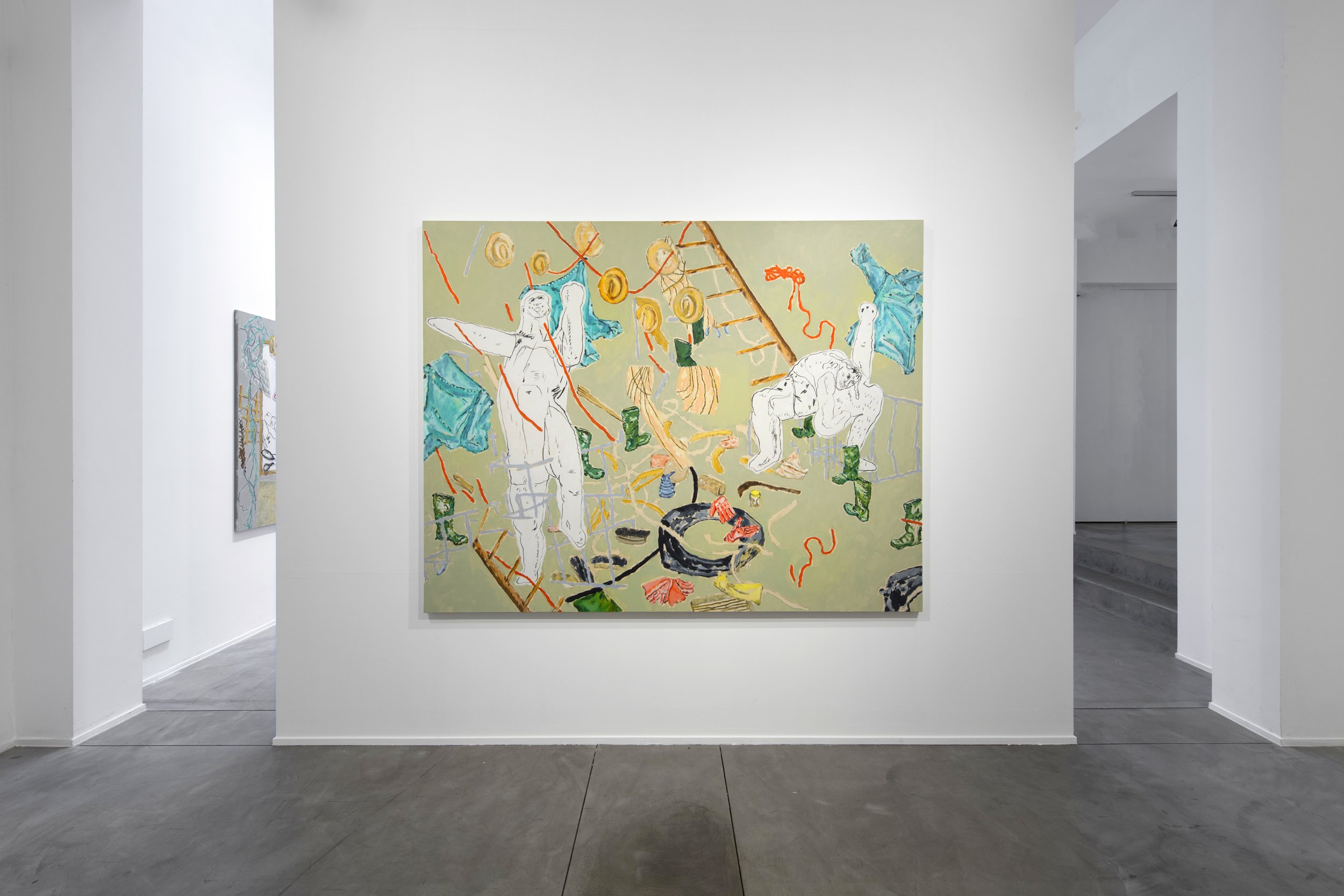
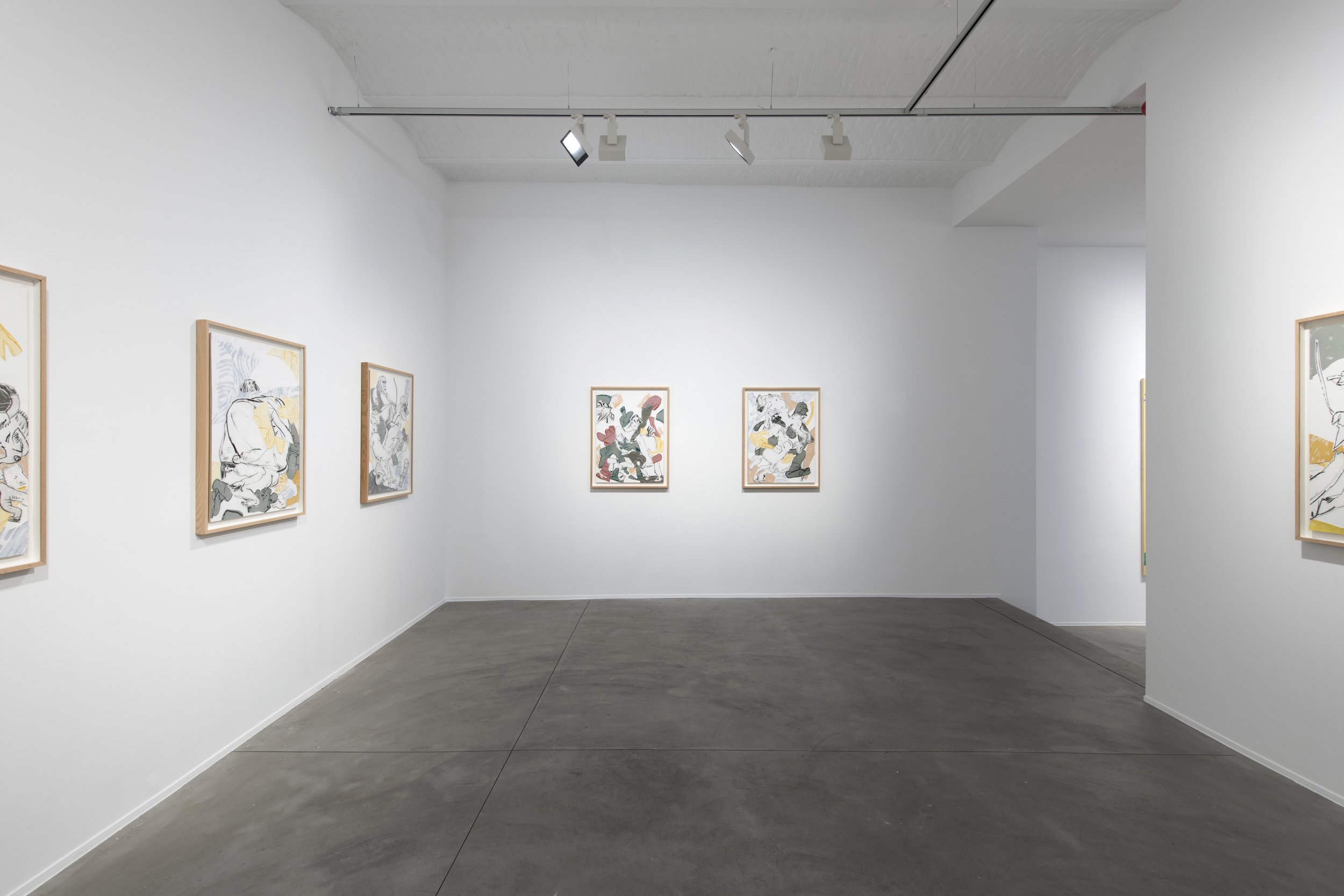
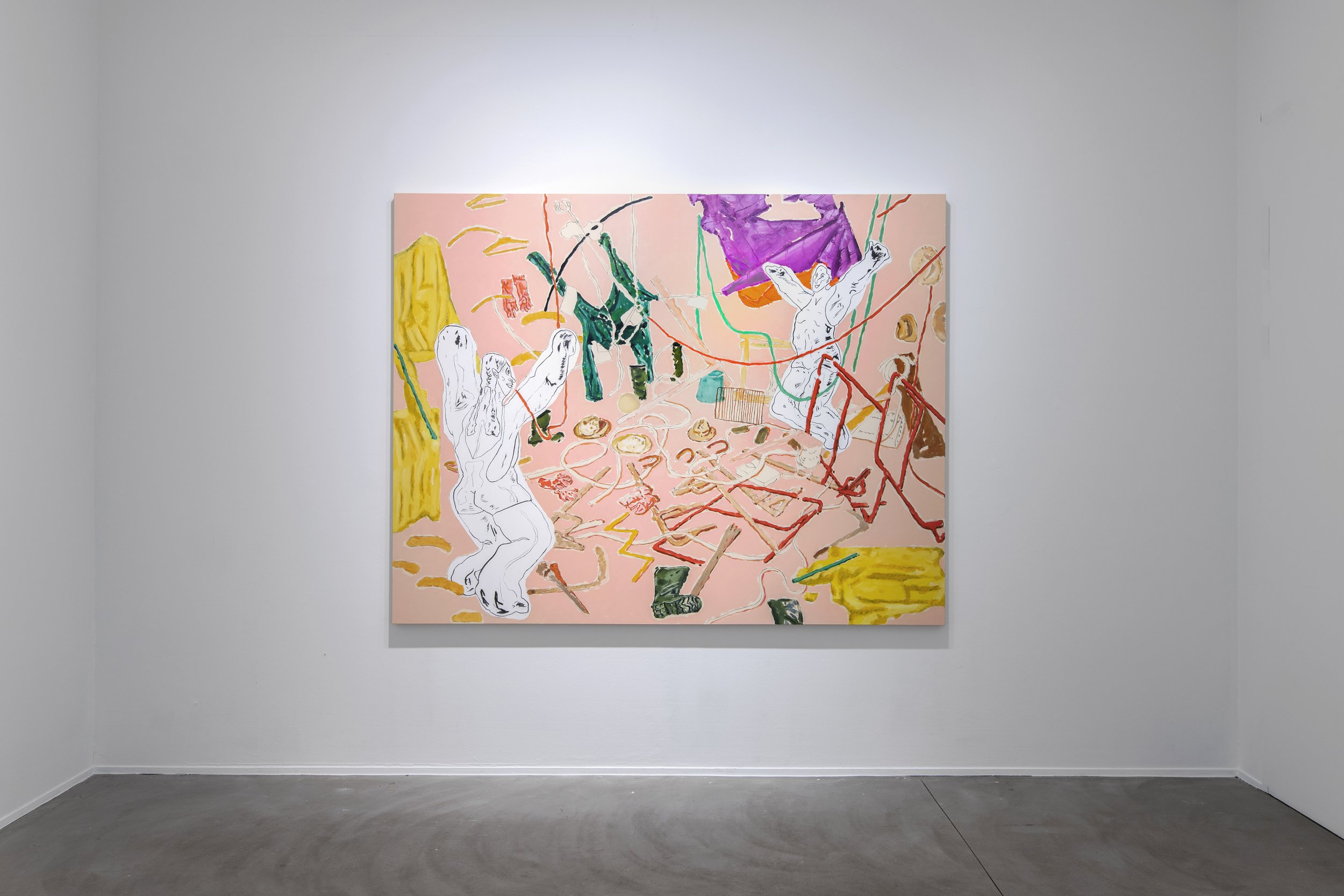
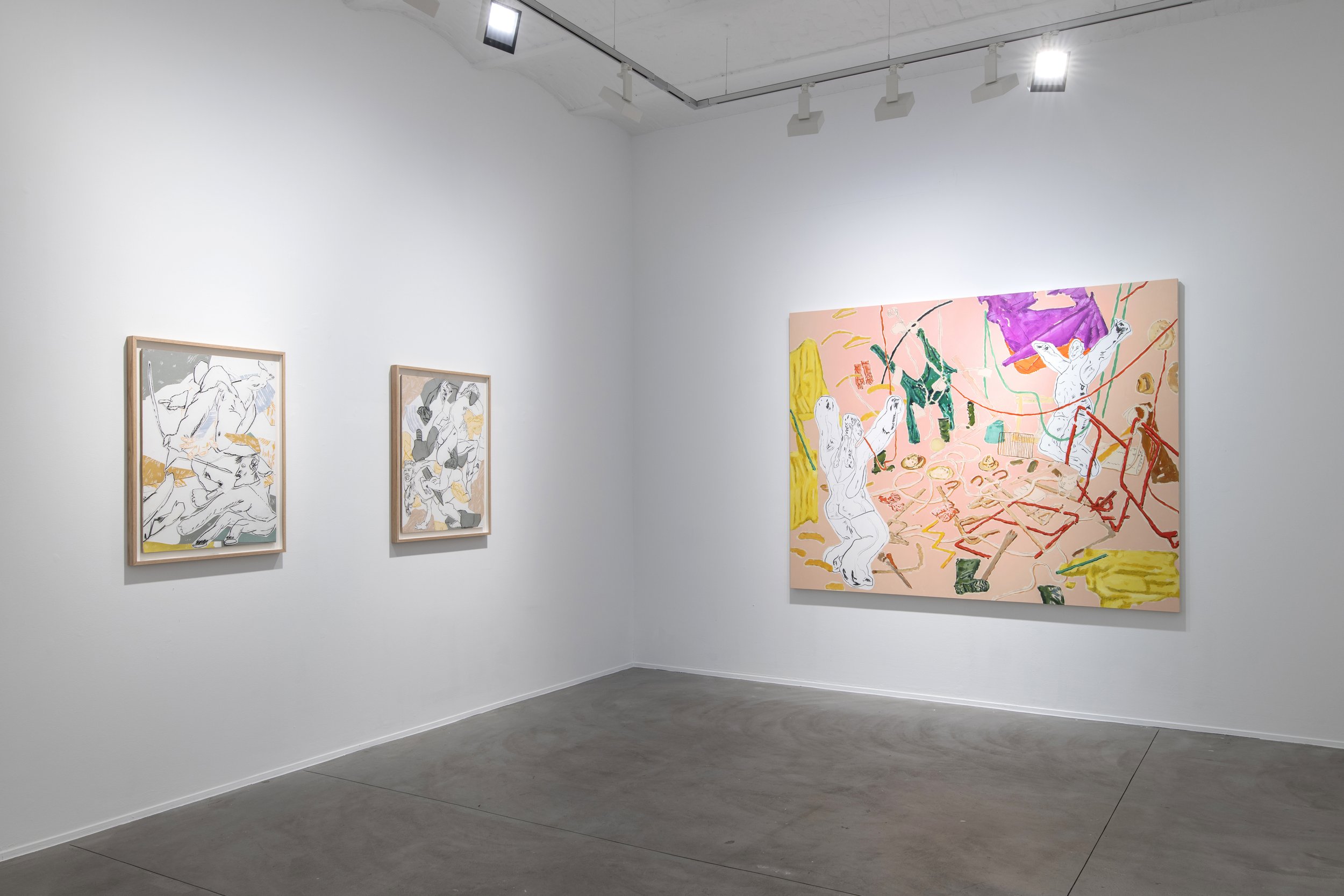

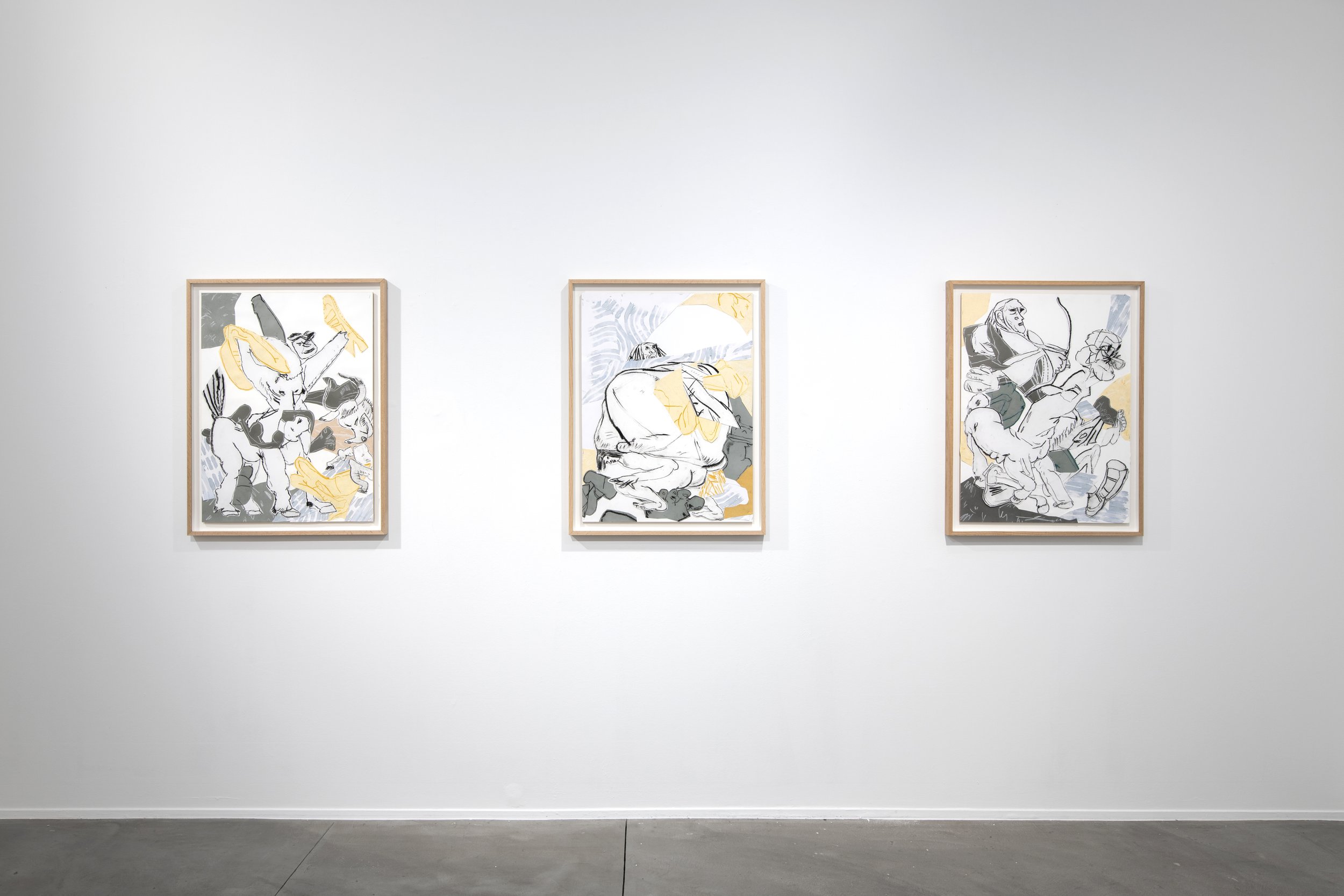
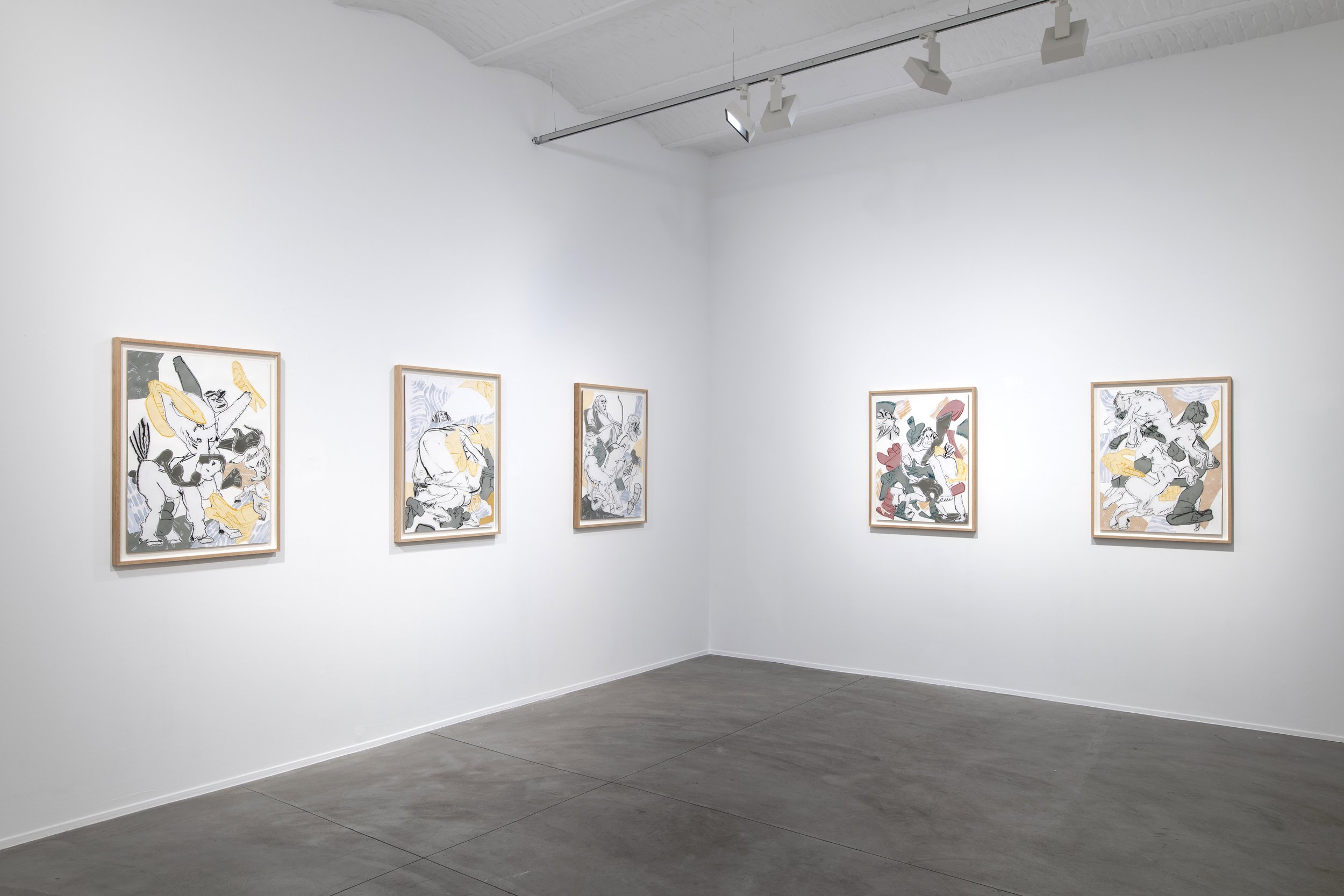
Toutes les images/All images:© Courtesy de l'artiste et TEMPLON, Paris—Brussels—NewYork
“Watching the objects in Zabriskie Point explode raises the question of the repercussions the history of one generation has on the next, the mark it leaves,” explains Léonard Martin.
“I capture the objects on the fly. The film ends in what feels like a point of no return, whereas my paintings imagine possibilities for what came next. How can we find our way through the dreams abandoned by our elders?”
Similarly to emaki, the Chinese, Japanese and Korean illustrated scrolls which foreshadowed cinema, the bird’s-eye view offered by Martin’s paintings prevent the viewer’s gaze from standing still. These paintings do not have a vanishing point, opening the door to multiple interpretations and keeping the images in motion. The solid block of background colour accommodates the objects like the characters on a page of writing. History constantly needs to be rewritten. The profusion of marks that cover the surface of the paintings suggest the constant flow of images, texts and sounds that now fill our daily lives, sometimes blurring our vision. For Martin, “painting might well make it possible to demolish the images, to make the cloud that hangs heavy above our heads rain.”
The series of paintings thus form a sort of musical suite. A next step following on from the film’s missing image (the items falling back to earth after being thrown in the air), from the blind spots of a particular era (the ecological and social impact of the post-war boom years), from the battles still to be fought (police criminality, conservatism, the hubris of progress). The artist asks himself: “how can we stick the fragments of history back together? What should we look for and listen for? My paintings do not take stock. They draw lines, from one memory to another, seeking to repopulate the desert that Antonioni’s lovers fly over.”
Finally, in homage to Flemish painting, the “Quodiblet” series of oils on canvas is inspired by trompe l’oeil to showcase the work of the artist workshop.
Born in 1991 in Paris, Léonard Martin currently lives and works in the French capital. After studying at Beaux-Arts de Paris (graduating in 2015 with first class honours) and Fresnoy – Studio National des Arts Contemporains (graduating in 2017 with first class honours), he showed his work at the Salon de Montrouge, Jeune Création and La Villette in Paris and Collection Lambert in Avignon.
In 2018-2019, he was artist-in-residence at the French Academy in Rome at the Villa Medici. His other prizes and residencies include the Cité Internationale des Arts in Paris in 2019, the ADAGP Digital Art – Video Art Revelation prize in 2017, Prix Dauphine from Université Paris-Dauphine in 2018, and Lafayette Anticipations in 2021. His work was exhibited at the Collection Lambert in Avignon in 2017, La Villette in Paris, the Gwangju Biennale in Korea, Villa Emerige in Paris, and Beaux-Arts de Paris in 2018, and Palais de Tokyo in Paris and Lyon Biennale in 2019.
On January 11th, Suite Zabriskie opened at the Brussels Gallery location and will close on February 24th of, 2024. For more information about this exhibit and other exhibits at the Templon Gallery, please visit their website here. Also, find the Gallery on Instagram and Artsy.
Sasha Gordon: Surrogate Self
Photo Credit: William Jess Laird.
The first solo museum presentation for rising artist Sasha Gordon opened at the Institute of Contemporary Art, Miami (ICA Miami) this December, debuting a suite of new paintings and recent work. The exhibition demonstrates the ongoing evolution of Gordon’s signature, surrealistic practice, which explores the complexities of bodily experience in hyperrealistic detail. Coinciding with Miami Art Week and curated by Alex Gartenfeld, ICA Miami’s Irma & Norman Braman Artistic Director, Sasha Gordon's exhibition features a Suite of New Paintings showcasing Gordon’s Hyperrealistic Forms and Innovative Explorations of the Politics of Representation, and is on view at ICA Miami through April 28, 2024.
Often depicting herself, Gordon is keenly aware of the art historical themes of portraiture and self-portraiture, and of the politics of representation. She approaches these categories with inventiveness and humor and a unique ability to make fantasy real. Gordon’s images survey a wide range of emotional possibilities while exploring the rich plurality of her identity as a queer Asian American woman. Depicting intimacy, empowerment, vulnerability, and the feminine form, her work critically engages issues of self-image, racial prejudice, interpersonal relationships, and the attending psychological impacts, while also exhibiting discomfort.
Sasha Gordon, Princess, 2023. Oil on canvas, 182.8 x 243.8cm (72 x 96in). Copyright Sasha Gordon. Courtesy the artist; Stephen Friedman Gallery, London and New York; and Matthew Brown, Los Angeles. Photo: Mark Blower.
In her most recent works, including new paintings debuting at ICA Miami, Gordon depicts herself in a condition of becoming. Transforming into animal, botanical, and geological phenomena, Gordon enacts the process of objectifying bodies, while examining personal experiences of alienation and challenging taboos and standards of representation. Through these avatars she portrays the othering of unconventional human bodies and examines her own experiences of alienation, while questioning the logic of certain limiting social norms.
Volcano, 2023. Oil on canvas, 243.8 x 182.8cm (96 x 72in). Copyright Sasha Gordon. Courtesy the artist; Matthew Brown Gallery, Los Angeles and Stephen Friedman Gallery. Photo: Mark Blower.
Among the recent works featured in the exhibition is Volcano (2023), in which Gordon explores themes of transformation and confronts the demonization of women's emotions. While anger among men is typically perceived as a manifestation of strength or power, in women it is often labelled a sign of instability. With this painting, the artist claims her right to express rage, reimagining herself as an erupting volcano; gritting her teeth, she paints herself overflowing with lava-like emotion.
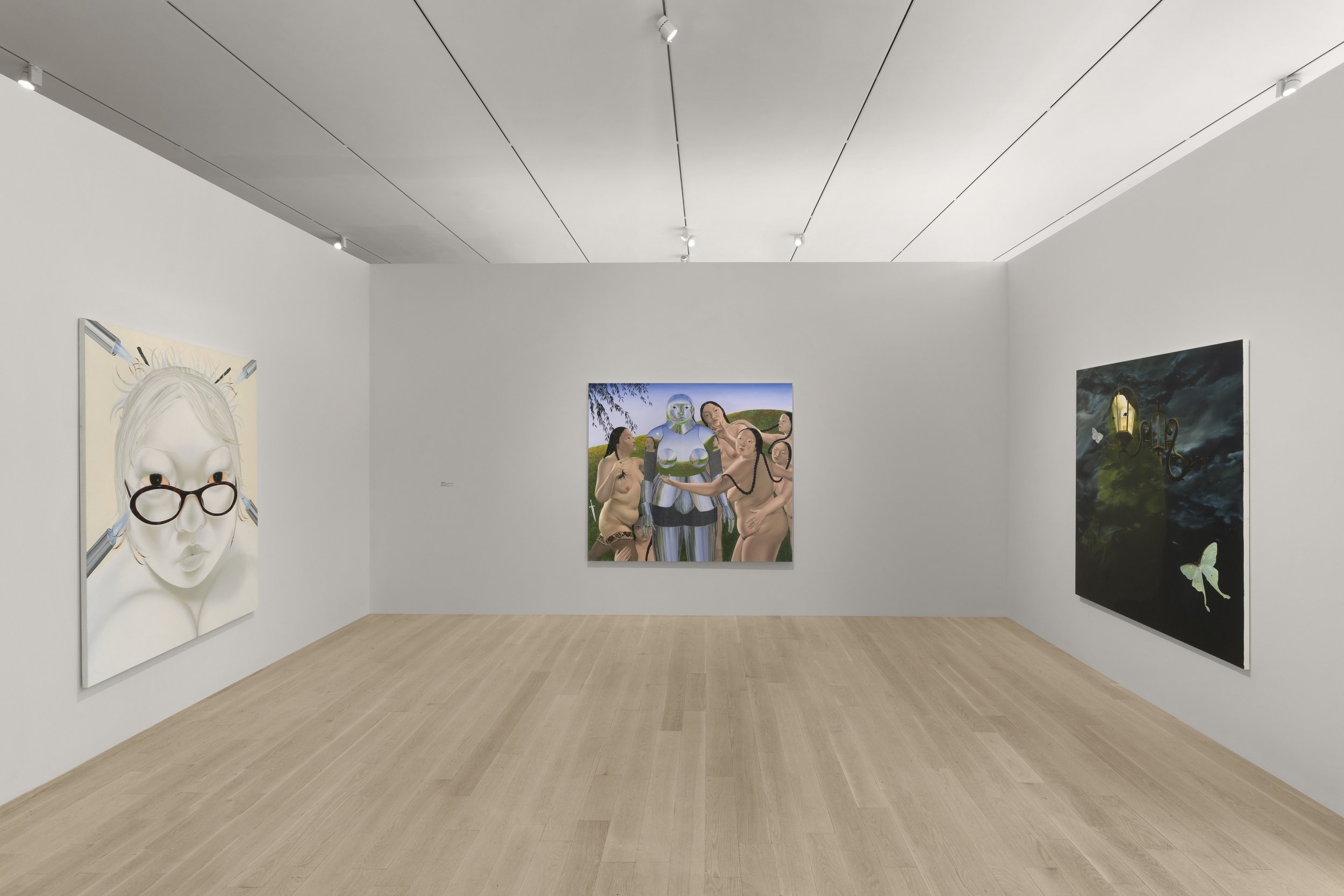

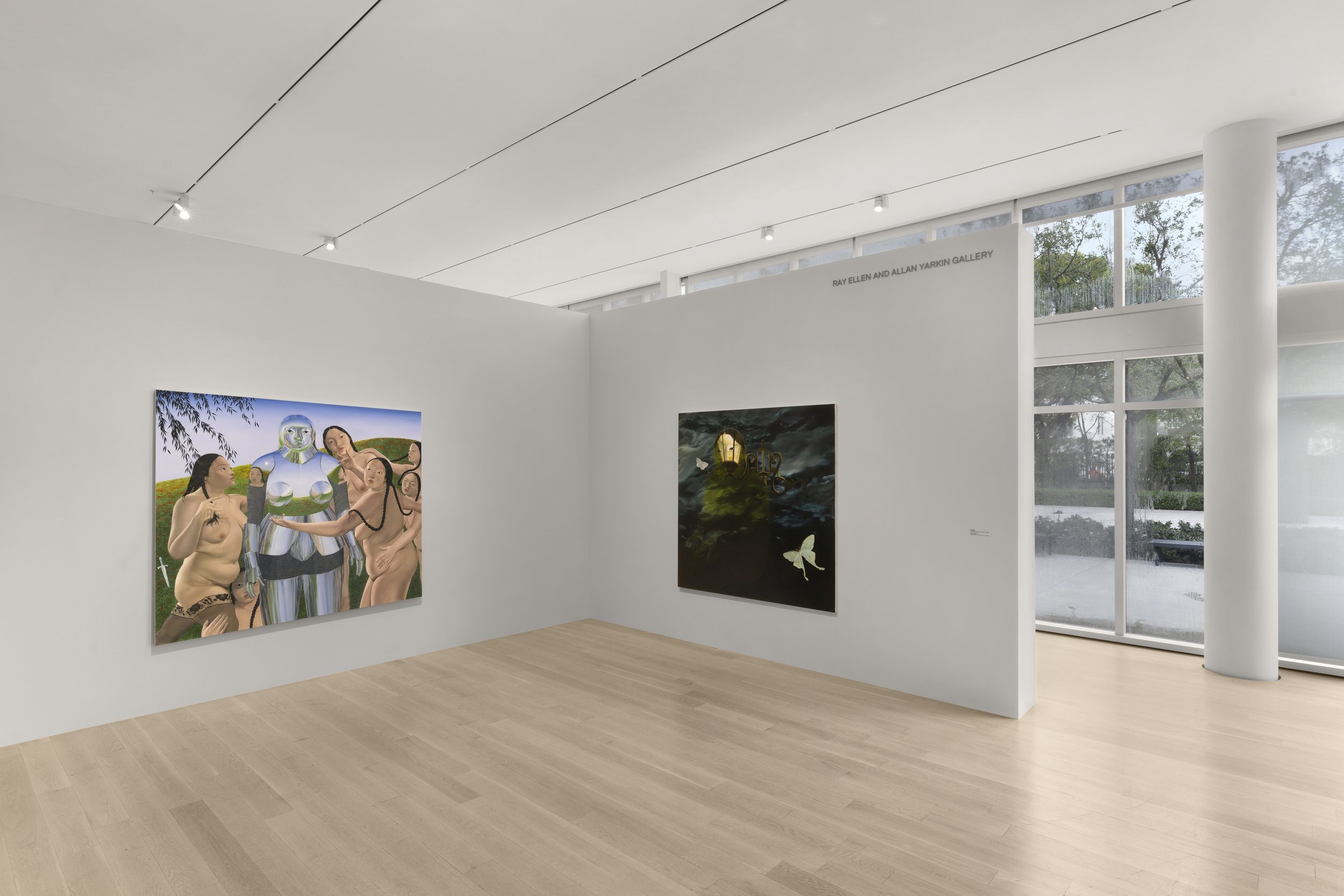









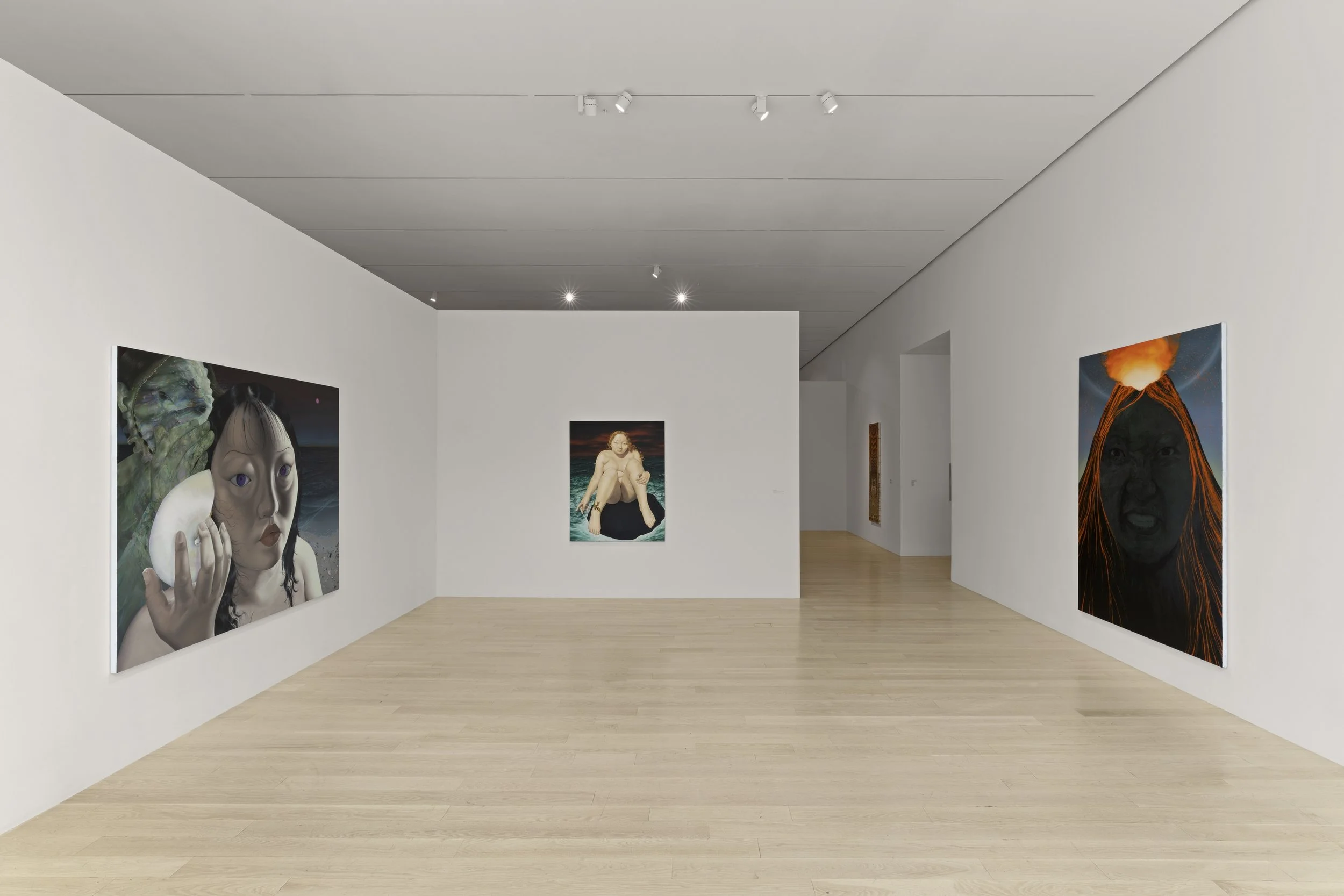

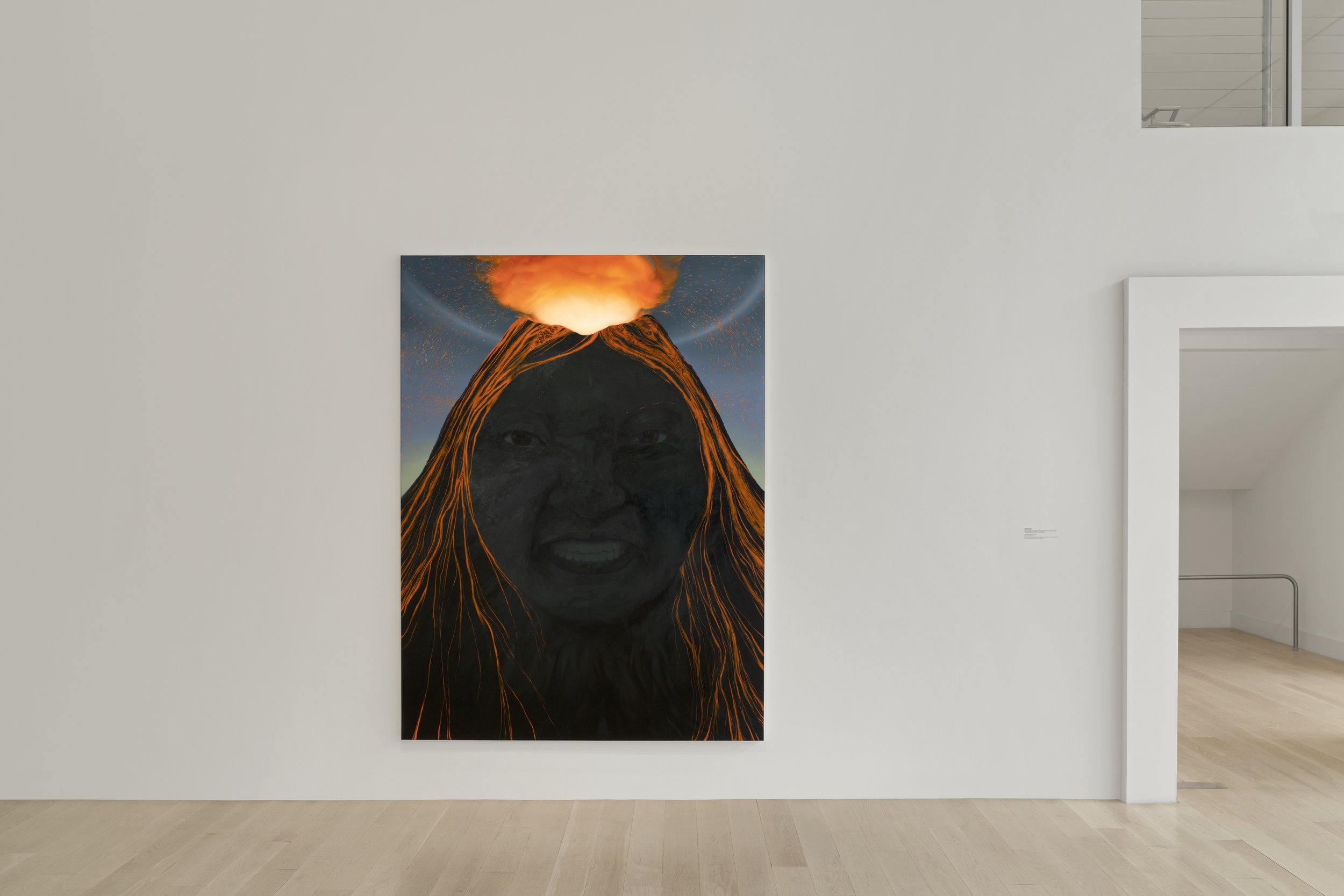



Installation view: "Sasha Gordon: Surrogate Self," at the Institute of Contemporary Art, Miami. Dec 5,2023-Mar 10, 2024. Photograph Zachary Balber.
“Sasha Gordon is a leader in the field of contemporary painting, with a unique ability to communicate complex personal and cultural issues through her exquisite and inventive technique. We are proud to bring together new and very recent works in order to amplify Sasha's ideas about identity, objectification, and the politics of representation,” said Gartenfeld. “As Gordon’s debut solo museum exhibition, this presentation exemplifies ICA Miami’s commitment to providing the first institutional platform for important artists, and providing early-career contextualization through scholarship and conversation.”
Alongside Sasha Gordon this fall, ICA Miami opens a robust roster of solo exhibitions and installations, including a three-decade survey of renowned conceptual artist Charles Gaines; a presentation of works by under-recognized painter Ahmed Morsi; a major new installation by Tau Lewis, the 2023 recipient of the Ezratti Family Prize for Sculpture; and a new monumental photographic installation by Anne Collier, animating the museum’s dramatic central staircase. Image: Sasha Gordon, Like Froth (2022). Oil on canvas. 60 x 48 in. 152.4 x 121.9 cm. Courtesy Matthew Brown Gallery.
About Sasha Gordon
Sasha Gordon (b. 1998, Somers, New York) lives and works in New York. She graduated from the Rhode Island School of Design (RISD), Providence, in 2021. Solo exhibitions include “Hands of Others,” Jeffrey Deitch, New York (2022) and “Enters Thief,” Matthew Brown, Los Angeles (2021). Her work is included in the collections of ICA Miami; Hammer Museum, Los Angeles; Museum of Fine Arts, Houston; and the Los Angeles County Museum of Art. Support Lead support for Sasha Gordon is provided by Matthew and Stephanie Herfield. Major support is provided by the Nicoll Family Fund. Additional support is provided by Stefanie, Andrew, and Rebecca Reed, in honor of Evan J Reed. Exhibitions at ICA Miami are supported by the Knight Foundation.
About the Institute of Contemporary Art, Miami
The Institute of Contemporary Art, Miami (ICA Miami) is dedicated to promoting continuous experimentation in contemporary art, advancing new scholarship, and fostering the exchange of art and ideas throughout the Miami region and internationally. Through an energetic calendar of exhibitions and programs and its collection, ICA Miami provides an important international platform for the work of local, emerging, and under-recognized artists and advances the public appreciation and understanding of the most innovative art of our time. Launched in 2014, ICA Miami opened its new permanent home in Miami’s Design District on December 1, 2017. The museum’s central location positions it as a cultural anchor within the community and enhances its role in developing cultural literacy throughout the Miami region. The museum offers free admission, providing audiences with open, public access to artistic excellence year-round.
The Institute of Contemporary Art, Miami, is located at 61 NE 41st Street, Miami, Florida 33137. For more information, visit here or follow the museum on Instagram, You Tube, and Facebook
Marina Perez Simão: Solanaceae
Marina Perez Simão: Solanaceae 1201 South La Brea Avenue, Los Angeles, CA 90019, January 20–March 2, 2024 Photography courtesy Pace Gallery
Los Angeles – Pace is pleased to be presenting an exhibition of immersive paintings by Marina Perez Simão at its Los Angeles gallery. The exhibition opened on January 20 and will close on March 2, 2024; the show, titled Solanaceae, will bring together some 15 canvases of various sizes—including monumental panoramas—created by the artist in the past year. Solanaceae will mark Simão’s first-ever solo presentation in LA and, more broadly, on the West Coast of the United States, and the exhibition will coincide with the 2024 edition of Frieze LA. It will be accompanied by a new catalogue from Pace Publishing, featuring a foreword by the gallery’s Curatorial Director Kimberly Drew, as well as an original essay by SCAD Museum of Art Assistant Curator Brittany Richmond.
Untitled/Sem título, 2023 PAINTING oil on linen 185 cm × 380 cm (72-13/16" × 12' 5-5/8") No. 90106 © Marina Perez Simão, courtesy Pace Gallery
Working across oil painting, watercolor, and printmaking, Simão is known for her vibrant, lyrical compositions exploring both interior and exterior landscapes. Through her practice, she constructs visual journeys into semiabstract and often unknowable realms made up of organic, undulating forms. Imbued with visions and memories, Simão’s oneiric landscapes reflect her deep and enduring interest in abstraction’s power to convey ideas, concepts, and feelings that transcend language.
Untitled/Sem título, 2023 PAINTING oil on linen 136 cm × 108 cm (53-9/16" × 42-1/2") No. 90118 © Marina Perez Simão, courtesy Pace Gallery
In the paintings for her upcoming exhibition with Pace in LA—which takes the scientific name for the nightshades family of plants as its title—the artist meditates on the phenomenological effects of different conditions of light and its absence. In a departure from her past works, Simão has adopted a palette of deep, dark colors for her new landscapes, combining multiple hues at a time to emulate the nuances of bioluminescence. Elaborating upon her recent experimentations with traditional Florentine fresco techniques for a painting she showed this year in São Paulo, Simão has realized many of these landscapes at grander scales than she has ever worked in before, with two monumental compositions each extending more than 12-feet in width. As part of her process for making these paintings, she experiments with forms in watercolors and smaller scales, bringing a confident intuition to her final, large-scale compositions.
Untitled/Sem título (Detail), 2023 PAINTING oil on linen 200 cm × 170 cm (78-3/4" × 66-15/16") No. 90109 © Marina Perez Simão, courtesy Pace Gallery
Tapping into the rich material histories of murals and frescos, mediums often associated with depictions of heaven or paradise, the artist’s new large-scale works lend a distinctly experiential and transportive dimension to this presentation. Featuring layers of color, these paintings—which seem to glow and vibrate with energy drawn from an internal, celestial light source—speak to Simão’s unique ability to imbue her work with luminosity.
Untitled/Sem título, 2023 PAINTING oil on linen 200 cm × 170 cm (78-3/4" × 66-15/16") No. 90110 © Marina Perez Simão, courtesy Pace Gallery
Her paintings are marked by expressive and gestural brushstrokes, which respond to one another within individual works and across multiple compositions, giving the entire exhibition a sense of continuity and consequence with respect to time and movement. In her tableaus that suggest caves, forests, rivers, waterfalls, and other environments, Simão examines the way that light can function as a supernatural force in our experience of nature. Boundaries between interior and exterior spaces are blurred and, in some cases, obliterated in these scenes of unreality and mystery.
Untitled/Sem título, 2023 PAINTING oil on linen 170 cm × 136 cm (66-15/16" × 53-9/16") No. 90116 © Marina Perez Simão, courtesy Pace Gallery
Among Simão’s recent projects was her 2022 residency with Cahiers d’Art in Paris, where she presented an exhibition of watercolors.


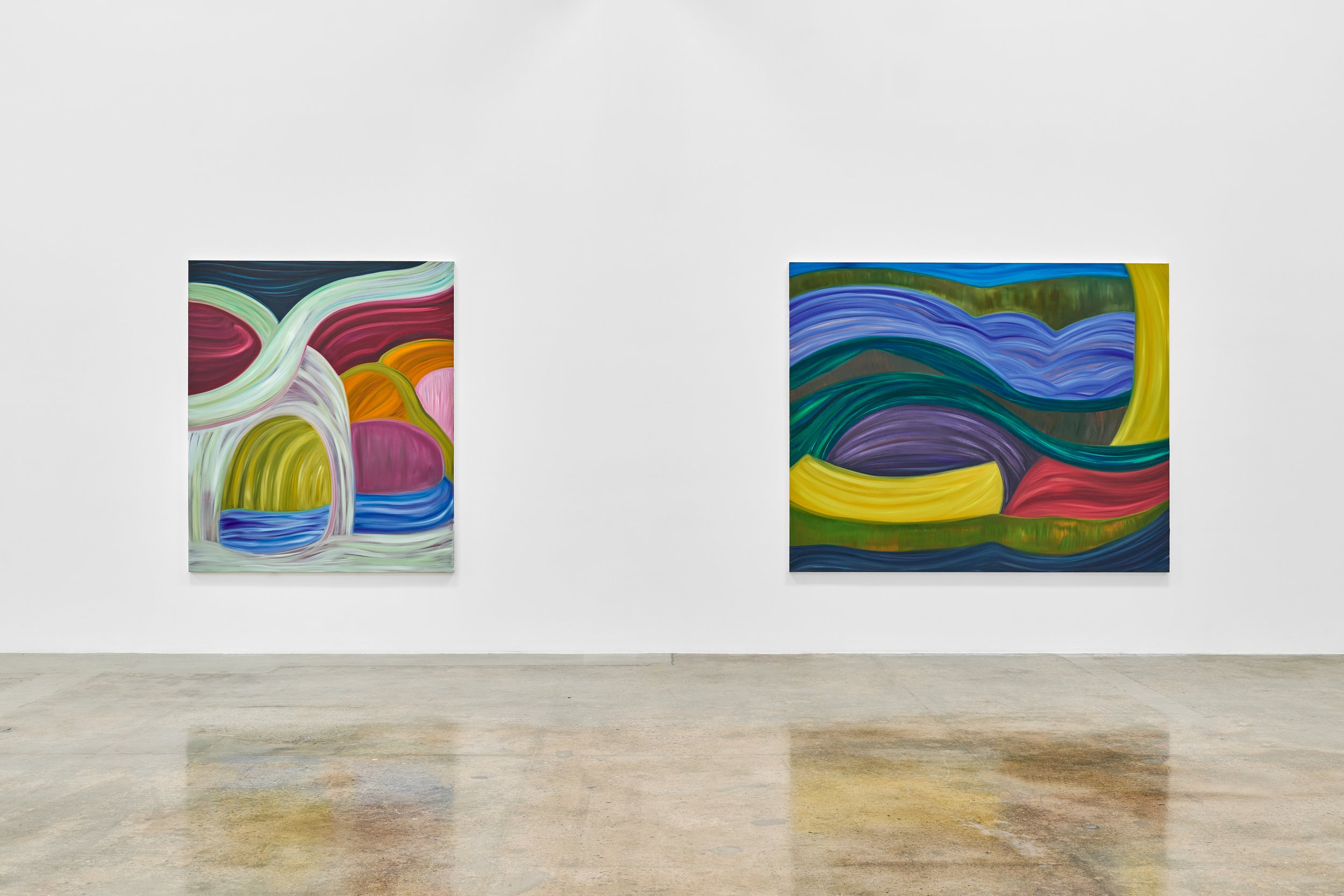


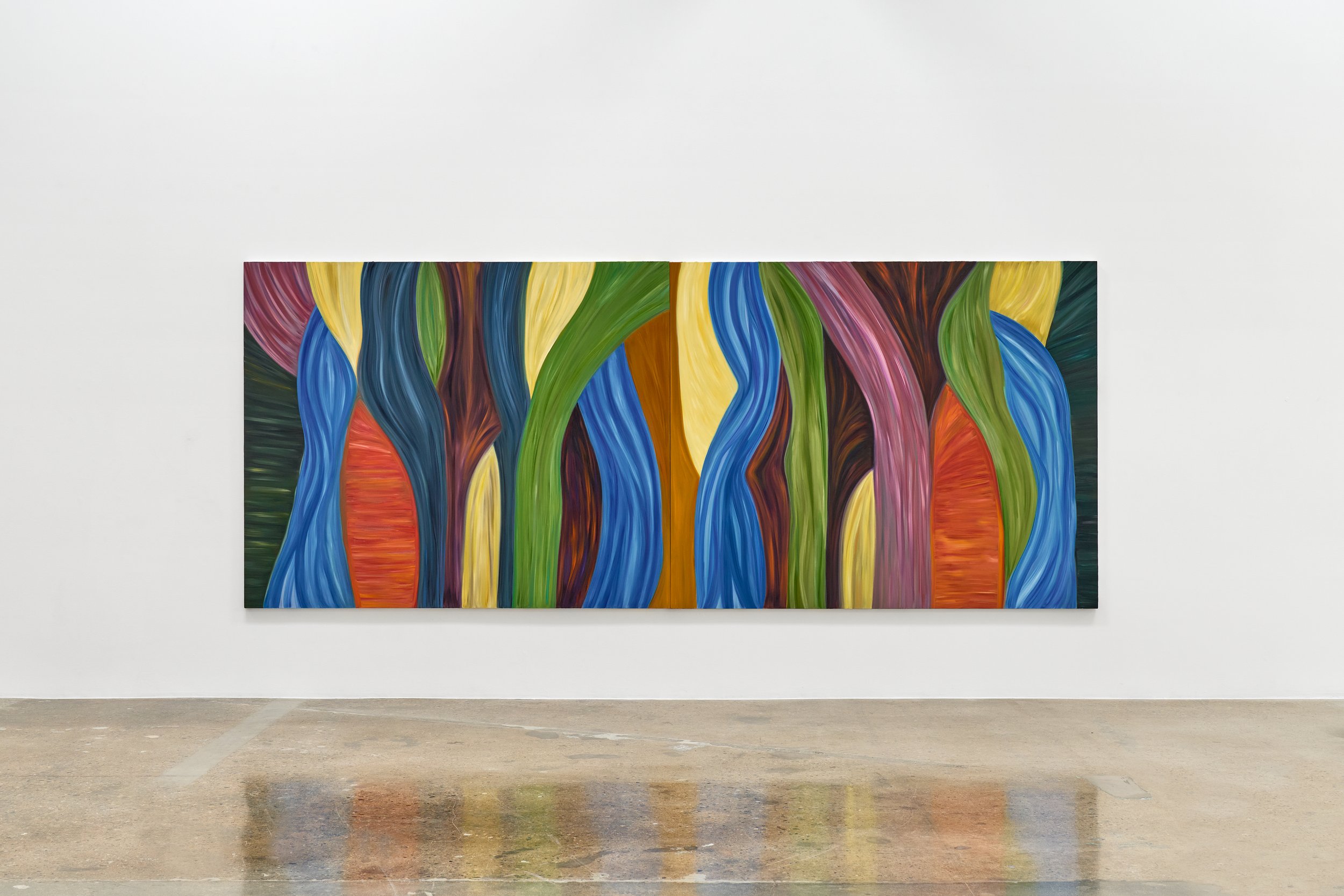

Marina Perez Simão: Solanaceae, 1201 South La Brea Avenue, Los Angeles, CA 90019, January 20–March 2, 2024 Photography courtesy Pace Gallery
Marina Perez Simão (b. 1980, Vitória, Brazil) has developed a working process based fundamentally on the accumulation and juxtaposition of memories and images. By combining personal experiences and multiple references stemming from fields such as philosophy, literature, and journalism, the artist collects certain narratives in order to edit them through pictorial means that do not belong to any predefined language; rather, they develop with an organic practice, which combines thematic density and a delicate treatment. Simão uses a variety of techniques, such as collage, drawing, and oil painting, as starting points in order to marry interior and exterior landscapes, she composes visual journeys that sometimes traverse the unknown, the abstract and the nebulous, but also include visions and memories. Simão’s work is held in several public collections worldwide, including the Musée d’Art Moderne et Contemporain de Saint-Étienne in France, The Ekard Collection in the Netherlands, and the Samdani Art Foundation in Bangladesh, as well as the Speed Art Museum in Kentucky and the University of Chicago in the United States.
Pace is a leading international art gallery representing some of the most influential contemporary artists and estates from the past century, holding decades-long relationships with Alexander Calder, Jean Dubuffet, Barbara Hepworth, Agnes Martin, Louise Nevelson, and Mark Rothko. Pace enjoys a unique U.S. heritage spanning East and West coasts through its early support of artists central to the Abstract Expressionist and Light and Space movements.
Since its founding by Arne Glimcher in 1960, Pace has developed a distinguished legacy as an artist-first gallery that mounts seminal historical and contemporary exhibitions. Under the current leadership of CEO Marc Glimcher, Pace continues to support its artists and share their visionary work with audiences worldwide by remaining at the forefront of innovation. Now in its seventh decade, the gallery advances its mission through a robust global program— comprising exhibitions, artist projects, public installations, institutional collaborations, performances, and interdisciplinary projects. Pace has a legacy in art bookmaking and has published over five hundred titles in close collaboration with artists, with a focus on original scholarship and on introducing new voices to the art historical canon.
Today, Pace has seven locations worldwide, including European footholds in London and Geneva as well as Berlin, where the gallery established an office in 2023. Pace maintains two galleries in New York—its headquarters at 540 West 25th Street, which welcomed almost 120,000 visitors and programmed 20 shows in its first six months, and an adjacent 8,000 sq. ft. exhibition space at 510 West 25th Street. Pace’s long and pioneering history in California includes a gallery in Palo Alto, which was open from 2016 to 2022. Pace’s engagement with Silicon Valley’s technology industry has had a lasting impact on the gallery at a global level, accelerating its initiatives connecting art and technology as well as its work with experiential artists. Pace consolidated its West Coast activity through its flagship in Los Angeles, which opened in 2022. Pace was one of the first international galleries to establish outposts in Asia, where it operates permanent gallery spaces in Hong Kong and Seoul, along with an office and viewing room in Beijing. In spring 2024, Pace will open its first gallery space in Japan in Tokyo’s new Azabudai Hills development.
For more information about this exhibition and others, please visit the Pace Gallery’s website here. Pace Gallery can be found on Instagram and Artsy, too.
ODA JAUNE : Miss Understand
Toutes les images / All images : © Courtesy of the artist and TEMPLON, Paris —Brussels — New York
For her first solo exhibition in the United States, the rare and uncanny Oda Jaune unveils a challenging exhibition in New York. “Miss Understand” offers a series of nearly 25 new oil paintings and dozens of watercolors, on a singular perception of the woman in our time.
Oda Jaune, Bulgarian in origin and trained in Germany, has for nearly 15 years been among the most intriguing figures on the European art scene with a body of work freed from any pictorial convention. Poetic, sensual, and expansive, her painting ignites conversation and explores, without inhibition, the depth of femininity today.
At the core of this new exhibition is a spectacular and large canvas. The work captivates and challenges. A baby is cradled in a nurturing embrace within softly curvaceous, winged forms, floating upon a fleshy landscape. The audience is reminded that all life emerges through the womb as a unique being. A single eye, nestled in the heart of a fetal composition, secretes tender tears – an intimate window into the sacrifices made upon becoming a mother. Just as memories of this rite of passage are non-linear, little by little, this intriguing enigma unfolds an ode to motherhood that is as poignant as it is astonishing.


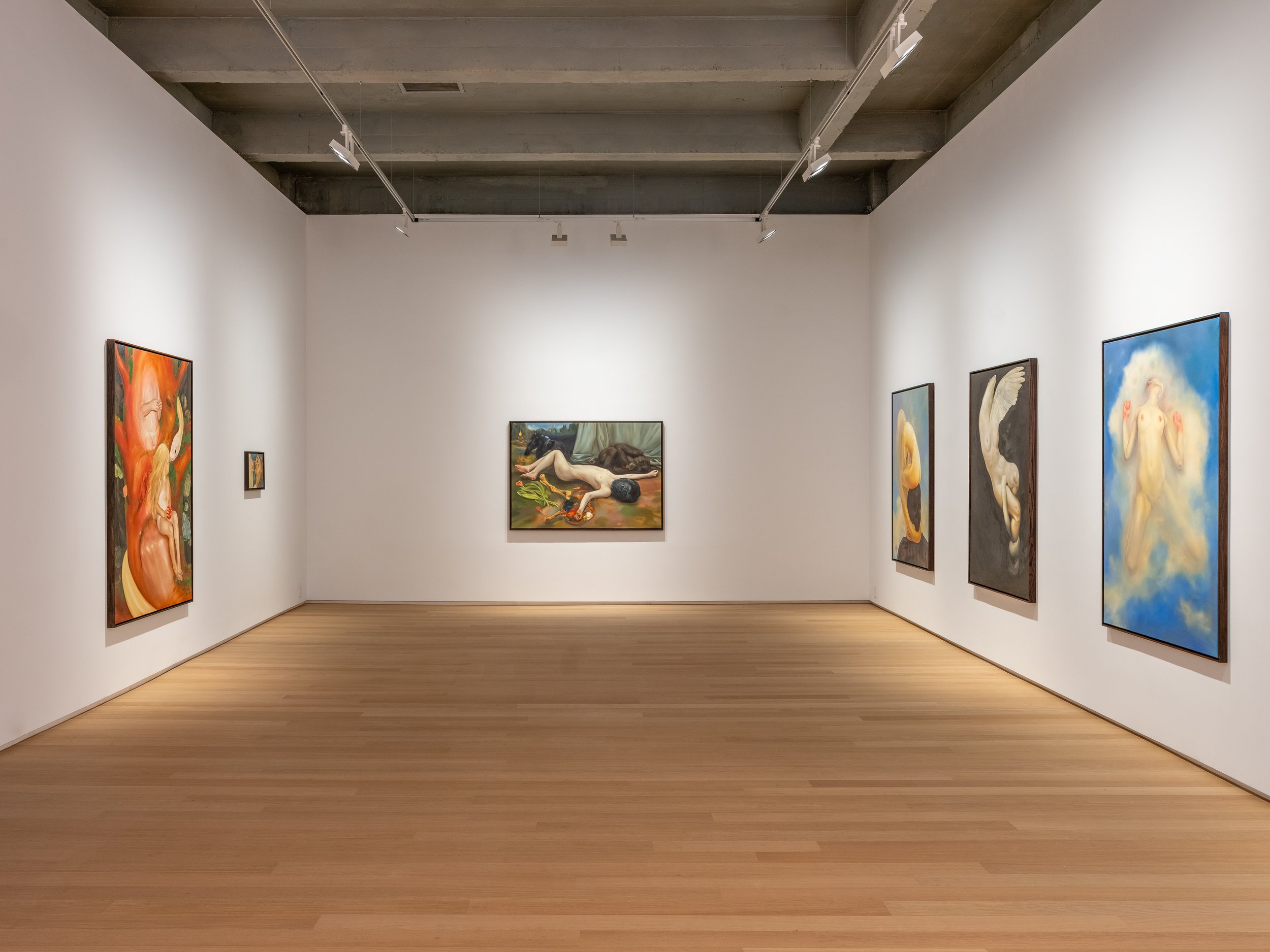

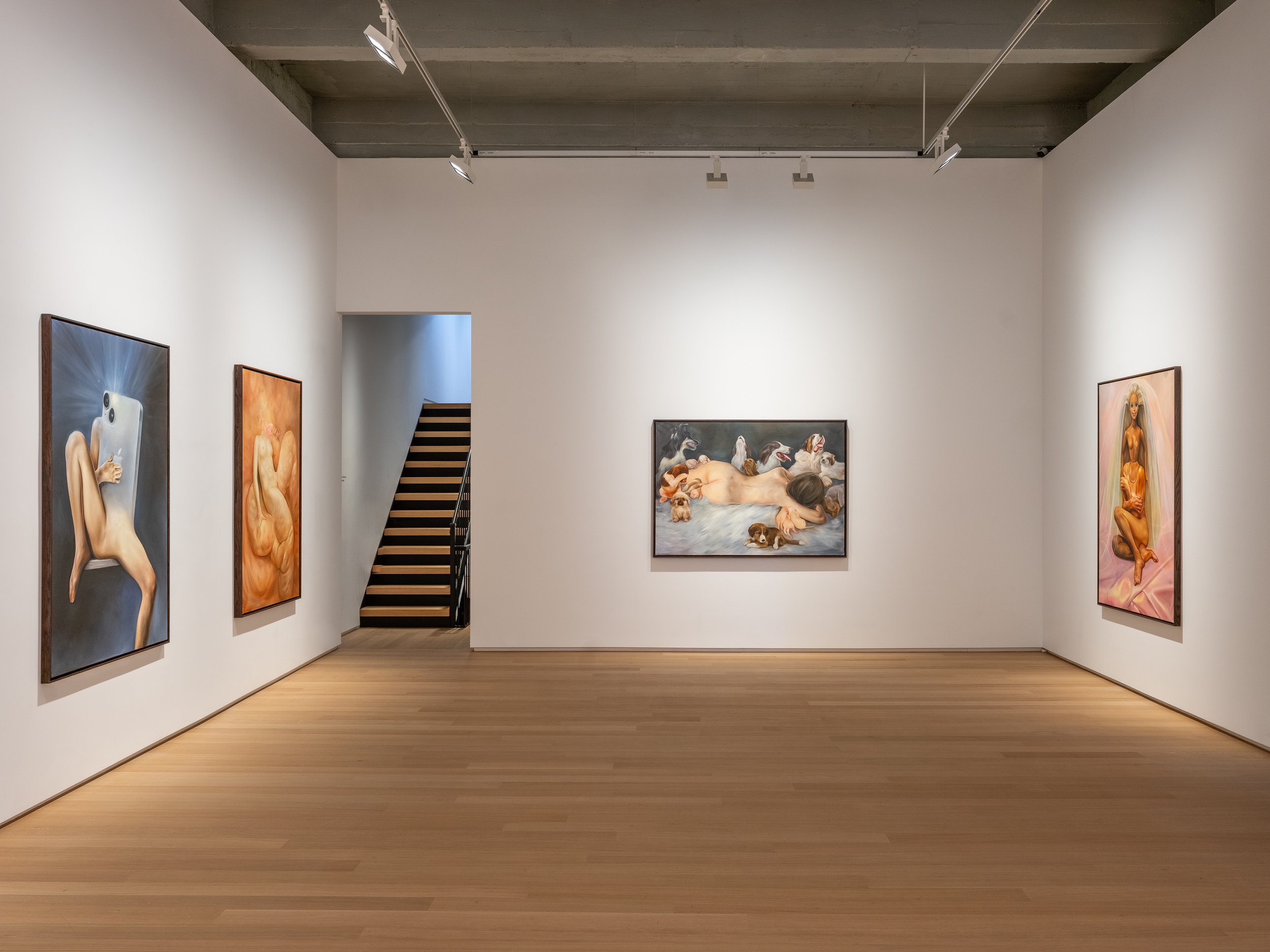
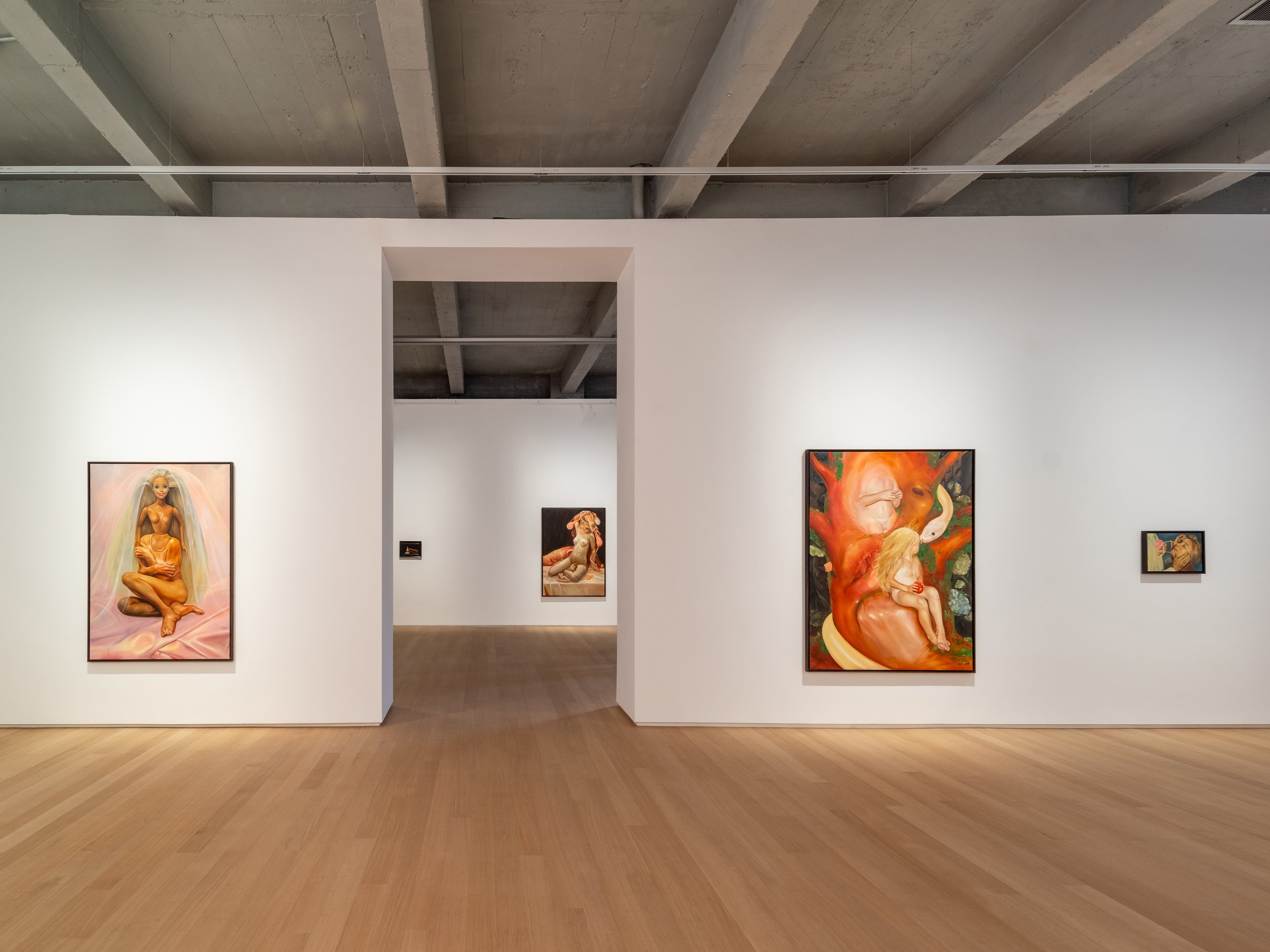

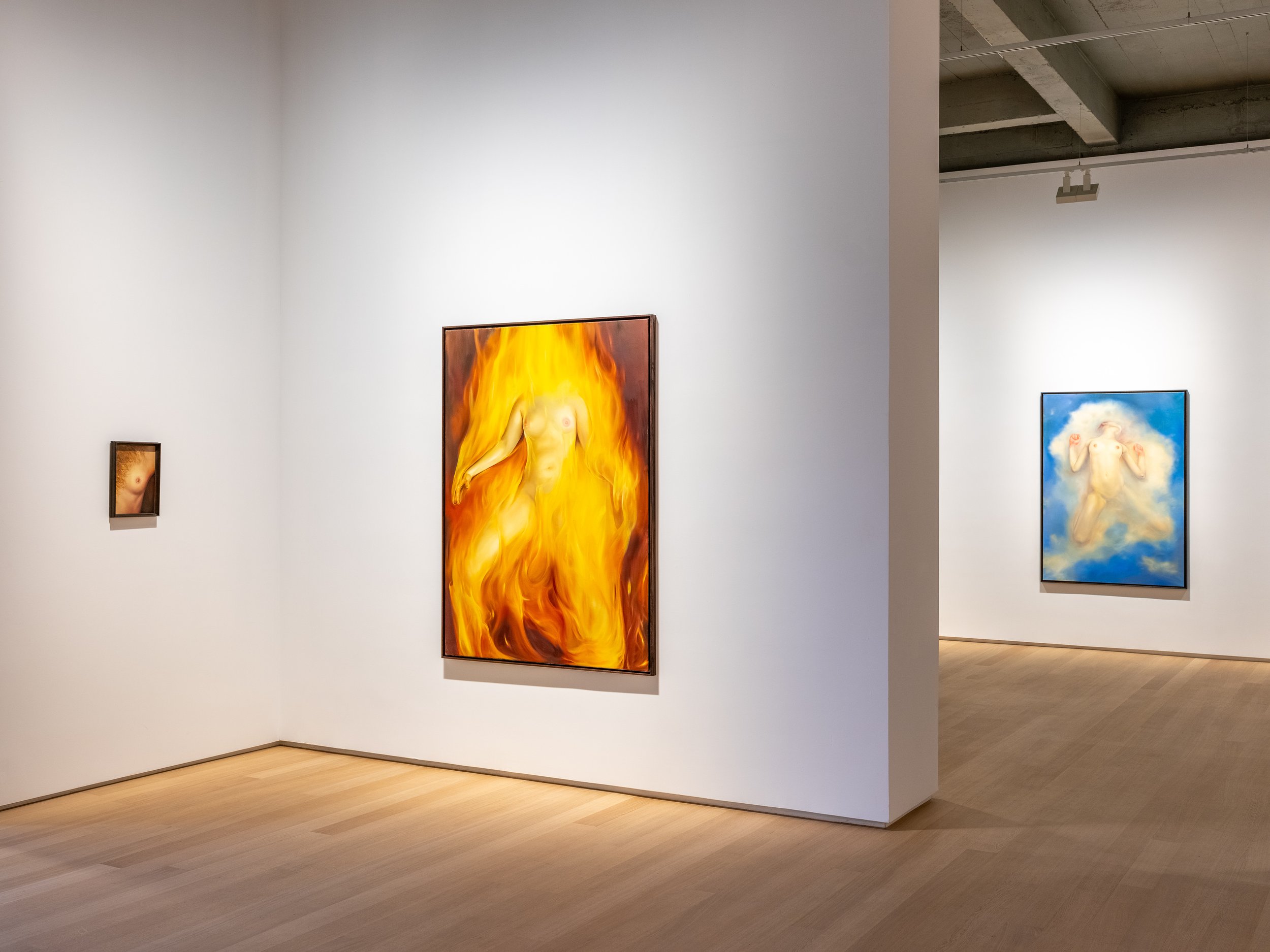
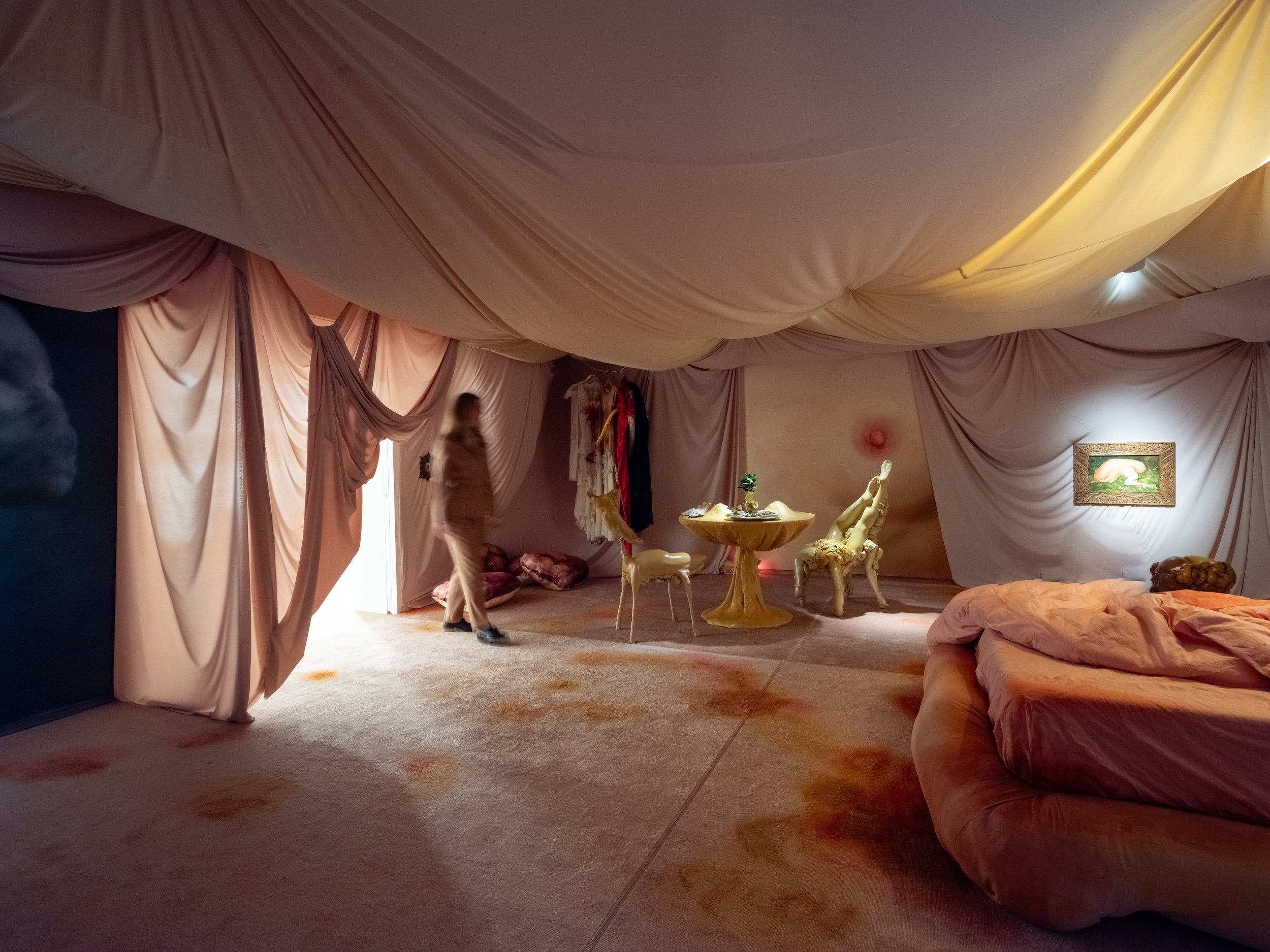
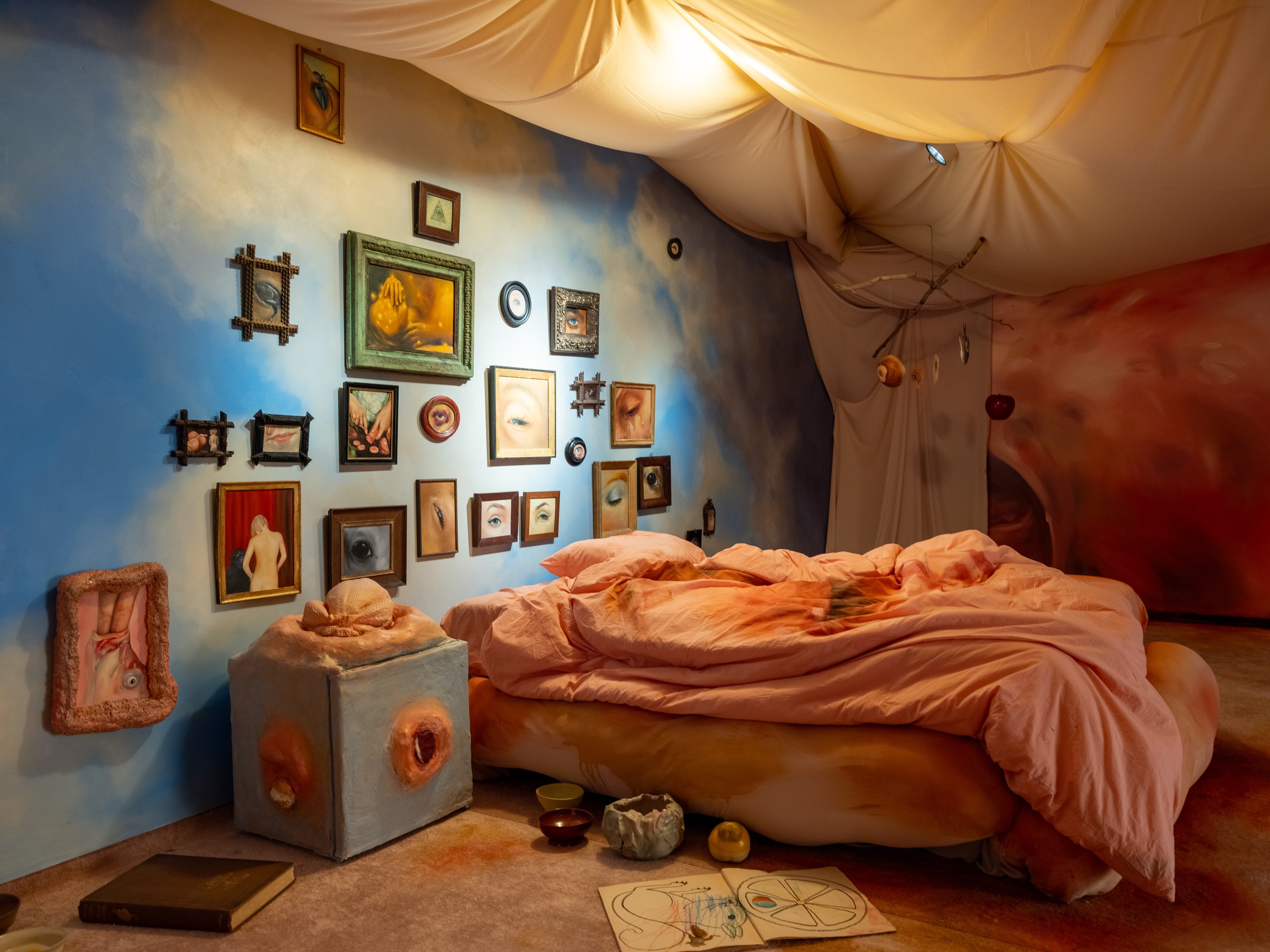
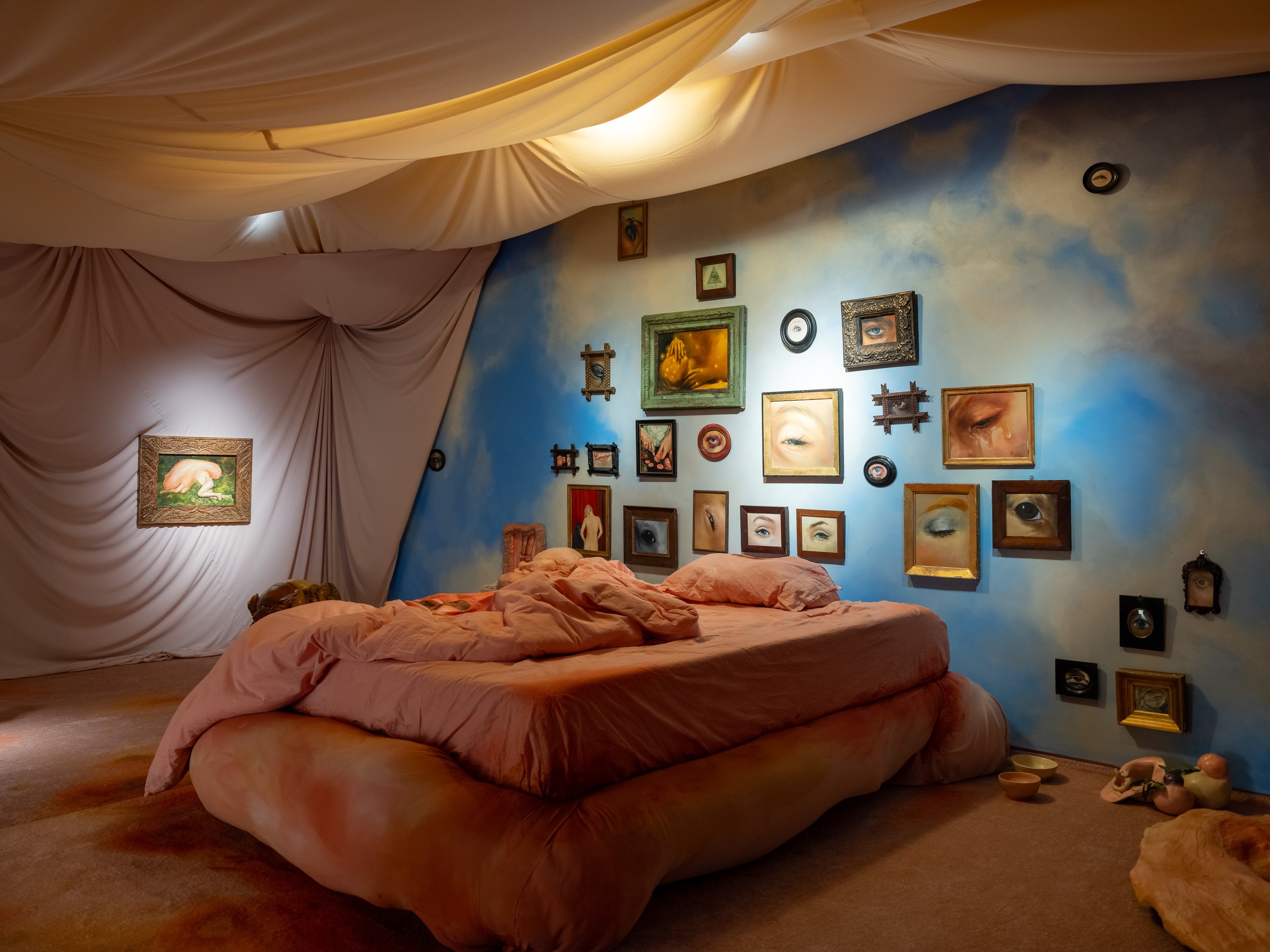
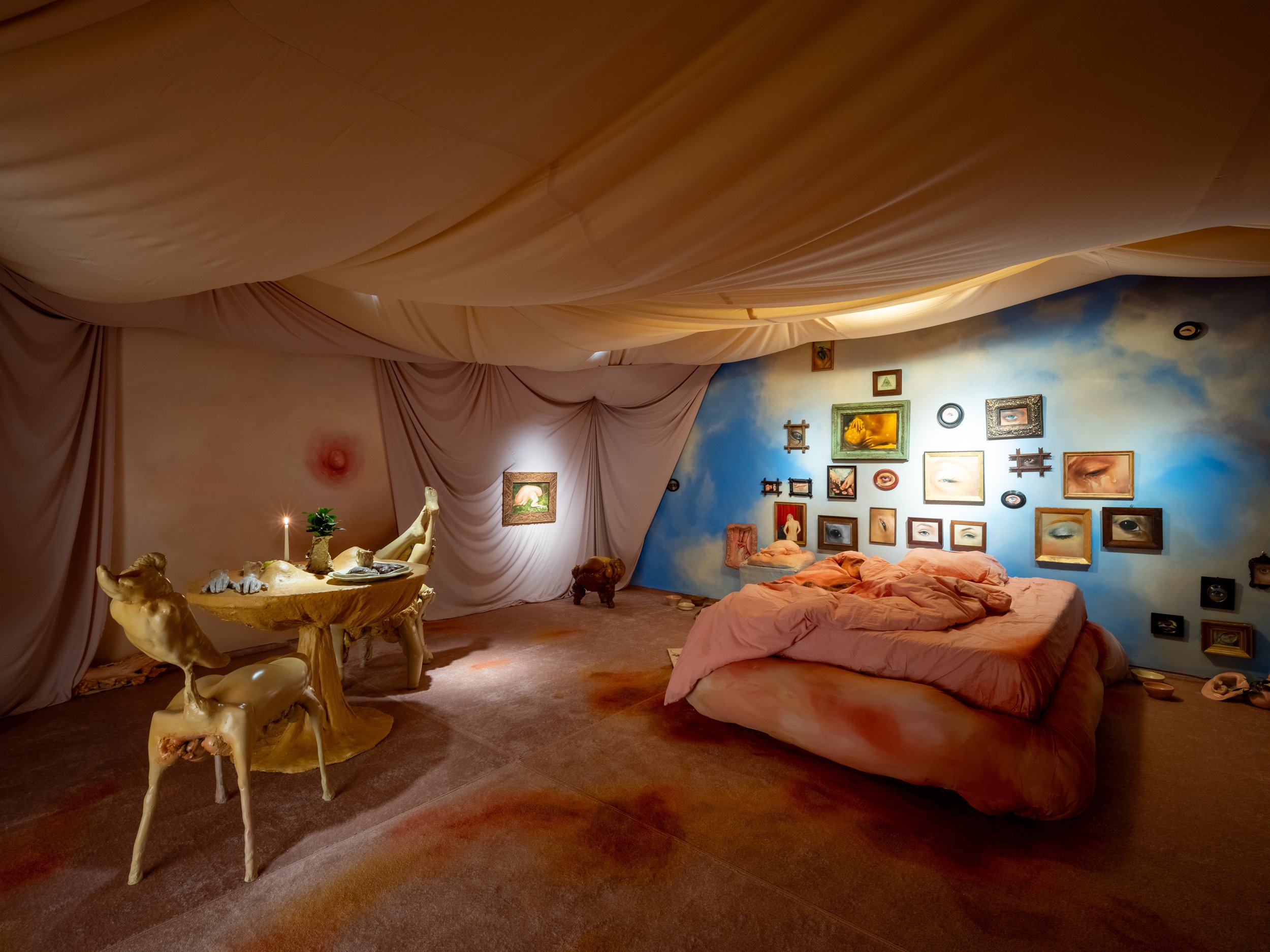
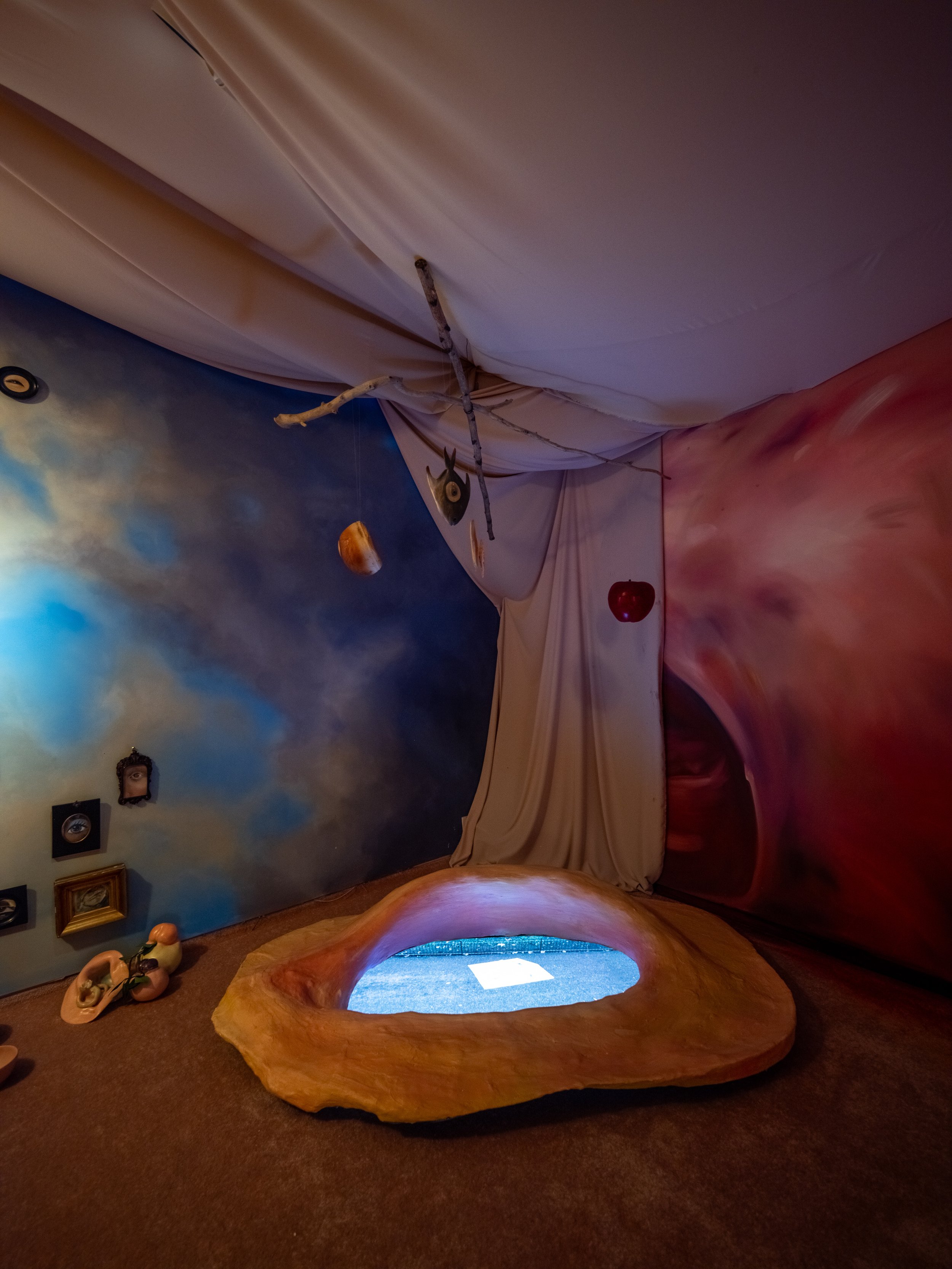

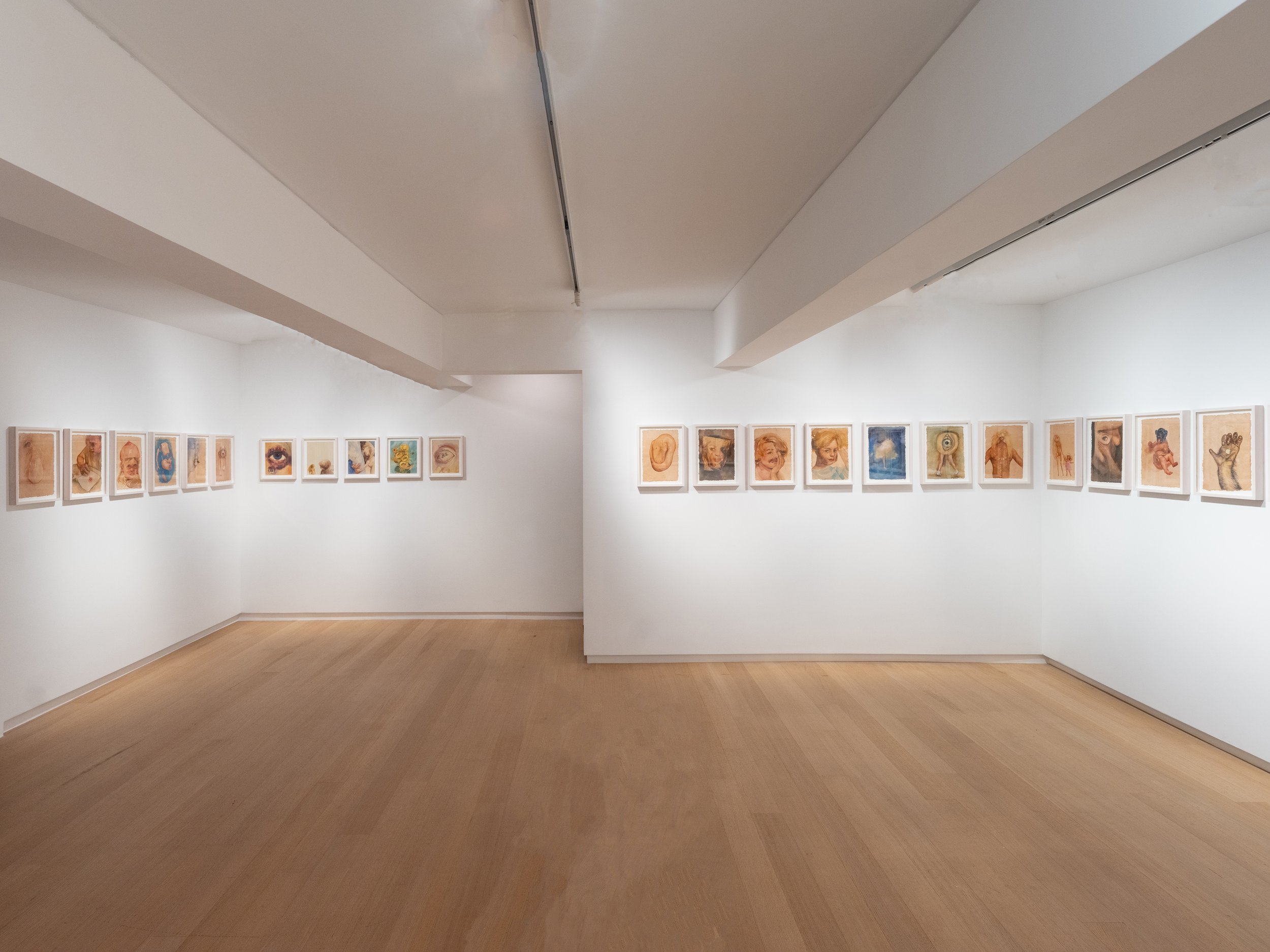
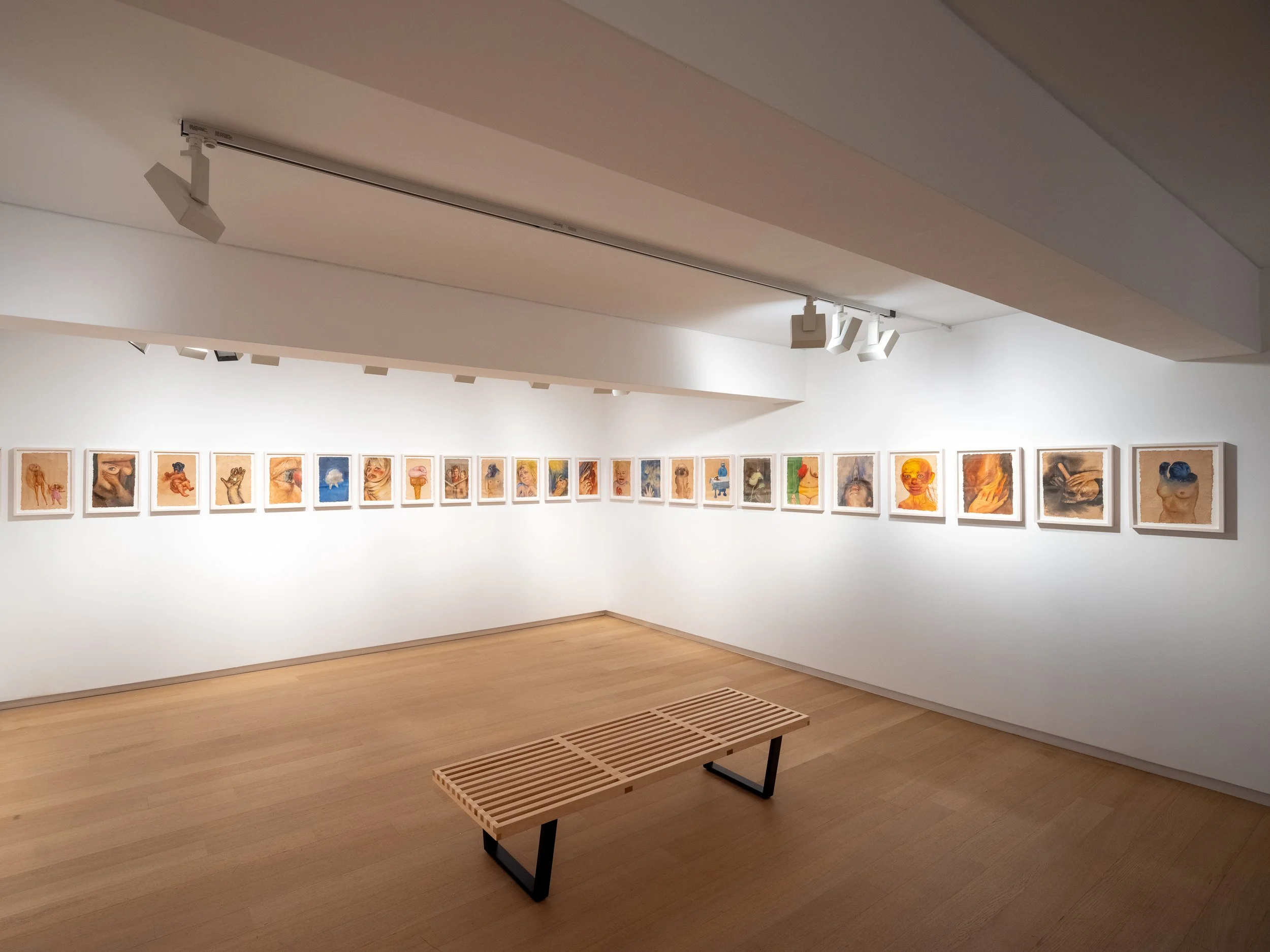
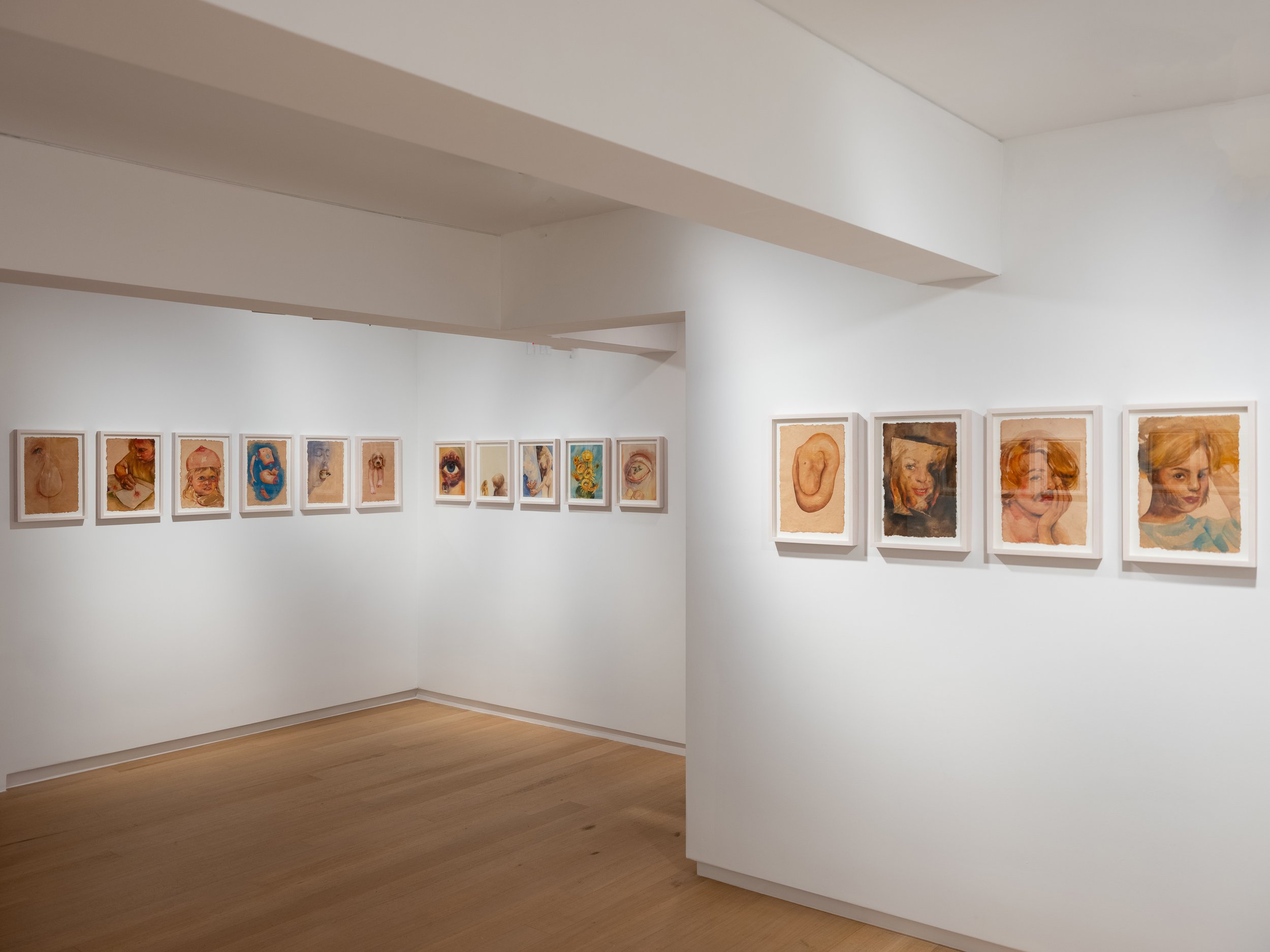
Toutes les images / All images : © Courtesy of the artist and TEMPLON, Paris —Brussels — New York
The exhibition then unfolds in a constellation of medium and small format watercolors. On the first floor of the gallery, the visitor is introduced to the feminine in its full complexity. Jaune holds up a distorted mirror, presenting unexplored potentials of how the feminine is perceived – historically and today: Eve portrayed as an innocent child, holding an apple whilst perched on an anatomical tree with softly bowing branches; Barbie who, far from being unchanging in her expression, posture and age, represents the metamorphosis of the female as she cycles through the archetypes (from Maiden to Crone), her skin creasing into wrinkles as our eyes descend the canvas; and the body of a woman in the prime of life topped with a primate head, a discreet homage to the Guerrilla Girls. The theme of morphing identities continues in The It Girl (part-woman part-iPhone), suggesting that our phones become an artificial extension of ourselves, both anatomically and metaphorically. The cold, blue light surrounding her exposes the extroversion on social media that often masks our insecurities. Another woman squats powerfully, enduring the flames that attempt to devour her.
Behind a technique that appears singular and complex, these hybrid bodies in states of metamorphosis raise questions. The exhibition opens a dialogue around the polarities that divide society today, such as good and evil, young and old, authentic and fake, innocent and guilty, light and shadow, tame and “Man Eater”.
Downstairs, the visitor is immersed in the minimalist, womb-like realm of “Miss Understand”. Her chair, TV, bed, fridge and rug are all soft. Tiny paintings of watchful eyes are stationed around her bed, creating windows to souls she perhaps knew in a past lifetime, or wishes she could know in another.
The artist explains: “ I was always moved by all that cannot be told by words, for me when words end painting begins…art goes further. We don’t need to understand everything, but we shouldn’t stop feeling, as it's a way of deepening our understanding. I feel it’s time we move away from all the classifications, preconceptions and stigma that women are given. I feel it’s time we expand our understanding... ”.
On the exhibition’s final day, during opening hours on Saturday, March 9th, choreographer Claudia Hilda will perform continuously in the installation of Miss Understand.
Portrait 2024 © Charles Roussel
Born in 1979 in Bulgaria, Oda Jaune today lives and works between Paris and London. She has exhibited in numerous exhibitions in Europe and the United States, including recently in Immortelle at MO.CO Montpellier Contemporain (2023), Heart – Romanticism in Contemporary Art at the Musée de la Vie Romantique in Paris (2020); Hands – Solo Show at SEEN in Antwerp, Belgium (2019); Painting, she said, chap. 2, Museum of Fine Arts of Dôle (2017), Intriguing uncertainties, Museum of modern and contemporary art of Saint-Etienne (2016), Painting, she says, Departmental museum of contemporary art of Rochechouart (2015), Confrontation with Félicien Rops, Musée Rops de Namur (2011), Tous cannibales, La maison rouge, Paris and Me Collectors room, Berlin (2011). In 2018, the National Gallery in Sofia dedicated a major solo exhibition to him, Heartland. Oda Jaune has been represented by the Templon gallery since 2009, and Miss Understand is the artist's ninth exhibition.
For more information about this exhibit and other exhibits at the Templon Gallery, please visit their website here. Also find the Gallery on Instagram and Artsy.
Mika Tajima: Energetics
Mika Tajima: Energetics 540 West 25th Street, New York, NY 10001 January 12 – February 24, 2024 Photography courtesy Pace Gallery
New York – Pace is pleased to present Mika Tajima: Energetics, an exhibition of new work by Mika Tajima, at its 540 West 25th Street gallery in New York. This exhibit has been on view since January 12 and will close on February 24, 2024. This presentation brings together sculptural, textile, and evolving sensorial work. It is Mika’s first exhibition with Pace in New York since she joined the gallery’s program in 2022 and her first solo show in the city in eight years.
Through her multidisciplinary practice spanning performance, sculpture, painting, and installation, Tajima takes up questions of identity and agency in a world increasingly influenced and mitigated by technology. Drawing on various points of reference—including quantum mechanics, Hannah Arendt’s writings on the nature of freedom, and Catherine Malabou’s notion of plasticity and the body as a vexed relation—the artist imbues her work across mediums with scientific and philosophical import. At the center of Tajima’s practice are her investigations of the ways that different digital and aesthetic technologies manifest as intertwined material, perceptual, and psychic experiences.
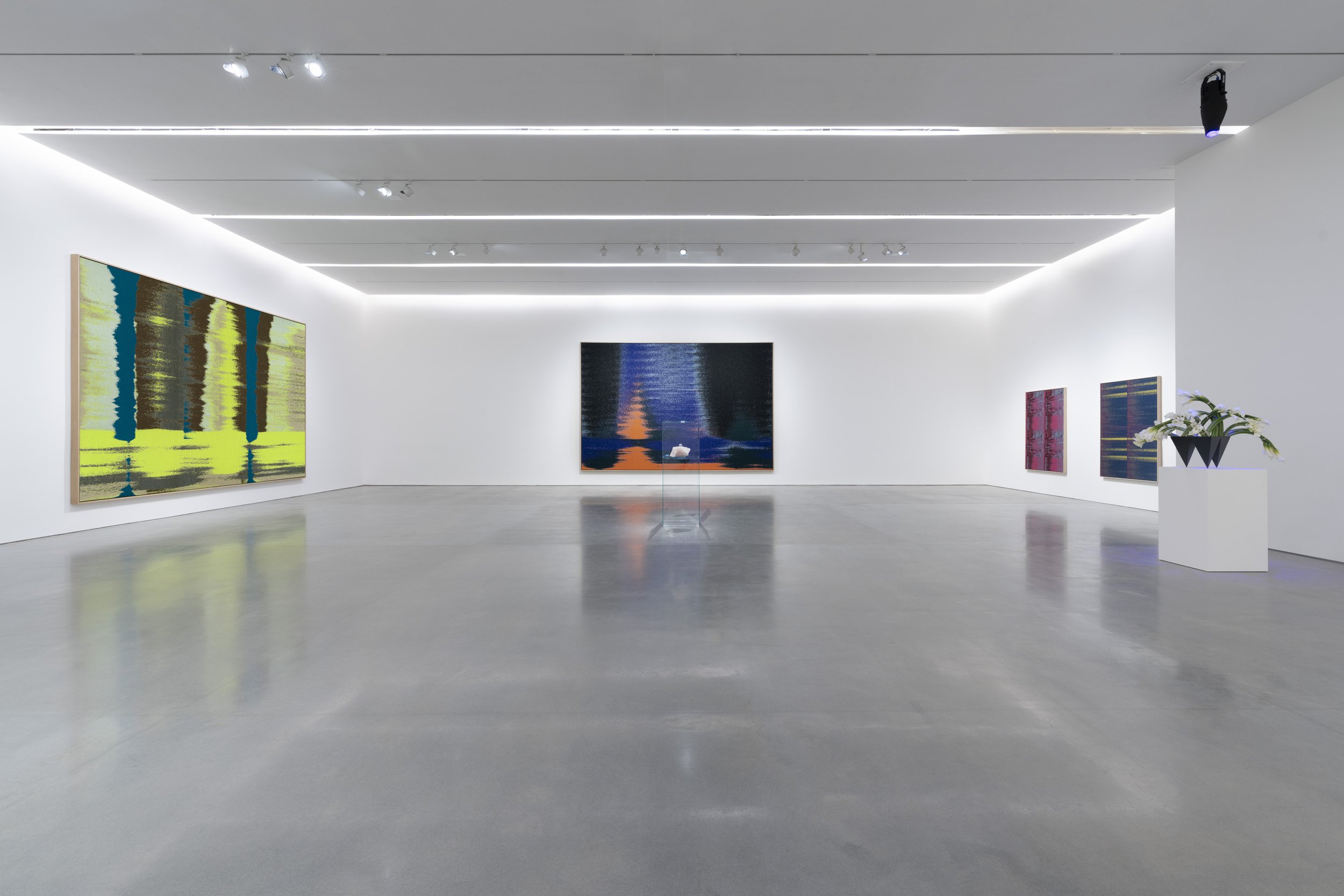

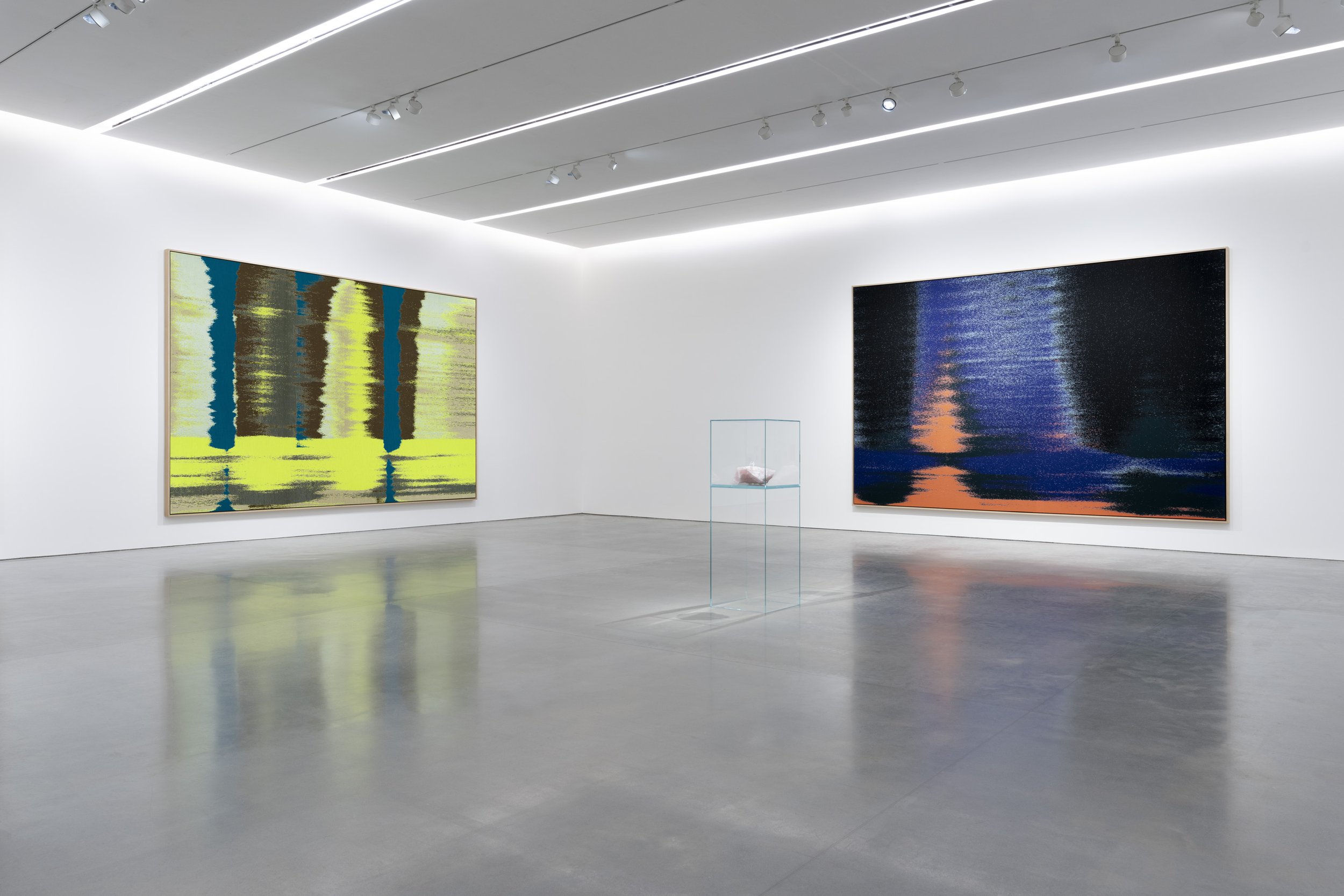
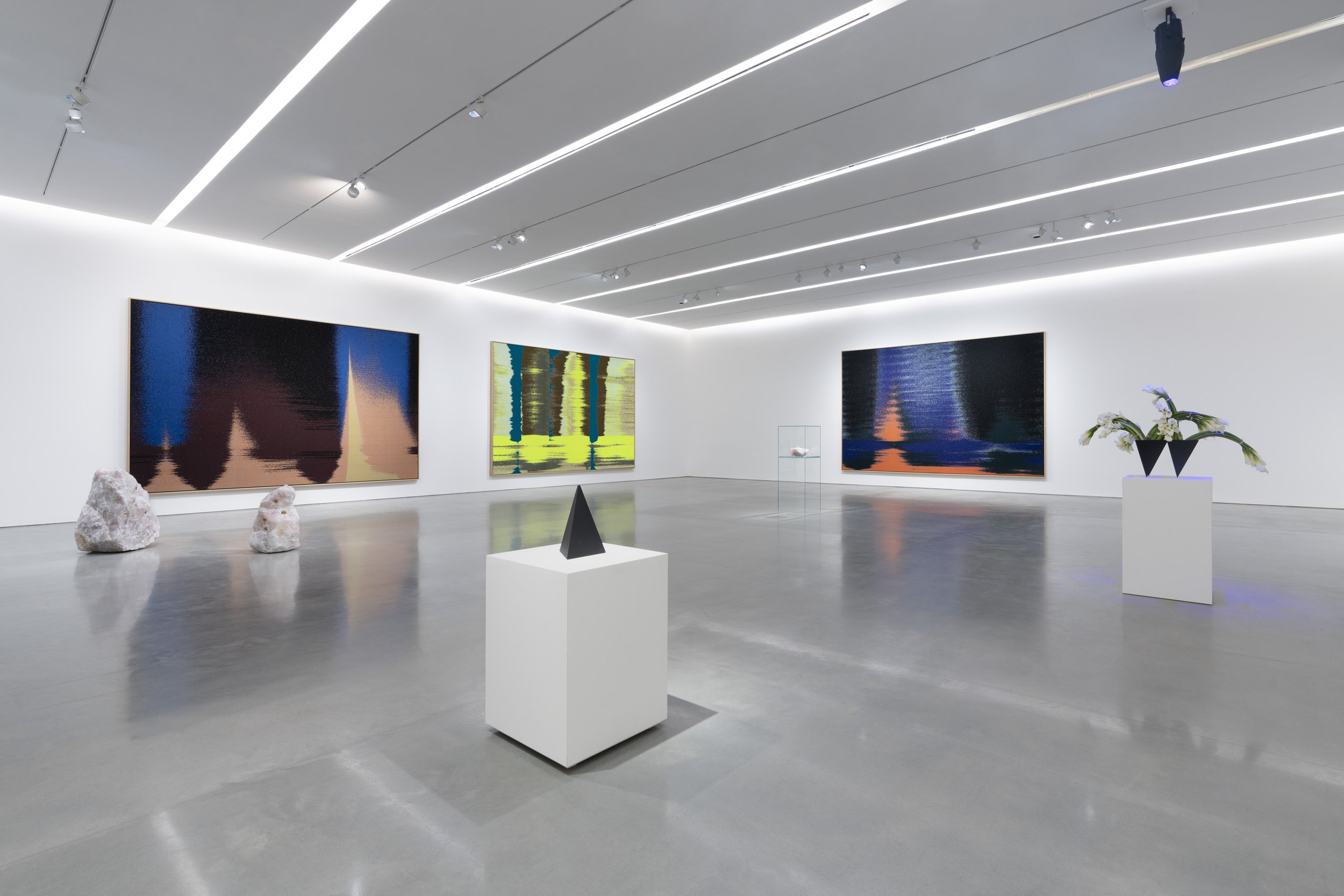
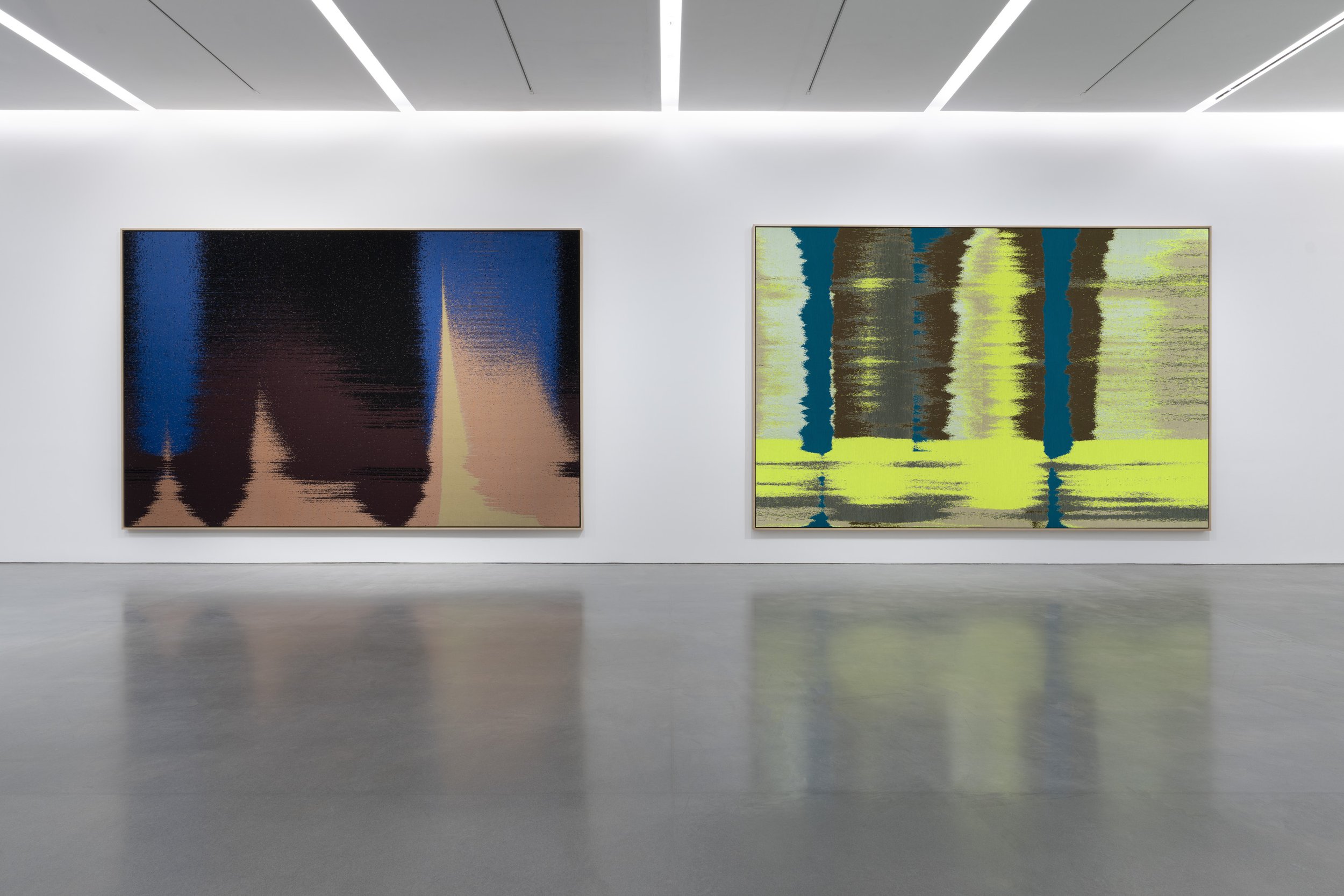
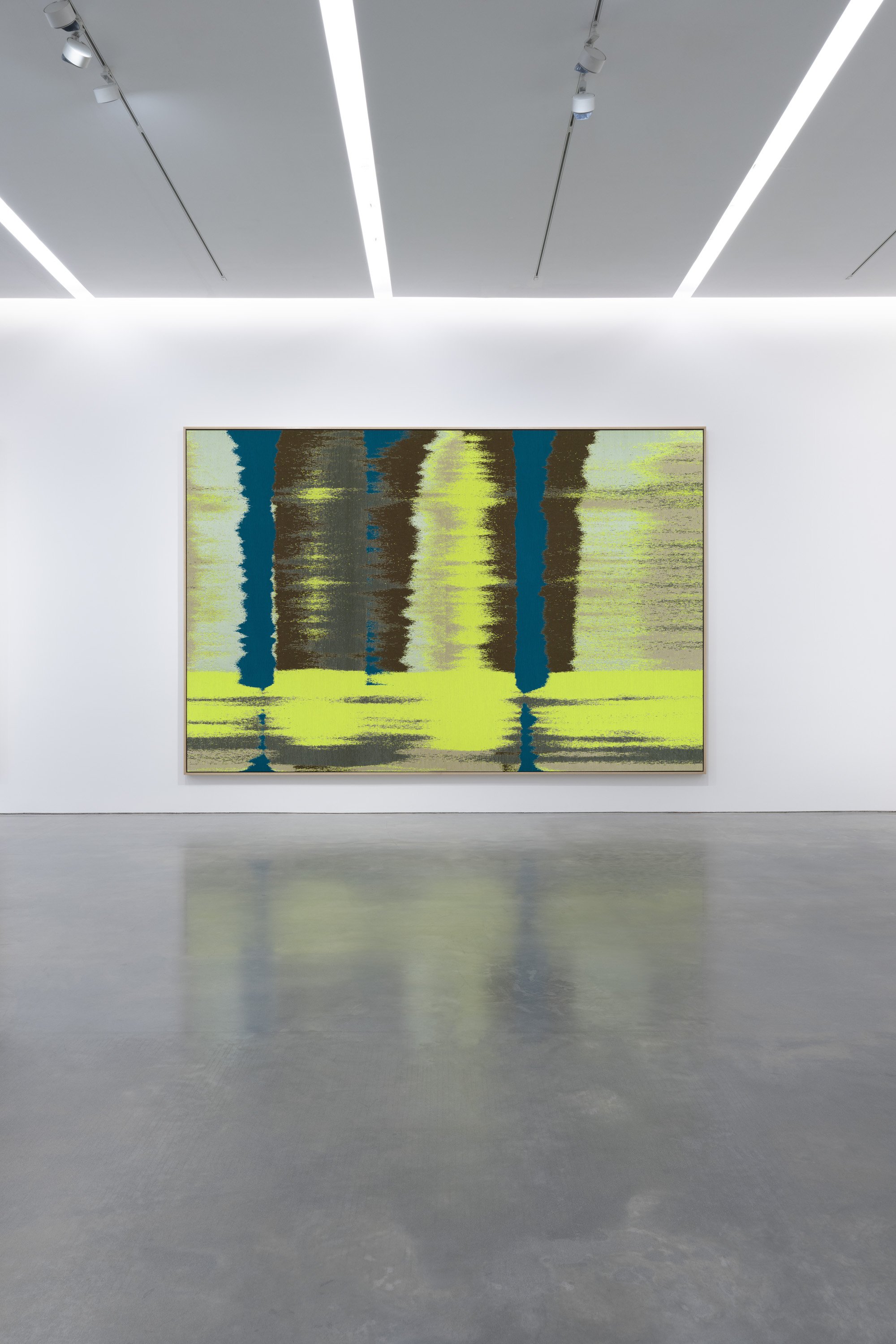

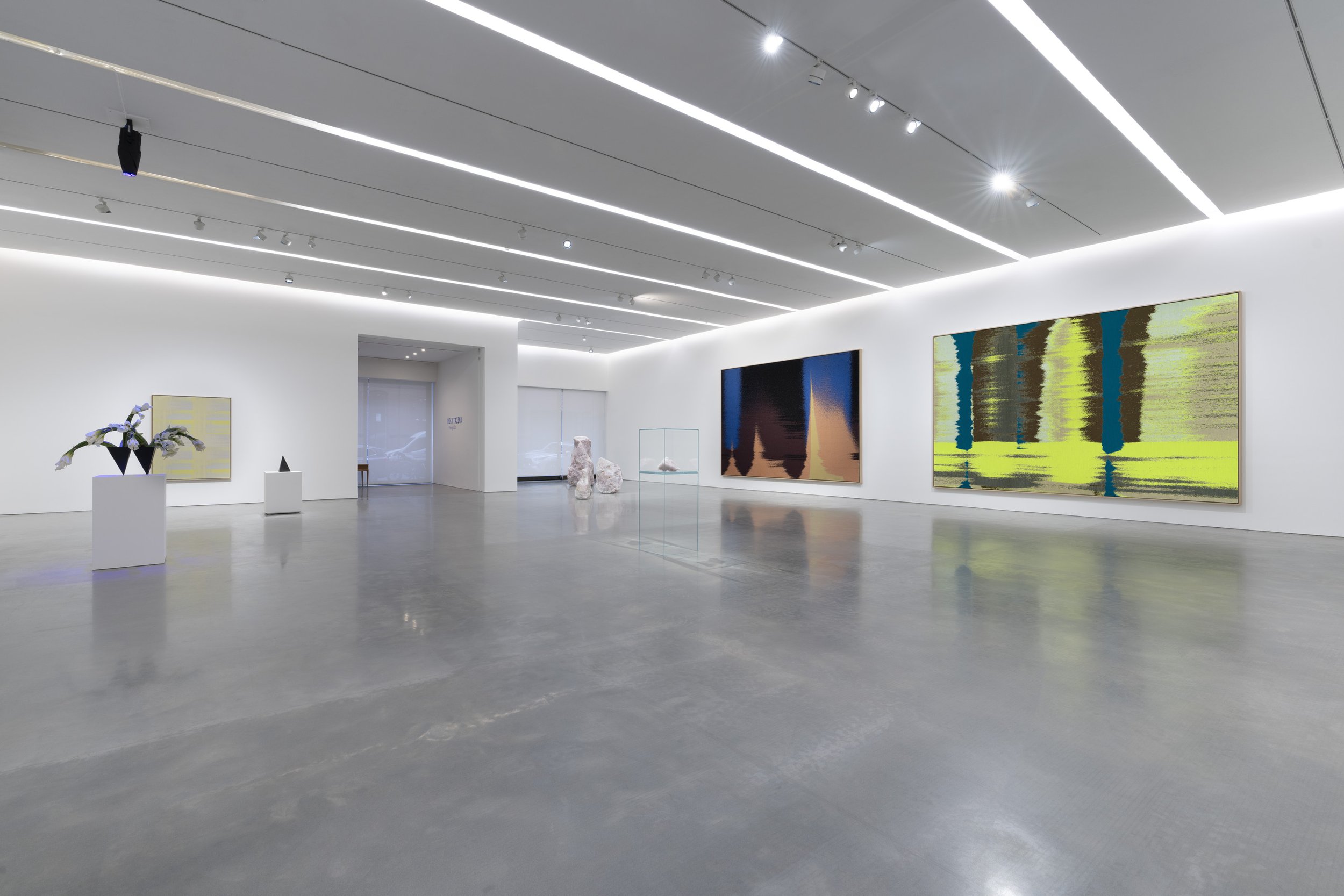

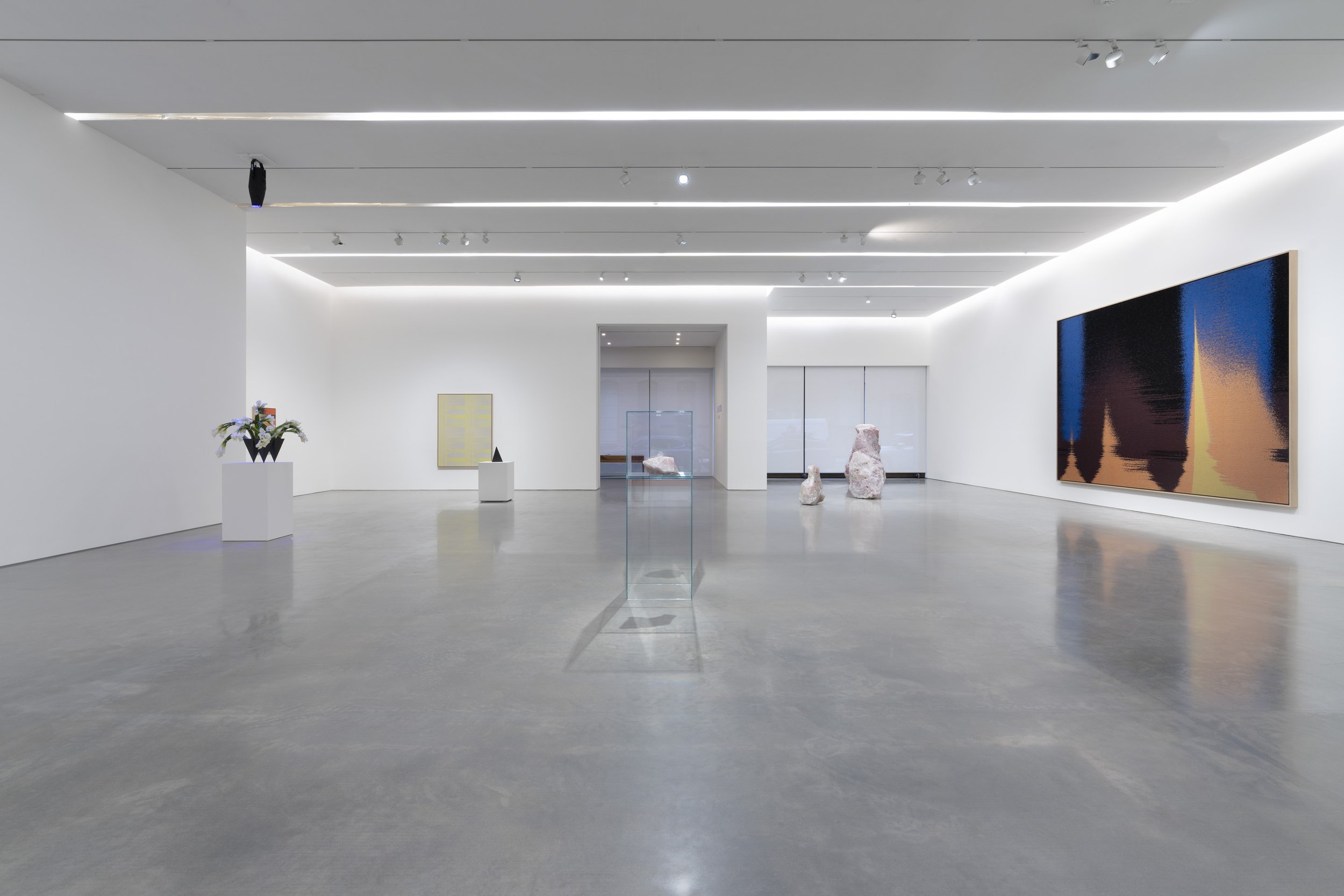
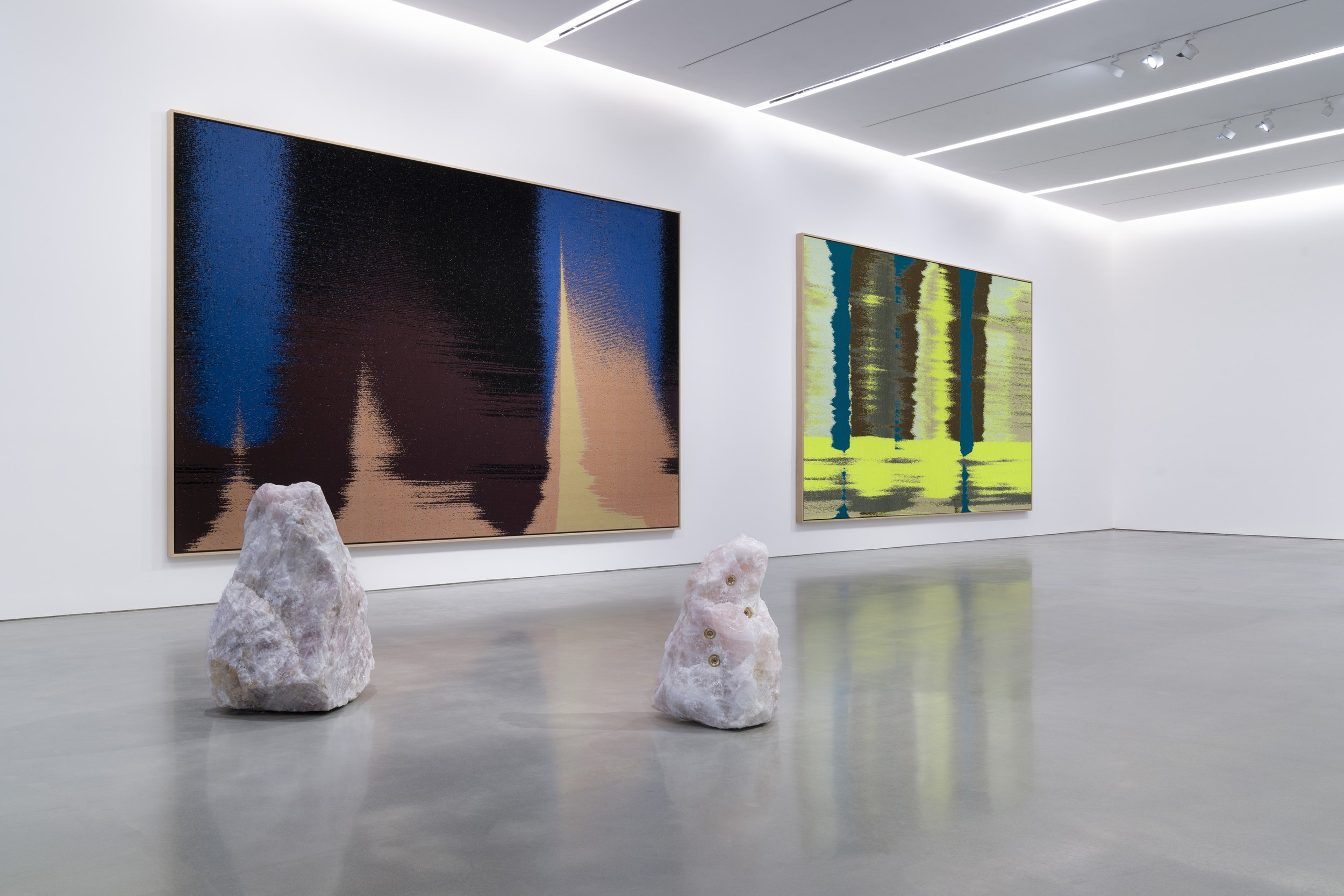
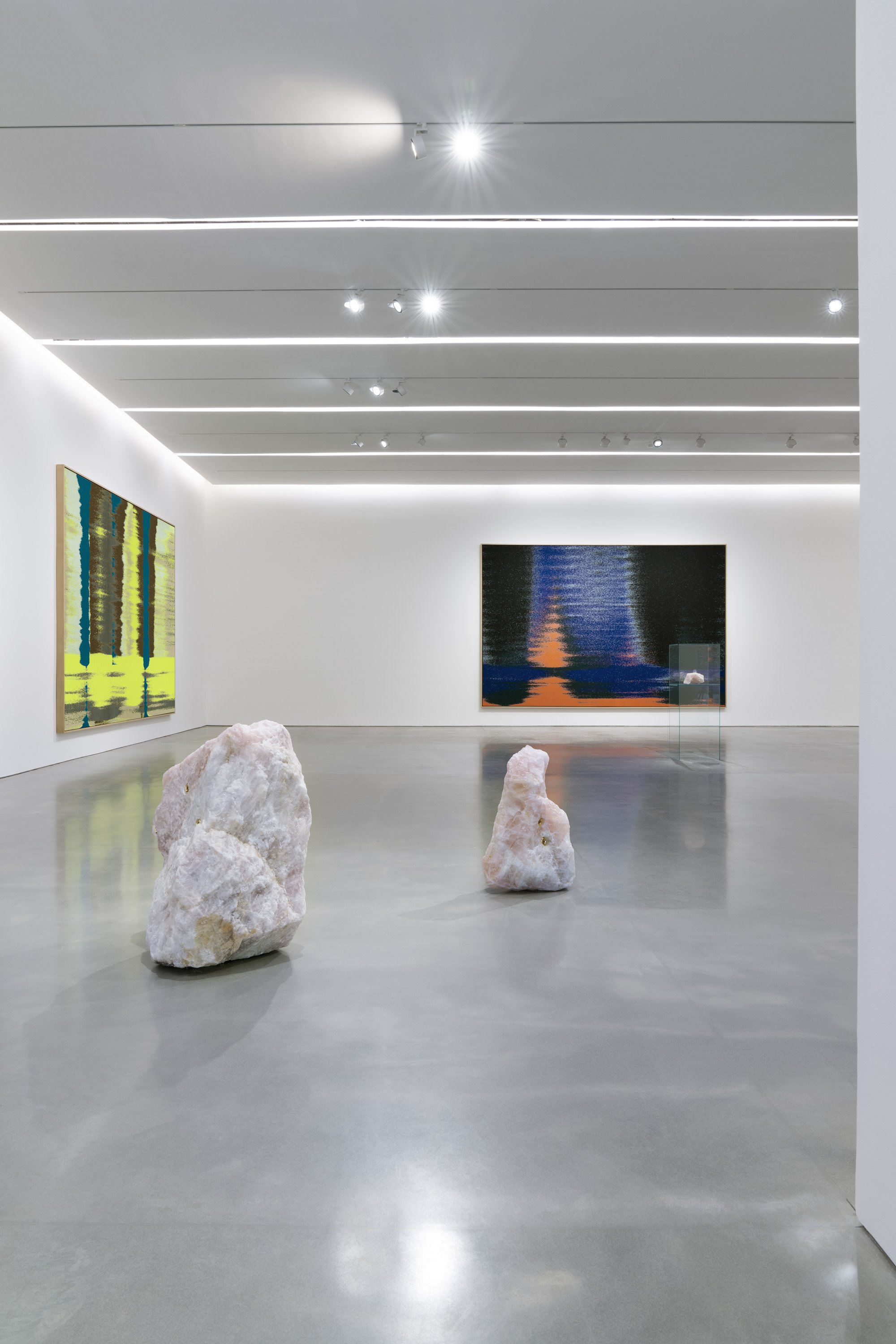
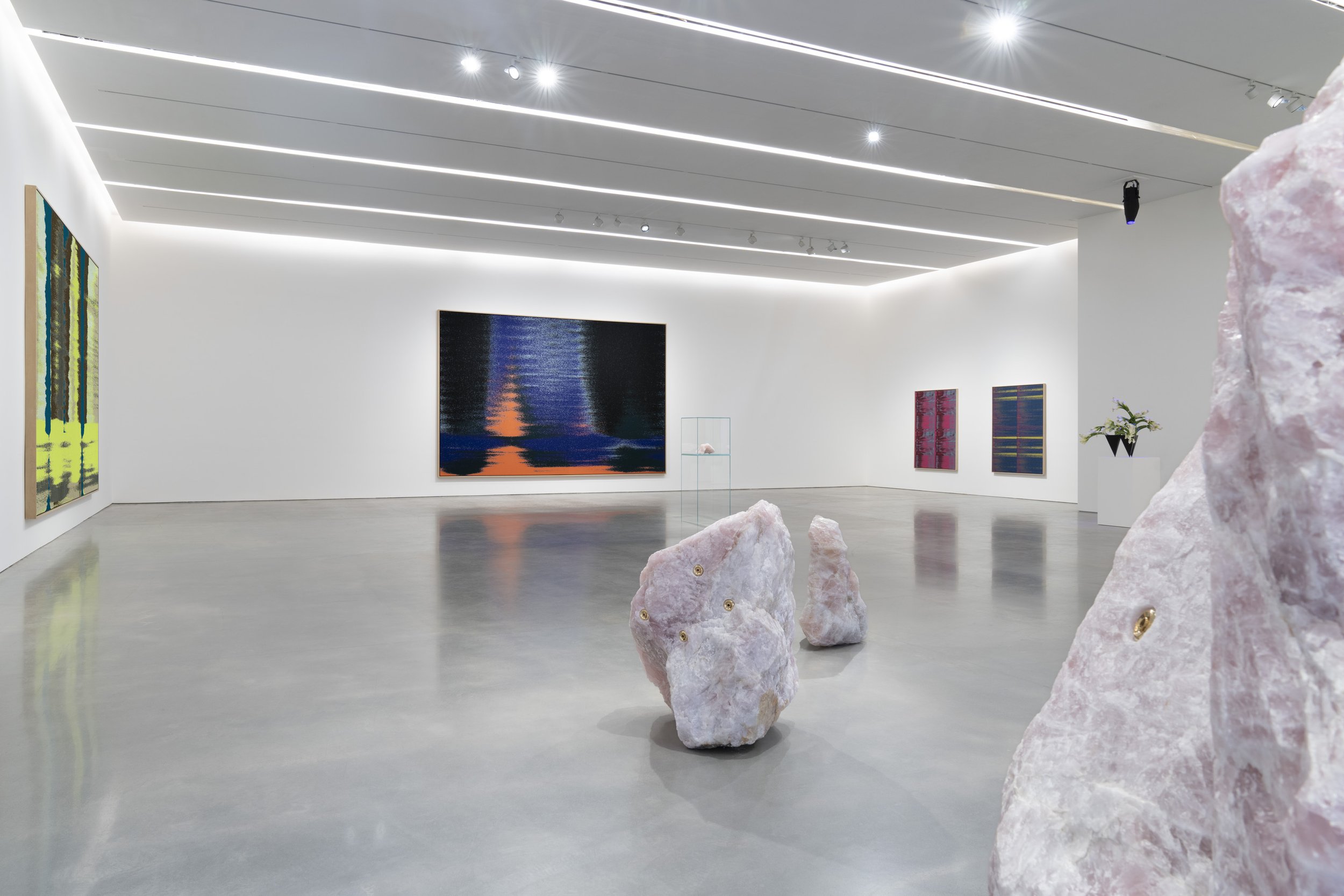


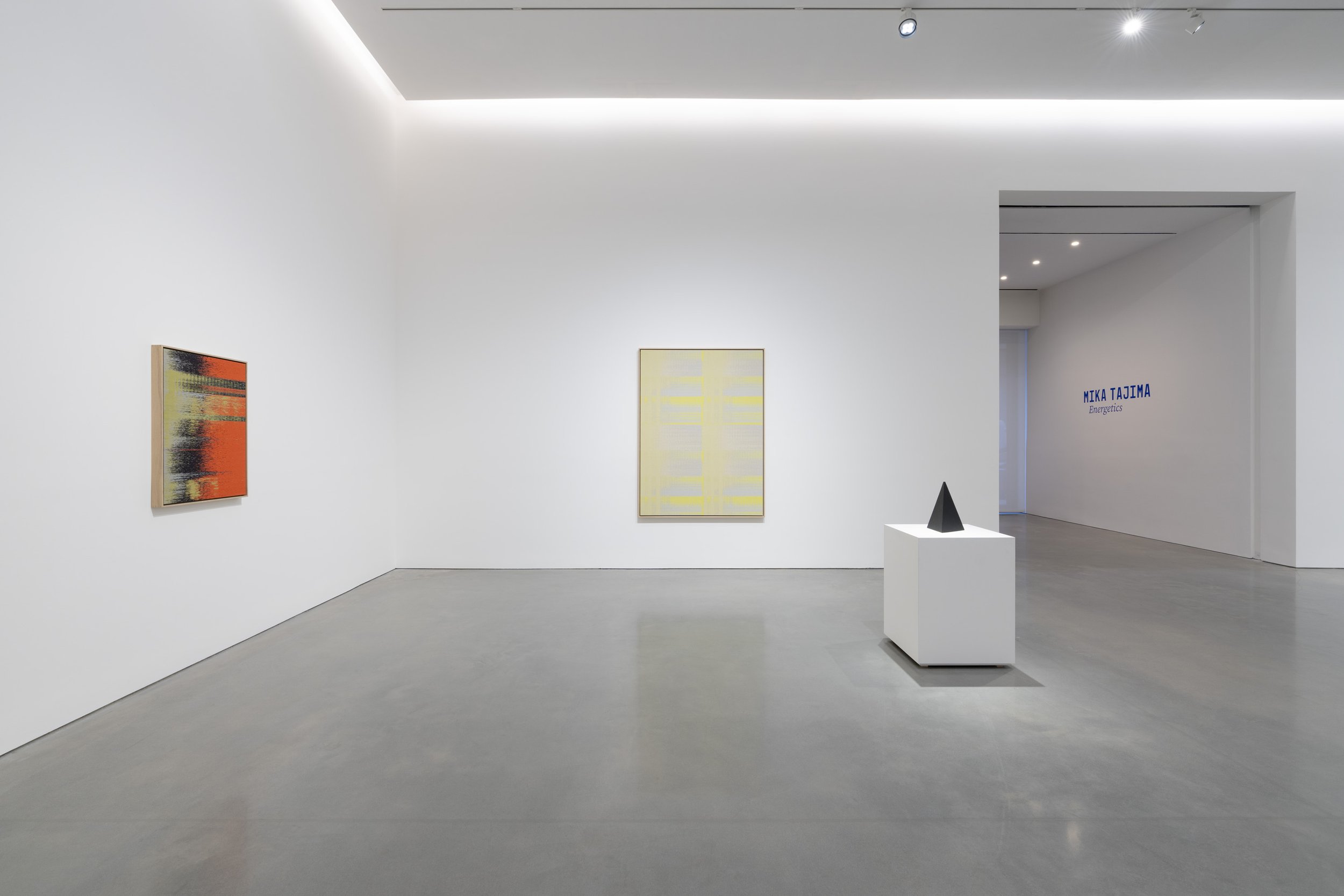

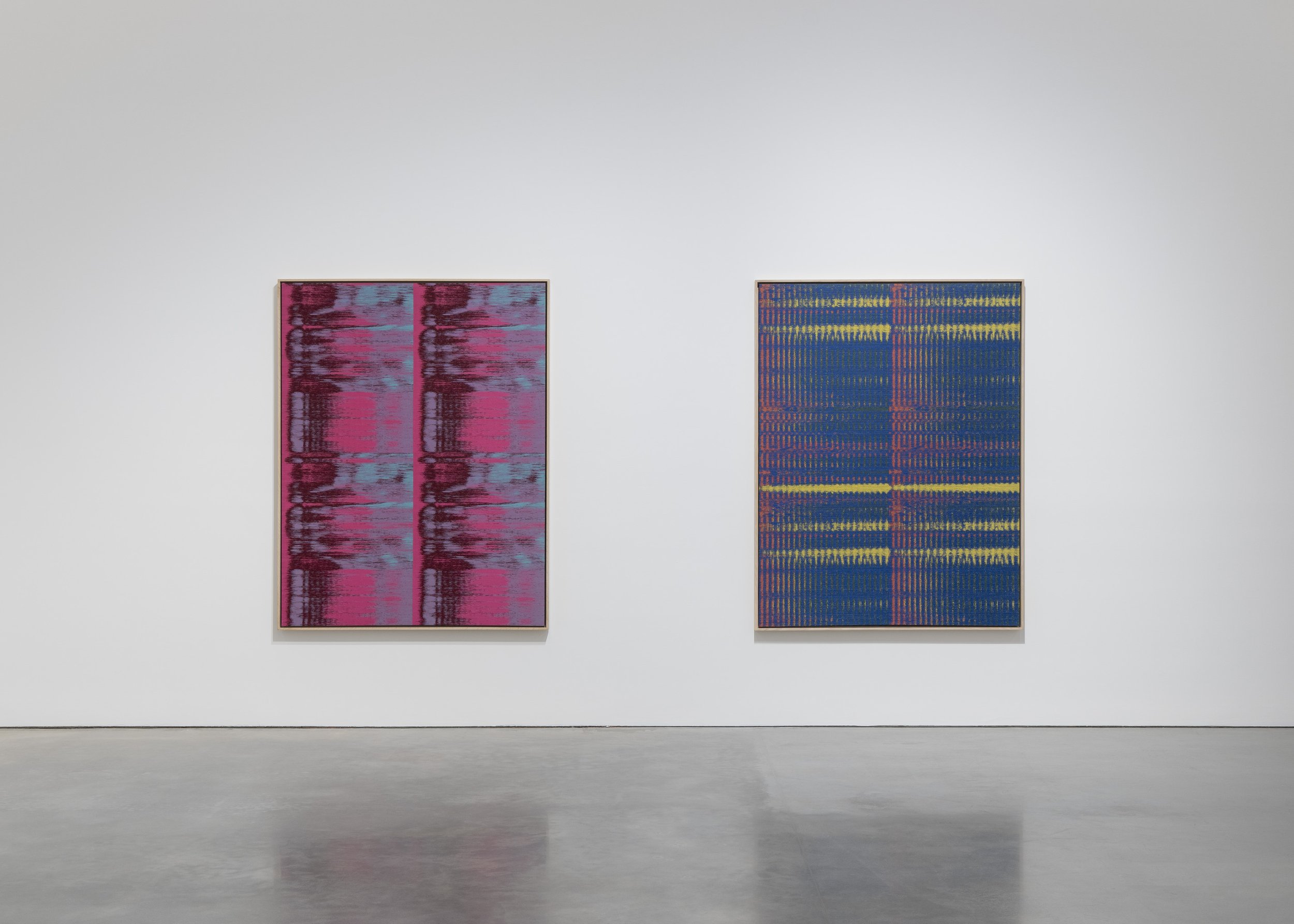
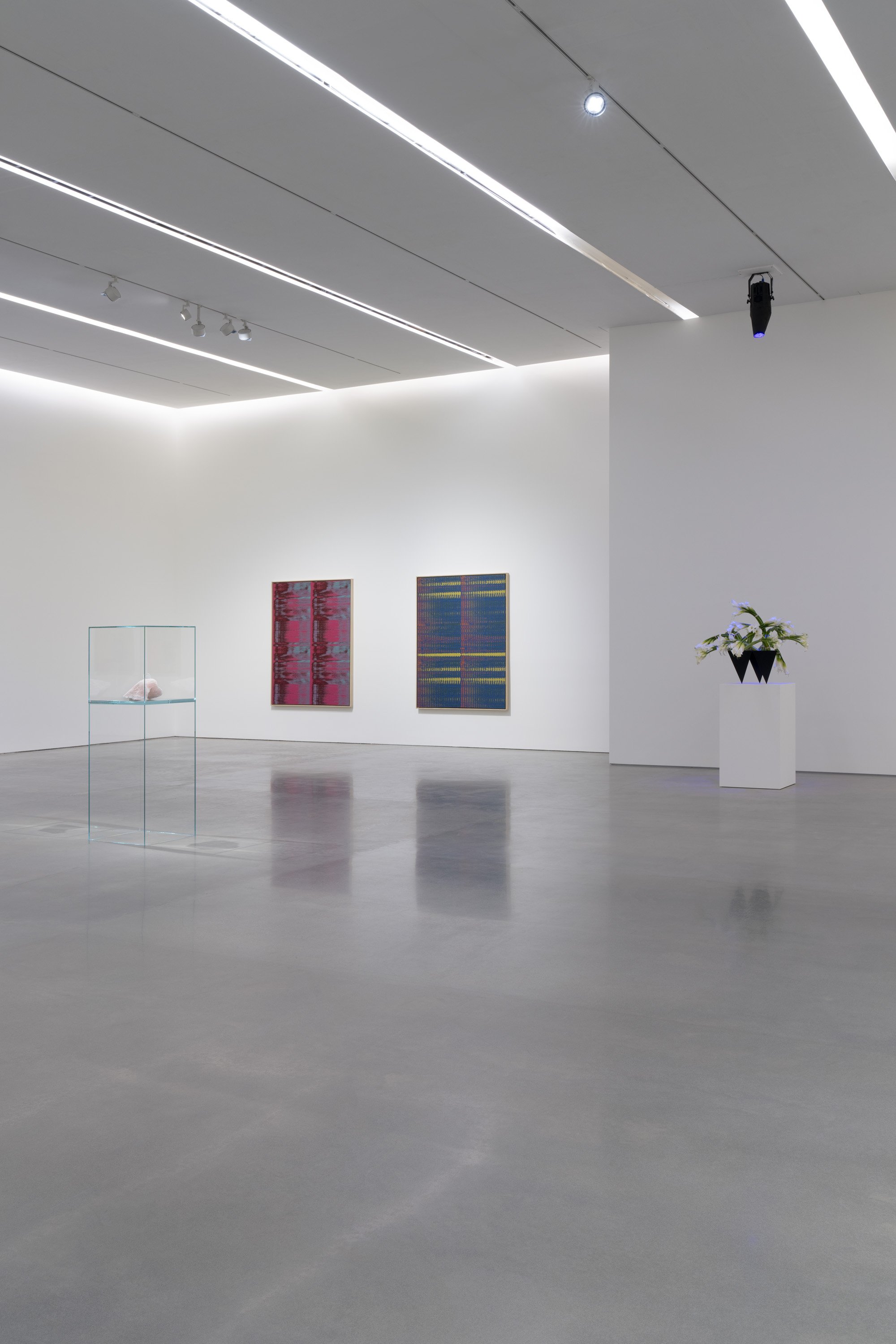
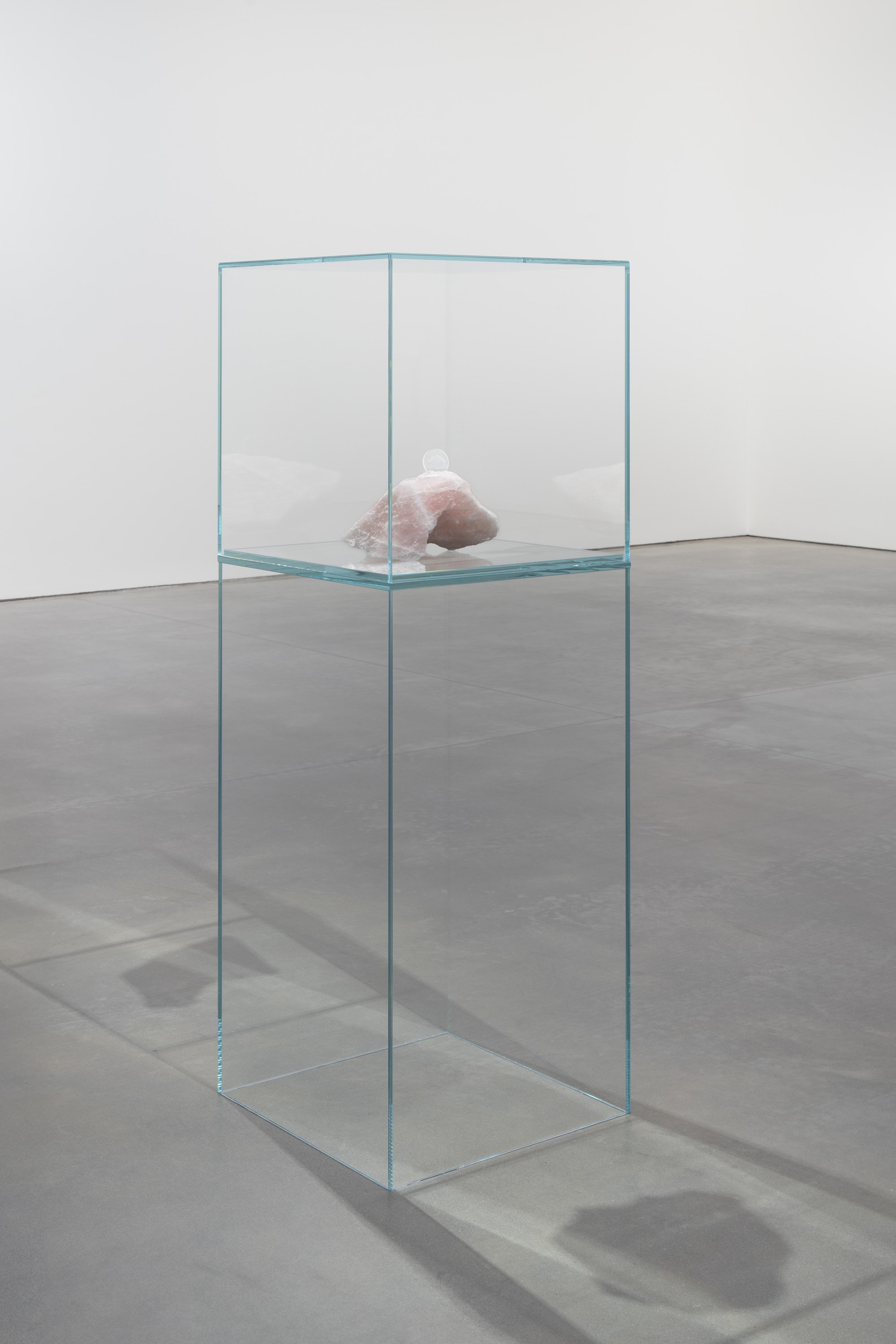
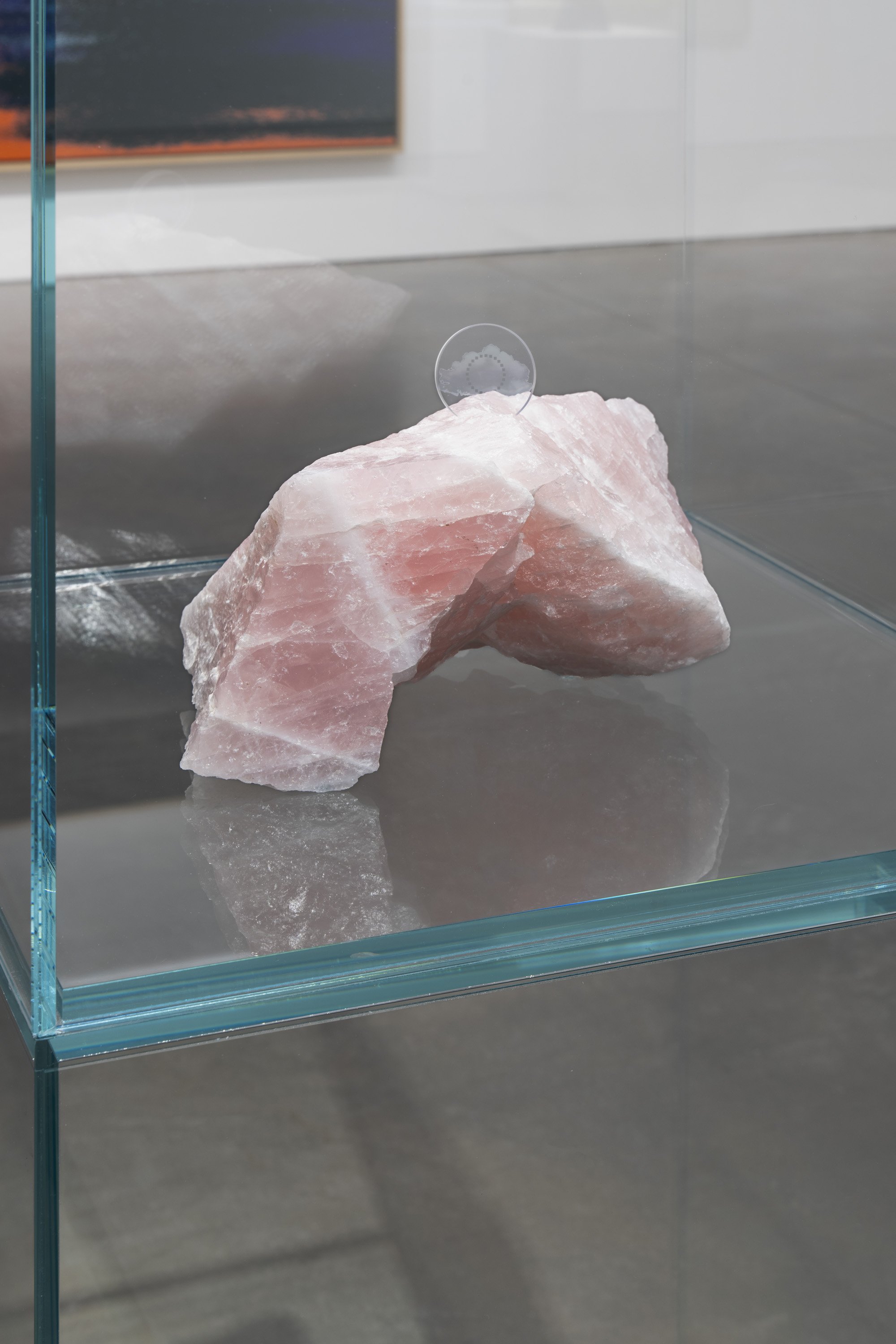
Mika Tajima: Energetics 540 West 25th Street, New York, NY 10001 January 12 – February 24, 2024 Photography courtesy Pace Gallery
Her exhibition at Pace’s New York gallery takes its title from a segment of physics focused on flows and transformations of energy. Enactments of glowing, burning, blooming, and dying will recur across the gallery space, which, in Tajima’s hands, becomes a stage for spiritual and physical transfigurations, traversing digital and ancient temporalities. The acute shifts in the sizes of the works in the show—in relation to human scale—draw attention to our staggeringly infinitesimal existence in the context of geologic and technological time. With her new works, the artist invites questions of what it means to be an individual within this deep time continuum and, in this contemporary moment, amid the inexorable rise of big data.
Upon entering the gallery, visitors will first experience a scent—which incorporates various ingredients used in ancient divination practices—emitted from a pyramidal incense sculpture in Tajima’s exhibition. Initiating viewers into the presentation, this ambient olfactory element serves to open the mind and to remind one of existence through the senses.
Anchoring the show are new, large-scale textile paintings from the artist’s ongoing Negative Entropy series. For this body of work, the artist has worked with neurosurgeons specializing in repairing the brain through energetic stimulation and activation. Auditory maps of the brain’s activity are translated into visual representations of sound waves (spectrograms) to which Tajima assigns colors. The latest Negative Entropy compositions—produced in collaboration with an experimental textile lab in the Netherlands—are rendered at an entirely new, expansive scale.
As such, these woven spectrograms, forged from virtually imperceptible records of brain activity, speak to the expansiveness of human potential. Tajima will also present Sense Object (January 1, 2023, United States) as part of Energetics—a portrait of the national sentiment in the United States on January 1, 2023, compressed within a 5d memory crystal. To create this work, the artist collected data from social media on that day, analyzing the sentiments of text-based posts by American users. Made with optoelectronics technology, the massive amount of data is represented as 24 small squares within a cloud image and inscribed into a tiny disc-shaped optical crystal, which balances atop rose quartz. Captured and locked away forever, the data laser etched within the image of the cloud becomes a memorial of sorts, an ode to the abstract, intangible nature of our digital selves.
Mika Tajima: Energetics 540 West 25th Street, New York, NY 10001 January 12 – February 24, 2024 Photography courtesy Pace Gallery
Three rose quartz sculptures from Tajima’s Pranayama series, a body of work in which the artist has pierced wood or marble surfaces with bronze nozzles cast from real Jacuzzi jets, will be included in the exhibition as well. The locations of punctures in the stones are loosely based on diagrams of bodily pressure points for acupuncture treatment, a traditional wellness technique used to control and direct unknowable life force. With her new rose quartz Pranayama sculptures, Tajima taps into the material’s associations with new age beliefs and aesthetics as well as its ability to produce electrical reactions. Meditating on mysterious flows and releases of energy in bodies, objects, and spaces, these practices that expose interiority and systematize abstract life functions are analogous to technology’s imperative to understand, regulate, and shape human activity.
Mika Tajima: Energetics 540 West 25th Street, New York, NY 10001 January 12 – February 24, 2024 Photography courtesy Pace Gallery
New sculptural works that incorporate live flowers also explore these ideas of life energy and breath. Transfused with UV fluorescence, the flowers will glow in the exhibition, emitting light as they die. For Tajima, the ephemeral and performative dimensions of these works reflect the constantly fluctuating state of the natural, built, and digital worlds that we inhabit and create.
Following her exhibition with Pace, Tajima will present Super Natural, a solo exhibition at the Hill Art Foundation in New York, in May 2024. Her work will also be included in Breath(e): Towards Climate and Social Justice, the Hammer Museum’s forthcoming Pacific Standard Time exhibition in Los Angeles, co-curated by Mika Yoshitake and Glenn Kaino and opening in September 2024.
Mika Tajima: Energetics is realized with support from Professor Peter Kazansky (University of Southampton), Dr. Amanda Carpenter, Textiel Lab, TAE Technologies, Seishoji Temple, Obayashi Corp., and Brooklyn Research.
Mika Tajima (b. 1975, Los Angeles) is an artist whose practice materializes techniques developed to shape the physicality, productivity, and desires of the human body. Her sculptures, paintings, videos, and installations focus on the embodied experience of ortho-architectonic control and computational life. From architectural systems to ergonomic design to psychographic data, Tajima's works operate in the space between the immaterial and the tangible to create heightened encounters that target the senses and emotions of the viewer, underlining the dynamics of control and agency. Tajima earned a BA in Fine Arts and East Asian Studies from Bryn Mawr College, Pennsylvania (1997), and an MFA from Columbia University, School of the Arts, New York (2003). Recent solo exhibitions of her work include Appear, Dazaifu Tenmangu, Dazaifu, Japan (2022); Spectral, Taro Nasu, Tokyo, Japan (2022); Mika Tajima: You Must Be Free, Kayne Griffin, Los Angeles (2022). Recent group exhibitions of including her work include Dirty Protests, The Hammer Museum, Los Angeles (2019); Programmed: Rules, Codes, and Choreographies in Art, 1965–2018, Whitney Museum of American Art, New York (2018); COLORI, Castello di Rivoli and GAM, Torino, Italy (2017); All Watched Over by Machines of Loving Grace, Palais de Tokyo, Paris, France (2017); and Mika Tajima: Meridian (Gold), Sculpture Center, New York (2016). Her work resides in numerous public collections worldwide including the Los Angeles County Museum of Art, California; Hammer Museum, Los Angeles, California; San Francisco Museum of Modern Art, California; Dallas Museum of Art, Texas; Albright-Knox Art Gallery, Buffalo, New York; and the Hirschhorn Museum and Sculpture Garden, Washington, D.C, among others. Pace is a leading international art gallery representing some of the most influential contemporary artists and estates from the past century, holding decades-long relationships with Alexander Calder, Jean Dubuffet, Barbara Hepworth, Agnes Martin, Louise Nevelson, and Mark Rothko. Pace enjoys a unique U.S. heritage spanning East and West coasts through its early support of artists central to the Abstract Expressionist and Light and Space movements.
Since its founding by Arne Glimcher in 1960, Pace has developed a distinguished legacy as an artist-first gallery that mounts seminal historical and contemporary exhibitions. Under the current leadership of CEO Marc Glimcher, Pace continues to support its artists and share their visionary work with audiences worldwide by remaining at the forefront of innovation. Now in its seventh decade, the gallery advances its mission through a robust global program— comprising exhibitions, artist projects, public installations, institutional collaborations, performances, and interdisciplinary projects. Pace has a legacy in art bookmaking and has published over five hundred titles in close collaboration with artists, with a focus on original scholarship and on introducing new voices to the art historical canon.
Today, Pace has seven locations worldwide, including European footholds in London and Geneva as well as Berlin, where the gallery established an office in 2023. Pace maintains two galleries in New York—its headquarters at 540 West 25th Street, which welcomed almost 120,000 visitors and programmed 20 shows in its first six months, and an adjacent 8,000 sq. ft. exhibition space at 510 West 25th Street. Pace’s long and pioneering history in California includes a gallery in Palo Alto, which was open from 2016 to 2022. Pace’s engagement with Silicon Valley’s technology industry has had a lasting impact on the gallery at a global level, accelerating its initiatives connecting art and technology as well as its work with experiential artists. Pace consolidated its West Coast activity through its flagship in Los Angeles, which opened in 2022. Pace was one of the first international galleries to establish outposts in Asia, where it operates permanent gallery spaces in Hong Kong and Seoul, along with an office and viewing room in Beijing. In spring 2024, Pace will open its first gallery space in Japan in Tokyo’s new Azabudai Hills development.
For more information about this exhibition and others, please visit the Pace Gallery’s website here. Pace Gallery can be found on Instagram and Artsy, too.
ROBERT SMITHSON : Mundus Subterraneus – Early Works
Robert Smithson in the Cedar Tavern, New York, April 1960 Photo Credit: Fred W. McDarrah © Holt/Smithson Foundation / Licensed by Artists Rights Society, New York Courtesy Holt/Smithson Foundation and Marian Goodman Gallery
Marian Goodman Gallery and Holt/Smithson Foundation are pleased to announce the exhibition Robert Smithson: Mundus Subterraneus – Early Works opened on the 13th of January and will close on the 24th of February 2024. Developed with Professor Adrian Rifkin, this exhibition focuses on Smithson’s works on paper made in the early 1960s, presenting drawings and collages that set the ground for his studies of entropy and the fall of modernism. Many of these drawings have never previously been seen. Leather-clad bikers, crumbling cities, movie stills, occult books, and erotic entanglements buzz against references to the dogmas of art history, religion, and totalitarianism. Alongside Mundus Subterraneus, a presentation of rare exhibition posters and print material is on view at the gallery’s 66 rue du Temple space. The selection is related to Smithson’s exhibitions and projects spanning several decades from the late 1950s to the 1980s at venues including New York’s Artists Gallery, Castellane Gallery, Dwan Gallery, and the Jewish Museum.
Untitled, 1962 Black ink on paper 24 x 18 in. (61 x 45.7 cm) Photo credit: Alex Yudzon © Holt/Smithson Foundation /Licensed by Artists Rights Society, New York Courtesy Holt/Smithson Foundation and Marian Goodman Gallery
In 1972 Smithson reflected in an interview that his early works were “a kind of groping, investigating period,” made at a time when he was “interested in origins and primordial beginnings, the archetypal nature of things.” These concerns he described were “haunting me all the way through 1959 and 1960, when I got interested in Catholicism through T. S. Eliot and, through that range of thinking, T. E. Hulme led me to an interest in the Byzantine and his notions of abstraction as a counterpoint to the humanism of the late Renaissance.” In 1964 he announced that he morphed into a more “conscious” artist who rejected “lurking pagan religious anthropomorphism.”
Mundus Subterraneus pays attention to this groping, investigating phase of artmaking, to a moment when Smithson described himself as creating “phantasmagorical drawings of cosmological worlds somewhat between Blake and a kind of Boschian imagery.” These drawings are a raw, unfettered analysis on the idea of modernism and on systems of knowledge. The exhibition’s title is taken from a drawing Smithson made in 1971 based on an illustration of earth’s volcanoes and interconnected lava tubes found in Mundus Subterraneus, a wide-ranging scientific encyclopedia from 1665 written by the polymath and fabulist Athanasius Kircher. Both Smithson and Kircher were fascinated by what lies beneath the earth’s surface and the limitations of human knowledge. In the 1970 film Spiral Jetty Smithson narrates, “the earth’s history seems at times like a story recorded in a book, each page of which is torn into small pieces. Many of the pages and some of the pieces of each page are missing.” The incongruities and mysteries in the earth’s history that fascinated Smithson spiral their way through the layers of historical and cultural archetypes referenced in the works in Mundus Subterraneus.
Poster for Asphalt Rundown Ink on paper 40 x 27 in. (101.6 x 68.6cm) Photo credit: Rebecca Fanuele © Holt/Smithson Foundation /Licensed by Artists Rights Society, New York Courtesy Holt/Smithson Foundation and Marian Goodman Gallery
Smithson’s works on paper include dinosaurs collaged with magazine advertisements, film stills paired with Corinthian columns, and statues from antiquity layered with bright pop abstractions and flying motorcycles. There are human bodies transforming into trees, references to superstition and esotericism, gender-fluid figures, and queered tropes of ultra-masculinity. He uses a still from the 1961 Ealing Studios film The Secret Partner and the record sleeve to Johnny Mathis’ album cover Wonderful, Wonderful. In some drawings he outlines the swastika, an ancient symbol transmuted through association, set beside a queer coupling in one work, being ingested by a monstrous fish in another. Smithson creates conversations and contradictions by combining divergent imagery from art history, movies, and fetish magazines. Smithson’s early drawings have rarely been seen, and they demand much research. They are complicated decipher yet are necessary to engage with to fully understand the scope of Smithson’s critical engagement with signs and structures of society.
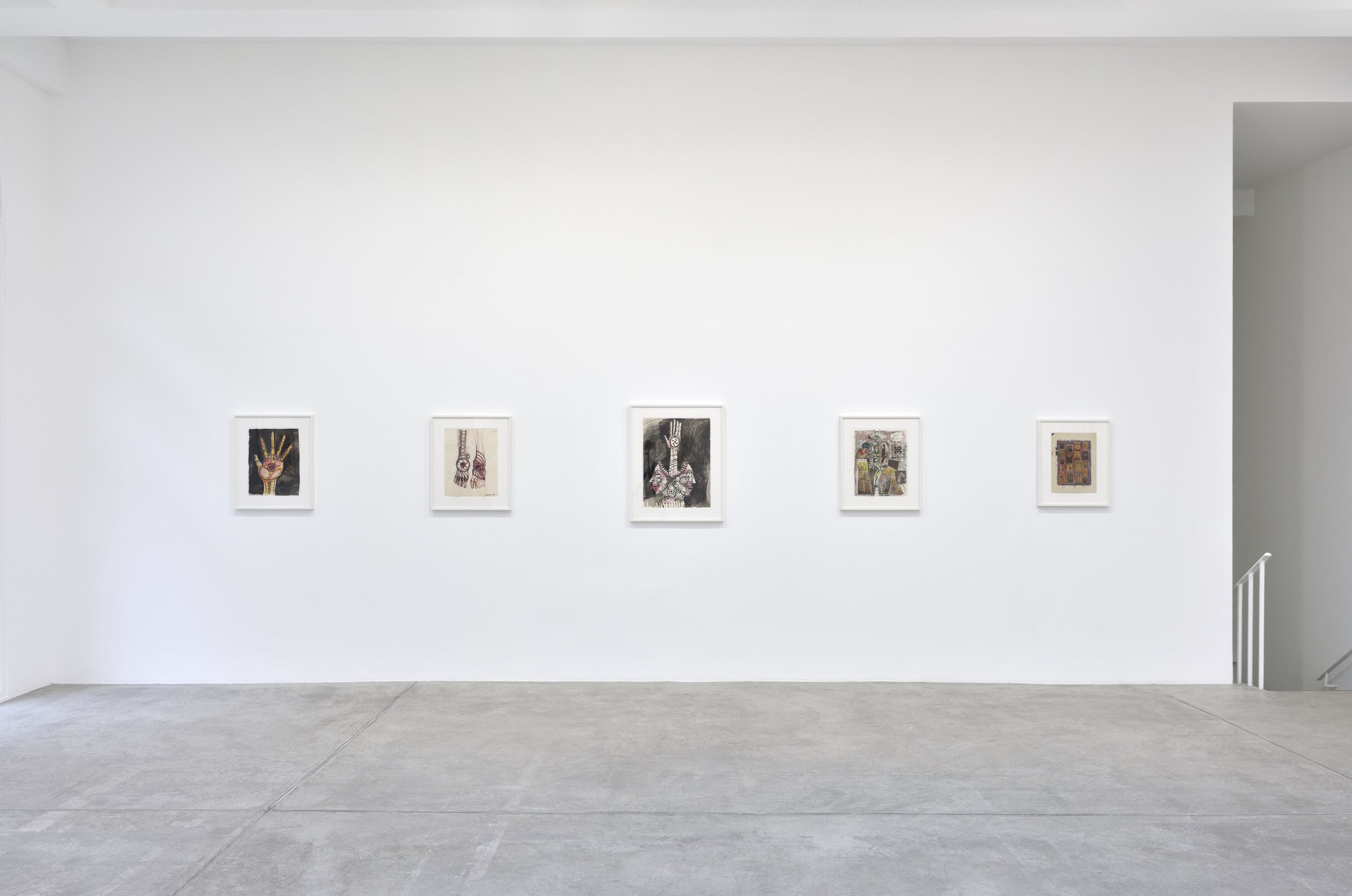
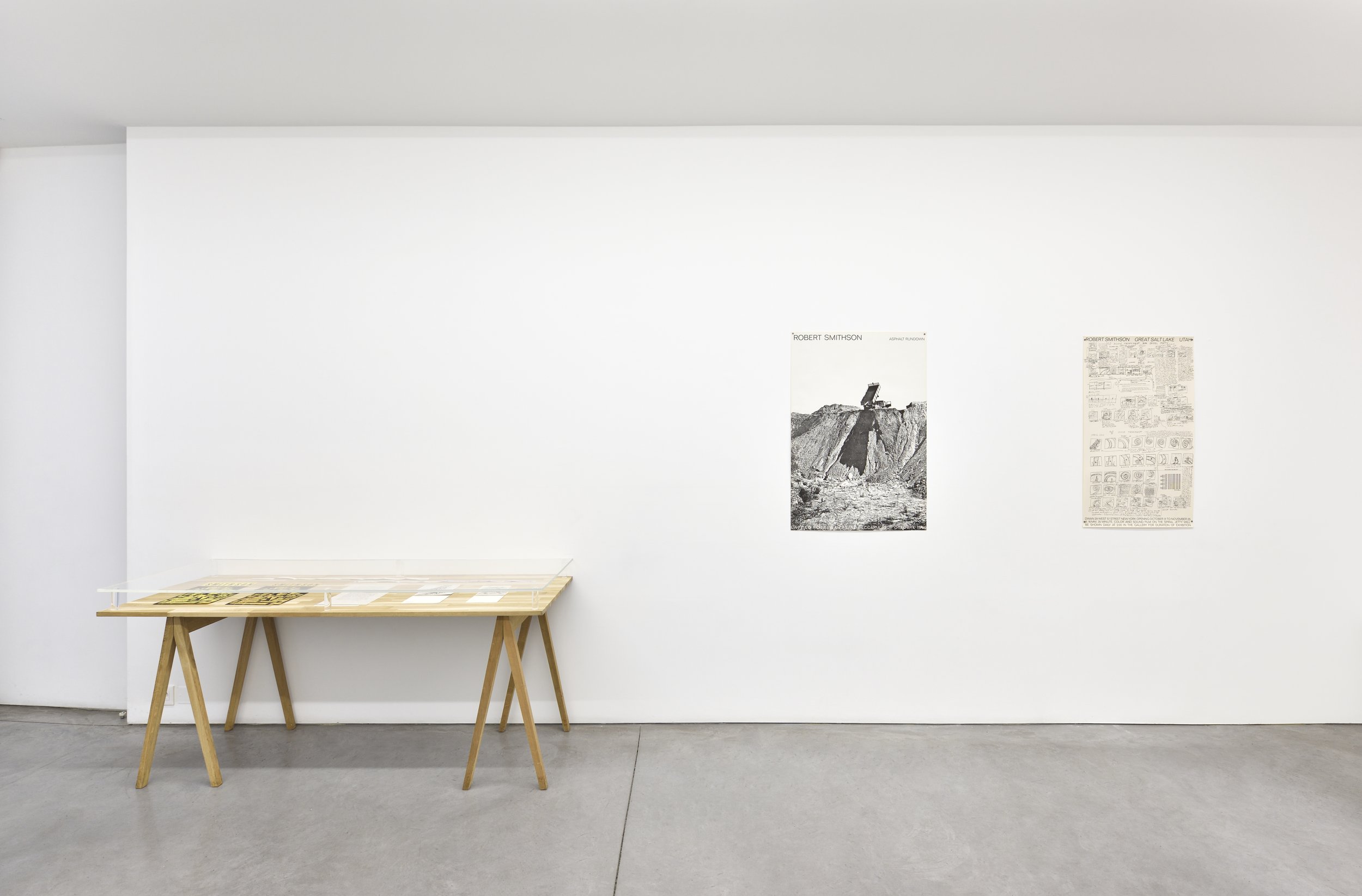

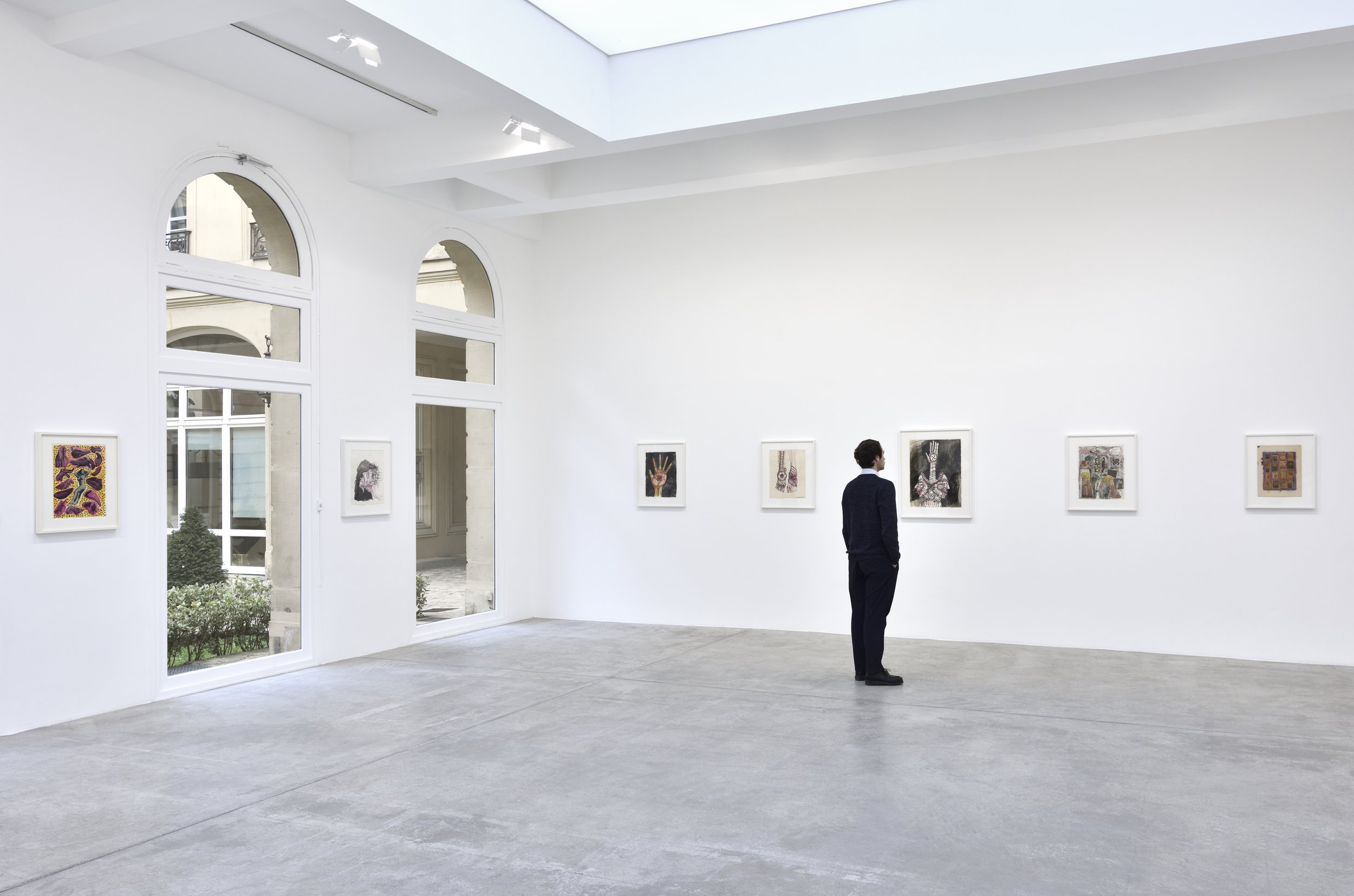

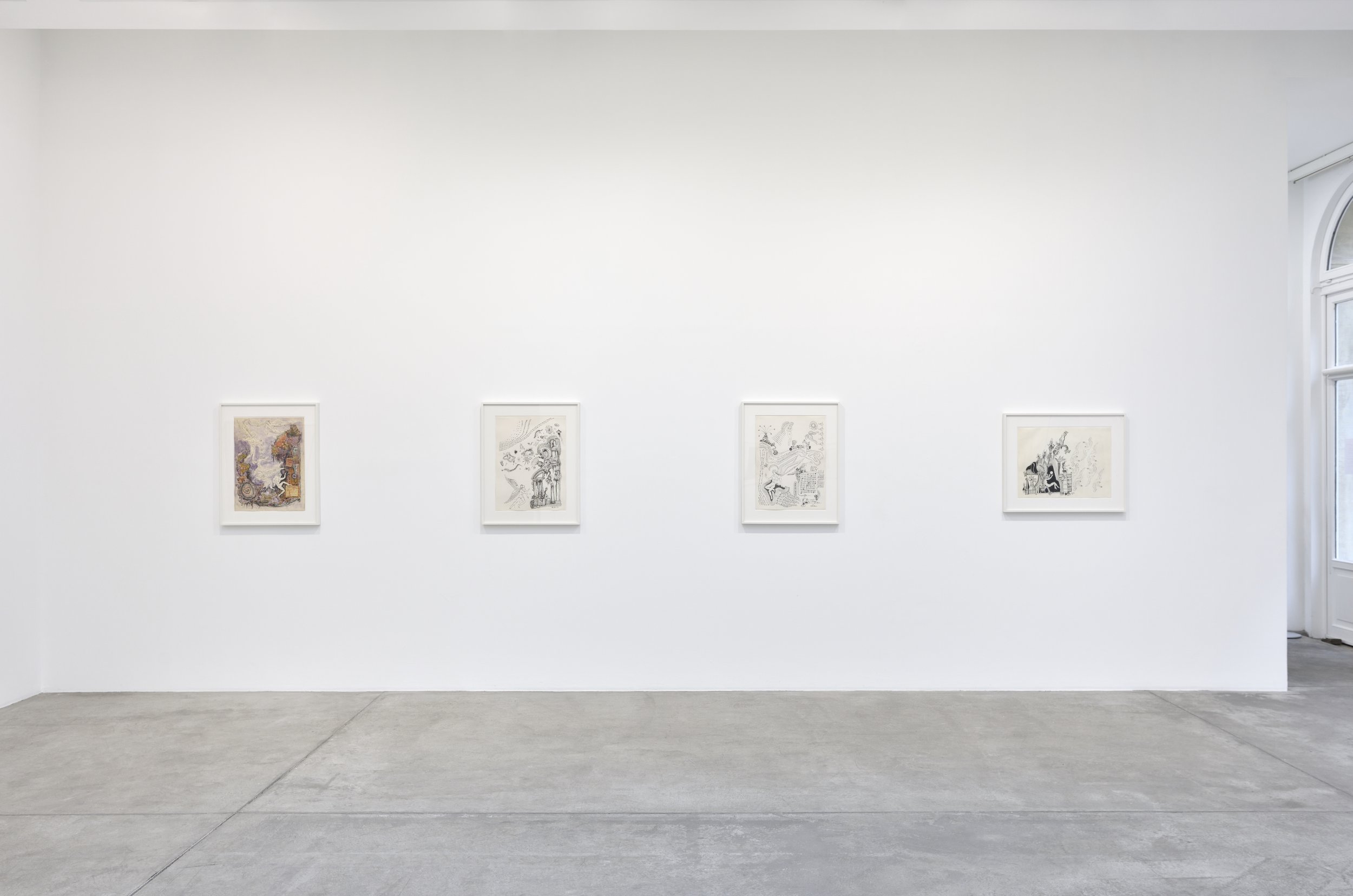





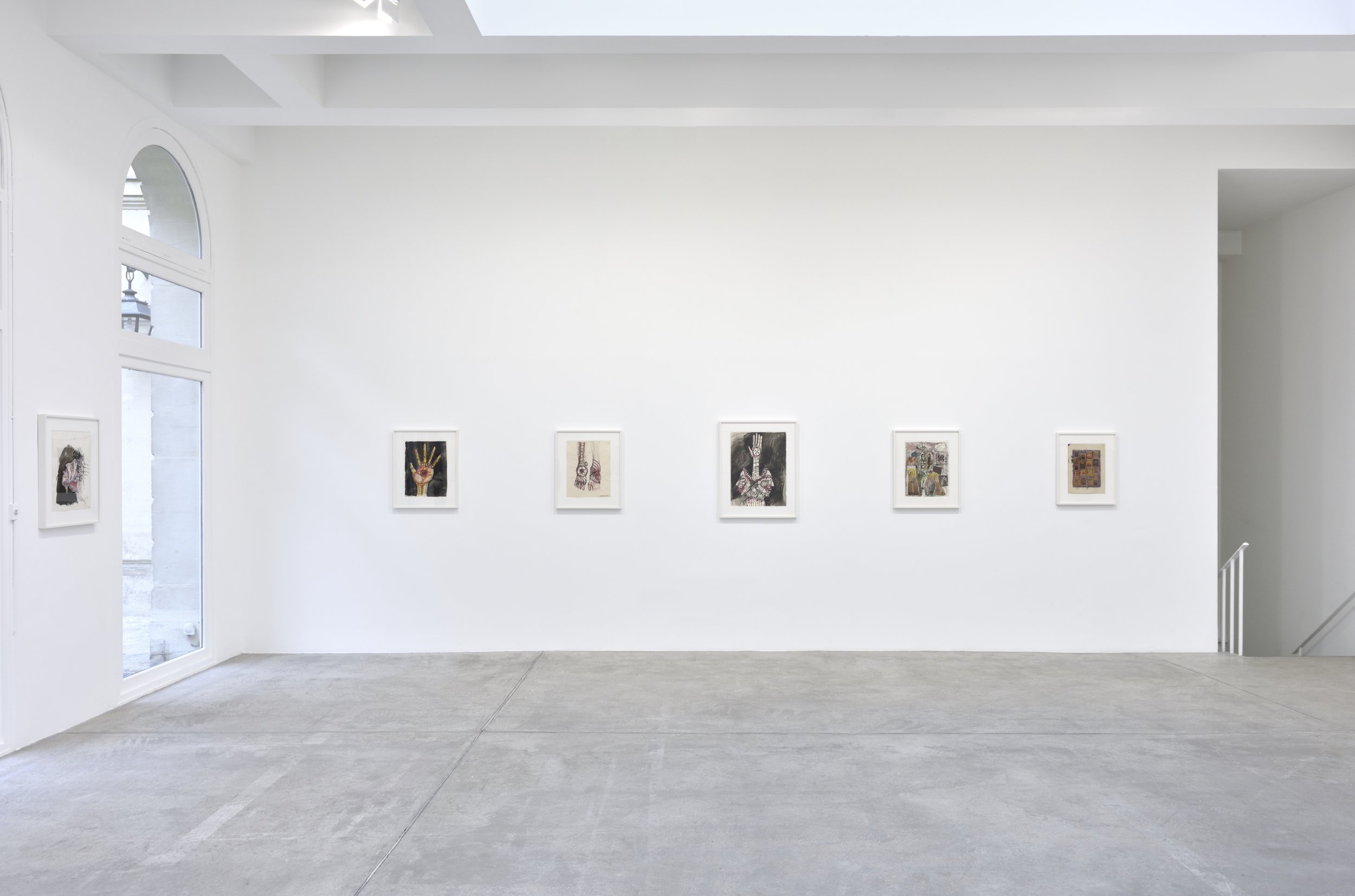

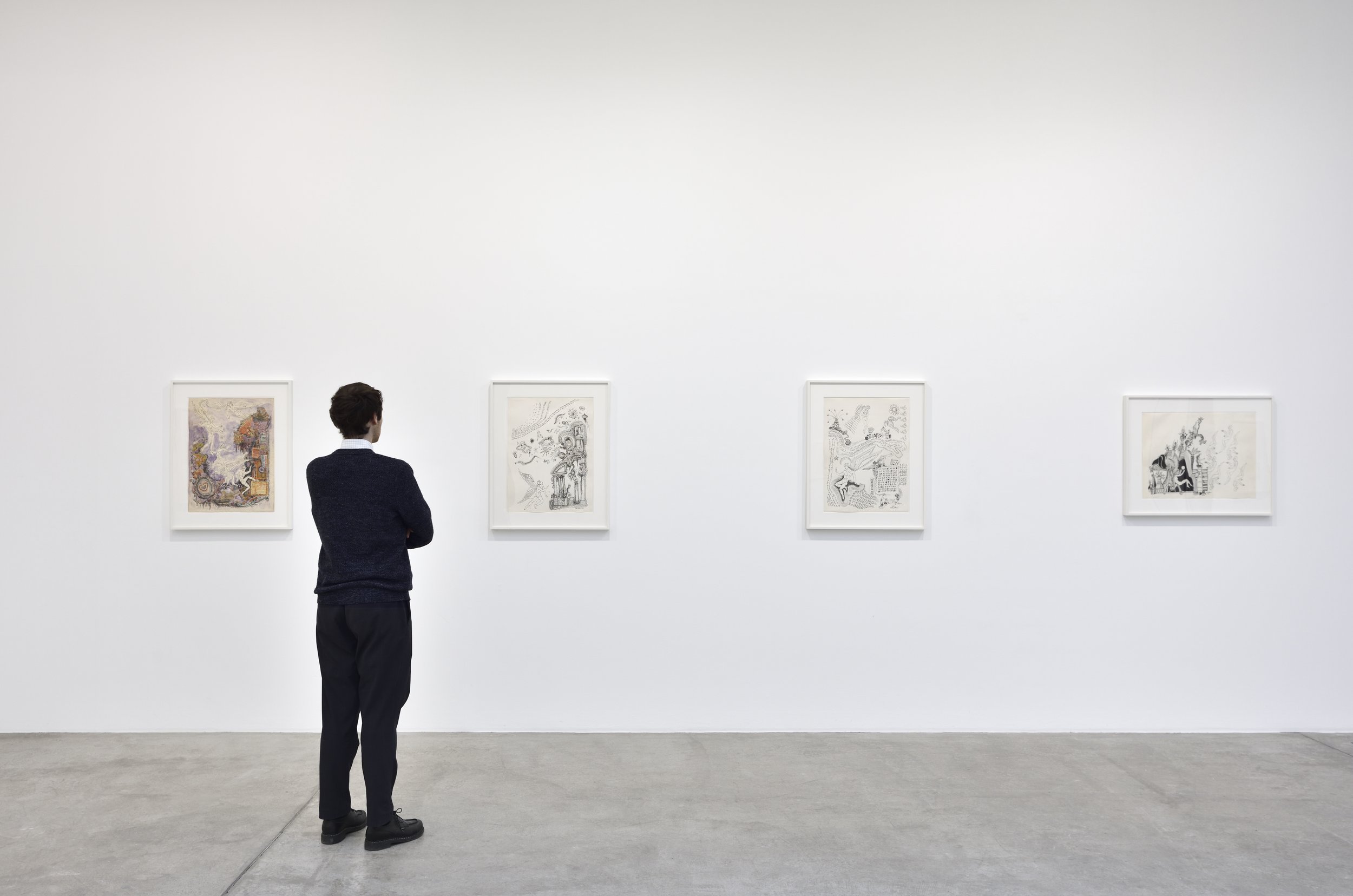

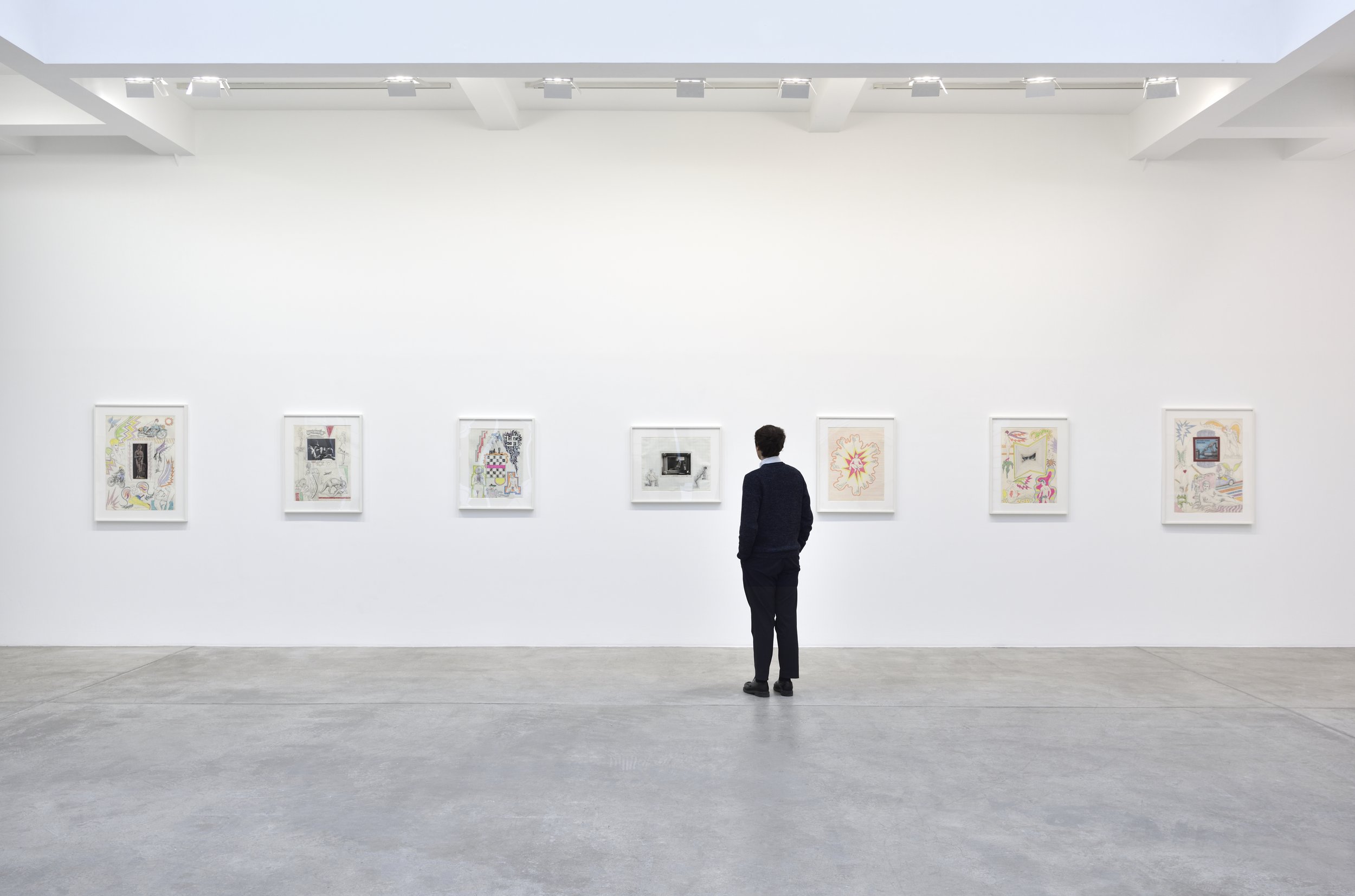
Exhibition view Robert Smithson: Mundus Subterraneus Early Works, Galerie Marian Goodman Paris. 13 January – 24 February 2024 Photo credit: Rebecca Fanuele © Holt/Smithson Foundation /Licensed by Artists Rights Society, New York Courtesy Holt/Smithson Foundation and Marian Goodman Gallery
Born in Passaic in New Jersey, Robert Smithson (1938-1973) was an artist who expanded what art could be and where it could be found. For over fifty years his work, writings, and ideas have influenced artists and thinkers, building the ground from which contemporary art has grown. An autodidact, Smithson's interests in travel, cartography, geology, architectural ruins, prehistory, philosophy, science fiction, popular culture, and language spiral through his work. In his short and prolific life, Smithson produced paintings, drawings, sculpture, earthworks, film and video, photographs, writings, and all the stops between. From his landmark earthworks to his Nonsites, writings, proposals, collages, detailed drawings, and radical rethinking of landscape, Smithson's ideas are profoundly urgent for our times.
Hands Stigmata, 1961 Gouache on paper 18 x 13 5/8 in. (45.7 x 34.6 cm) Photo credit: Alex Yudzon © Holt/Smithson Foundation /Licensed by Artists Rights Society, New York Courtesy Holt/Smithson Foundation and Marian Goodman Gallery
By exploring the conceptual and physical boundaries of knowledge Smithson raised essential questions about our place in the world. Smithson’s first solo exhibition, which emphasized what he described as “expressionistic work,” took place in 1957 at Alan Brilliant’s gallery in New York. The artist’s peripatetic life took him to Rome in 1961, when George Lester offered him his first solo international exhibition at Galleria George Lester, where he explored quasi-religious subject matter. His early paintings, drawings, and sculptures are imbued with references to queer and fetish culture, popular movies, science fiction, religion, and art history.
Smithson poster for the Artist's Gallery, 1959 Ink on paper 12 1/8 x 9 1/8 in. (30.8 x 23.2 cm) Photo credit: Rebecca Fanuele © Holt/Smithson Foundation /Licensed by Artists Rights Society, New York Courtesy Holt/Smithson Foundation and Marian Goodman Gallery
Smithson's works are held in museum collections around the world including: Art Institute of Chicago; Modern Art Museum of Fort Worth, Texas; The Getty Research Institute, California; New Jersey State Museum; Philadelphia Museum of Art; Centre Pompidou, Paris; Dia Art Foundation, New York; Museum of Modern Art, New York; National Gallery, Washington DC; National Gallery of Australia, Canberra; National Museum of Modern Art, Tokyo; Solomon R. Guggenheim Museum, New York; and the Whitney Museum of American Art, New York. Currently Robert Smithson’s work is in the group exhibition Forms of Ruin at Musée des Beaux-Arts de Lyon. In July 2024 the exhibition Teresita Fernández / Robert Smithson launches at SITE Santa Fe, New Mexico, marking the first time Robert Smithson’s work has been placed in conversation with an artist working today.
Robert Smithson: Mundus Subterraneus is organized by Lisa Le Feuvre, Executive Director of Holt/Smithson Foundation with Professor Adrian Rifkin. It is accompanied by an illustrated newspaper with a commissioned text by Professor Rifkin, which he presents on 13 January as a performance event. Professor Rifkin has taught in art schools since 1970, most recently as Professor of Art Writing at Goldsmiths, University of London. Robert Smithson’s 1961 essay The Iconography of Desolation is also included in the newspaper, along with illustrations of key works from the exhibition.
In February 2020 Holt/Smithson Foundation and Marian Goodman Gallery announced their partnership. Marian Goodman has a long relationship with the work of Smithson, in 1965 Marian Goodman was a founder of Multiples, Inc., a landmark project publishing prints, multiples, and books by leading American artists— including Robert Smithson. Mundus Subterraneus is the second exhibition of Robert Smithson at Galerie Marian Goodman and the fourth exhibition with Marian Goodman Gallery. The works and posters on display are from the collection of Holt/Smithson Foundation.
In 2014 the artist Nancy Holt (1938-2014), who was married to Robert Smithson (1938-1973), willed Holt/Smithson Foundation into being. The Foundation has been active since 2018 and develops the distinctive creative legacies of Holt and Smithson. A research-led organization collaborating with artists, writers, thinkers and institutions, Holt/Smithson Foundation realizes exhibitions, publishes books, initiates artist commissions, programs educational events, encourages research, and develops collections globally from its headquarters in New Mexico.
For more information about the exhibit, please visit the Marian Goodman Gallery’s site. The gallery can be found on Instagram and Artsy, too. Information about the Holt/Smithson Foundation can be found here.
Yayoi Kusama’s LOVE IS CALLING
Installation view of Yayoi Kusama: LOVE IS CALLING, on view from March 9, 2023, to February 11, 2024, at Pérez Art Museum Miami (PAMM). Courtesy of Pérez Art Museum Miami (PAMM)
Pérez Art Museum Miami (PAMM) is pleased to present Yayoi Kusama: LOVE IS CALLING, the most immersive and kaleidoscopic of the artist’s renowned Infinity Mirror Rooms. The exhibition opened on March 9, 2023 and will be on view until February 11, 2024. LOVE IS CALLING is the artist’s largest environment to date—embodying the culmination of Kusama’s artistic feats, the show incorporates her signature polka dots and bold colors, the spoken word, and limitless reflections that double as optical illusions.
“We are honored to offer this experience to our audience as Kusama is an iconic artist with an important career trajectory. She has been creating works that are lively, thoughtful, and introspective, which have been enjoyed by viewers for over six decades and will certainly be enjoyed by our Miami audience,” said PAMM Associate Curator Jennifer Inacio.
Viewers will enter a darkened, mirrored room illuminated by inflatable, tentacle-like forms that extend from the floor and ceiling, gradually changing colors. As visitors walk through the installation, a sound recording of Kusama reciting a love poem in Japanese plays continuously. Written by the artist, the poem’s title translates to Residing in a Castle of Shed Tears. Exploring enduring themes including life and death, the poem poignantly expresses Kusama’s hope to spread a universal message of love through her art.
“We are thrilled to showcase LOVE IS CALLING at Pérez Art Museum Miami, a perfect home for a work that connects people from all walks of life,” said PAMM Director Franklin Sirmans.
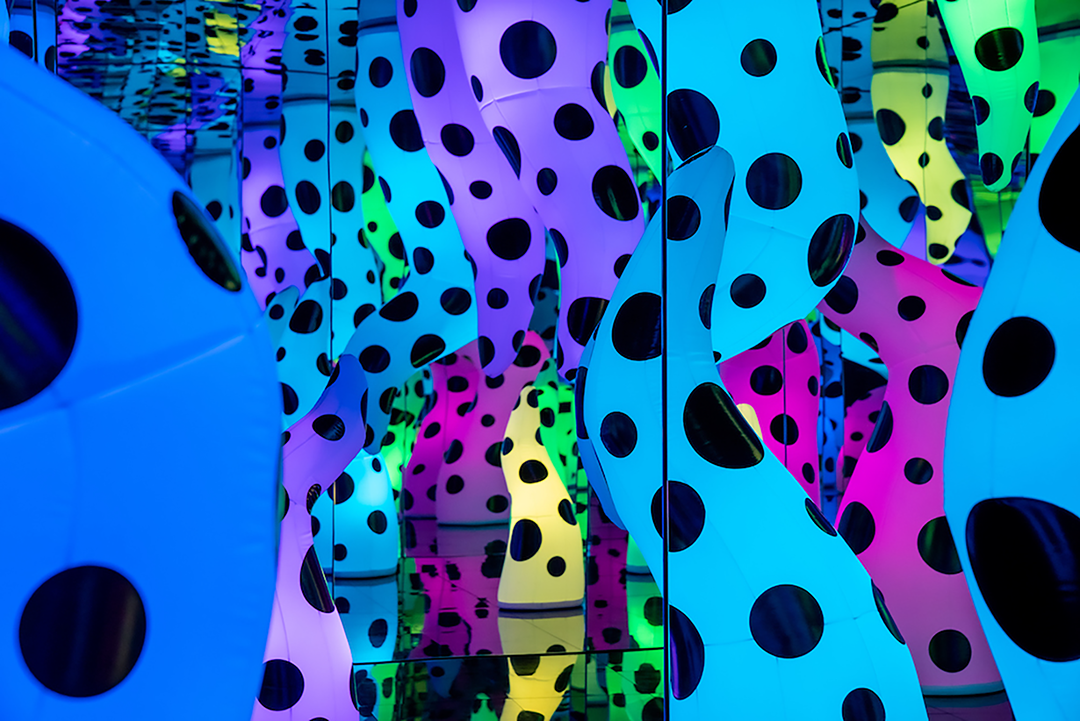

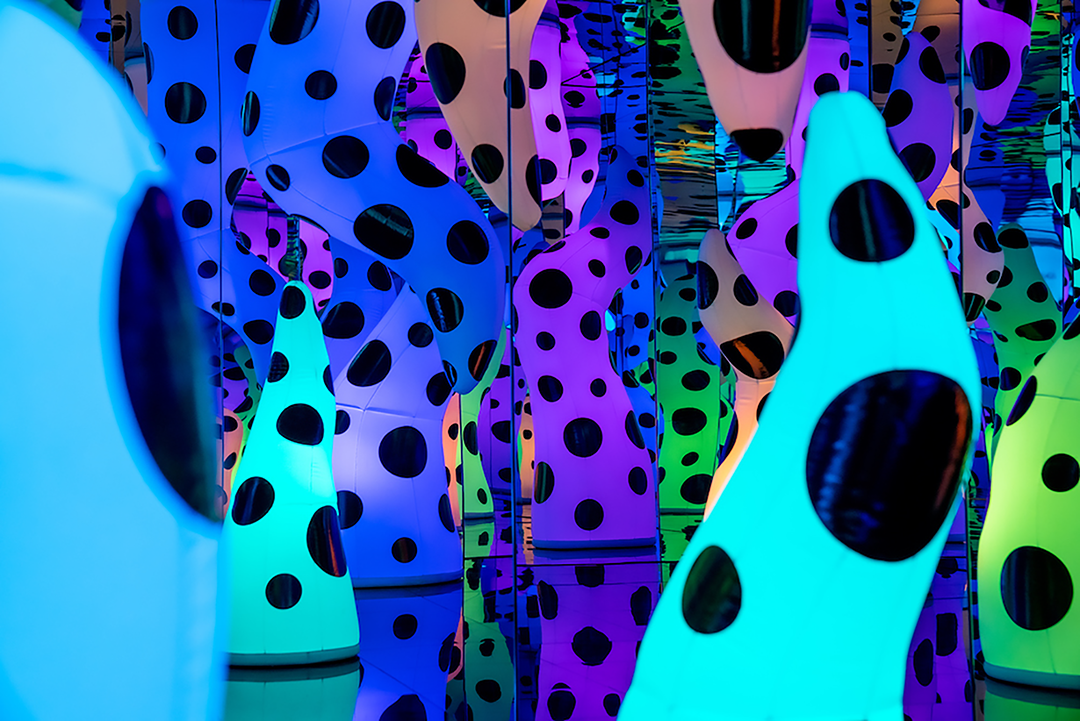
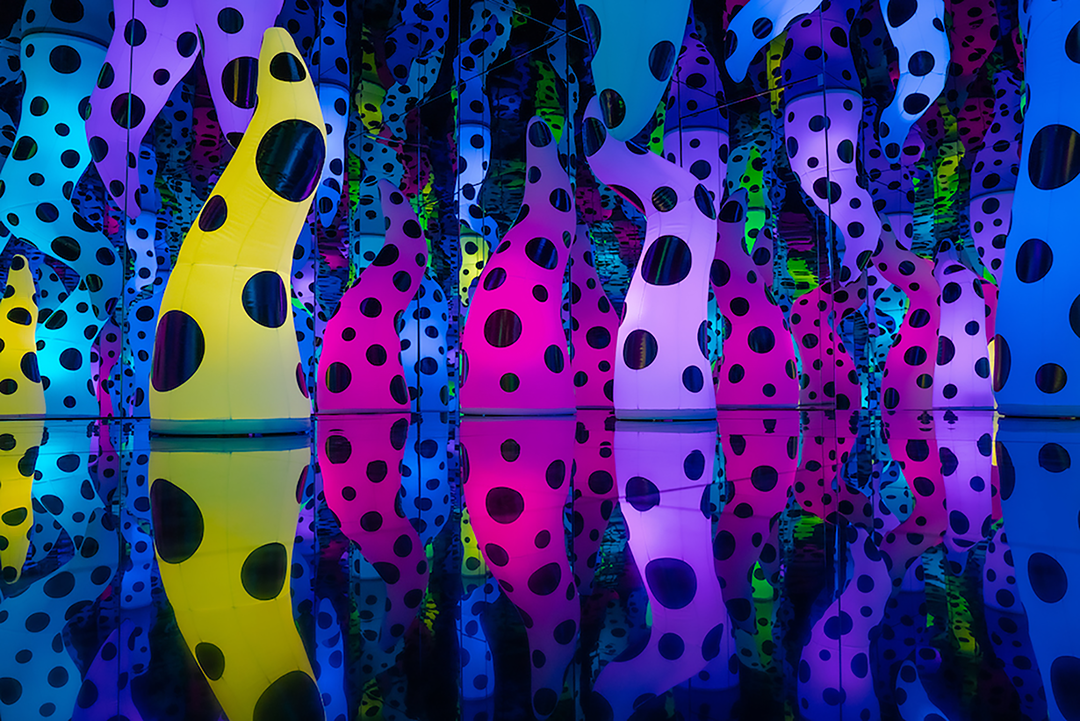


Installation view of Yayoi Kusama: LOVE IS CALLING, on view from March 9, 2023, to February 11, 2024, at Pérez Art Museum Miami (PAMM). Courtesy of Pérez Art Museum Miami (PAMM)
This is the first time the legendary artist has exhibited at PAMM. As Miami’s flagship art museum, PAMM is committed to showcasing 20th and 21st-century international modern and contemporary art. By presenting LOVE IS CALLING, the museum honors its mission of creating genuine human interaction, communication, and exchange for Miami’s diverse audiences through art.
Yayoi Kusama is one of the world’s most recognized and celebrated artists today. Her work has transcended two of the most notable art movements of the late twentieth century: Pop art and Minimalism. Her nearly seven-decade seminal career spans painting, performance, large-scale presentations, outdoor sculptural installations, literary pieces, films, fashion, and design. Featured globally in solo and group presentations, Kusama established herself in New York and presented groundbreaking events and exhibitions.
Yayoi Kusama: LOVE IS CALLING is organized by PAMM Associate Curator Jennifer Inacio. The exhibition is presented by Bank of America.
ABOUT YAYOI KUSAMA
Born in Matsumoto, Japan in 1929, Yayoi Kusama began her artistic education at the Kyoto School of Arts and Crafts. There, she studied Nihonga, a style of formal, traditional Japanese painting that emerged in the Meiji period (1868–1912). Following six solo exhibitions in Japan during her early artistic career, Kusama moved to New York in 1958, inspired by the rise of Abstract Expressionism in the United States. She was one of the first Japanese artists of her generation to make this move, and her early mobility, combined with her openly acknowledged history of mental illness, contributed to a highly visible, eccentric public persona.
Kusama represented Japan at the Venice Biennale in 1993. She has been the subject of international touring exhibitions organized by institutions such as the Los Angeles County Museum of Art and the Museum of Modern Art, New York (1998); Le Consortium, Dijon, France (2000); National Museum of Modern Art, Tokyo (2004); and Museum Boijmans Van Beuningen, Rotterdam (2008); as well as a major retrospective shown at the Museo Nacional Centro de Arte Reina Sofía, Madrid; Centre Georges Pompidou, Paris; Tate Modern, London; and Whitney Museum of American Art, New York (2011–12). The artist has won numerous awards and honors, including the Asahi Prize (2001), French Ordre des Arts et des Lettres (2003), and 18th Praemium Imperiale award for painting (2006). Kusama was the subject of Near Equal Yayoi Kusama: I Adore Myself (2008), a documentary film by Takako Matsumoto.
ABOUT PAMM
Pérez Art Museum Miami (PAMM), led by Director Franklin Sirmans, promotes artistic expression and the exchange of ideas, advancing public knowledge and appreciation of art, architecture, and design, and reflecting the diverse community of its pivotal geographic location at the crossroads of the Americas. The nearly 40-year-old South Florida institution, formerly known as Miami Art Museum (MAM), opened a new building, designed by world-renowned architects Herzog & de Meuron, on December 4, 2013 in Downtown Miami’s Maurice A. Ferré Park. The facility is a state-of-the-art model for sustainable museum design and progressive programming and features 200,000 square feet of indoor and outdoor program space with flexible galleries, shaded outdoor verandas, a waterfront restaurant and bar; a museum shop, and an education center with a library, media lab, and classroom spaces.
Accredited by the American Alliance of Museums, Pérez Art Museum Miami (PAMM) is Sponsored in part by the State of Florida, Department of State, Division of Arts and Culture and the Florida Council on Arts and Culture. Support is provided by the Miami-Dade County Department of Cultural Affairs and the Cultural Affairs Council, the Miami-Dade County Mayor and Board of County Commissioners. Additional support is provided by the City of Miami and the Miami OMNI Community Redevelopment Agency (OMNI CRA). Pérez Art Museum Miami is an accessible facility. All contents ©Pérez Art Museum Miami. All rights reserved.
For more information about this exhibit and other exhibits currently on view and upcoming, please visit the Pérez Art Museum website here. PAMM can also be found on Instagram, YouTube, TikTok, and Facebook.
Going Dark: The Contemporary Figure at the Edge of Visibility
Installation view, Going Dark: TheContemporary Figure at the Edge of Visibility, Solomon R. Guggenheim Museum, New York, October 20, 2023–April 7, 2024. Photo:Midge Wattles © Solomon R. Guggenheim Foundation
On October20, 2023, The Solomon R. Guggenheim Museum presented the opening of Going Dark: The Contemporary Figure at the Edge of Visibility, a major exhibition predicated on a duality: works of art that present the figure, yet obscure it in some way, thus existing at the “edge of visibility.” The exhibition asserts that these experimentations in figuration across media—painting, photography, drawing, prints, sculpture, video, and installation—articulate pressing questions around what it means to be seen, not seen, or erased in society. On view from October 20, 2023, through April 7, 2024, the exhibition features 28 artists and fills all six ramps of the museum’s Frank Lloyd Wright–designed rotunda.
Installation view, Going Dark: TheContemporary Figure at the Edge of Visibility, Solomon R. Guggenheim Museum, New York, October 20, 2023–April 7, 2024. Photo:Midge Wattles © Solomon R. GuggenheimFoundation
The artists in this exhibition “go dark” through a range of formal moves, including, but not limited to, literal darkening by way of shadowing or other lighting techniques; paint selections; reversing or otherwise concealing the body; and post-production tools like “chroma-keying.” Going Dark suggests that these approaches to the figure allow for engagement with urgent and ongoing discussions around visibility in its social context: both invisibility and hypervisibility within public and private spaces, as well as within institutions, (art) history, popular media, social media, and more. Through revealing and concealing the body, Going Dark probes a key point of conflict in representation: both the desire to be seen and the desire for obscurity, especially as technology offers more opportunities for (and dangers in) exposure than ever before.
Installation view, Going Dark: TheContemporary Figure at the Edge of Visibility, Solomon R. Guggenheim Museum, New York, October 20, 2023–April 7, 2024. Photo: Midge Wattles © Solomon R. Guggenheim Foundation
Going Dark features over 100 works of art by a multigenerational, multiracial group of artists, the majority of whom are Black and more than half of whom are women. Chronologically, the show proceeds from the mid-1980s, with paintings and photographs by Kerry James Marshall, Lorna Simpson, and Ming Smith, through to the present, with photography, sculpture and video works by Sandra Mujinga, Sondra Perry, Stephanie Syjuco, and others. Works from the late 1960s to early 1970s by David Hammons, Faith Ringgold, and Charles White offer earlier reference points for the contemporary history this show presents. Tiona Nekkia McClodden and WangShui debut new paintings, and American Artist presents a new site-specific installation.
Stephanie Syjuco, Block Out the Sun (Shadow), 2019-2022. Archival pigment print, 16 × 20 inches framed (40.6 × 50.8 cm). Courtesy the artist; Ryan Lee Gallery, New York; Catharine Clark Gallery, San Francisco; and Silverlens, Manila. © Stephanie Syjuco. Photo: Courtesy the artist; Ryan Lee Gallery, New York; Catharine Clark Gallery, San Francisco; and Silverlens, Manila
While focused on the social contexts of visibility, Going Dark also argues that this “semi-visible” figuration as a genre is one of art historical significance, intervening upon discourses of modernism and the monochrome. The works in the show move fluidly between figuration and abstraction, thus blurring the lines in that staid binary frame. Recognizing that making art at the limits of the visible requires new materials, tools, and processes, many of the artists featured in Going Dark inventively manipulate color and light to obscure both social and optical perception, challenging the very biology of how we see.
Installation view, Going Dark: TheContemporary Figure at the Edge of Visibility, Solomon R. Guggenheim Museum, New York, October 20, 2023–April 7, 2024. Photo:Midge Wattles © Solomon R. GuggenheimFoundation
A robust catalogue has been published alongside the exhibition featuring newly commissioned essays by curators and scholars Jordan Carter, Ayanna Dozier, Ashley James, Key Jo Lee, Abbe Schriber, and Legacy Russell. Also included are creative responses to the concept of “going dark” by seven poets and graphic designers: Rio Cortez, Harmony Holiday, Marwa Helal, Kristian Henson, Nontsikelelo Mutiti, and Hassan Rahim, and Kevin Young. The book is designed by Fahad AlHunaif.
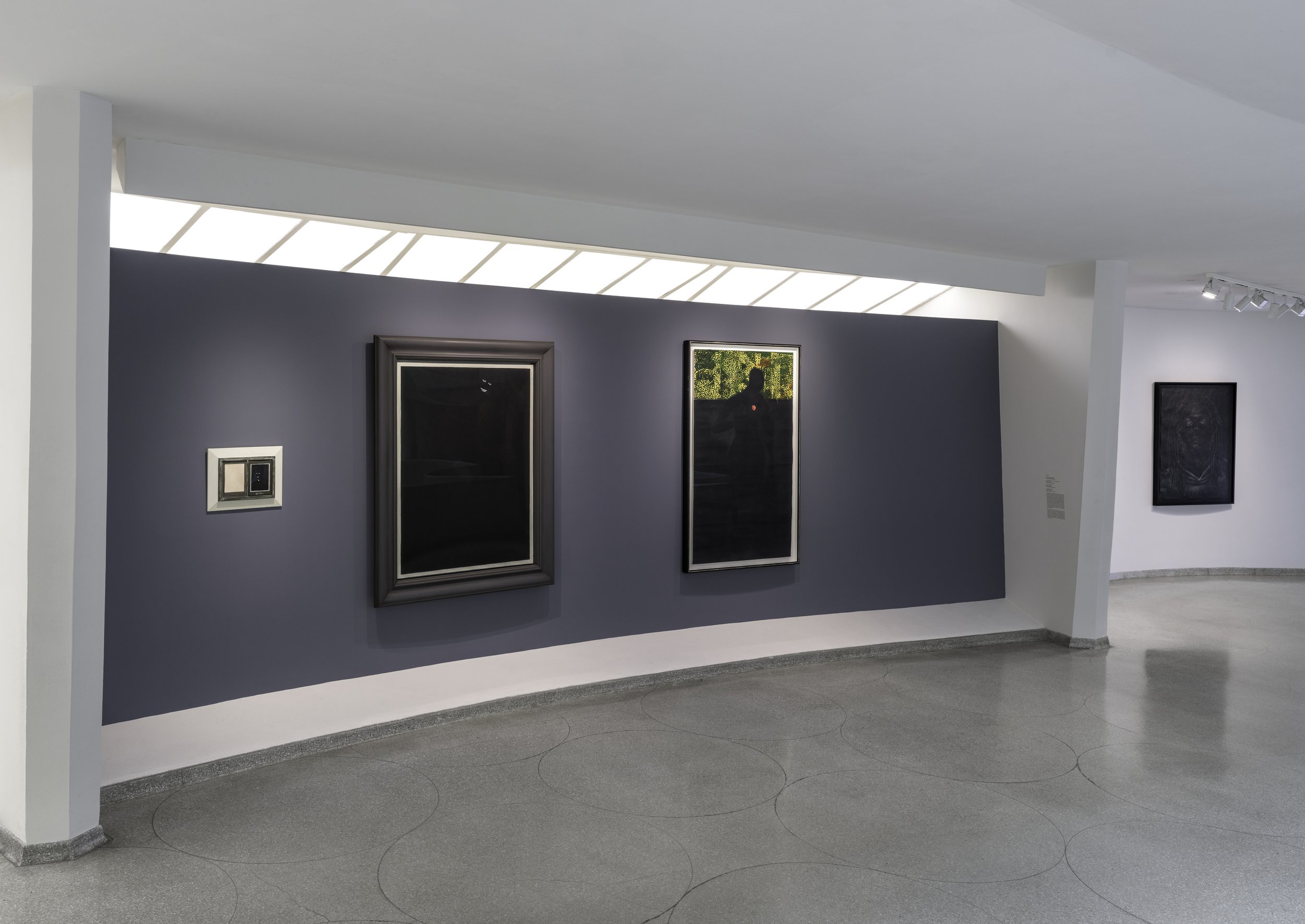
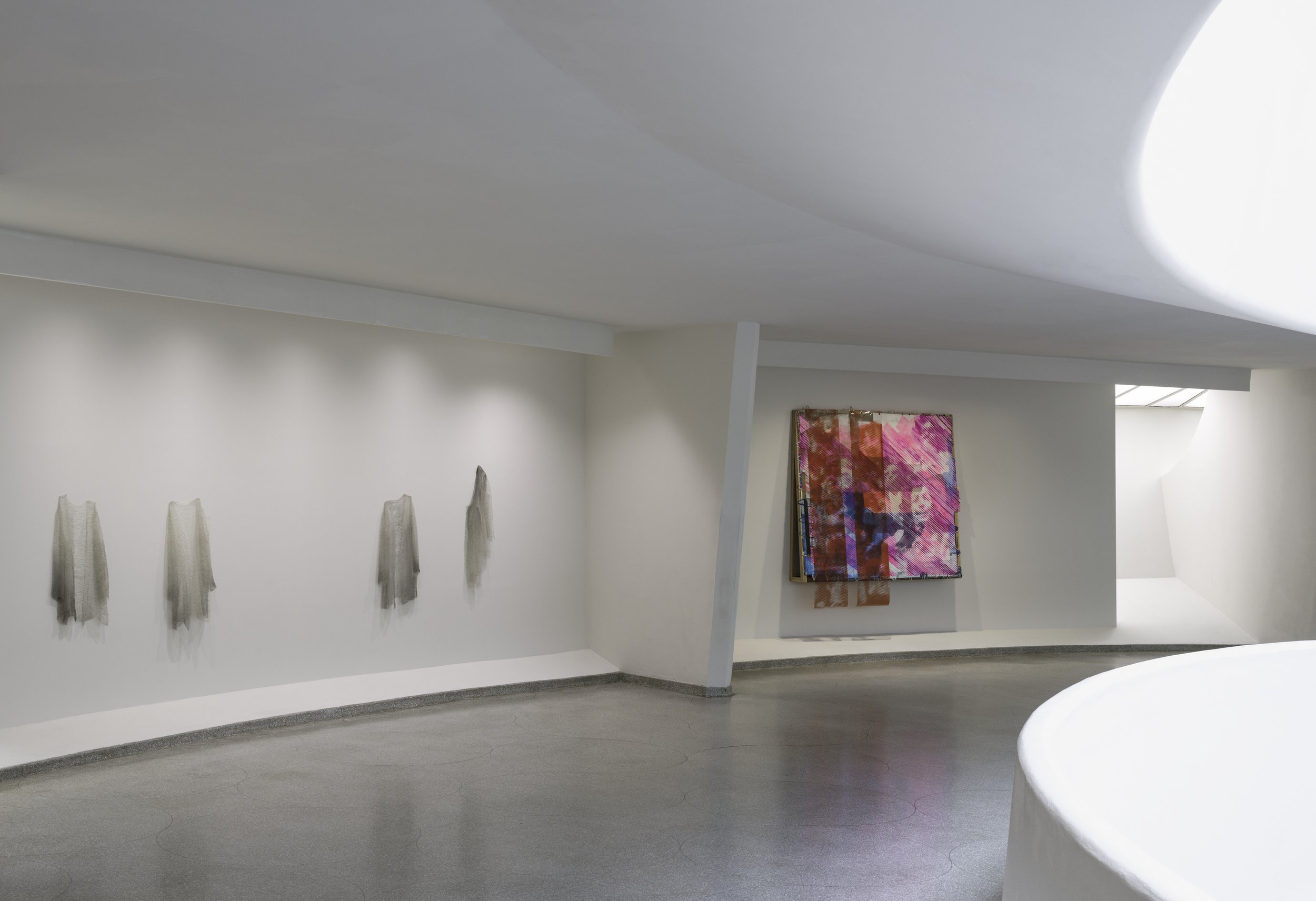

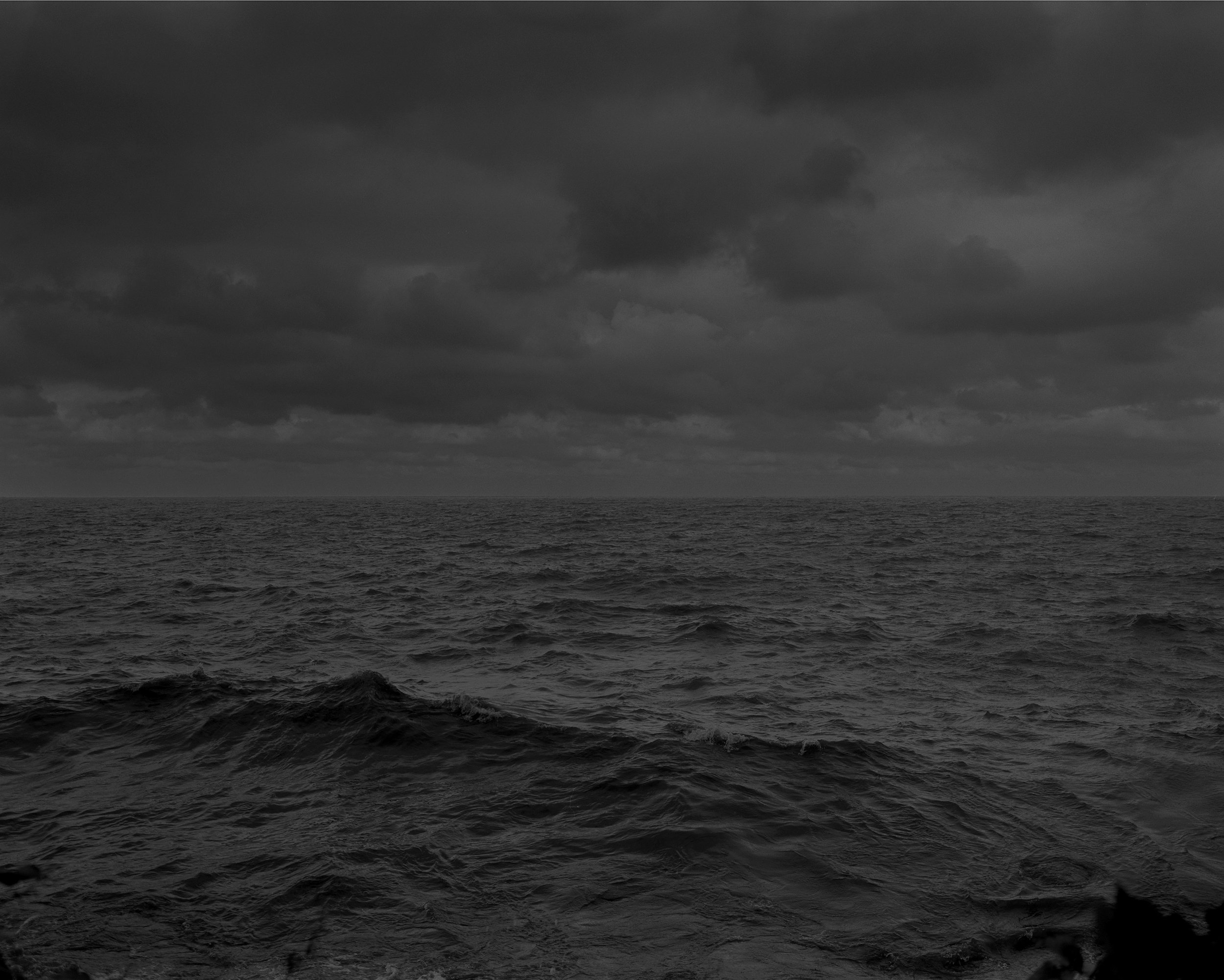
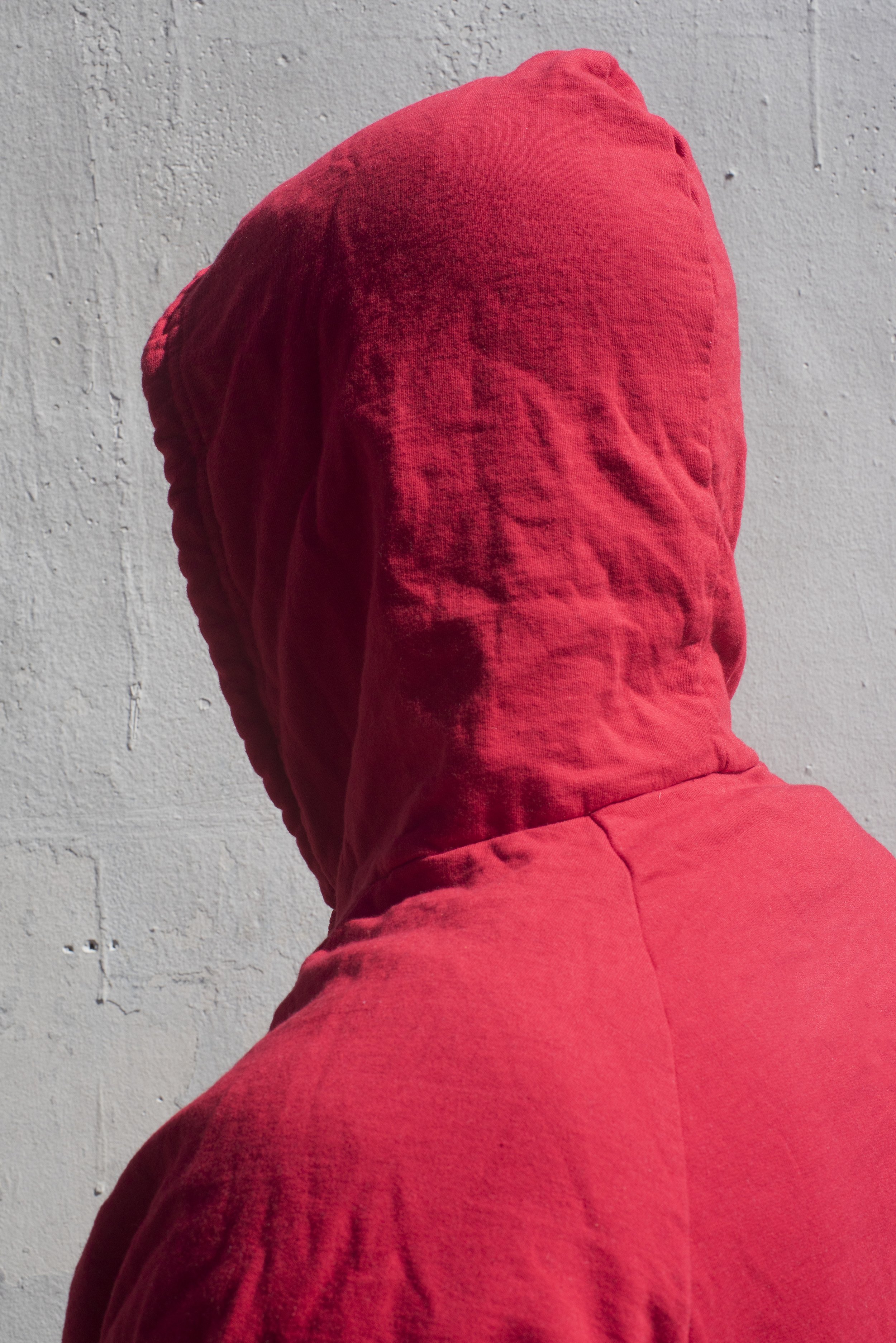
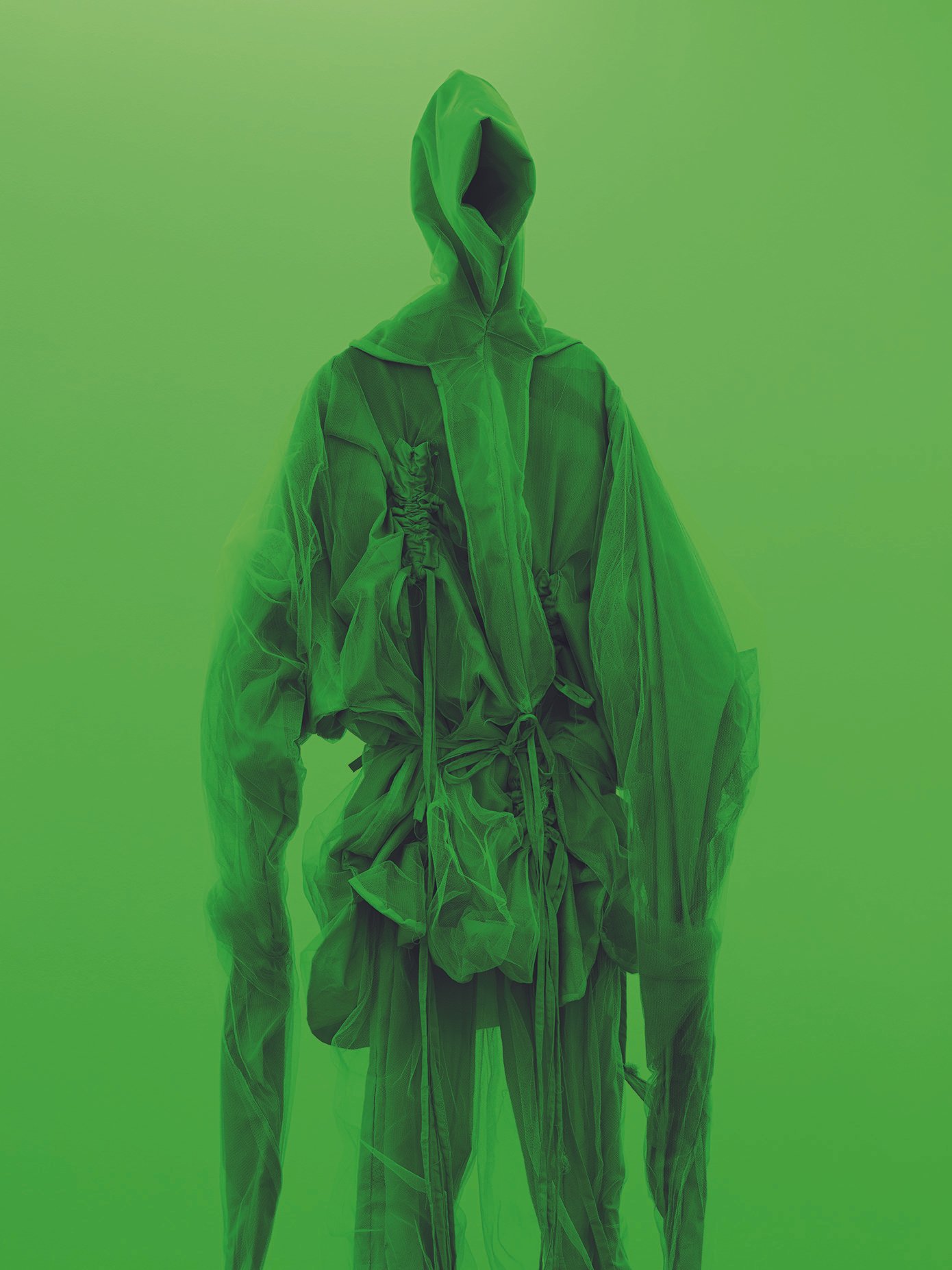
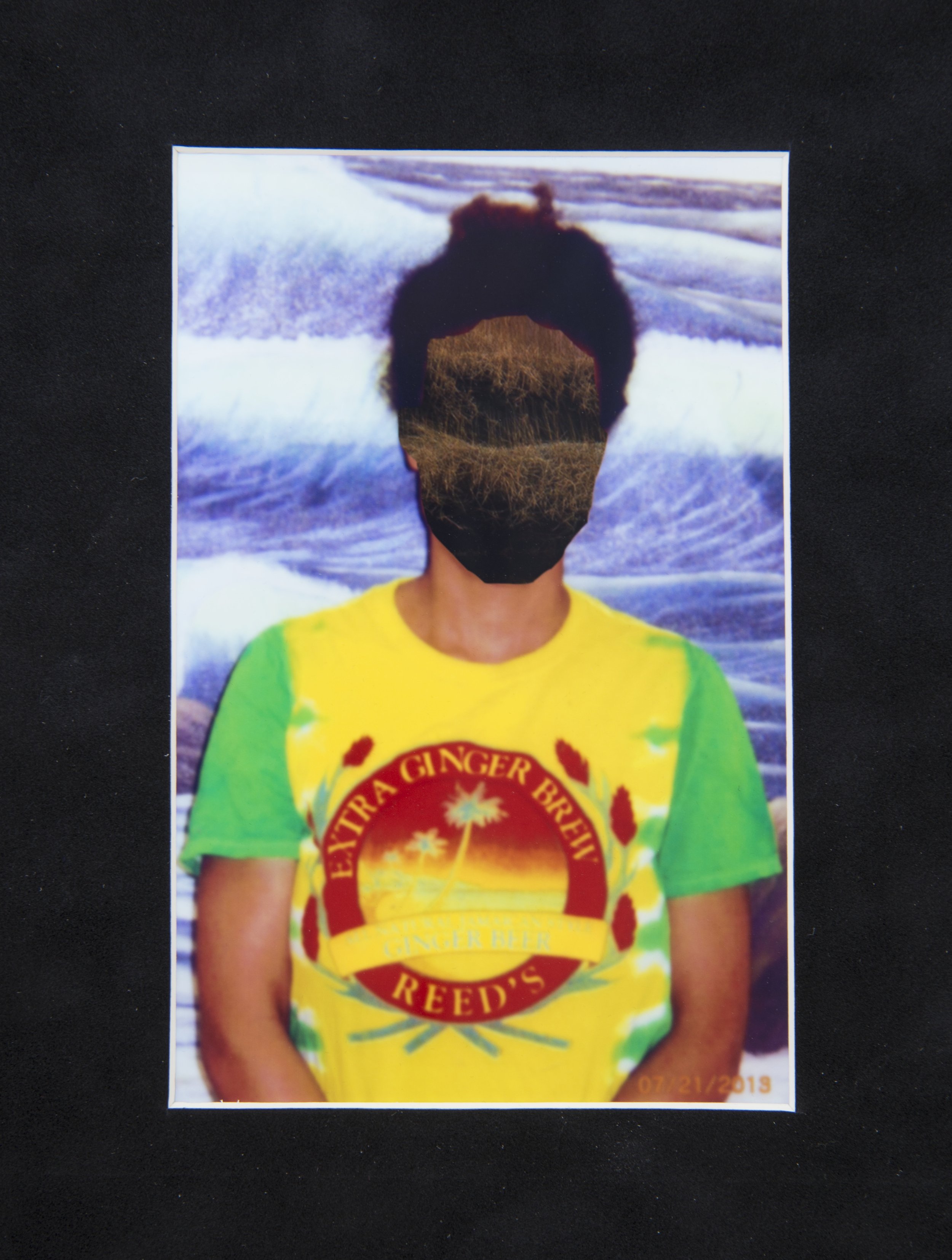
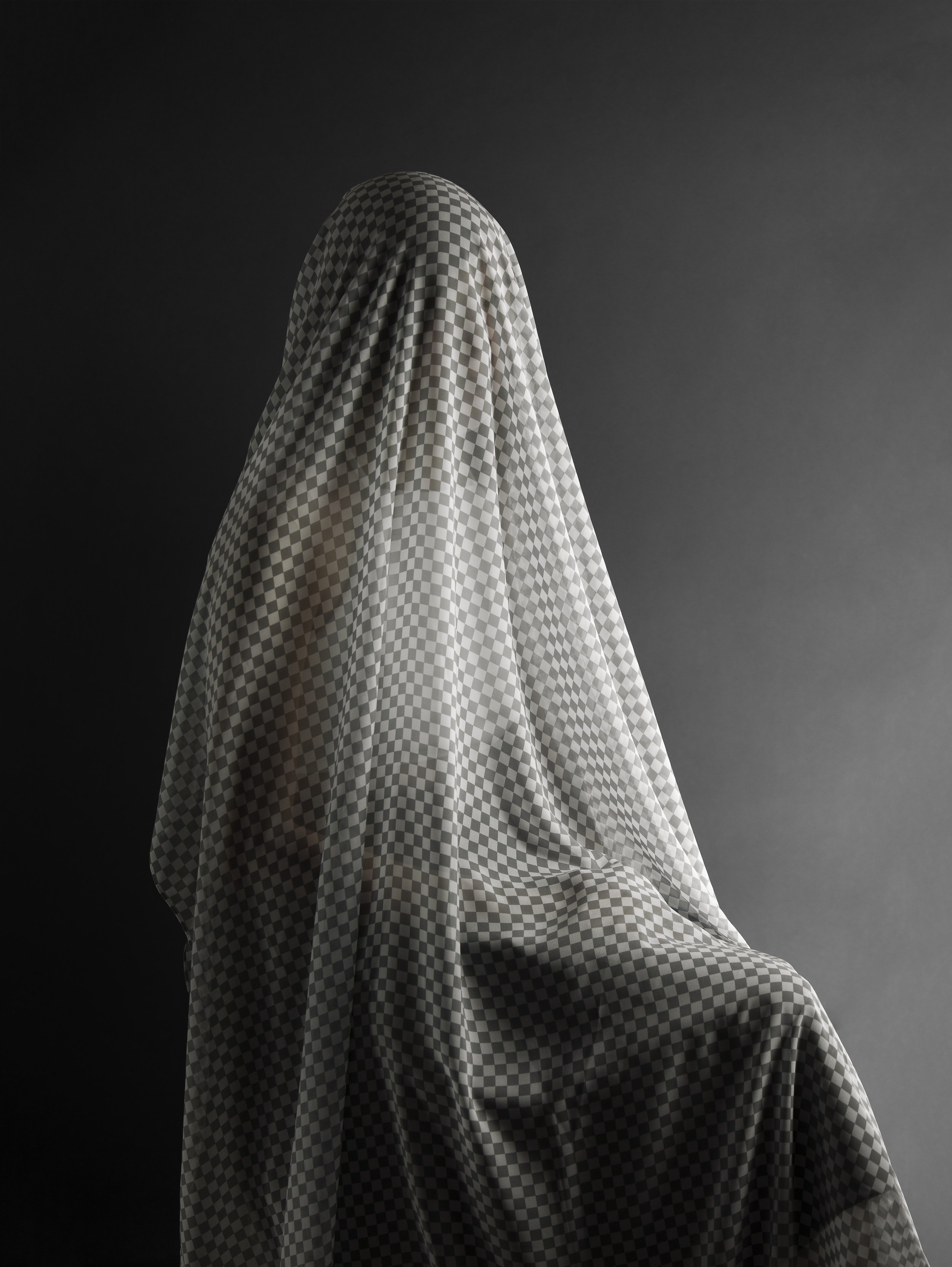
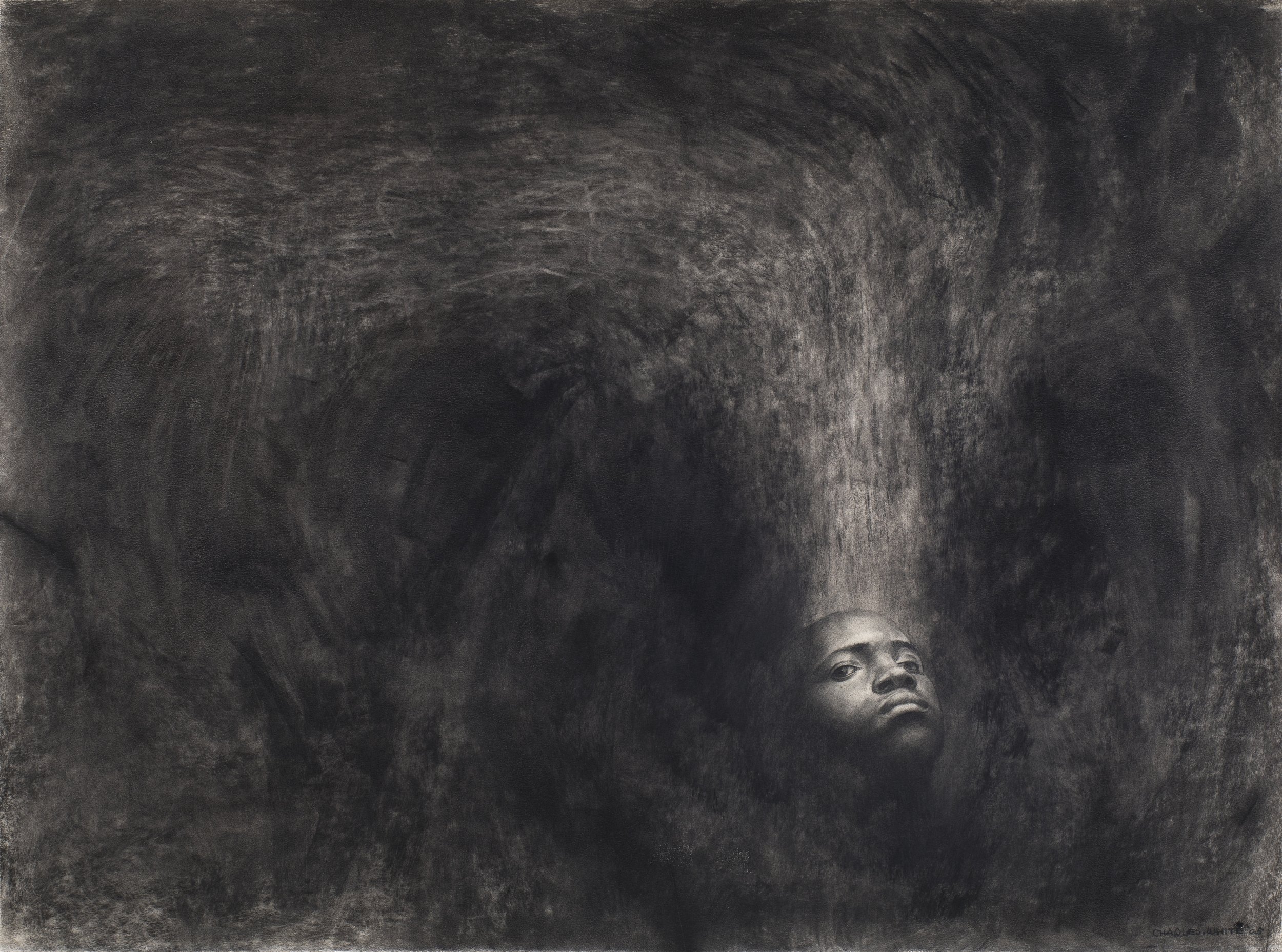
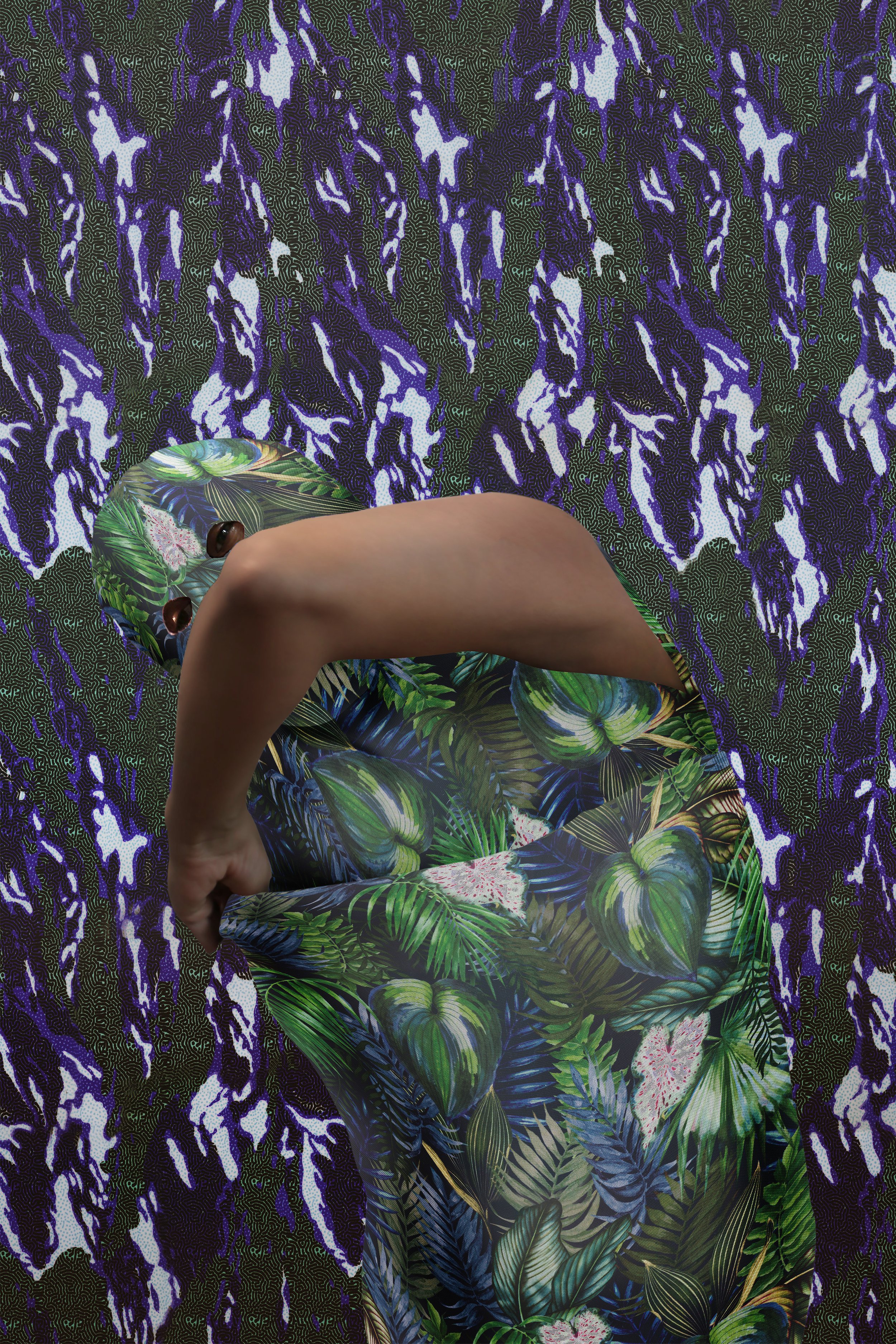
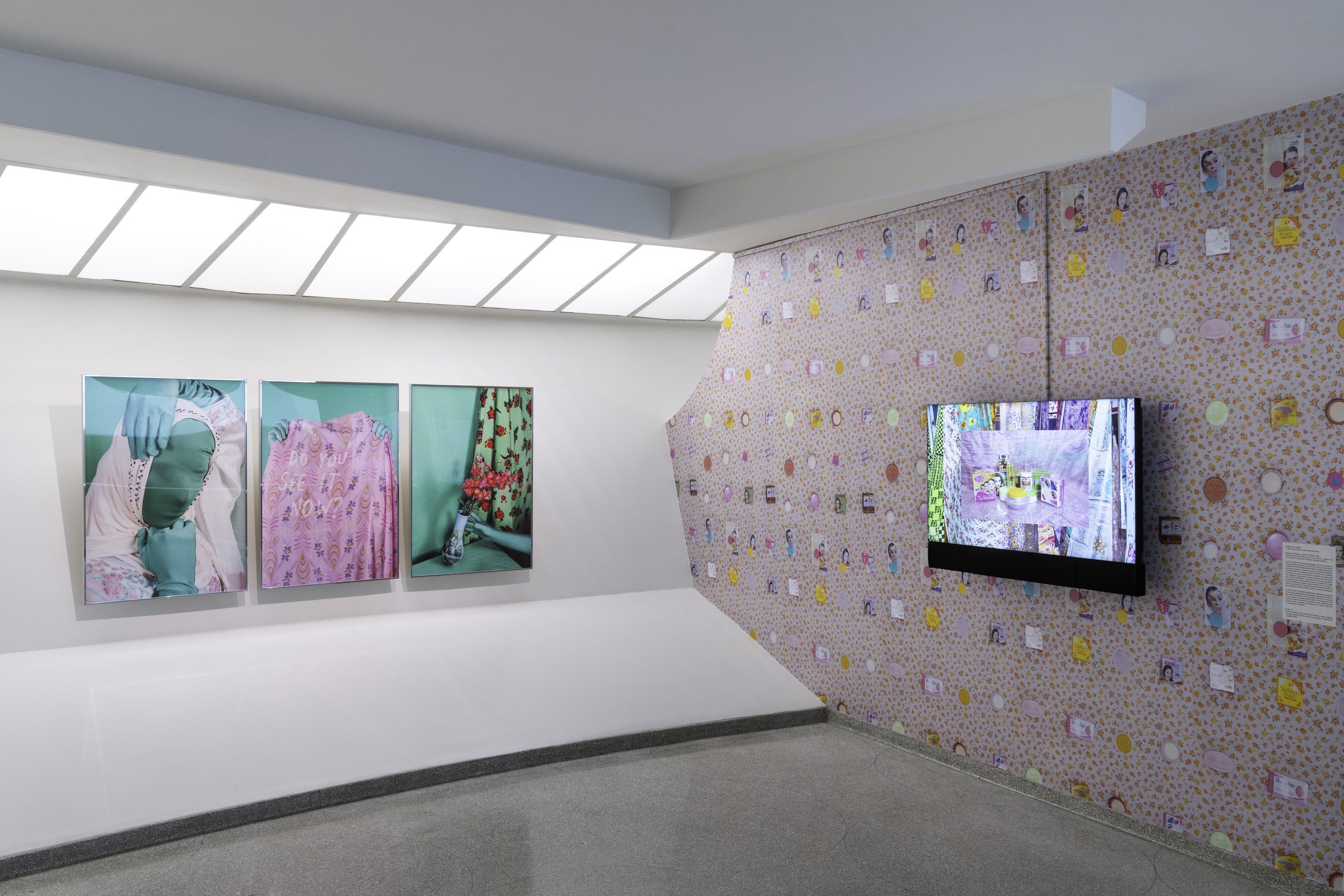
Artist List
American Artist
Kevin Beasley
Rebecca Belmore
Dawoud Bey
John Edmonds
Ellen Gallagher
David Hammons
Lyle Ashton Harris
Tomashi Jackson
Titus Kaphar
Glenn Ligon
Kerry James Marshall
Tiona Nekkia McClodden
Joiri Minaya
Sandra Mujinga
Chris Ofili
Sondra Perry
Farah Al Qasimi
Faith Ringgold
Doris Salcedo
Lorna Simpson
Ming Smith
Sable Elyse Smith
Stephanie Syjuco
Hank Willis Thomas
Wang Shui
Carrie Mae Weems
Charles White
Going Dark: The Contemporary Figure at the Edge of Visibility is organized by Ashley James, Associate Curator, Contemporary Art, with Faith Hunter, Curatorial Assistant.
Support
Major support for Going Dark: The Contemporary Figure at the Edge of Visibility is provided by the Rockefeller Brothers Fund.
The Leadership Committee for this exhibition is gratefully acknowledged for its generosity, with special thanks to Amy and David Abrams, Glenstone Museum, Agnes Gund, Pamela Joyner and Alfred Giuffrida, Noel E.D. Kirnon, Arthur Lewis and Hau Nguyen, Amitha Raman, Jessica and Brian Robinson, ARTNOIR, Elisa Durrette and Ruth McFarlane, Marilyn and Larry Fields, Alteronce Gumby, Miyoung Lee and Neil Simpkins, Bernard I. Lumpkin and Carmine D. Boccuzzi, Suzanne McFayden, Jack Shainman Gallery, and George Wells.
Support is also generously provided by The Andy Warhol Foundation for the Visual Arts, The Henry Luce Foundation, The Kate Cassidy Foundation, The Mondriaan Fund, The Jacques and Natasha Gelman Foundation, and Royal Norwegian Consulate General in New York.
Additional funding is provided by the Solomon R. Guggenheim Museum’s Photography Council and Young Collectors Council.
About the Solomon R. Guggenheim
The Solomon R. Guggenheim Foundation was established in 1937 and is dedicated to promoting the understanding and appreciation of modern and contemporary art through exhibitions, education programs, research initiatives, and publications. The international constellation of museums includes the Solomon R. Guggenheim Museum, New York; the Peggy Guggenheim Collection, Venice; the Guggenheim Museum Bilbao; and the future Guggenheim Abu Dhabi. An architectural icon and “temple of spirit” where radical art and architecture meet, the Solomon R. Guggenheim Museum is now among a group of eight Frank Lloyd Wright structures in the United States recently designated as a UNESCO World Heritage site.
This large-scale exhibition features a multigenerational, multiracial group of artists who address pressing questions around what it means to be seen, not seen, or erased in society, through formal experimentations with the figure and will be on view until April 7th of 2024. To learn more about the museum, this exhibit, past exhibits, current exhibits, upcoming exhibits, and the Guggenheim’s activities around the world, visit here. The museum can also be found on YouTube, TikTok, X, Facebook and Instagram.
WesleyWorld: Works on Paper and Objects 1961–2004
WesleyWorld: Works on Paper and Objects 1961–2004 540 West 25th Street, New York, NY 10001 January 12 – February 24, 2024 Photography courtesy Pace Gallery
New York – Pace Gallery is pleased to present its first exhibition dedicated to the work of John Wesley since the gallery began representing his estate in early 2023. The exhibit has been on view since January 12 and will close on February 24, 2024. Held at Pace’s New York location at 540 West 25th Street in New York, this exhibition brings together over 30 works on paper and painted objects produced by Wesley over the course of his career, from the early 1960s to the early 2000s.
Wesley, who died in 2022 at age 93, is known for his flattened, idiosyncratic figurations that defy easy classification within any single artistic movement. Drawing inspiration from images in comics and other mass media, the artist cultivated a distinctive, graphic style characterized by bold, weighted lines, unmodulated color, and an absurdist- edge.
Concord, 2004 WORK ON PAPER acrylic on paper 18" × 19-3/8" (45.7 cm × 49.2 cm), image 26-5/16" × 27-1/16" × 1-1/2" (66.8 cm × 68.7 cm × 3.8 cm), framed No. 89803 © John Wesley, courtesy of The John Wesley Foundation and Pace Gallery
Marked by eroticism, wry humor, and often a slight sense of unease, Wesley’s work explores a wide range of imagery informed by pop cultural and literary sources as well as the artist’s own memories and daily experiences. Many of his works are concerned with enactments of balance and symmetry, examining nuances of sexuality and desire through a formal language characterized by unexpected crispness and precision.
Untitled (Ducks), 1983 WORK ON PAPER acrylic on paper 39-1/2" × 62-1/2" × 1-1/2" (100.3 cm × 158.8 cm × 3.8 cm), framed No. 86524 © John Wesley, courtesy of The John Wesley Foundation and Pace Gallery
“The puzzling, open-ended ambiguity of Wesley’s depictions encourages expansive gestures of critique, whatever their ultimate merits,” art historian Richard Shiff writes in a newly commissioned essay for Pace Publishing’s digital catalogue accompanying the gallery’s Wesley exhibition. “To a theorist, his art readily demonstrates that interpretation has no limits, for every nuance of graphic difference initiates multiple interpretive threads with the potential to lead just about anywhere.”
Wesley produced a large body of landscapes regularly depicting tranquil shorelines and stormy seascapes, but also rolling hills and urban skylines. In his figurations, the human body and its constituent parts are often used to experiment with repetition as a formal device. Wesley also frequently reimagined characters from popular culture— most notably Dagwood Bumstead and his wife Blondie from the Blondie comic strip—in scenes across his body of work.
“His often caustic wit also has a warm-heartedness to it when the topic demands, and his sense of comedy is no less pronounced than his sense of tragedy,” art historian Martin Hentschel wrote in his 2005 publication on Wesley’s works on paper, continuing later, “He directed his gaze above all to the human condition, with all its peaks, ambiguities, and abysses.”















WesleyWorld: Works on Paper and Objects 1961–2004 540 West 25th Street, New York, NY 10001 January 12 – February 24, 2024 Photography courtesy Pace Gallery
Pace’s exhibition showcases the varied scales of Wesley’s works on paper, allowing visitors to experience the impressive range of form and imagery through which he experimented with repeating, layering, and mirroring—formal mainstays of his paintings. Though the works on view in the show span Wesley’s career, they reveal a remarkable consistency in his approach to image-making over the course of five decades. Tracing the evolution of the artist’s interests over time, these artworks shed light on the different subjects that entered his visual lexicon between the 1960s and 2000s.
Transport des Enfant, 1978 WORK ON PAPER acrylic on paper 19-3/4" × 25-1/2" (50.2 cm × 64.8 cm), paper No. 86528 © John Wesley, courtesy of The John Wesley Foundation and Pace Gallery
The show takes a broad view of Wesley’s life and career, spotlighting several objects by the artist—including a canvas vest and a selection of paper neckties—in addition to his works on paper. These rarely exhibited and, in some cases, never-before-exhibited pieces feature patterns and motifs that are often mirrored in the artist’s works on paper and paintings, reflecting his ability to translate his signature style across mediums and dimensions.
A unique voice in the canon of Contemporary art, John Wesley (b. 1928, Los Angeles, California; d. 2022, New York) is known for his precise, lyrical, and often deadpan painterly investigations of the American subconscious. With no formal artistic training, two of Wesley’s jobs had a direct impact on his early practice. At the age of 24, he began working as an illustrator in the Production Engineering Department at Northrop Aircraft in Los Angeles where he translated blueprints into drawings. In 1960, he moved to New York, where he worked as a postal clerk, utilizing symbols such as the shield-like postage stamp and his employee badge in his paintings. Later, his practice expanded to incorporate varied and enigmatic iconographies such as animals, beguiling women, and portraiture of subjects including Theodore Roosevelt, Rudyard Kipling, and Count Henri de Baillet-Latour, the president of the 1932 International Olympic Committee. Through a carefully refined visual vocabulary of clean lines, solid shapes, and repetition, Wesley imbued everyday scenes and quotidian subjects with humor and wry wit. Exploring themes relating to trauma, eroticism, innocence, and coyness, paintings within his oeuvre are characterized by a linear stylized formation, similar to comic strips, and are often populated with cartoon characters such as Dagwood Bumstead, Popeye, and Olive Oyl. His series, Searching for Bumstead, which he began in 1974 and continued for the entirety of his career, depicts empty interiors—including a vacant armchair, slippers by a bedside, a bathtub filled with water—and is an exploration of the trauma of losing his father, whose sudden death deeply affected him.
I'll Dream you in My Sees, ca. 1965 SCULPTURE duco and oil on canvas on found object (wood lamp) 31" × 29-1/2" × 29-1/2" (78.7 cm ×74.9cm×74.9cm) No. 86556 © John Wesley, courtesy of The John Wesley Foundation and Pace Gallery
Wesley defies categorization as an artist. During the 1960s, as the tenets of Pop art began to take shape, he was grouped with the movement due to the basic elements of his style and subject matter. Wesley exhibited alongside Pop artists such as Andy Warhol, Tom Wesselman, and Roy Lichtenstein but ultimately eluded true categorization both in theory and in practice due to his unique visual language. His first solo exhibition was at the Robert Elkon Gallery, New York, in 1963. Minimalist artist Donald Judd, a lifelong supporter of the artist, reviewed the paintings in the show: “the forms selected and shapes to which they are unobtrusively altered, the order used, and the small details are humorous and goofy. This becomes a cool, psychological oddness.” [1] Wesley was given his own room at the Documenta 5 Retrospective at Kassel (1972) and by the mid 70s it became clear that his work lay somewhere between Pop, Surrealism, and Minimalism, though no label ever encapsulated his singular style. Wesley’s contributions to painting are undeniable. Envisioned by Donald Judd, the largest collection of works by Wesley, spanning from 1963 to the present, are permanently on view in his eponymous gallery at the Chinati Foundation, Marfa, Texas. His work is held in public collections worldwide including the Hirshhorn Museum and Sculpture Garden, Washington D.C.; Kunstmuseum, Basel; The Museum of Modern Art, New York; Speed Art Museum, Louisville, Kentucky; and the Whitney Museum of American Art, New York, among others.
NECKTIES, 1981 SCULPTURE 66" × 22-1/2" × 1-5/8" (167.6 cm ×57.2cm×4.1cm) No. 88989 © John Wesley, courtesy of The John Wesley Foundation and Pace Gallery
Pace is a leading international art gallery representing some of the most influential contemporary artists and estates from the past century, holding decades-long relationships with Alexander Calder, Jean Dubuffet, Barbara Hepworth, Agnes Martin, Louise Nevelson, and Mark Rothko. Pace enjoys a unique U.S. heritage spanning East and West coasts through its early support of artists central to the Abstract Expressionist and Light and Space movements.
Since its founding by Arne Glimcher in 1960, Pace has developed a distinguished legacy as an artist-first gallery that mounts seminal historical and contemporary exhibitions. Under the current leadership of CEO Marc Glimcher, Pace continues to support its artists and share their visionary work with audiences worldwide by remaining at the forefront of innovation. Now in its seventh decade, the gallery advances its mission through a robust global program— comprising exhibitions, artist projects, public installations, institutional collaborations, performances, and interdisciplinary projects. Pace has a legacy in art bookmaking and has published over five hundred titles in close collaboration with artists, with a focus on original scholarship and on introducing new voices to the art historical canon.
Today, Pace has seven locations worldwide, including European footholds in London and Geneva as well as Berlin, where the gallery established an office in 2023. Pace maintains two galleries in New York—its headquarters at 540 West 25th Street, which welcomed almost 120,000 visitors and programmed 20 shows in its first six months, and an adjacent 8,000 sq. ft. exhibition space at 510 West 25th Street. Pace’s long and pioneering history in California includes a gallery in Palo Alto, which was open from 2016 to 2022. Pace’s engagement with Silicon Valley’s technology industry has had a lasting impact on the gallery at a global level, accelerating its initiatives connecting art and technology as well as its work with experiential artists. Pace consolidated its West Coast activity through its flagship in Los Angeles, which opened in 2022. Pace was one of the first international galleries to establish outposts in Asia, where it operates permanent gallery spaces in Hong Kong and Seoul, along with an office and viewing room in Beijing. In spring 2024, Pace will open its first gallery space in Japan in Tokyo’s new Azabudai Hills development.
For more information about this exhibition and others, please visit the Pace Gallery’s website here. Pace Gallery can be found on Instagram and Artsy, too.
Glenn Kaino: Walking with a Tiger
Glenn Kaino: Walking with a Tiger, 540 West 25th Street, New York, NY 10001January 12–February24, 2024 Photography courtesy of Pace Gallery
New York – Pace is pleased to present an exhibition of new work by Glenn Kaino at its 540 West 25th Street gallery in New York. The exhibit opened on January 12 and will close on February 24, 2024. The show, titled Walking with a Tiger, marks Kaino’s first major exhibition with Pace since he joined the gallery’s program in 2021. The presentation will bring together 18 new artworks—including paintings, embroideries, and sculptures—created by the artist this year.
Known for his multidisciplinary, activist-minded practice and collaborative approach to art making, Kaino has explored a wide range of political, social, and environmental issues in his work across mediums. In his paintings, sculptures, installations, performances, films, and monumental public works, the artist examines the roles that empathy and subjectivity can play in dismantling oppressive power structures and effecting real change.
Don't Ruffle Feathers, 2023 MIXED MEDIA, cotton, thread, wood, and metal 36-1/2" × 20-3/4" × 2-1/2" (92.7 cm × 52.7 cm × 6.4 cm), frame 47-1/2" × 20-3/4" × 2- 1/2" (120.7 cm × 52.7 cm × 6.4 cm), overall, No. 90131, © Glenn Kaino, courtesy Pace Gallery
For his first full-scale exhibition with Pace, Kaino will show a selection of deeply personal works centering on his family history and identity as a Japanese-American. With new paintings, embroideries, and sculptures, the artist has, for the first time in his career, turned his gaze inward to his own history, memories, and experiences. Kaino’s decision to engage in this more intimate kind of storytelling—as opposed to the macro-scale social issues he has explored in much of his past work—evolved from Glenn Kaino: Aki’s Market, a multifaceted installation centering on his grandfather’s life in East LA, on view at the Japanese American National Museum in Los Angeles through January 28, 2024. Kaino’s upcoming show in New York addresses these personal concerns with the same rigor, inventiveness, and humor that has defined his approach to art making and scholarship.
Kabuto (Kangol), 2023 SCULPTURE bronze and fabric 10-3/4" × 14-13/16" × 12-3/8" (27.3 cm × 37.6 cm × 31.4 cm), overall No. 90139.01, © Glenn Kaino, courtesy Pace Gallery
Walking with a Tiger raises questions about the Asian-American diaspora, a subject that has been largely ignored in cultural production until very recently, as it relates to the past, present, and future alike. Based on original photography, Kaino’s portraits—including friends, musicians, and individuals he encountered on the streets of LA— are acts of visibility, bringing new representations of Asian-Americans into conversation with one another and foregrounding enactments of intergenerational communion within the exhibition. Through gestural processes of accumulation and erasure, Kaino uses his brushstrokes to partially obscure various features of the paintings’ subjects, suggesting a disruption or slippage in the fabric of time and a tension between the background and fore.
Where You From, 2023 MIXED MEDIA, cotton, thread, wood and metal 12-1/4" × 16" × 2-1/2" (31.1 cm × 40.6 cm × 6.4 cm), each frame, No. 90132, © Glenn Kaino, courtesy Pace Gallery
For the new embroidered works in the exhibition, the artist draws on the history of bunka shishu, Japanese punch embroidery that was popularized in the Japanese-American community during the postwar years as a kind of paint- by-numbers for fiber arts and served, for many, as a link to the past. Departing from the instructions within the kits as he has done in his previous 'Kitbash' works, Kaino has invented a new stitch that he utilizes alongside traditional methods. The threads in these works are long and loose, extending embroidered images of tigers, storks, and Kabuki figures well beyond the confines of the picture plane; in some cases, the artist sews images directly together. Japanese tigers are of particular interest to Kaino as symbolic meditations of a romanticized homeland, given that the creature has become part of Japanese iconography and mythology despite having never been indigenous to the country.
The exhibition will also include a selection of bronze sculptures based on kabuto, a type of helmet used by samurai. In Kaino’s hands, this traditional Japanese armor has been reinterpreted through a contemporary lens. Each of these works is an amalgamation of structures and styles—combining baseball caps or Kangols with futuristic, embellished forms that protrude into space, declaring their Asian-American history by incorporating distinctly American wares. Displayed atop wooden plinths, Kaino’s helmets will also feature decorated interiors composed of kimono fabrics and woven shoelaces from sneakers. These sculptures speak to the ways that the form and design of relics can endure through the ages, generating new meanings and connections by way of the artist's hand.


























Glenn Kaino: Walking with a Tiger, 540 West 25th Street, New York, NY 10001January 12–February24, 2024 Photography courtesy of Pace Gallery
Kaino is the co-curator of the Hammer Museum’s forthcoming Pacific Standard Time exhibition Breath(e): Towards Climate and Social Justice, and his newly commissioned public works for LA’s 6th Street Park and MTA LAX Metro Connector will be unveiled in 2026 and 2024, respectively. Last year, he exhibited his large-scale installation Bridge (Raise Your Voice in Silence) (2021)—a work produced as part of his decade-long collaboration with Olympic track and field athlete Tommie Smith—at Pace’s gallery in New York. He also recently presented a long-term exhibition, In the Light of a Shadow, at MASS MoCA in North Adams, Massachusetts.
Glenn Kaino (b. 1972, Los Angeles, California) is known internationally for his expansive vision and activist-minded practice, which encompasses painting, sculpture, installation, performance, monumental public art, theatrical production, and feature film. Focusing on equity, social justice, and climate change, among other urgent topics, the artist’s work traces through lines among various art historical movements, including Arte Povera, Conceptualism, and performance art. A relentless optimist, Kaino creates work imbued with hope, revealing structures of power and domination and creating opportunities for direct action and progress, all rooted in the belief that cultural production can affect real change. Kaino often highlights the illusionistic and mesmeric effects of scientific and natural phenomena in his large-scale installations to explore notions of empathy and subjectivity and to bring legibility to the often-invisible forces that shape our world.
Pace is a leading international art gallery representing some of the most influential contemporary artists and estates from the past century, holding decades-long relationships with Alexander Calder, Jean Dubuffet, Barbara Hepworth, Agnes Martin, Louise Nevelson, and Mark Rothko. Pace enjoys a unique U.S. heritage spanning East and West coasts through its early support of artists central to the Abstract Expressionist and Light and Space movements.
Since its founding by Arne Glimcher in 1960, Pace has developed a distinguished legacy as an artist-first gallery that mounts seminal historical and contemporary exhibitions. Under the current leadership of CEO Marc Glimcher, Pace continues to support its artists and share their visionary work with audiences worldwide by remaining at the forefront of innovation. Now in its seventh decade, the gallery advances its mission through a robust global program— comprising exhibitions, artist projects, public installations, institutional collaborations, performances, and interdisciplinary projects. Pace has a legacy in art bookmaking and has published over five hundred titles in close collaboration with artists, with a focus on original scholarship and on introducing new voices to the art historical canon.
Today, Pace has seven locations worldwide, including European footholds in London and Geneva as well as Berlin, where the gallery established an office in 2023. Pace maintains two galleries in New York—its headquarters at 540 West 25th Street, which welcomed almost 120,000 visitors and programmed 20 shows in its first six months, and an adjacent 8,000 sq. ft. exhibition space at 510 West 25th Street. Pace’s long and pioneering history in California includes a gallery in Palo Alto, which was open from 2016 to 2022. Pace’s engagement with Silicon Valley’s technology industry has had a lasting impact on the gallery at a global level, accelerating its initiatives connecting art and technology as well as its work with experiential artists. Pace consolidated its West Coast activity through its flagship in Los Angeles, which opened in 2022. Pace was one of the first international galleries to establish outposts in Asia, where it operates permanent gallery spaces in Hong Kong and Seoul, along with an office and viewing room in Beijing. In spring 2024, Pace will open its first gallery space in Japan in Tokyo’s new Azabudai Hills development.
For more information about this exhibition and others, please visit the Pace Gallery’s website here. Pace Gallery can be found on Instagram and Artsy, too.
Albano Afonso:Fora de Registro
Installation views: “Fora de Registro,” Casa Triângulo São Paulo, Brazil, 2024, courtesy of Casa Triângulo São Paulo, Brazil Photo Credit: Filipe Berndt
Casa Triângulo, with delight, presented to Fora de Registro, Albano Afonso's (1964, São Paulo, Brazil). His eleventh solo exhibition at the gallery opened on November 11, 2023, and will close on February the 3rd of, 2024.
Thoughts on Fora de Registro by Eder Chiodetto
Whenever we contemplate something, engaging with a specific object or subject, we do so out of a desire to internalize the significations and broader meanings of an occurrence, a landscape, a person, an object, a gesture, or even a work of art. These meanings are indeed broader, because when a certain referent appeals to a degree that we subject it to a more detailed visual scrutiny, it's not only the faculty of vision that we put into action for this prolonged moment. Within the duration of that moment, a co-relation between the self and the other is established, in which other senses are soon called into play.
We can infer that contemplating is a way of perceiving the target of our interest beyond its appearance. It is an adventure in which our sensory streams are enlisted to produce an enhanced sort of vision that is able to investigate, both thoroughly and gently, the interstices, nuances, and gaps of this referent that is drawing us to it. To a large extent, it is also a dialogic perceptive gaze, since to unveil the latent meanings of the other, or of something, we are necessarily also looking into ourselves, letting our mood, our intellect, and our unconscious react freely with this enjoyment.
O Sono 01, 2023 Inkjet printing on Hahnemühle Photo Rag Baryta paper Edition: unique + 3 + 1 PA 89 x 119 cm Courtesy Casa Triângulo, São Paulo Photographer Credit: Albano Afonso
Thus, all contemplation is also an enhanced mode of vision that takes place not only from the eyes outward, but also inward, into ourselves. When this circuit is put into operation, we are close to a meditative state.
Photography is the sphinx of a contemplation. A monument built by the effects of light striking a photosensitive surface, tasked with generating the simulacrum of a contemplation that the photographer believed should be made permanent. As researcher and photographer Boris Kossoy has said, a photograph reveals not the reality of the moment of capture, but a second reality, the reality of the two-dimensional printed surface, subject to being organically and symbolically altered in its temporal journey towards infinity.
Could, therefore, a photographic record give rise to the potential of the contemplative ecstasy that originated it? Or, could a photograph itself be the trigger of this enchantment, exchanging the experience of the lost instant for the contemplation of the very medium that contains it?
Still Life 02, 2023 Inkjet printing on Hahnemühle Photo Rag Baryta paper Edition: unique + 3 + 1 PA 40 x 48,5 cm Courtesy Casa Triângulo, São Paulo Photographer Credit: Albano Afonso
Thoughts like these arise when we observe the new photographic series by Albano Afonso. Fora de Registro [Out of Register] is created by means of technical and poetic strategies that generate a sort of illusory seismic shock where we seem to be seeing the photographed thing and not simply an image printed on a surface. The idea of photography as a window that magically dislodges us from our space-time is refuted in the artist’s metalinguistic proposal.
The artist overlays several images made in sequence and rearranges them so that the representation of the referent is “out of register,” which is printmaking jargon for when the several plates used for printing the various colors that form the image are not aligned, resulting in a blurred effect. This approach, along with other creative techniques, transforms the photographs, taking them beyond being merely passive camera reproductions.
By subjecting the images to this process, Albano Afonso seems to be echoing René Magritte’s iconic statement, in this case suggesting: This is not a bouquet of flowers, it is a photograph. By disrupting our mind's tendency to wander, preventing the illusion offered by photographic mimesis, the artist peels back the mirror-like play of the representational system, placing us in front of these photographs, which intentionally fail in their attempt to be a mirage.
A failure can also be the trigger that leads us to contemplation. If the sphinxes that appeal to me in these images are no longer the bouquet of flowers, the work of art, or a constellation, then what is it that keeps me connected to them?
Albano leads us to look at photographs as if they were... almost photographs. Bereft of the illusory mimetic game, of their power of mirage that brings us to past times and spaces, these photographs have no aim to lead us to any place beyond them. They are no longer merely a support, nor a passport.
Still Life 03, 2023 Inkjet printing on Hahnemühle, Photo Rag Baryta paper Edition: unique + 3 + 1 PA 52 x 62,5 cm, Courtesy Casa Triângulo, São Paulo Photographer Credit: Albano Afonso
The contemplation now takes place in the materiality of the photographic copy itself, and in Fora de Registro, these images seem imbued with an irrepressible desire to be a sculptural event. After all the strategies the artist set into motion, what remains before us is not the fabulous promise of photography, but rather its structure; the center of our speculation is no longer somewhere beyond it, it is the material medium itself.
In this operation, the image is no longer the promise of anything; it becomes an exposed fracture, a relic. We are therefore contemplating the failure of a promise, and thus, we are finally led to see the framework, the constitutive elements of a collapsed image, rather than an image as a whole.






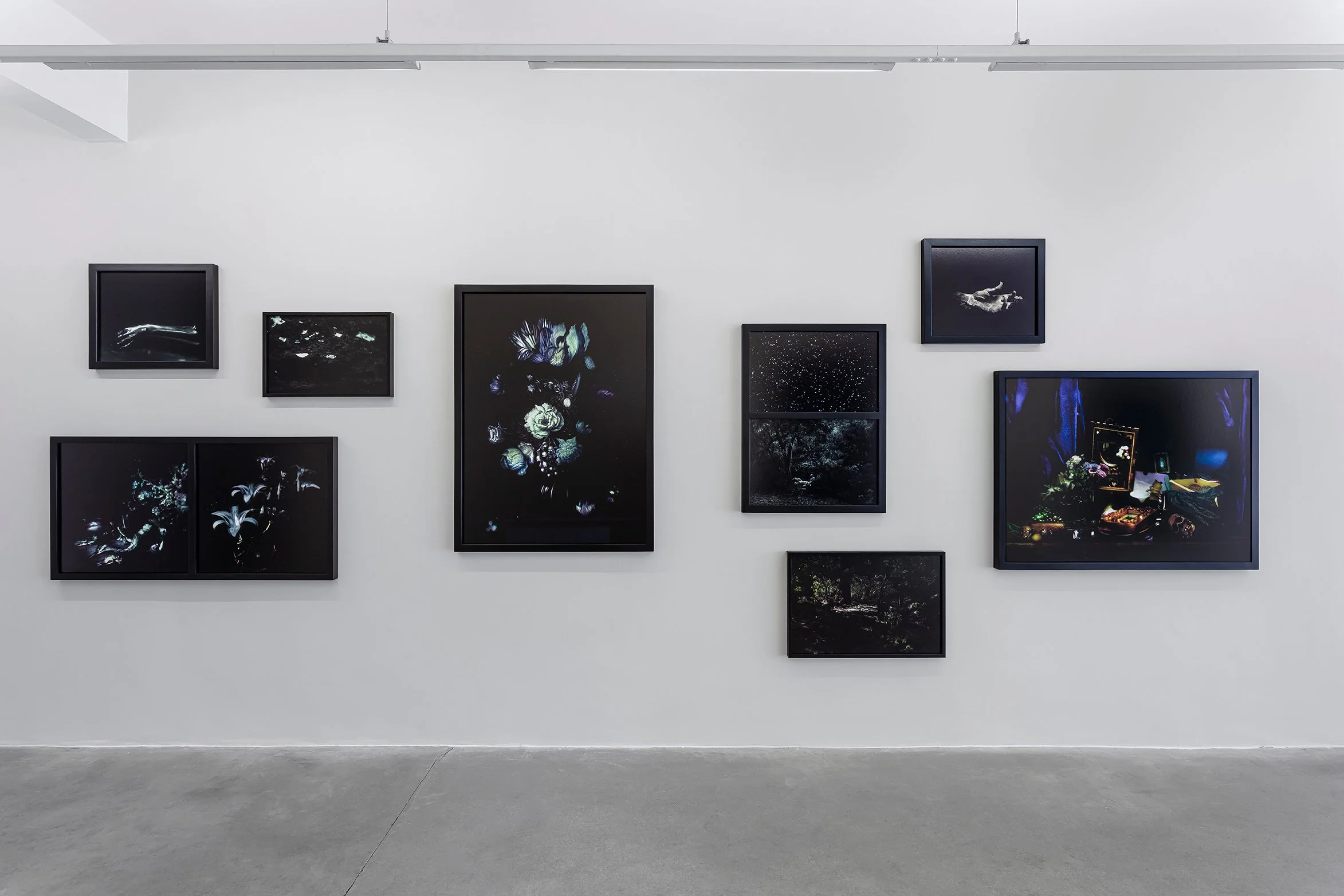

Installation views: “Fora de Registro,” Casa Triângulo São Paulo, Brazil, 2024, courtesy of Casa Triângulo São Paulo, Brazil Photo Credit: Filipe Berndt
Fora de Registro marks Albano Afonso’s triumphant return to the entrails of the photographic, in his selfless project of speculating about the realm of technical images and the effects they have on our perception. In his career, the artist has already investigated the image-imagination dyad from various standpoints: projection, movement, the genesis that forms the image, the brightness that reveals even as it blinds, etc. Now, the artist is passionately engaged in the possibility of contemplating the raw language, photography in a state of suspension, self-analyzing its place in a world dominated by assertive algorithms that disorient us to the point where, for better or worse, realities and fables overlap, leaving no traces that would allow us to understand where and why they emerge before us. This clearly involves a timely political thrust, as the artist sounds an alert about the hypnotic effect of the nature of the photographic image.
Deactivating the illusion also contributes to a more critical and less dogmatic point of view. Albano unveils this possibility by presenting photography as a sovereign body vibrating intensely before our eyes. Photographs that begin and end in themselves. Monuments that have shed their false heroes.
For more information about the exhibit Out of Register and Other exhibitions at Casa Triângulo, please visit their website and follow the gallery on Instagram and Facebook. Casa Triângulo can also be found on Artsy.
ALIOUNE DIAGNE:SEEDE
Toutes les images / All images : © Courtesy of the artist and TEMPLON, Paris —Brussels — New York
For his very first exhibition at Galerie Templon’s Paris space, painter Alioune Diagne, who is representing his country on the Senegalese Pavilion at the Venice Biennale in 2024, is showing a selection of eight paintings on the theme of clandestine crossings at sea. The Templon Gallery is pleased to have this exhibition, which opened on January 6th and will close on the 24th of February this year.
Destination inconnue, 2023 Acrylique sur toile | Acrylic on canvas 100 × 130 cm — 39 1/4 × 51 1/4 in Photo © Adrien Millot
Alioune Diagne uses a technique he developed and has gradually perfected where small modules, which he calls “unconscious signs”, cluster together to form a coherent figurative mass. He uses a complex process based on these signs, reminiscent of forgotten calligraphy, to create dynamic paintings that depict daily life in Senegal as well as the everyday experiences of the African diaspora around the world.
For Seede, which means “the witness” in Wolof, Diagne spent several weeks visiting the Senegal coastline. His canvases echo the stories of local fisherman who, equipped only with a pirogue and a net to do their work, are seeing growing foreign industrialisation of the fishing business. As Alioune Diagne explains: “To survive, some of them have had to abandon their traditional skills and resort to the illegal practice of people smuggling.”








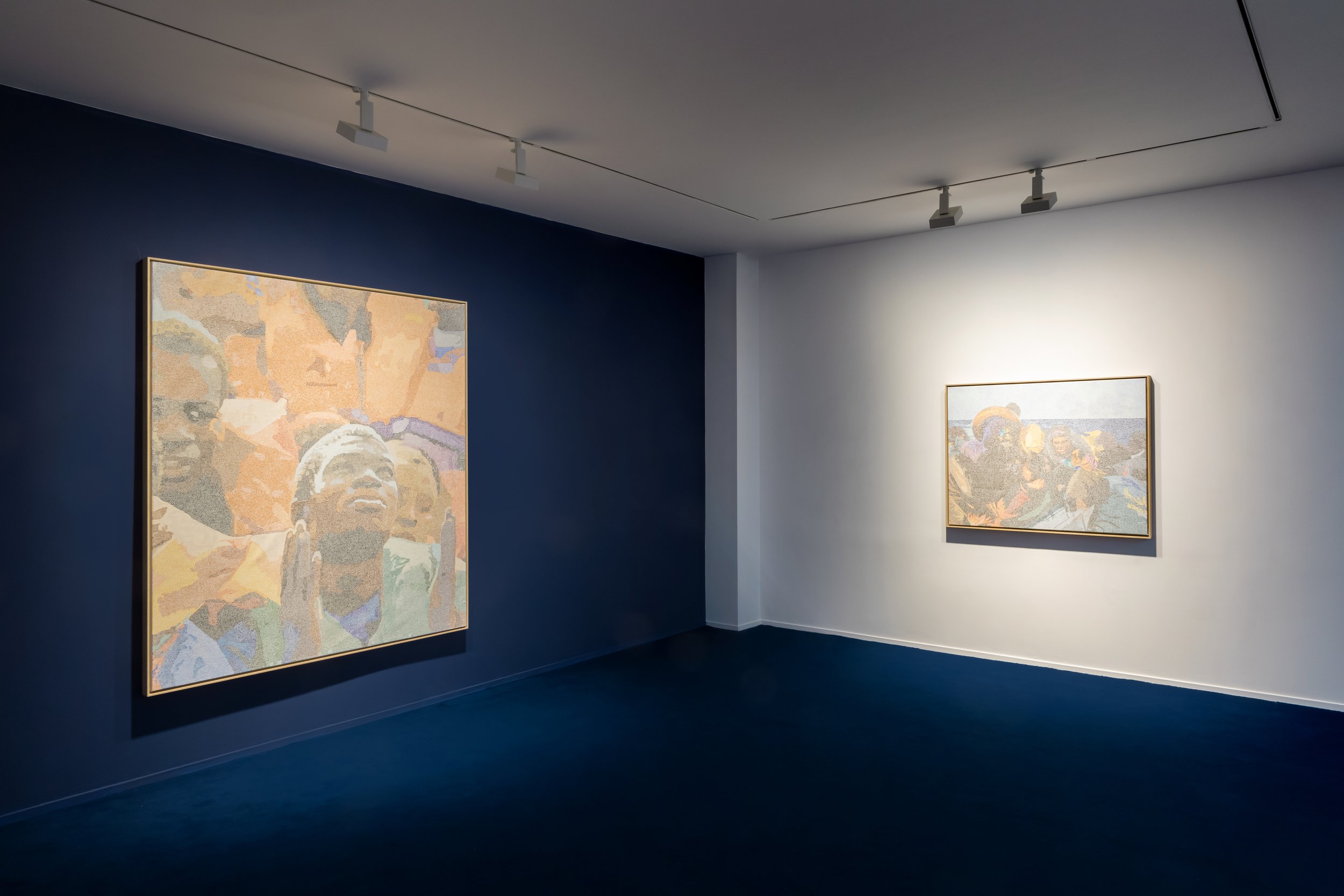





Toutes les images / All images : © Courtesy of the artist and TEMPLON, Paris —Brussels — New York
The deep blue colour and handful of fishing nets covering the walls and floor of the Paris space give the exhibition an immersive not to say dramatic feel. “These are subjects I want to talk about,” says the artisti. “Emigration is still a painful reality today. Up till now, people only envisaged living a successful life in Europe or the USA. I want to show the younger generations that it’s possible to have a future in Africa.”
Toutes les images / All images : © Courtesy of the artist and TEMPLON, Paris —Brussels — New York
Born in 1985 in Kaffrine, Senegal, Alioune Diagne lives and works in Senegal and France. After studying at the Dakar Ecole des Beaux-Arts in 2008, Alioune Diagne developed “figuro-abstro”, an imaginary script, universal language and intimate account of fragments of his private life in Dakar and on his travels. He is a socially engaged artist, paving the way for a deep-seated exploration of the major challenges facing today's world: ecology, the place of women in society, racism, and the notions of transmission and heritage. His work has featured in a variety of solo and group exhibitions in Europe, Africa and Asia, including Sink or Swim at the 11th Dakar Biennale, Villa Spivey, Dakar, Senegal (2014), Itinéraire en Couleurs at Espace Jean Drevon, Saint-Jean-de-Bournay, France (2014), the off-site show at Art Basel, Switzerland (2017), Un nouveau regard,
Aosta, Italy (2017) and Ndox-Glint at the Rouen Musée des Beaux-Arts (2023). His work has also been part of the national art collection of Senegal since 2019 and was exhibited at the national theatre in Dakar for the 2022 Dakar biennale. In April 2024, the artist will have the honour of representing his country on the Senegalese Pavilion at the 60th Art Biennale International Art Exhibition in Venice. He has been represented by Galerie Templon since 2022 and Seede will be his second solo exhibition with the gallery.
For more information about this exhibition and others, please visit the Templon Gallery’s website here.
JANET CARDIFF& GEORGE BURES MILLER Ambient Jukebox & Other Stories
Ambient Jukebox, 2023 interactive jukebox with tracks of ambient guitar music composed by the artists © Janet Cardiff and George Bures Miller, courtesy Fraenkel Gallery, San Francisco, and Luhring Augustine, New York
Ambient Jukebox & Other Stories, is an exhibition of new work by multidisciplinary artists Janet Cardiff and George Bures Miller at the Fraenkel Gallery. The exhibit opened On January 11th and featured a public reception with the artists that took place on Saturday, January 13, from 2-4 pm.. This will be the artists’ second solo exhibition with the gallery since 2018. The exhibition closes on March 9, 2024.
Cosmic Disco, 2024 mirror balls, acrylic paint, rotating motors, DMX lights, chains & miscellaneous hardware © Janet Cardiff and George Bures Miller, courtesy Fraenkel Gallery, San Francisco, and Luhring Augustine, New York
Atmospheric, dreamlike, and theatrical, the duo’s work often explores how sound affects perception. In Cosmic Disco, tiny points of light reflected from altered mirrorballs fill a darkened room to create the illusion of slowly moving galaxies, accompanied by a soundtrack drawn from recordings of planets and moons made by NASA’s Voyager I and II. The piece immerses viewers in illusory reflections and otherworldly sounds, encouraging contemplation of the universe and humans’ place in it. In another room, Ambient Jukebox repurposes a familiar-looking 1960s jukebox. Rather than playing pop hits, it has been reprogrammed to spin drone-like tunes created by Bures Miller during the disorienting months of the global pandemic. As in many of their pieces, Cardiff and Bures Miller invite the viewer to activate the piece—selecting the tracks creates a singular experience of the work and transforms the iconic object into something unfamiliar and surprising.
Pack Up Your Troubles, 2024 gramophone horn, suitcase, electronics, audio accompanied by artists certificate © Janet Cardiff and George Bures Miller, courtesy Fraenkel Gallery, San Francisco, and Luhring Augustine, New York.
A range of more intimate works populate the third gallery. Combining paintings, found materials, soundtracks, and audio musings, these works explore the ways in which narrative, music, and sound influence the viewer’s interpretation of visual elements. Playful sculptural collages, made in part from studio scraps left over from earlier works, are inspired by constructivist ideas. In one, a collage made from rough wooden shapes, pieces of torn paper, and a tuft of blonde hair spins on a round pedestal as speakers play a hypnotic soundtrack of layered voices. Other works juxtapose moody oil paintings with fragments of found text, exploring the power of words even when inaudible.
Suitcase theater, 2000-23 mixed media & air-dry clay, suitcase, smart phone, charger, clamp, wooden shelf © Janet Cardiff and George Bures Miller, courtesy Fraenkel Gallery, San Francisco, and Luhring Augustine, New York
Suitcases appear in several works. A vintage suitcase is transformed into a theater, replete with curiously crafted doll-like characters and a range of scenarios that play on a small screen facing the ‘stage.’ Another suitcase is modified with a gramophone speaker through which Cardiff’s dreamlike voice quavers the World War I marching song Pack Up Your Troubles in Your Old Kit Bag, and Smile, Smile, Smile by George and Felix Powell, a song which in time has been sung by forces on all sides of many conflicts.
Dream Vacuum, 2021 mixed media with sound & electronics © Janet Cardiff and George Bures Miller, courtesy Fraenkel Gallery, San Francisco, and Luhring Augustine, New York
Janet Cardiff and George Bures Miller recently opened the Cardiff Miller Art Warehouse in Enderby, British Columbia, a venue that showcases their immersive large-scale installations. The Killing Machine, an automated installation inspired in part by Franz Kafka’s story In the Penal Colony, is featured in the exhibition Kafka: 1924 at Villa Stuck in Munich, Germany, on view until February 11, 2024. Their solo survey exhibition Dream Machines was recently on view at Museum Tinguely in Basel, Switzerland, following its premiere at Lehmbruck Museum in Duisburg, Germany. The exhibition was organized in honor of the Wilhelm Lehmbruck Prize, which was awarded to the pair in 2020. Cardiff’s celebrated sound sculpture Forty-Part Motet is on view in ongoing exhibitions at the National Gallery of Canada in Ottawa, and Inhotim in Brumadinho, Brazil.
Doppler Dance, 2023 mixed media, electronics, audio, motor, battery, wooden pedestal accompanied by artists certificate © Janet Cardiff and George Bures Miller, courtesy Fraenkel Gallery, San Francisco, and Luhring Augustine, New York
Their work has been shown in the Metropolitan Museum of Art, New York; MoMA PS1, New York; National Gallery of Canada, Ottawa; Nelson Atkins Museum of Art, Kansas City, Missouri; Moderna Museet, Stockholm; San Francisco Museum of Modern Art; and Tate Modern, London, among many others. Their work is in the collections of public institutions, including the Corcoran Gallery of Art, Washington, D.C.; Dallas Museum of Art, Dallas, Texas; Hirshhorn Museum and Sculpture Garden, Washington, D.C.; San Francisco Museum of Modern Art, and others. In 2011 they received Germany’s Käthe Kollwitz Prize, and in 2001, represented Canada at the 49th Venice Biennale, for which they received the Premio Speciale and the Benesse Prize.
For more information about this exhibition or others, please visit the Fraenkel Gallery’s website.
MOCA Focus: Eddie Rodolfo Aparicio
Installation view of MOCA Focus: Eddie Rodolfo Aparicio, November 12, 2023–June 16, 2024 at The Geffen Contemporary at MOCA. Courtesy of The Museum of Contemporary Art (MOCA). Photo by Jeff McLane.
LOS ANGELES—The Museum of Contemporary Art (MOCA) presented MOCA Focus: Eddie Rodolfo Aparicio on November 12, 2023, and will conclude on June 16, 2024, at The Geffen Contemporary at MOCA. This is the first solo museum exhibition for Los Angeles–based artist Eddie Rodolfo Aparicio (b. 1990, Los Angeles), the exhibition explores Aparicio’s engagements with the Salvadoran communities in which he was raised, his formal experimentation with natural materials–including rubber, amber, glass, and clay–and his approach to social justice as a form of ecological justice.
MOCA Focus: Eddie Rodolfo Aparicio features artworks dating from 2016 to the present and includes the debut of three new sculptures specially commissioned for The Geffen Contemporary. Organized by Curator Anna Katz with Curatorial Assistant Anastasia Kahn, the exhibition marks the relaunch of the MOCA Focus series, which presents an artist’s first solo museum show in Los Angeles and centers on new or discrete bodies of work.
“We are delighted to relaunch the museum’s esteemed MOCA Focus series with an ambitious exhibition highlighting key elements of Eddie Rodolfo Aparicio’s prolific practice, which often explores the interconnections between Central America and Los Angeles,” said Johanna Burton, The Maurice Marciano Director. “Between the 1990s and mid-2000s, the historic MOCA Focus exhibition program was central to MOCA’s mission to champion the art of our time and our identity as the only artist-founded museum in L.A. We are thrilled to reaffirm our dedication to providing artists with vital opportunities to collaborate with curators, exhibition specialists, and educators in the development, presentation, and interpretation of their work. With his ceaselessly imaginative and ambitious approach, Aparicio embodies the essence of Los Angeles, his birthplace, and brings forth a distinctive and original perspective at this auspicious stage in his career.”
For this MOCA Focus presentation, Aparicio debuted three sculptures commissioned by MOCA and installed throughout a 3,500-square-foot gallery at The Geffen Contemporary. Two are primarily composed of prefossilized amber, a naturally occurring tree resin, and extend Aparicio’s project of reckoning his art with his heritage in the context of Salvadoran Civil War (1979–92) and the subsequent mass migration of Central American refugees to Los Angeles. Sepultura de semillas (Epitafio para la tumba de Adolfo Báez Bone), 2021– 23, resembles amber boulders embedded with sundry objects Aparicio gathered from the neighborhoods in Los Angeles— cigarettes, car parts, dishware, twigs, leaves, and other bits of flotsam and jetsam—as well as archival documents related to the Central American solidarity movement. The site-specific installation 601ft2 para El Playon / 601 sq. ft. for El Playon (2023) will be created by pouring liquid amber onto the floor, where it will solidify into a shape evoking El Salvador’s El Playon lava field. The work also includes facsimiles of documents from the nonprofit Central American Resource Center (CARECEN).
“Aparicio deploys a wide range of natural materials and found objects to give shape to lived experiences of diaspora and solidarity often left out of the official historical record,” said Katz. “Deeply rooted in the visual and cultural character of Los Angeles, Aparicio’s work creates counter-archives of the communities he grew up in and implores us to consider the most critical issues of our city and our moment–from political speech to the immigration crisis–according to long arcs of nature and history.”
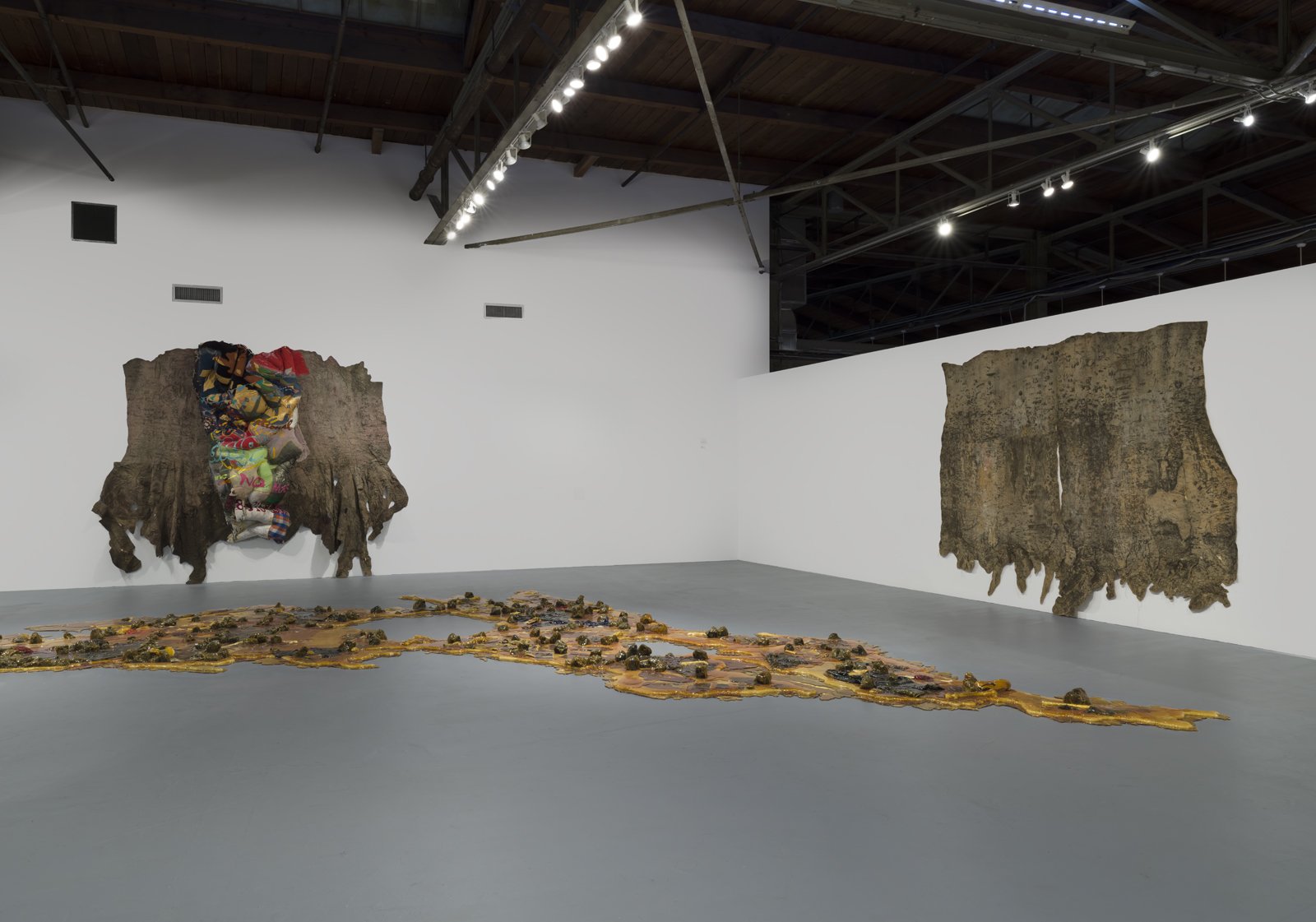

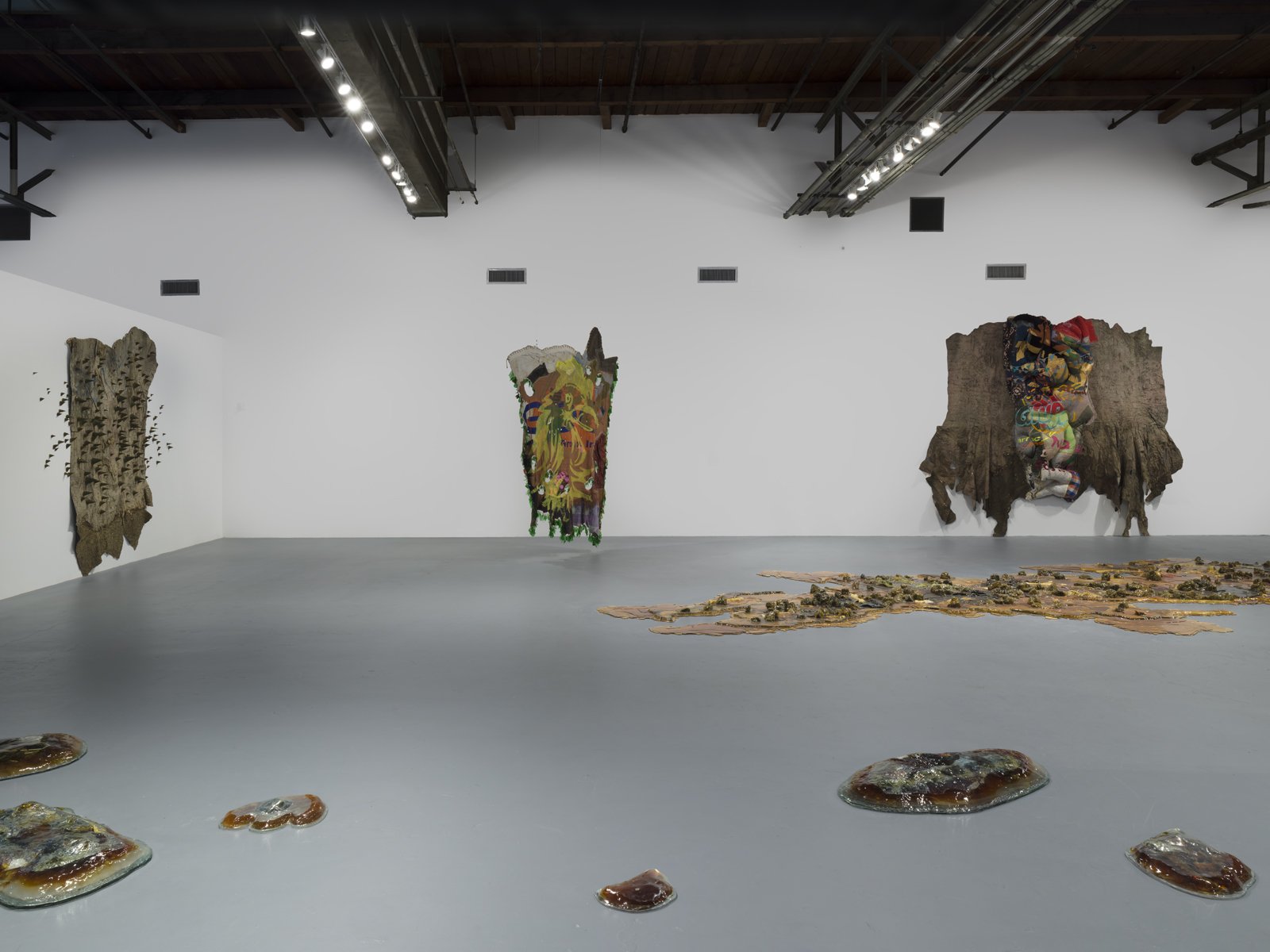


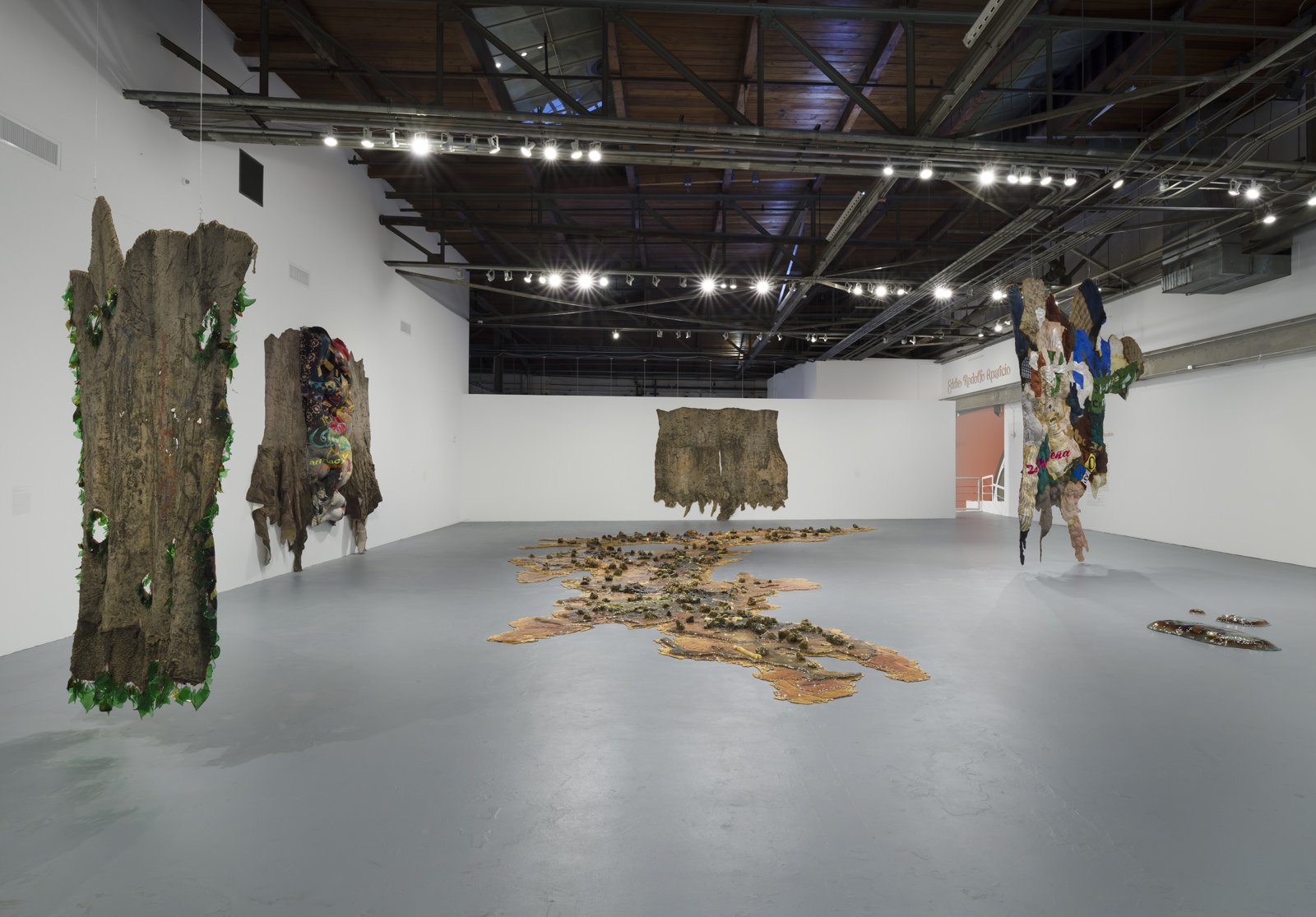



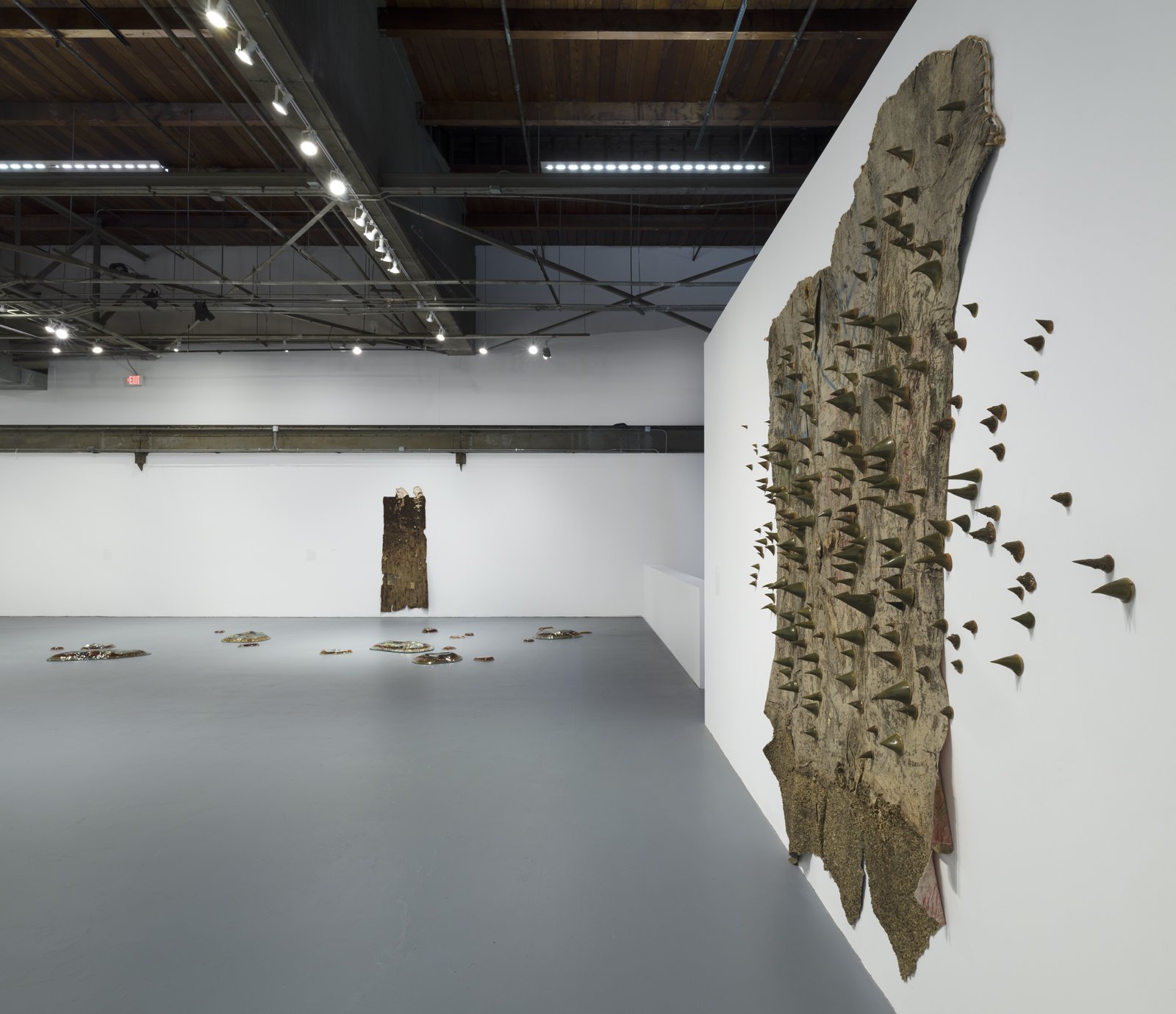
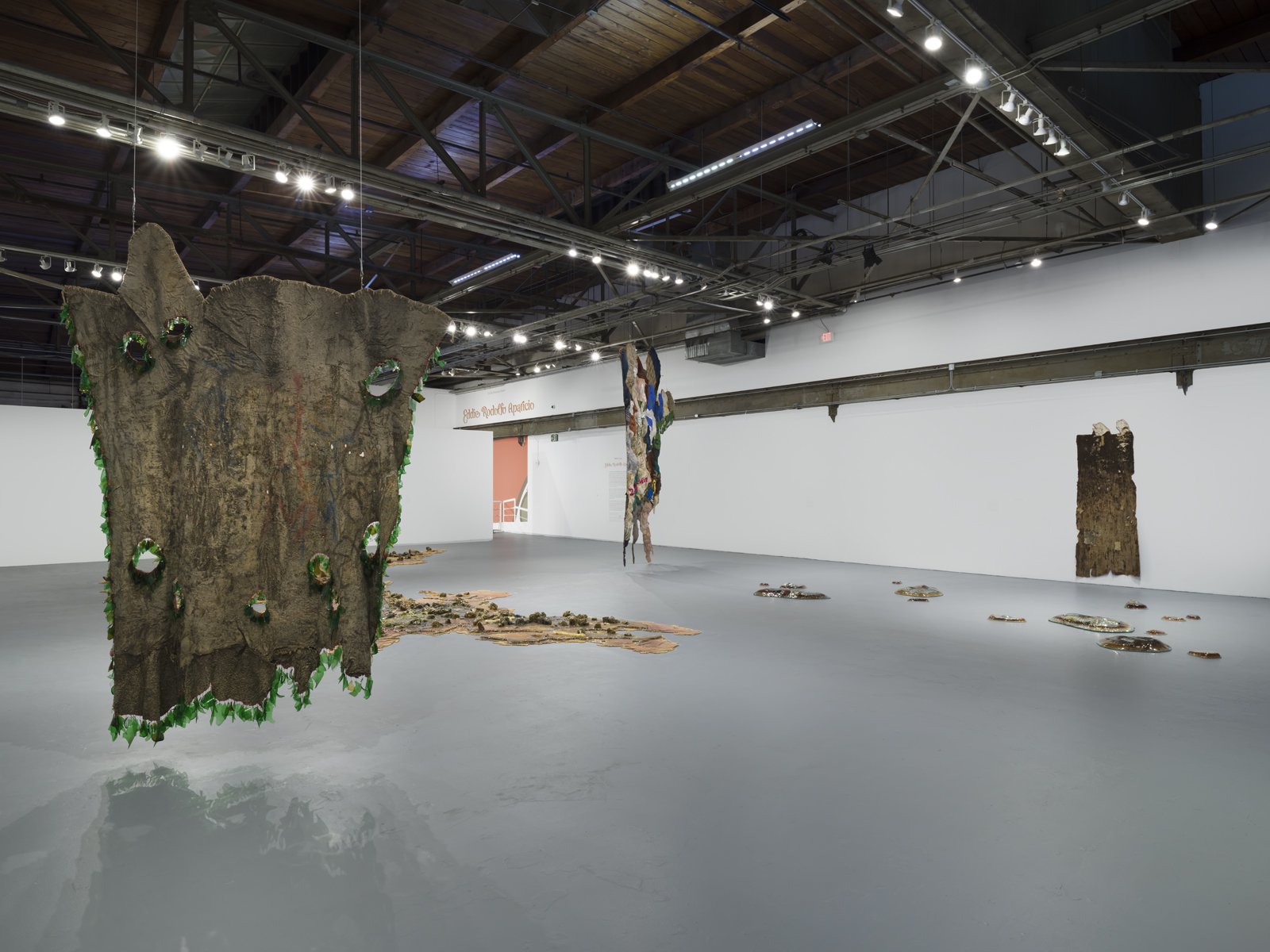

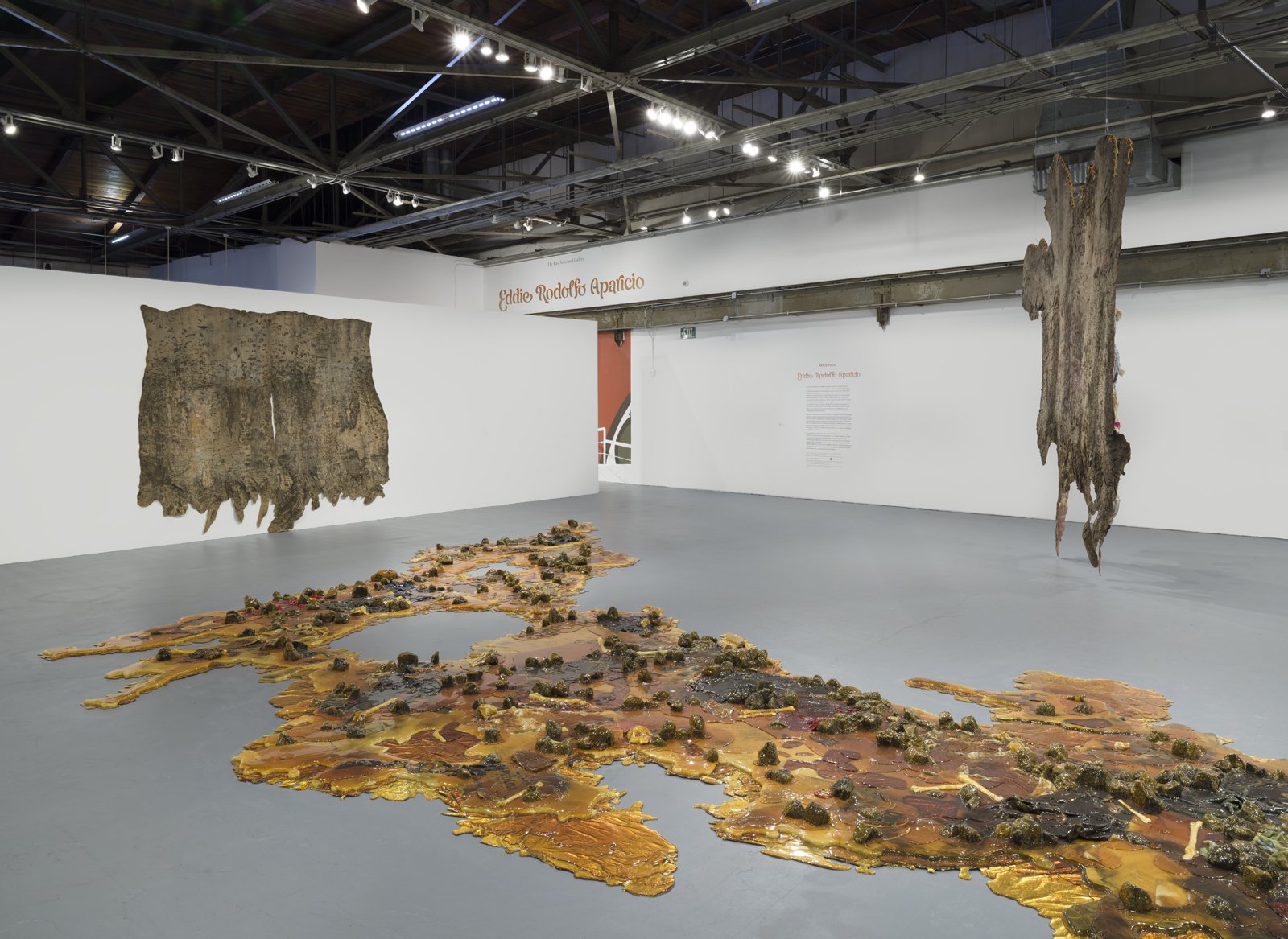



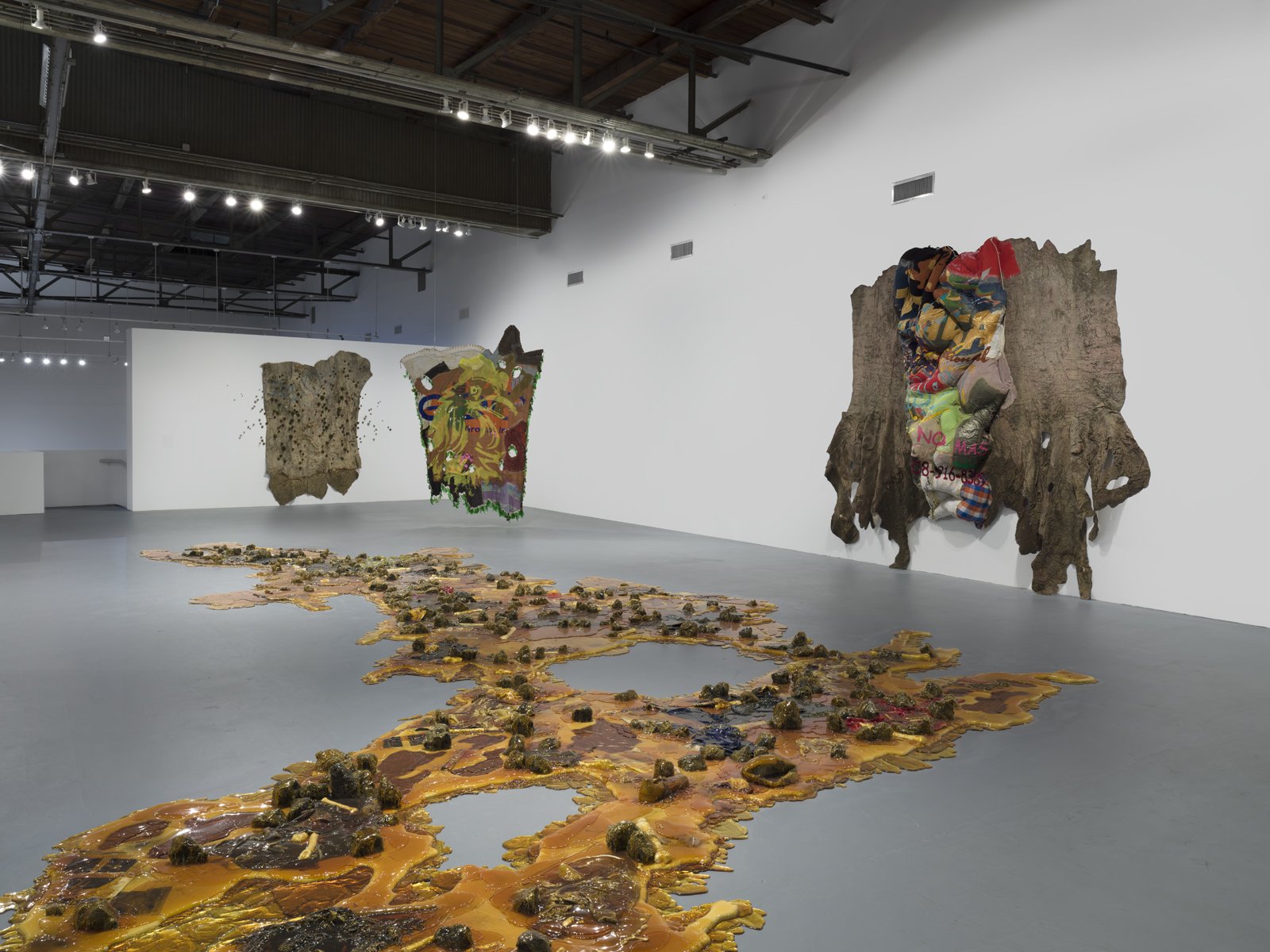
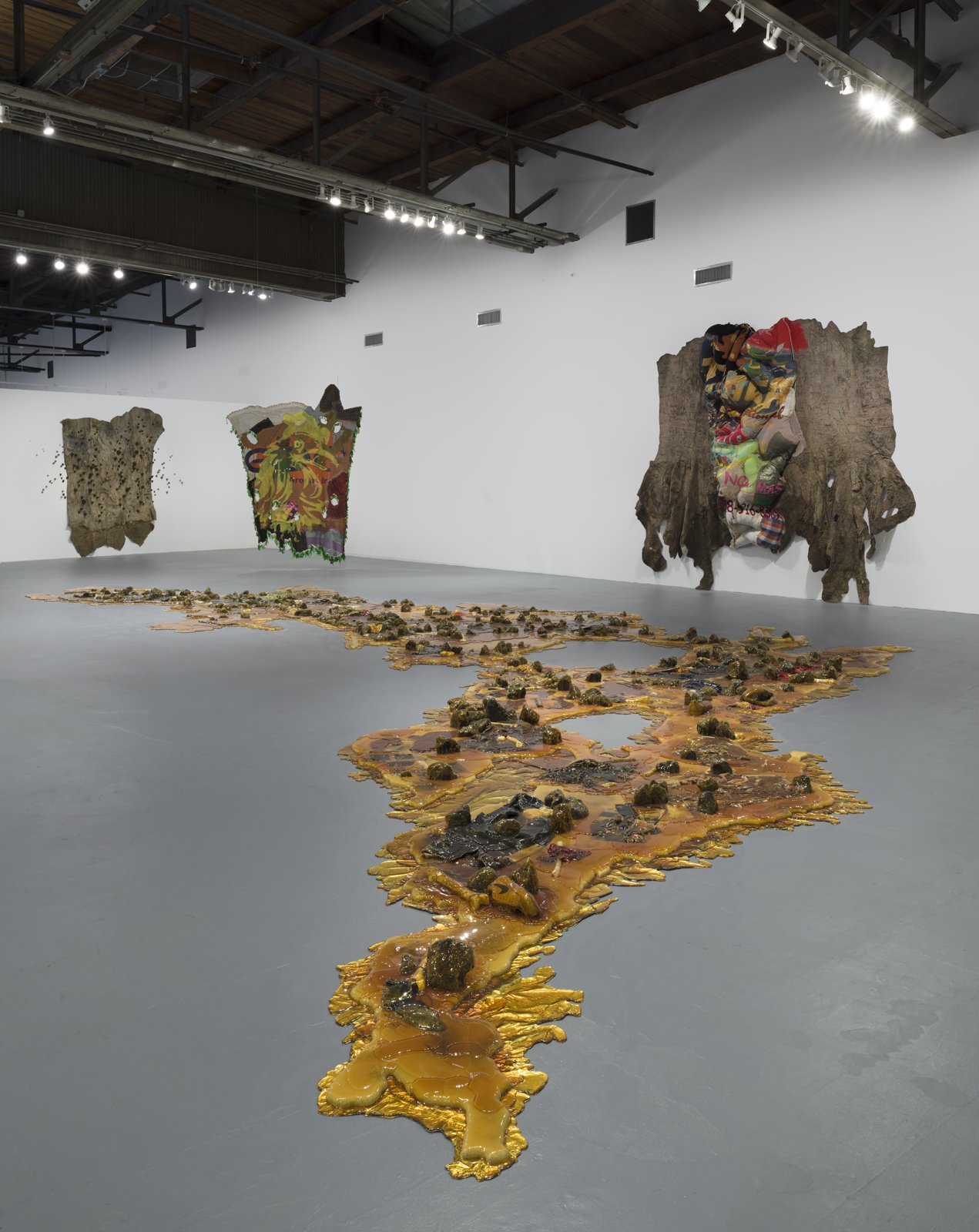
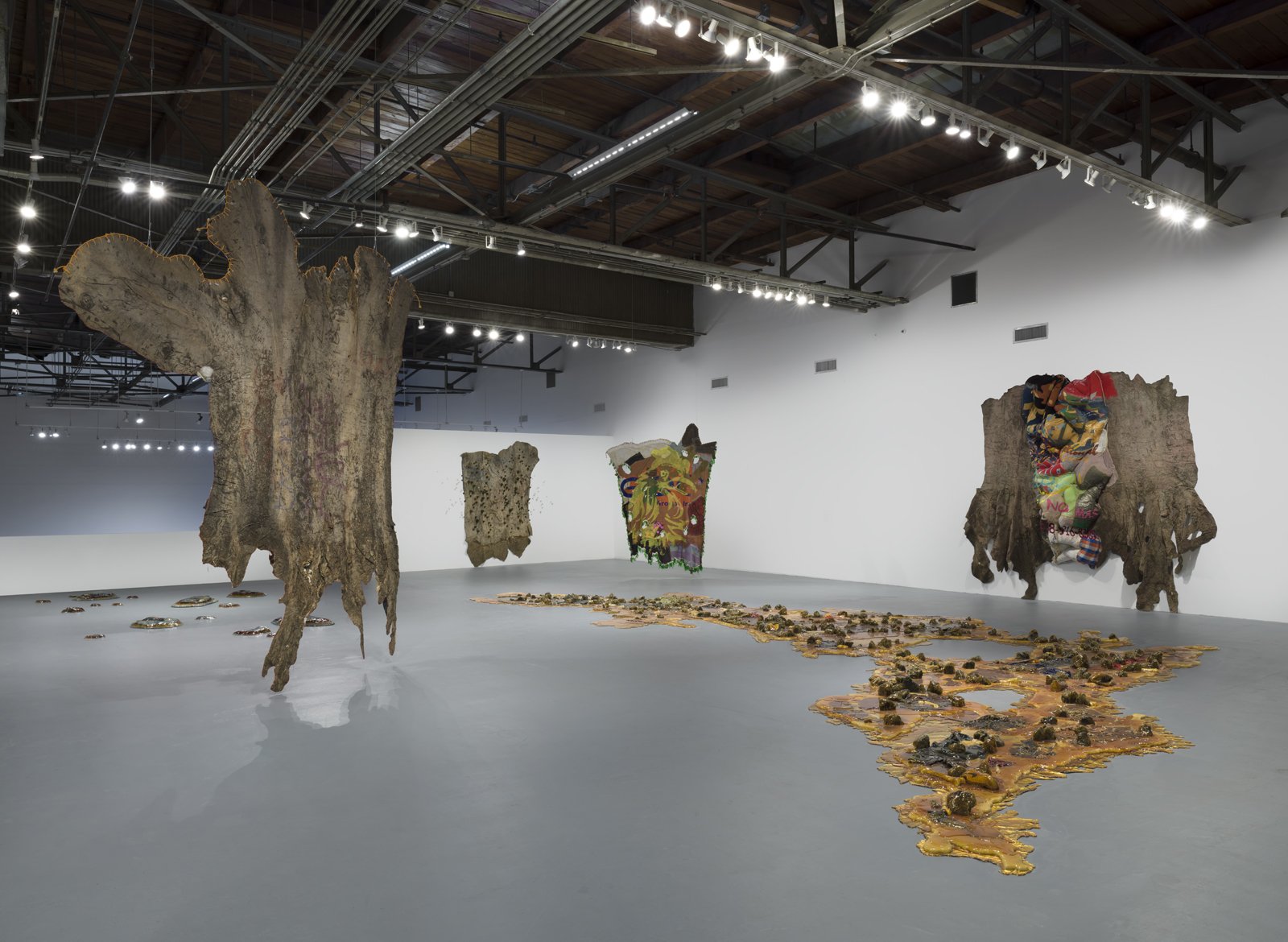
Installation view of MOCA Focus: Eddie Rodolfo Aparicio, November 12, 2023–June 16, 2024 at The Geffen Contemporary at MOCA. Courtesy of The Museum of Contemporary Art (MOCA). Photo by Jeff McLane.
The foundation of Aparicio’s practice is “total material non-neutrality,” which the artist initially realized through his Caucho (Rubber) series (2016–ongoing). MOCA Focus: Eddie Rodolfo Aparicio showcases a range of Caucho works, in which Aparicio casts the trunks of Los Angeles trees, frequently the ficus, slated for removal in rubber— the internal fluids of the Castilla elastica, a species native to El Salvador. The resulting impressions are textured with residual bark, exhaust particles, and graffiti marks. The casts couple with collages of found clothing and ephemera from the Pico-Union, Highland Park, and Westlake neighborhoods of Los Angeles, and are embellished with painted references to the presence and expression of the Central American diaspora in popular culture and the built environment. In this body of work, Aparicio invokes rubber’s history as a vital pre-Hispanic Indigenous technology and its status as a material of imperialist trade, giving shape to immigrant communities’ connections to land and place. At the core of Aparicio’s practice is a commitment to the cultural and scientific knowledge of often marginalized and even vilified Central American immigrant communities, making MOCA’s location in downtown Los Angeles, the heart of the Salvadoran diaspora, particularly resonant. MOCA Focus: Eddie Rodolfo Aparicio is accompanied by a fully illustrated publication featuring approximately thirty full-color plates and an essay by Katz, which situates Aparicio’s work within art history and social discourses of the present day. The catalogue is designed by Polymode Studio and inaugurates the Nimoy Emerging Artists.
Publication Series (Nimoy Series), which provides artists with a crucial publishing opportunity at a breakthrough moment in their careers. The Nimoy Series is made possible thanks to generous support from Susan Bay Nimoy and her late husband, Leonard Nimoy, through the Nimoy Fund for Emerging Artists.
MOCA Focus: Eddie Rodolfo Aparicio is organized by Anna Katz, Curator, with Anastasia Kahn, Curatorial Assistant, The Museum of Contemporary Art, Los Angeles.
Support for MOCA Focus: Eddie Rodolfo Aparicio as of November 9, 2023: Major support is provided by Nora McNeely Hurley and Manitou Fund and the MOCA Environmental Council.
Additional support is provided by the Sherman Family Foundation and
Exhibitions at MOCA are supported by the MOCA Fund for Exhibitions with generous funding provided by Jordan S. Goodman + The Goodman Family Foundation and The Earl and Shirley Greif Foundation.
Publication support is provided by the Nimoy Fund for Emerging Artists.
The carbon emissions from this exhibition have been measured and reduced as a part of MOCA’s climate commitment. Support provided by the MOCA Environmental Council.
ABOUT EDDIE RODOLFO APARICIO
Eddie Rodolfo Aparicio (b. 1990, Los Angeles; lives and works in Los Angeles) received an MFA from Yale University in 2016 and a BA from Bard College in 2012. His work has been featured in solo exhibitions at Los Angeles State Historic Park, Clockshop (2021); Commonwealth and Council, Los Angeles (2020); Páramo, Guadalajara (2019); The Mistake Room, Los Angeles (2018); and Green Gallery, New Haven, CT (2016). He has been included in group exhibitions at the Clark Art Institute, Williamstown, Massachusetts (2023); Denver Art Museum (2022); Hessel Museum of Art, Annandale-on-Hudson, New York (2022); Hauser & Wirth, New York and Los Angeles (2022); American Academy of Arts and Letters, New York (2022); Hammer Museum, Los Angeles (2021); El Museo del Barrio, New York (2021); Crystal Bridges Museum of American Art, Bentonville, Arkansas (2020); Los Angeles Contemporary Exhibitions (2019); Anonymous Gallery, Mexico City (2018); Smack Mellon, Brooklyn (2017); and Abrons Art Center, New York (2016) among others. Aparicio is a recipient of a Nancy Graves Grant for Visual Artists (2021); Alonzo David Fellowship (2018); California Community Foundation Fellowship for Visual Artists (2018); Schell Center for International Human Rights Fellowship, Yale University (2015); National Endowment for the Arts Fellowship, Virginia Center for the Creative Arts (2014); Elizabeth Murray and Sol LeWitt Studio Arts Award, Bard College (2012). He attended the Skowhegan School of Painting and Sculpture in 2016. Aparicio’s work is in the collections of the Los Angeles County Museum of Art and the Hammer Museum, Los Angeles.
ABOUT MOCA FOCUS
Between 1992 and 1999, Focus exhibitions offered an important platform for artists to present their work in their first solo museum presentation in Los Angeles. Dedicated to exhibitions of distinct bodies of work in a broad range of media, the series featured a roster of distinguished local and international artists, including Renée Green (1993), Franz West (1994), Felix Gonzalez-Torres (1994), Hiroshi Sugimoto (1994), Margaret Honda (1994–95), Toba Khedoori (1997), Catherine Opie (1997–98), and Jorge Pardo (1998). In the mid-2000s, the refreshed MOCA Focus series shifted to feature primarily emerging Los Angeles–based artists, presenting the first L.A. museum solo exhibitions for Eric Wesley (2006), Lecia Dole-Recio (2006), Alexandra Grant (2007), and Sterling Ruby (2008).
With its return in 2023, MOCA Focus revives its mission of giving artists at the forefront of contemporary art their first museum presentation in Los Angeles and acknowledges the global dialogue to which Los Angeles actively participates and contributes. Featured artists work closely with MOCA’s Curatorial and Exhibition teams to develop new work or present recent work, receiving support to produce and contextualize their practice. Each exhibition is accompanied by a monographic catalogue, which documents the artist’s work and includes a discursive essay written by the curator.
ABOUT THE MUSEUM OF CONTEMPORARY ART
Founded in 1979, MOCA is the defining museum of contemporary art. In a relatively short period of time, MOCA has achieved astonishing growth; a world-class permanent collection of more than 8,000 objects, international in scope and among the finest in the world; hallmark education programs that are widely emulated; award-winning publications that present original scholarship; groundbreaking monographic, touring, and thematic exhibitions of international repute that survey the art of our time; and cutting-edge engagement with modes of new media production. MOCA is a not-for-profit institution that relies on a variety of funding sources for its activities.
Museum Admission: General admission to MOCA is free courtesy of Carolyn Clark Powers. Special exhibitions at MOCA are $18 for adults, $10 for students with ID and seniors (+65), and free for children under twelve and jurors with ID. Special exhibitions are free every Thursday from 5pm to 8pm. MOCA members always receive free admission to special exhibitions. Together Thursdays courtesy of Cliff and Mandy Einstein. Admission to MOCA Focus: Eddie Rodolfo Aparicio is free courtesy of. Carolyn Clark Powers.
More Information: For 24-hour information on current exhibitions, education programs, and special events, call 213-626-6222 or access MOCA online here.
Only the Young: Experimental Art in Korea, 1960s–1970s
Lee Kun-Yong, Logic of Hand, 1975/2018. Four chromogenic prints, each 33 7/16 × 33 7/16 in. (85 × 85 cm); edition 1 of 2. Leeum Museum of Art, Seoul. © Lee Kun-Yong. Photos: Courtesy the artist
On September 1, 2023, The Solomon R. Guggenheim Museum presented Only the Young: Experimental Art in Korea, 1960s–1970s, the first North American museum exhibition dedicated to Korean Experimental art (silheom misul) and its artists, whose radical approach to materials and process produced some of the most significant avant-garde practices of the twentieth century. This historic presentation examined artistic production from an era of remarkable transformation in Korea.
The exhibit was on view from September 1, 2023, through January 7, 2024, where the historic presentation examined the artistic production from an era of remarkable transformation in South Korea, when young artists who came of age in the decades following the Korean War reflected and responded to the changing socioeconomic, political, and material conditions that accompanied the nation’s rapid urbanization and modernization. The exhibition is centered on a network of key artists, including Ha Chong-Hyun, Jung Kangja, Kim Kulim, Lee Kang-So, Lee Kun-Yong, Lee Seung-taek, and Sung Neung Kyung, who, in addition to creating boundary-pushing works of art, pursued exhibitions, performances, publications, and public seminars, often under the rubric of self-organized collectives. Porous in nature, groups such as the Korean Avant Garde Association, Space and Time, and the Fourth Group, as well as nationwide exhibition platforms such as the Daegu Contemporary Art Festival and international biennials, provided fertile grounds for innovative – and often provocative – practices that broke definitively with those of their predecessors. While the artists never formally announced a movement, the term “Experimental art” was first historicized in a landmark publication by Kim Mikyung based on her doctoral dissertation Experimental Art and Society in 1960s and 1970s Korea (2000), which has since propelled a reexamination of this influential but understudied group of artists.






![[Sung Neung Kyung, 세계전도, 世界顚倒, An Upside-Down Map of the World, 1974]](https://images.squarespace-cdn.com/content/v1/5f99c58376d5773ac55d35d6/1705607523510-TK6SI8WNT7MGL6SH1BJK/Neung+Kyung%2C+An+Upside-Down+Map+of+the+World%2C+1974.jpg)







Installation view, Only the Young: Experimental Art in Korea, 1960s–1970s, Solomon R. Guggenheim Museum, New York, September 1, 2023–January 7, 2024. Photo: Ariel Ione Williams © Solomon R. Guggenheim Foundation.
Only the Young: Experimental Art in Korea, 1960s–1970s, is thematically sequenced and featured approximately eighty works across various mediums, including painting, sculpture, ceramics, photography, video, installation, and film, most of which were presented for the first time to an international audience. It offered visitors an unprecedented opportunity to experience the creativity and breadth of this generation of Korean artists, illustrating how they harnessed the power of contemporary visual languages to explore pressing issues shaped by an authoritarian state at home and a globalizing world beyond.
On the occasion of this presentation, a series of special performances were re-staged in the exhibition’s galleries: Lee Kun-Yong’s Snail’s Gallop took place during October 13–14; Sung Neung Kyung’s Reading Newspapers, which took place during November 17–18; and Kim Kulim’s From Creation to Extinction, took place during December 1–2.
The exhibition was accompanied by a full-color scholarly publication, the first in the English language on Experimental art, with contributions by Cho Soojin, art historian; Joan Kee, Professor of Art History, University of Michigan, Ann Arbor; Yoon Jin-sup, artist, curator and critic; and curators Kyung An and Kang Soojung. In addition to incisive new scholarship and lavish photography of works drawn from public and private collections across the globe, the volume also brought together translations of articles, artist manifestos, and other primary sources that offer a firsthand perspective on the ideas then shaping artistic discourse in South Korea.
Only the Young: Experimental Art in Korea, 1960s–1970s was co-organized by the Solomon R. Guggenheim Museum, New York, and the National Museum of Modern and Contemporary Art, Korea. The exhibition is cocurated by Kyung An, Associate Curator, Asian Art, Solomon R. Guggenheim Museum and Foundation, New York, and Kang Soojung, Senior Curator, National Museum of Modern and Contemporary Art, Korea. The exhibition will open at the National Museum of Modern and Contemporary Art, Korea, on May 26 and close on July 16, 2023. It will
Support
Lead support for Only the Young: Experimental Art in Korea, 1960s–1970s was provided by the Samsung Foundation of Culture.
The Leadership Committee for this exhibition is gratefully acknowledged for its support, with special thanks to Jae Won Chey, KoRICA, Kahng Foundation, Mimi O. Kim, Kukje Art & Culture Foundation, Gay-Young Cho and Christopher Chiu, Dow Kim Family Foundation, Tina Kim Gallery, Miyoung Lee and Neil Simpkins, Lehmann Maupin, Cindy and Howard Rachofsky, Yang Won Sun Foundation, Boris Yeung, Alyssa Yoon, and those who wish to remain anonymous.
Support was also generously provided by The E. Rhodes and Leona B. Carpenter Foundation, The Andy Warhol Foundation for the Visual Arts, Korea Arts Management Service, The Kate Cassidy Foundation, The W.L.S. Spencer Foundation, and Byucksan Cultural Foundation.
Funding was also provided by the Korea Foundation.
Additional funding was provided by the Solomon R. Guggenheim Museum’s Asian Art Circle.
About the Solomon R. Guggenheim Foundation
The Solomon R. Guggenheim Foundation was established in 1937 and is dedicated to promoting the understanding and appreciation of modern and contemporary art through exhibitions, education programs, research initiatives, and publications. The international constellation of museums includes the Solomon R. Guggenheim Museum, New York; the Peggy Guggenheim Collection, Venice; the Guggenheim Museum Bilbao; and the future Guggenheim Abu Dhabi. An architectural icon and “temple of spirit” where radical art and architecture meet, the Solomon R. Guggenheim Museum is now among a group of eight Frank Lloyd Wright structures in the United States recently designated as a UNESCO World Heritage site.
To learn more about the museum and past, current and future exhibits and the Guggenheim’s activities around the world, visit here.
JEAN-MICHEL ALBEROLA The Kings of Nothing and the Years 1965-1966-1967
Courtesy de l’ar.ste et TEMPLON, Paris —Brussels — New York / Droits réservés © ADAGP, 2023
Jean-Michel Alberola marks his return to the City of Light with a protean exhibition that takes us on different journeys with its combination of new painted walls, canvases and works on paper.
We encounter the irresistible Rois de Rien [Kings of Nothing, Émeutes de Watts [Watts Riots], Tatlin and other abstraction works, which adorn the walls of the ground floor, plunging the visitor headfirst into the artist’s poetic, engaged and humorous universe. Hanging side by side, Alberola’s works form a series of philosophical puzzles questioning the perspective of artists and their role in society.
Vladimir Tatlin III, 2023 Huile sur toile | Oil on canvas 146 × 89 × 3 cm — 57 1/2 × 35 × 1 1/4 in. Photo: Adrien Millot
The basement continues the exploration the artist initiated in Brussels in March 2023 with 1965-1966-1967. “A turning point heralding the explosiveness of politics in the 1970s,” explains the artist. “Those three years still had a sense of freedom, before money began to infiltrate the artistic domains of the music and film industries in the late 1960s. People realised that counter-culture could be sold. That’s when everything changed.”


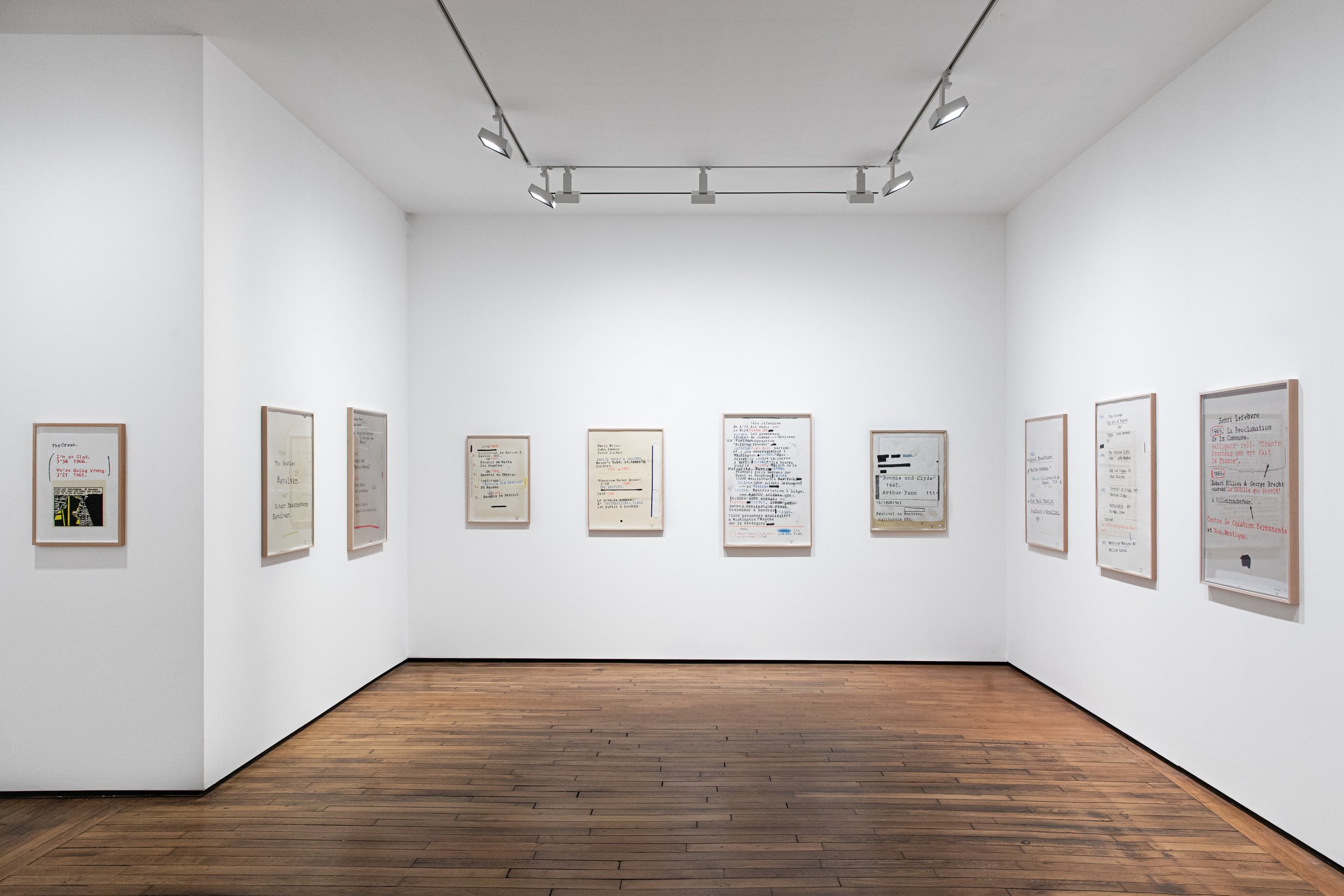







Toutes les images / All images : © Courtesy de l’ar.ste et TEMPLON, Paris —Brussels — New York / Droits réservés © ADAGP, 2023
Alberola has spent around two years gathering, annotating, rubbing out and re-writing in charcoal or blue and ochre pastel a multitude of information about this era. These drawings, hang shoulder to shoulder, build bridges with the present.
Born in 1953 in Saïda, Algeria, Jean-Michel Alberola lives and works in Paris. He made a name for himself in the early 1980s with a practice combining conceptual art and figurative painting. He has been represented by gallery Templon since 1982. His work has been shown in numerous solo exhibitions, including at the Louvre (2005), Bibliothèque Nationale de France (2009), Maison Hermès de Tokyo (2009), Frac Picardie in Amiens (2012), Palais de Tokyo (2016) and the Louvre's Centre Dominique-Vivant Denon (2018). It has also featured in several group exhibitions, such as Light House at the Fondation Boghossian in Brussels (2021) and Ex Africa at Paris' Musée du Quai Branly (2021). In September 2021, the Institut Mémoires de l’Edition Contemporaine (IMEC) gave the artist carte blanche and presented the results, centring on Franz Kafka, at the Abbaye d’Ardenne in Caen. Since January 2024, Centre Pompidou-Metz has presented his work in the group exhibition Lacan, l’Exposition, Quand l’Art Rencontre la Psychanalyse.
The exhibition opened on the 6th of January of this year and will conclude on the 24th of February. For more information about this exhibit and other exhibits at the Templon Gallery, please visit their website here. Also, find the Gallery on Instagram and Artsy.
Paul Pfeiffer: Prologue to the Story of the Birth of Freedom
Courtesy of MOCA and © Paul Pfeiffer. Courtesy the artist
LOS ANGELES—The Museum of Contemporary Art (MOCA) proudly opened on November the 12th of last year. Paul Pfeiffer: Prologue to the Story of the Birth of Freedom, the multidisciplinary artist’s first U.S. retrospective. From era-defining early videos to recent, genre-breaking works in photography, installation, and sculpture, the exhibition brings together more than thirty works spanning Pfeiffer’s career, establishing him as one of today's most influential artists. The exhibition is on view at The Geffen Contemporary at MOCA from November 12, 2023, to June 16, 2024. Paul Pfeiffer: Prologue to the Story of the Birth of Freedom is 1 organized by MOCA Chief Curator & Director of Curatorial Affairs Clara Kim and Curatorial Assistant Paula Kroll. The exhibit closes June 16th of 2024
“It is a great pleasure to organize Paul’s first U.S. retrospective at MOCA, where The Geffen Contemporary spaces will provide a dramatic backdrop for his mesmerizing art and allow audiences to move from intimate viewings of his work to grand, immersive encounters for the first time,” said Kim. “Fundamentally, Pfeiffer gets at the undercurrents of what holds contemporary society together–our collective desires, fears, and sense of belonging. MOCA’s rich history of embracing innovative contemporary art and its commitment to fostering dialogues that resonate with the pulse of our times make it the ideal venue to present Pfeiffer’s thought-provoking explorations of modern society.”
Widely regarded as a pioneer of video art in the digital era, Pfeiffer (b. 1966, Honolulu; lives in New York) examines how media creates spectacle in sports and entertainment and its subtle but powerful impact on our experiences of belonging and difference. Meticulously taking video footage apart frame-by-frame and subjecting it to digital erasure, repetition, and looping, Pfeiffer’s earliest works influenced generations of contemporary artists in his wake. Such simple techniques revealed critical but subtle features inherent to the production of images and the construction of collective memory, while reflecting the artist’s longstanding interest in the mechanics of movie-making. The exhibition title, Prologue to the Story of the Birth of Freedom, is drawn from a critical moment in American media history: Cecil B. DeMille’s opening remarks introducing his epic religious drama, The Ten Commandments, the most expensive film ever made at the time of its release in 1956.
The Long Count (Rumble in the Jungle) , 2001 Standard-definition video (color, silent; 2:51 minutes), painted 5.6-inch LCD monitor, and metal armature 6 x 7 x 36 in. (15.2 x 17.8 x 91.4 cm) © Paul Pfeiffer. Courtesy the artist; Paula Cooper Gallery, New York; carlier | gebauer, Berlin/Madrid; Perrotin; and Thomas Dane Gallery, London Photo: Luke A. Walker
“Paul’s work has a global reach and gives us a profound sense of the technological landscape we live in. Yet Los Angeles offers an ideal setting for this long-awaited, ambitious exhibition of Paul’s work,” said Johanna Burton, The Maurice Marciano Director of MOCA. “Occupying more than 20,000 square feet at The Geffen Contemporary at MOCA and set in the entertainment capital of the world, a city singularly poised to create–and manipulate–dreams, symbols, and mythologies, this show will have deep resonance here.”
Pfeiffer’s quintessential LCD video pieces will anchor Prologue to the Story of the Birth of Freedom. Iconic basketball games are the starting points for Fragments of the Crucifixion (After Francis Bacon) (1999) and John 3:16 (2000), while Muhammed Ali’s most famous boxing matches are featured in the trilogy of works titled The Long Count (2000–01). The exhibition also features the artist’s long-duration and live-feed video works and immersive video and architectural installations, such as The Saints (2007), an audio-visual recreation of the 1966 World Cup Final between England and West Germany, and Vitruvian Figure (2008), a room-size model of a million-seat arena inspired by the Sydney Olympic stadium.
Justin Bieber Head, 2018 Gmelina wood and paint 16 1/4 x 8 1/8 x 8 3/4 in. (41.3 x 20.6 x 22.2 cm) © Paul Pfeiffer. Courtesy the artist and Thomas Dane Gallery, London Photo: Ben Westoby
For this retrospective, MOCA commissioned Pfeiffer to expand on his Incarnator series (2018–ongoing). The artist worked in collaboration with “encarnadores” (from the Latin word meaning ‘“to make into flesh”), sculptors in the Philippines, Spain and Mexico who are known for their production of santos, nearly-life-size wood carvings of cultural and religious figures that are used in Catholic churches and private homes. These works were modeled after Justin Bieber and transform the pop star—who had recently declared himself a born-again Christian—into a contemporary embodiment of Jesus Christ. The production of these sculptures traces colonial trade routes that date back to the sixteenth-century, illuminating the labor and artistry behind centuries-old religious traditions and their ties to the history of global networks that continue into the present day.

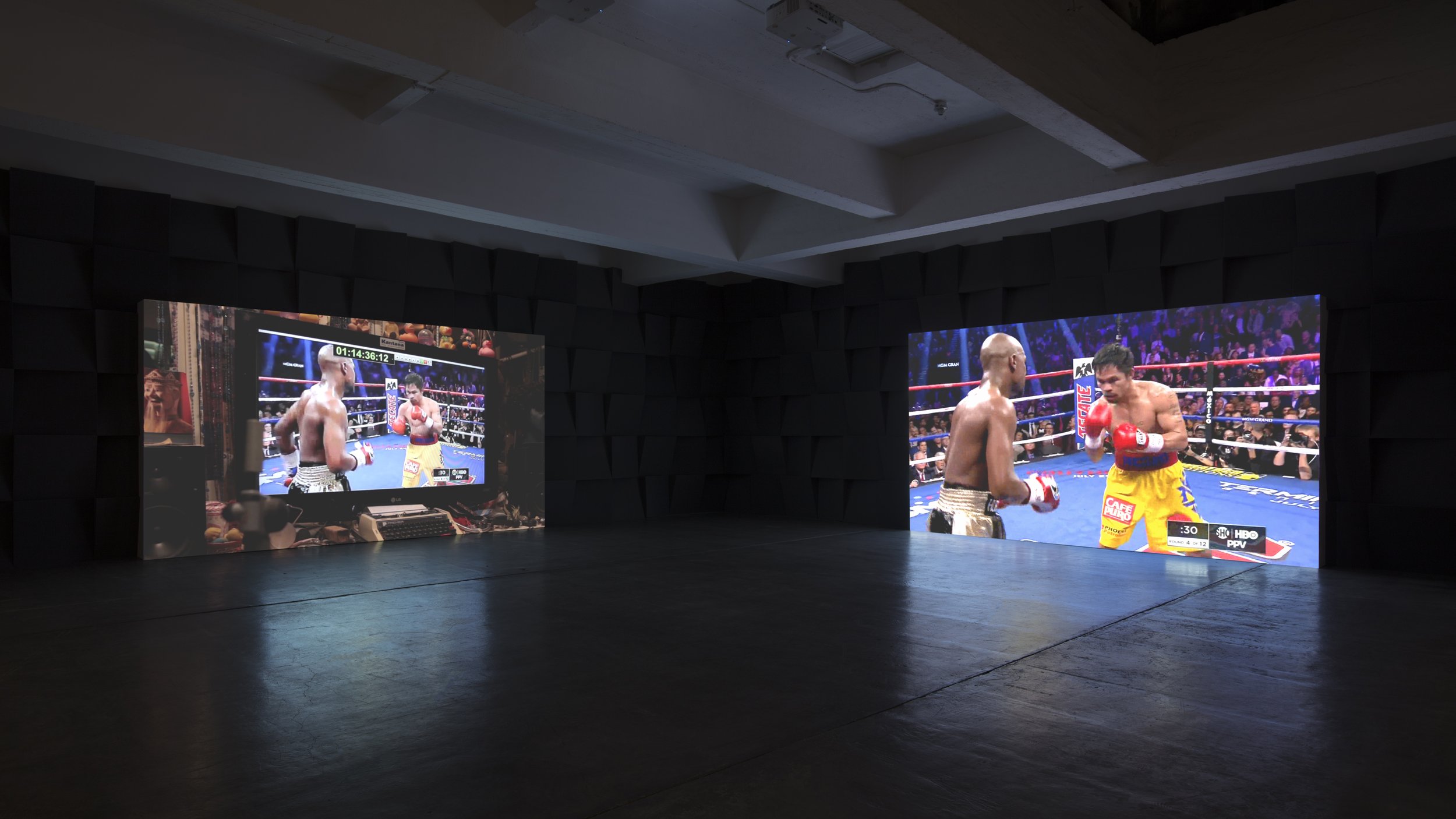

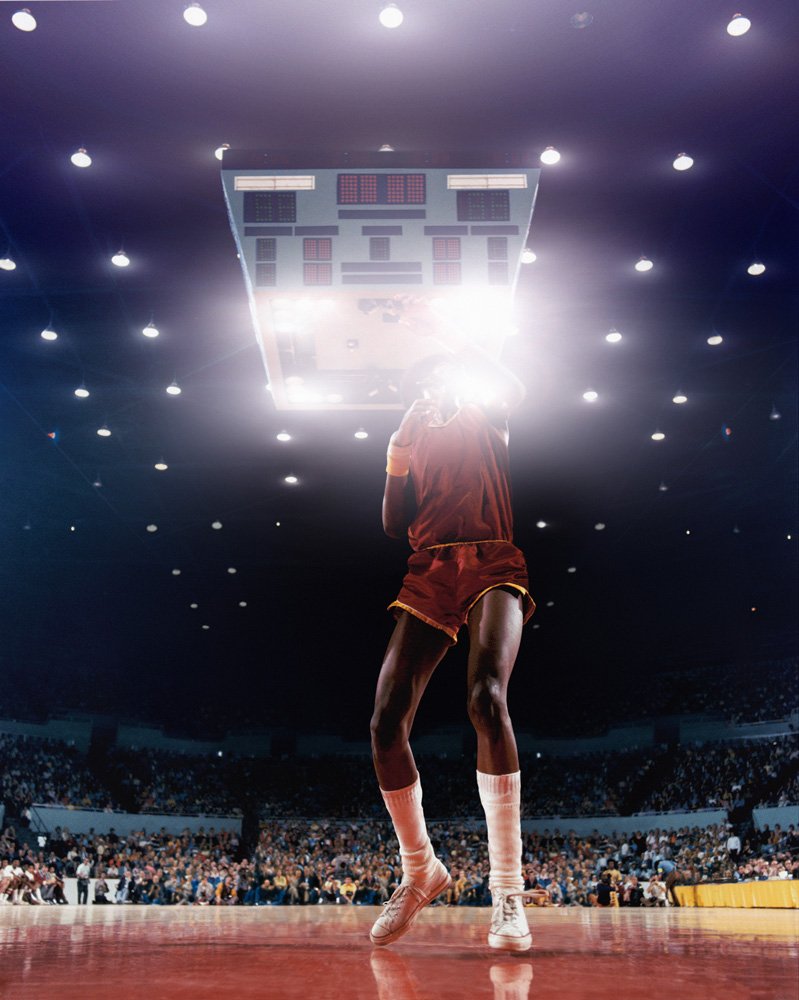


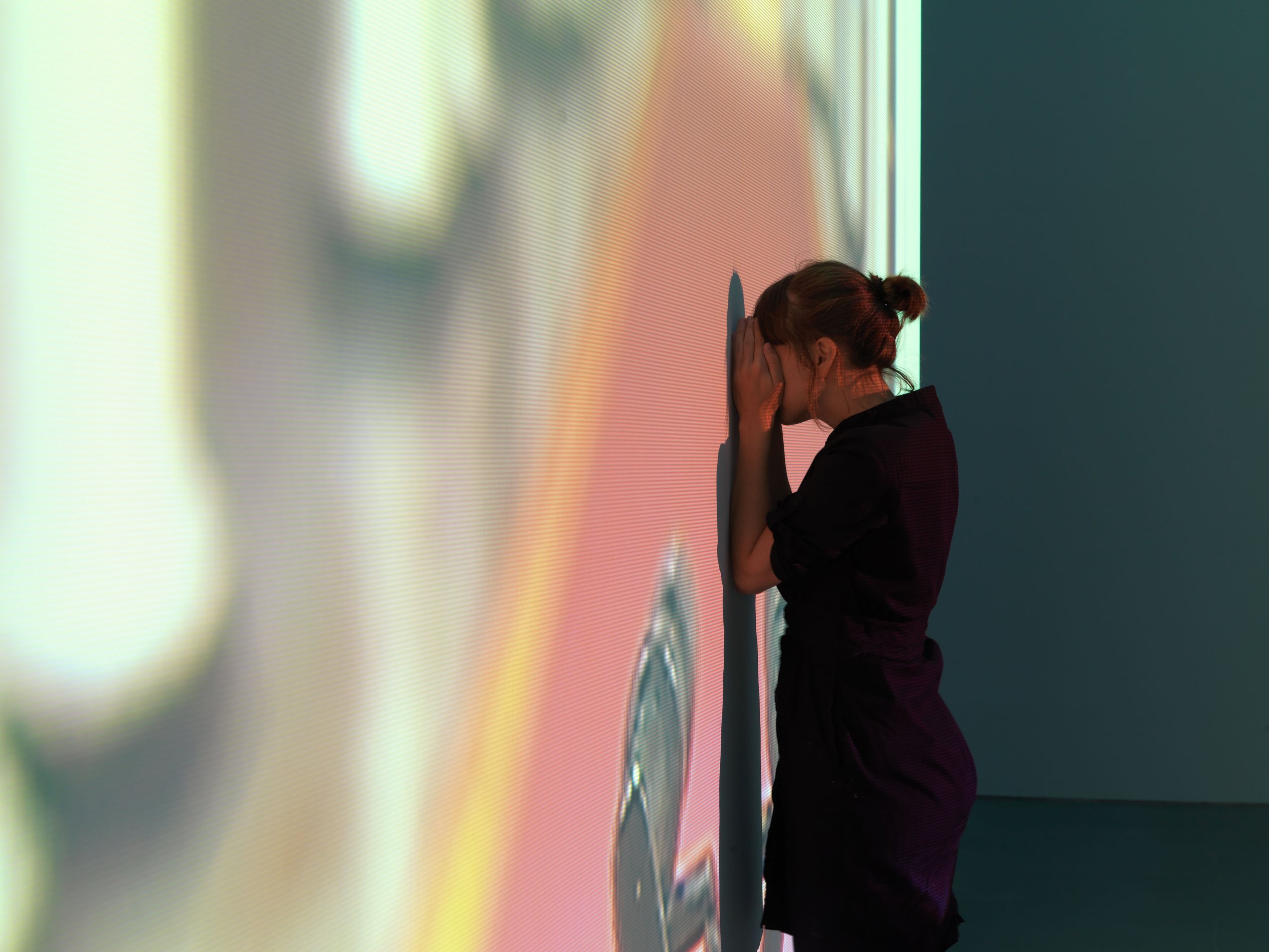








Installation view of Paul Pfeiffer: Prologue to the Story of the Birth of Freedom, November 12, 2023–June 16, 2024 at The Geffen Contemporary at MOCA. Courtesy of The Museum of Contemporary Art (MOCA). Photo by Zak Kelley
MOCA’s presentation brings together Pfeiffer’s immersive, large-scale pieces and many of his smaller scale works for the first time in the U.S.. In close collaboration with the artist, Büro Koray Duman Architecture has developed an innovative, site-specific design for the exhibition that capitalizes on the cavernous warehouse space of The Geffen Contemporary at MOCA and the artist’s longstanding interest in the highly fabricated and labor intensive process of Hollywood filmmaking. Paul Pfeiffer: Prologue to the Story of the Birth of Freedom is accompanied by a full-color monographic catalogue co-published by the museum and MACK, with new scholarship and critical readings of Pfeiffer’s work that offer a much-needed overview of the artist’s impact and influence. The monograph includes contributions by Lawrence Chua, Tom Gunning, Julie Mehretu, Marian Pastor Roces, and Chanon Kenji Praepipatmongkol. Available Spring 2024, the catalogue will also include documentation of Pfeiffer’s installation at The Geffen Contemporary at MOCA.
ABOUT THE ARTIST
Paul Pfeiffer was born in Honolulu, Hawaii, and spent his teenage years in the Philippines. Museum solo shows and projects include Inhotim Institute, Brazil, 2018; Bellas Artes Outpost, Manila, 2018; Museum of Contemporary Art, Chicago, 2017; Honolulu Museum of Art, 2016; Museum of Contemporary Art and Design, Manila, 2015; Artangel, London, 2014; Blanton Museum of Art, Austin, 2012; Sammlung Goetz, Munich, 2011; and Hamburger Bahnhof – Nationalgalerie der Gegenwart, Berlin, 2009. Pfeiffer has presented work in major international exhibitions, most recently the Performa Biennial and the Honolulu Biennial in 2019 and the Toronto Biennial and Seoul Mediacity Biennale in 2022. The artist lives and works in New York City. Paul Pfeiffer: Prologue to the Story of the Birth of Freedom is organized by Clara Kim, Chief Curator & Director of Curatorial Affairs, and Paula Kroll, Curatorial Assistant, The Museum of Contemporary Art, Los Angeles. Lead support is provided by The Eli and Edythe Broad Foundation and The Aileen Getty Foundation. Major support is provided by MOCA Projects Council in honor of Mandy Einstein, and Jamie and Robert Soros. Generous support is provided by [Paula Cooper Gallery and PERROTIN
Additional support is provided by Jam Acuzar and Christopher Ax, carlier | gebauer (Berlin/Madrid), Marcel Crespo, Thomas Dane Gallery, Eder-Zobel de Ayala Family, Jill and Peter Kraus, Elaine Forsgate Marden, Amy and John Phelan, Anton Ramos, Maria Taniguchi, and Fernando Zobel de Ayala. Supporters of the exhibition catalogue include The Katherine S. Marmor Award and the Blue Rider Group at Morgan Stanley. Exhibitions at MOCA are supported by the MOCA Fund for Exhibitions with generous funding provided by Jordan S. Goodman + The Goodman Family Foundation and The Earl and Shirley Greif Foundation. The carbon emissions from this exhibition have been measured and reduced as a part of MOCA’s climate commitment. Support provided by the MOCA Environmental Council.
ABOUT THE MUSEUM OF CONTEMPORARY ART (MOCA)
Founded in 1979, MOCA is the defining museum of contemporary art. In a relatively short period of time, MOCA has achieved astonishing growth; a world-class collection of nearly 8,000 objects, international in scope with deep holdings in Los Angeles art; hallmark education programs that are widely emulated; award-winning publications that present original scholarship; groundbreaking monographic, touring, and thematic exhibitions of international repute that survey the art of our time; and cutting-edge engagement with new modes of media production. MOCA is a not-for-profit institution that relies on a variety of funding sources for its activities.
For more information about this exhibit and other exhibits, please visit the MOCA website here.
Cristina Iglesias : ELLIPSIS
The Pavilion of Dreams (Elliptical Galaxy), 2016 Braided iron wire, steel cables, colored light and shadow 52 screens (22 horizontal, 30 vertical) 96 1/2 x 385 7/8 x 200 3/4 in. (245 x 980 x 510 cm) (overall variable) 72 x 47 1/4 in. (183 x 120 cm) (each screen) (18020) Courtesy of the artist and Marian Goodman Gallery Photo credit: Brica Wilcox
Marian Goodman Gallery is presenting the solo exhibition by Cristina Iglesias in their Los Angeles space. The exhibition features a large-scale installation alongside new sculptures and works on paper and on copper. The exhibit opened on the 18th of November of 2023 and will close on the 27th of January of this year. The exhibition had an opening reception on Saturday the 18th of November of last year that was held from. 5-7 pm
Throughout Cristina Iglesias’s career, she has defined a unique sculptural vocabulary, building immersive and experiential environments that combine Minimalist sensitivity to form complex narrative constructions to create thresholds and portals to the temporal and the imaginary.
Continuing her use of non-traditional materials, such as language, water and sound—as highlighted in recent important public projects in New York, Spain, and Houston—the works reinforce the notion of a living landscape. Iglesias’ trellised pavilions evoke imaginary interspaces, while the sculptures on view merge her interest in phreatic zones and the subterranean with outer space.
The Pavilion of Dreams (Elliptical Galaxy), 2016 Braided iron wire, steel cables, colored light and shadow 52 screens 96 1/2 x 385 7/8 x 200 3/4 in. (245 x 980 x 510 cm) (overall variable) Installation view, “Cristina Iglesias: ELLIPSIS,” Marian Goodman Gallery, Los Angeles, 2023-2024 Courtesy of the artist and Marian Goodman Gallery Photo credit: Brica Wilcox
On view in the Main Gallery is The Pavillion of Dreams (Elliptical Galaxy), 2011-2016, shown for the first time in the United States. A suspended structure constructed from lattice screens, or ‘celosias,’ the work resembles a labyrinthine passageway. Comprised of 52 vertical and horizontal screens, it is made from iron braided wire, forming a filigreed chamber that the viewer can enter. The canopied ceiling and walls unveil fragments of text excerpted from Stanislaw Lem’s cult classic 1961 novel, Solaris. The inscriptions allow a viewer to ‘read’ the sculpture, entering a fictive space that materializes as an elliptical and enigmatic realm through language. Purple light throws shadows on the walls and floor of the room, dematerializing and rematerializing the sculptural support. The distinctive effect of the colored space recalls German Expressionist films in its use of mise-en-scene and illusionistic devices to reflect emotional states and societal anxieties.
Just as the sentient ocean planet, that gives Solaris its title, serves as a symbol of the incomprehensible other, the installation is a visual analog for the experience of the intangible and the way it manifests for the viewer, transforming in shifting spaces of light and shadow.
Turbulence, 2023, is a vortex-like bronze wall sculpture that evokes both movement and stasis, or a slow churning of forces. Here, the eye alights upon the center of the swirl, or “storm,” implicating the viewer within the imaged maelstrom. The title makes references to, as per the artist, “violent or unsteady movement”; a “state of conflict or confusion” but also recalls the generative force of chaos, as a “physical process by which energy throughout the universe is generated.” Both the physical world (oceans and cosmos) and inner life (cerebral states) are bound to cycles of turbulence.
The passage from outer space to earth, or the collision of two different worlds, is brought to life most directly with Lunar Meteorite (Littoral), 2023, a large-scale bronze work which rests on the floor, an organic bas relief rock form with water running inside, reinforcing the geology of time.
Entwined V, 2017 Cast aluminum patinated and policarbonated with pigment 124 x 254 x 6 in. (315 x 645.2 x 15.2 cm)
(20709) Courtesy of the artist and Marian Goodman Gallery Photo credit: Brica Wilcox
Entwined V (2017), created from cast aluminum patinated and policarbonated with pigment, is composed of several mural pieces that seem to grow from the ground along the walls. Reminding us that life lies under everything we stand upon, the pieces invade the walls, like dense invasive vegetation, aggressive hybrids of industry and nature.
A new series of monotypes, Cave Studies, 2022, silkscreen and acid on copper, materially reflect the concept of encounters. The series emerge from the artist’s project Hondalea, 2021, a permanent artwork located within an abandoned lighthouse on a small Spanish island in the bay of San Sebastián. These works contrast the ephemerality of nature with materials that are, conversely, solid and stable.


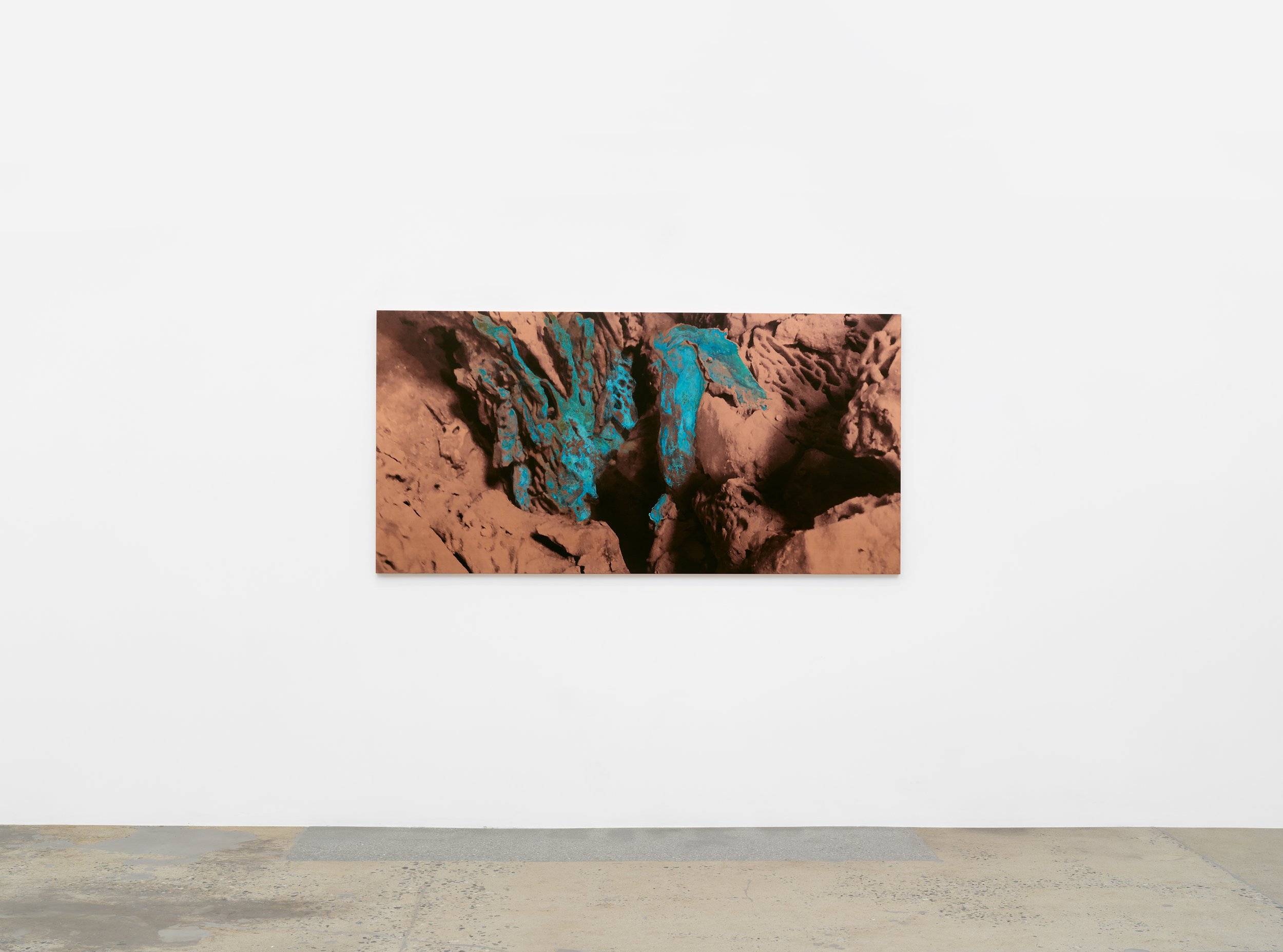




Courtesy of the artist and Marian Goodman Gallery Photo credit: Brica Wilcox
This exhibition follows a series of major public projects by the artist including Wet Labyrinth (with Spontaneous Landscape), 2022, at the Royal Academy of Arts, London; Hondalea (Marine Abyss), 2021, an installation at Lighthouse at Santa Clara Island in San Sebastian, Spain, which transformed a defunct lighthouse into a vertiginous sculptural environment sunk into the island's bedrock; Landscape and Memory, her 2022 site-specific installation at Madison Square Park, New York, consisting of five pools featuring underground bronze reliefs embedded into the oval lawn, tracing an ancient stream that once flowed there, and Inner Landscape (the lithosphere, the roots, the water), 2020, commissioned by the Museum of Fine Arts Houston, in which a basin made up of a bronze labyrinth of roots and coastal rocks, which recalls tidal pools and becomes, in the artist’s words, “a portal to the underground, to the nature of the Earth, and to the strata of memory.”
Additional notable public commissions over the past decade include Sea Cave (Entrance) in Malta, 2021; Desde lo subterráneo (From the Underground) at the Botin Centre, Santander, 2017; The Ionosphere (A Place of Silent Storms) at the Norman Foster Foundation, Madrid, Spain, 2017; Forgotten Streams at Bloomberg Headquarters, London (2017) and Tres Aguas, Torre del Agua, in Toledo, Spain, 2014; Gates-Passage at the Museo del Prado, Madrid, Spain, 2006 and Deep Fountain at the entrance of the Museum of Fine Arts, Antwerp, Belgium, 2006.
Turbulence, 2023, Bronze 98 3/8 x 98 3/8 x 45 1/4 in. (250 x 250 x 115 cm) Installation view, “Cristina Iglesias: ELLIPSIS,” Marian Goodman Gallery, Los Angeles, 2023-2024, Courtesy of the artist and Marian Goodman Gallery, Photo credit: Brica Wilcox
About Cristina Iglesias
Cristina Iglesias was born in San Sebastián, Spain in November 1956. She currently lives and works in Torrelodones, Madrid. In 2020 she was recipient of the Royal Architecture Prize, Royal Academy, London. Her work has been shown recently in solo exhibitions at Frederick Meijer Gardens and Sculpture Park, Grand Rapids, MI, 2023; Royal Academy, London, 2022; Centro Botín, Santander, Spain, 2018; Musée de Grenoble, France, 2016 and 2022; BOZAR, Centre for Fine Arts, Brussels, Belgium, 2014; in a large retrospective at the Museo Nacional Centro de Arte Reina Sofía, Madrid, Spain, 2013; and at Casa França, Rio de Janeiro, 2013; and Pinacoteca, Sao Paulo, 2008. Earlier solo shows have been exhibited at the Fondazione Arnaldo Pomodoro, Milan, 2009; Ludwig Museum, Cologne, 2006; Irish Museum of Modern Art, Dublin, 2003; Whitechapel Gallery, London, 2003; Museu Serralves, Fundaçao Serralves, Oporto, 2002; Guggenheim Bilbao, Spain, 1998 and Guggenheim New York, 1997. Iglesias has participated in a number of international exhibitions and has represented Spain at the 1986 and 1993 Venice Biennales and at the Sydney Biennale in 2012.
About Marian Goodman Gallery Los Angeles
Located in Hollywood near Highland Corridor, at Seward Street off Santa Monica Boulevard, Marian Goodman Gallery Los Angeles was inaugurated in September 2023.
For more information about this exhibition or others at the gallery, please visit the Marian Goodman Gallery website.
Martine Stig : Close Encounters
Installation views: “Close Encounters ” Marlborough Gallery., Madrid, 2023, Courtesy of the artist and Marlborough Gallery.
The exhibition Close Encounters brings together a selection of new works by Dutch artist Martine Stig that explore other spectral sensitivities. The work delves into visual realms that are invisible to the (human) naked eye but can be seen by machines and animals. Leveraging technology’s ability to re-imagine, the boundaries between humans and nature slowly shift, and we are encouraged to explore our environment, of which we are an indelible part, and expand our concept of reality.
We live in a post-optic world. Human vision is decentralized as (sole) base for knowledge production to make room for the nonhuman (machines, animals, plants). Yet, our worldview is based on optical information (“seeing is believing”!), and our visual culture leans heavily on old habits: affirming the human spectrum as the norm and celebrating the indexical qualities of the image.
Courtesy of the artist and Marlborough Gallery
The post-optic, as Carolyn L. Kane coins it, is an extension ànd a challenge of vision rooted in optics. It's through algorithmic imagery that we gain the ability to see beyond our own visual limits. This expansion of perception allows us to step beyond a human-centric viewpoint to embrace wavelengths visible to machines and other species. One of the most vivid examples of this post-optic or algorithmic realm is the use of digital infrared technology. It transcodes invisible data into our visible world, expanding our visual territory. In contexts such as military strategies and facial recognition, digital infrared serves not only to make the invisible visible but also to guide decision-making processes, silently participating in the invisible conversation that shapes our world. The memetic relationship of the optical world doesn’t exist in the postoptic; the relationship between the real world and its representation is constantly shaped by data and algorithmic processes. Digital infrared and ultraviolet images act as conduits, offering us reinterpretations of an unseen universe.
The post-optic invites us to expand our parameters of normality and opens doors to the extrasensory. It can contribute to a shared and interconnected reality that fosters interactions between all entities - be they machines, humans or other entities.





































Installation views: “Close Encounters ” Marlborough Gallery., Madrid, 2023, Photo Credit: Fotogasull. Courtesy of Marlborough Gallery
The exhibit opened on November the 30th, where Martine Stig traveled to Barcelona to attend the opening at Galería Marlborough between November 28th and December 3rd, 2023. The exhibit will conclude on February 10th, 2024.
For more information, please visit the Galería Marlborough website.
calor COLOR
calor COLOR
SOLO SHOW: Anish Kapoor
DUO: Bridget Riley, Adrien Lucca
DUO: Lucas Simões, Blanca Muñoz
GRAPHICS: Herbert Bayer, Piero Dorazio, Beverly Pepper, Jesús Rafael Soto
Marlborough Madrid presents a project developed in different spatial modules and whose axis gravitates around the role played by color in the works of nine international artists. The exhibit opened on the 25th of November this year.
Although these works are diverse in content and structure, each one uses color to claim its space through its “vivacity”, an expression used by Goethe to refer to the fact that refined people avoided bright colors in their clothes and objects and seemed inclined to banish them altogether. He went so far as to assert that only savage nations, uneducated people, and children retain a taste for vivid colors. Walter Benjamin also wrote about the child’s relationship to color by differentiating their perception of color from that of the adult: he even suggested that the latter understood color as a layer superimposed on matter, to such an extent that they regarded it as a deceptive cloak. Perhaps this deception could be linked to the names of synthetic colors that create a phantasmagorical and ethereal aura, makingit is difficult to imagine a color by its name alone. Far from being misleading, the vivacity of the colors of the works in this exhibition is symptomatic of the fact that calor [heat] and color, following the free etymological relationship of Isidore of Seville, are fundamentally composed of the same matter.





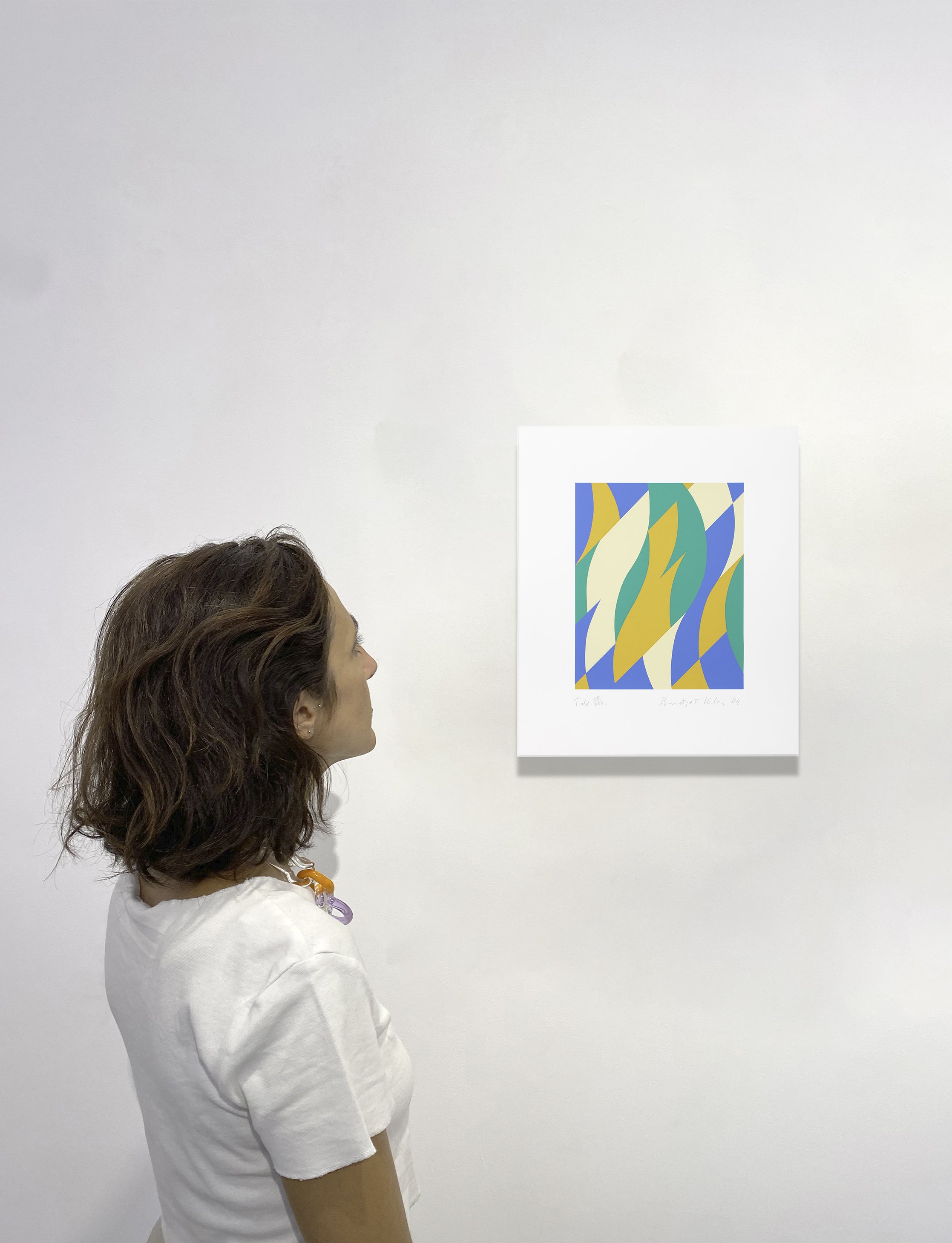



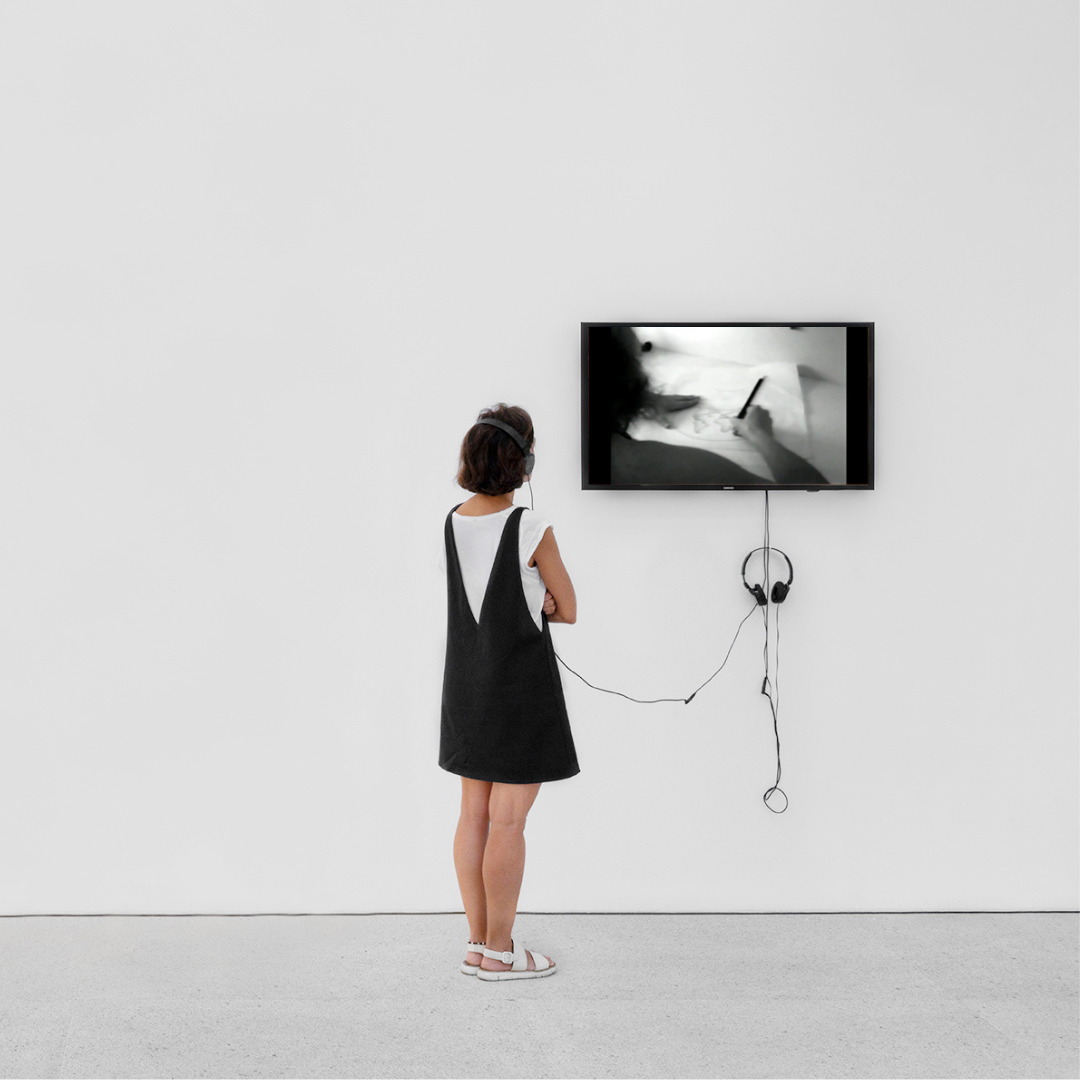
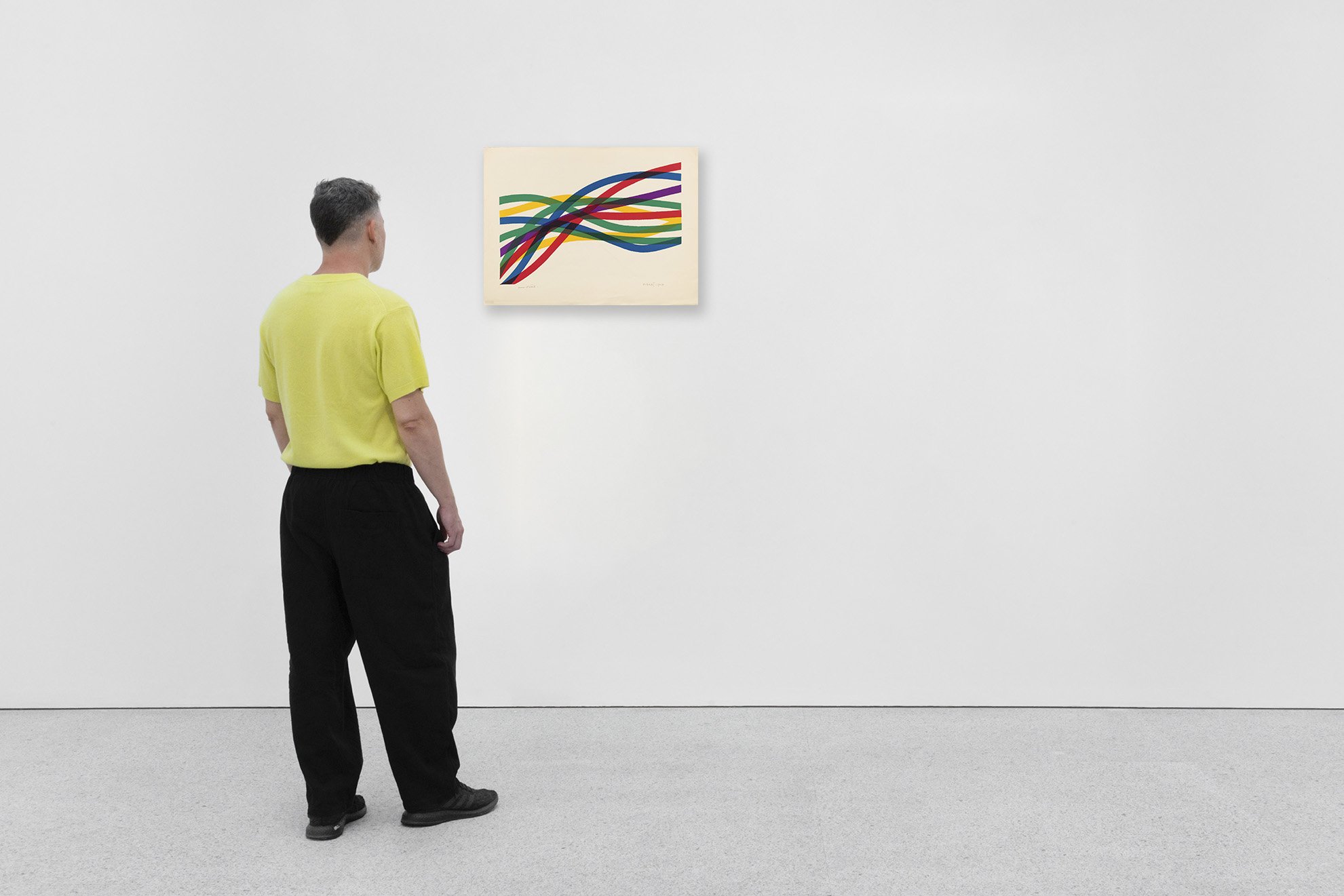
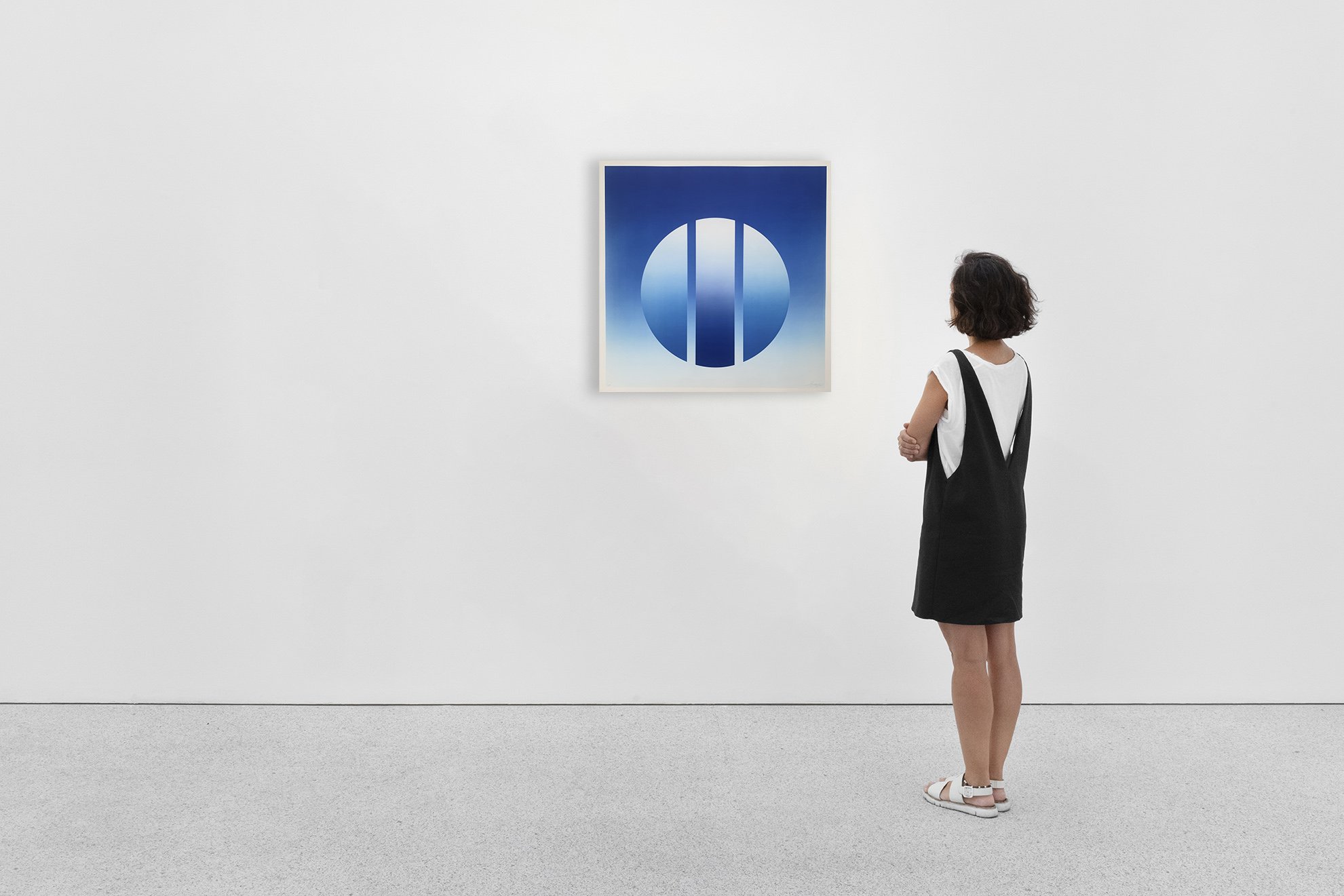



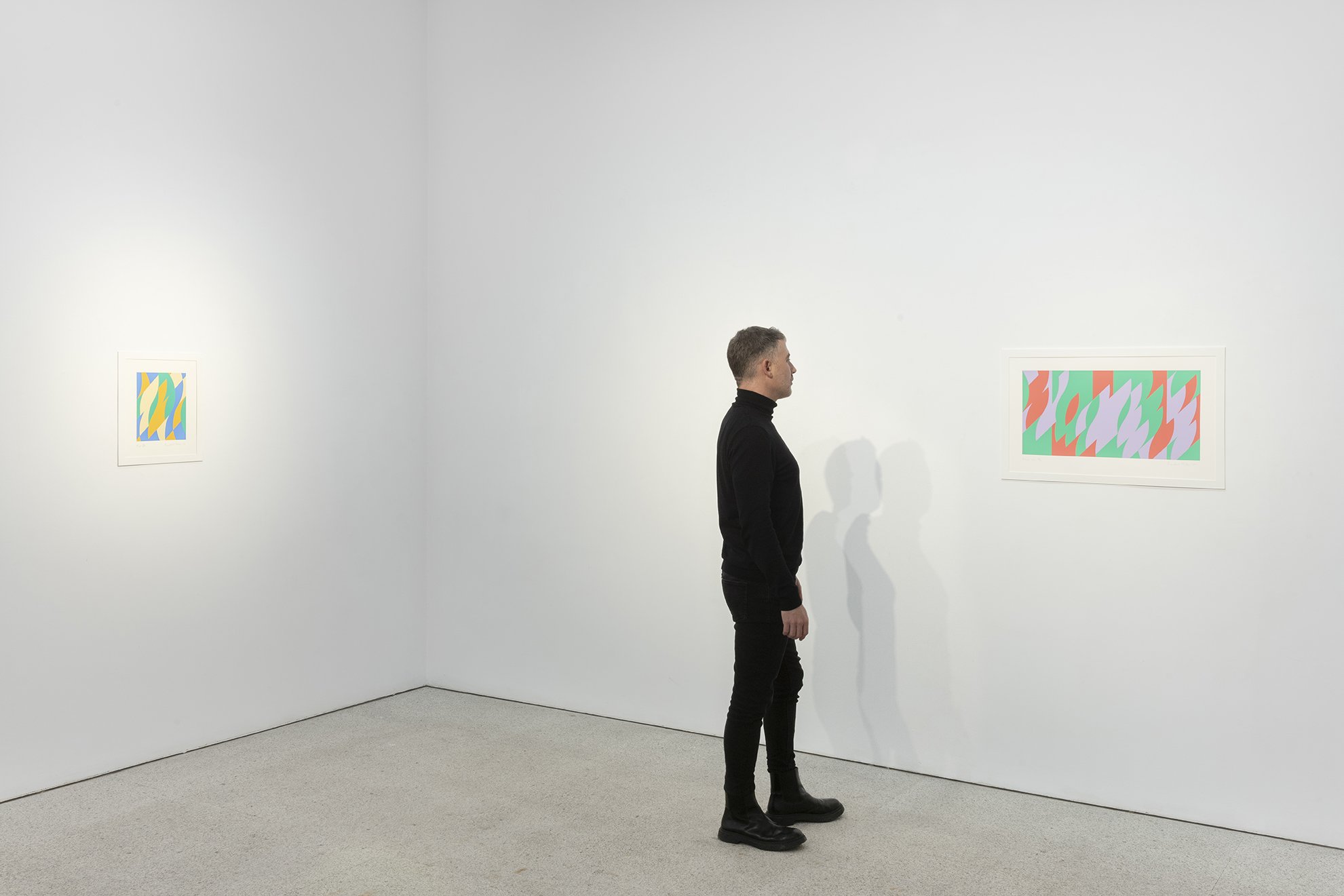
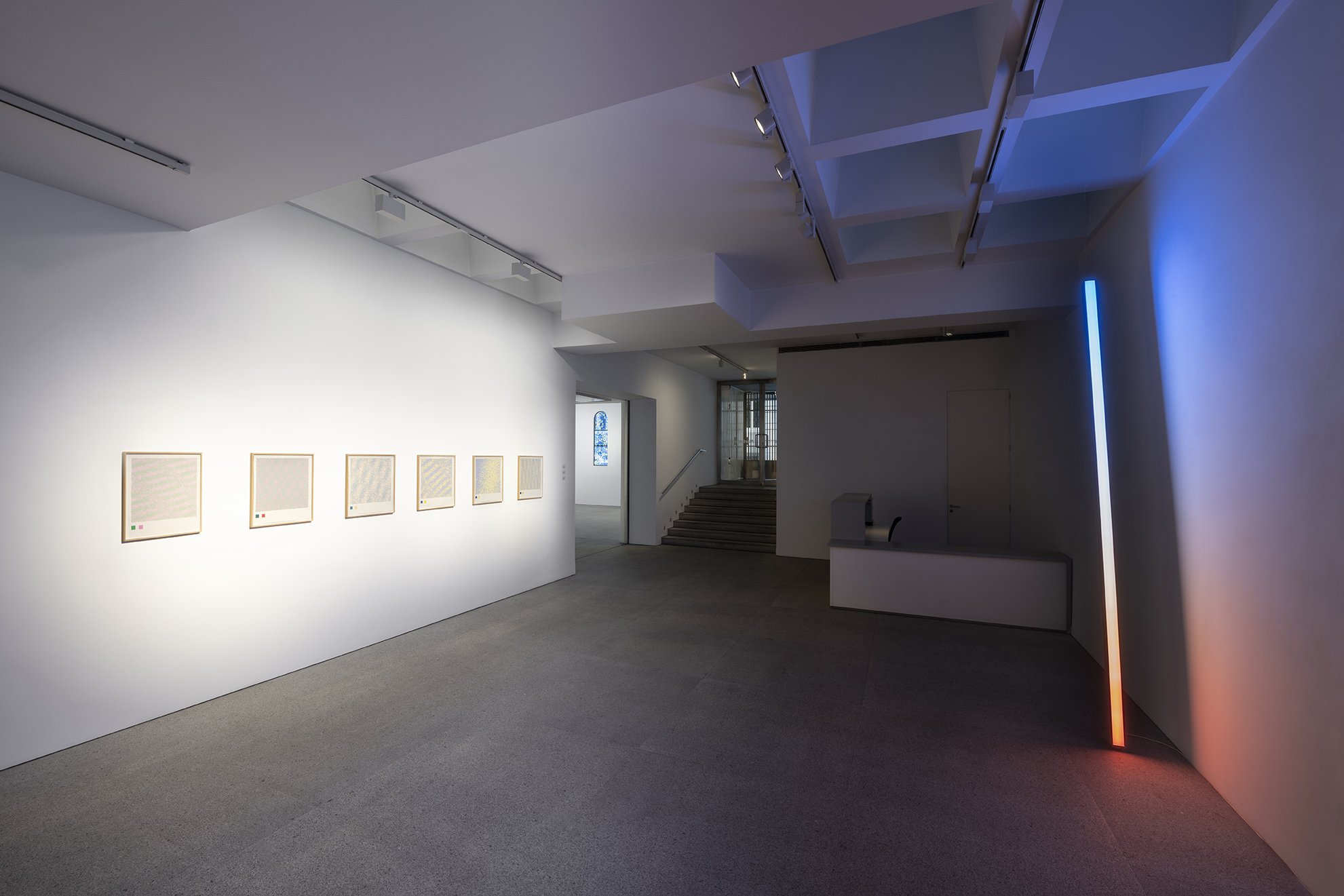

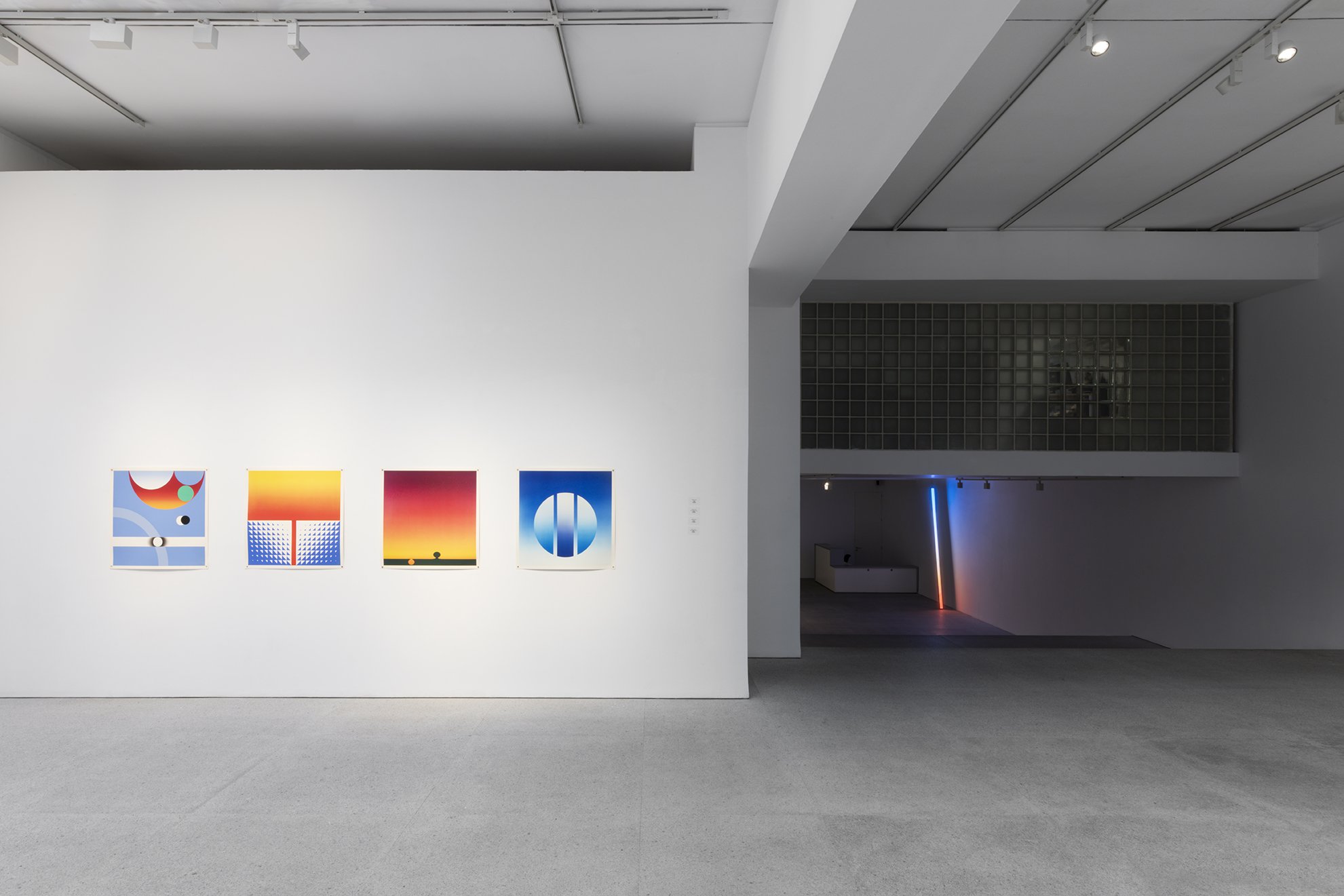

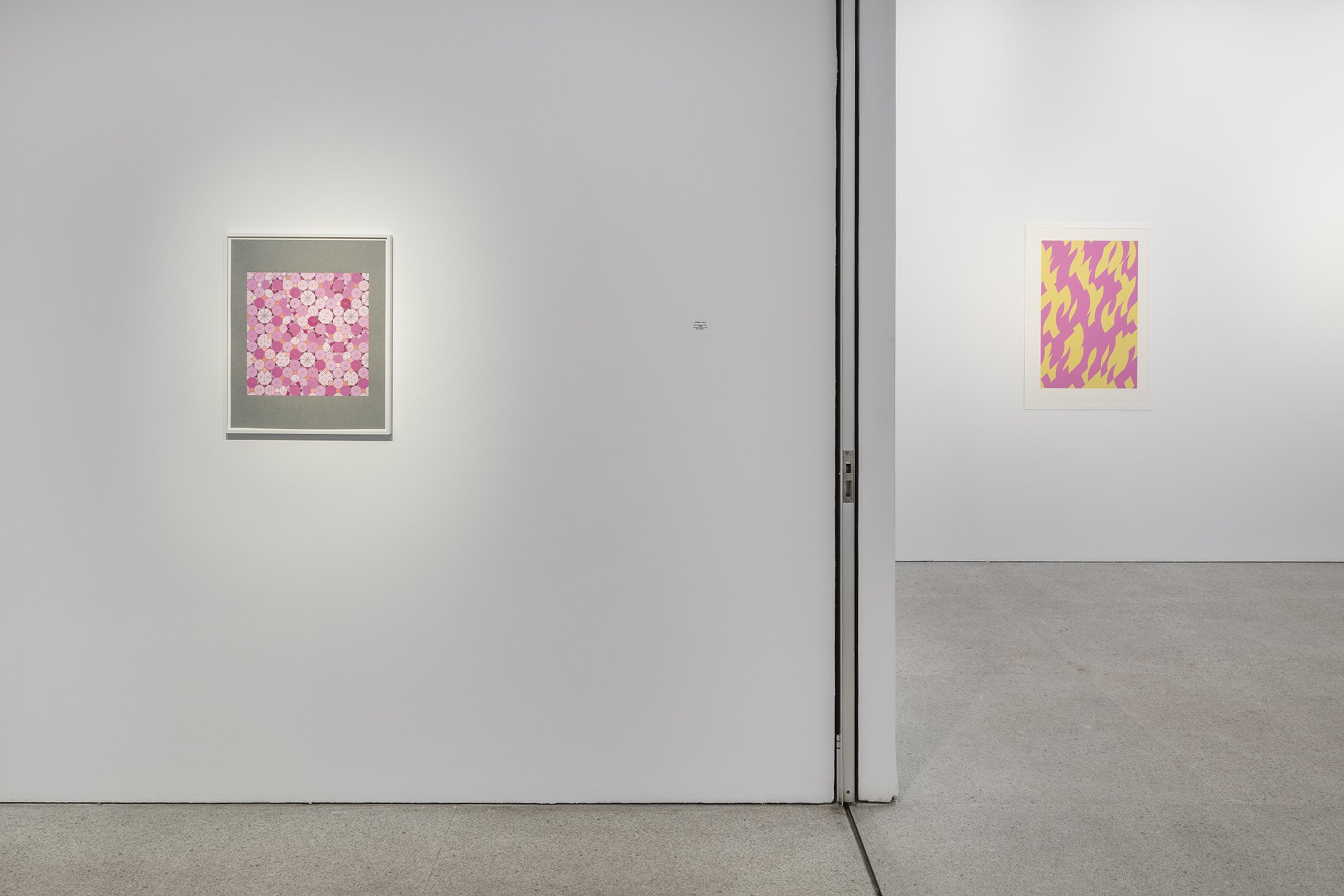
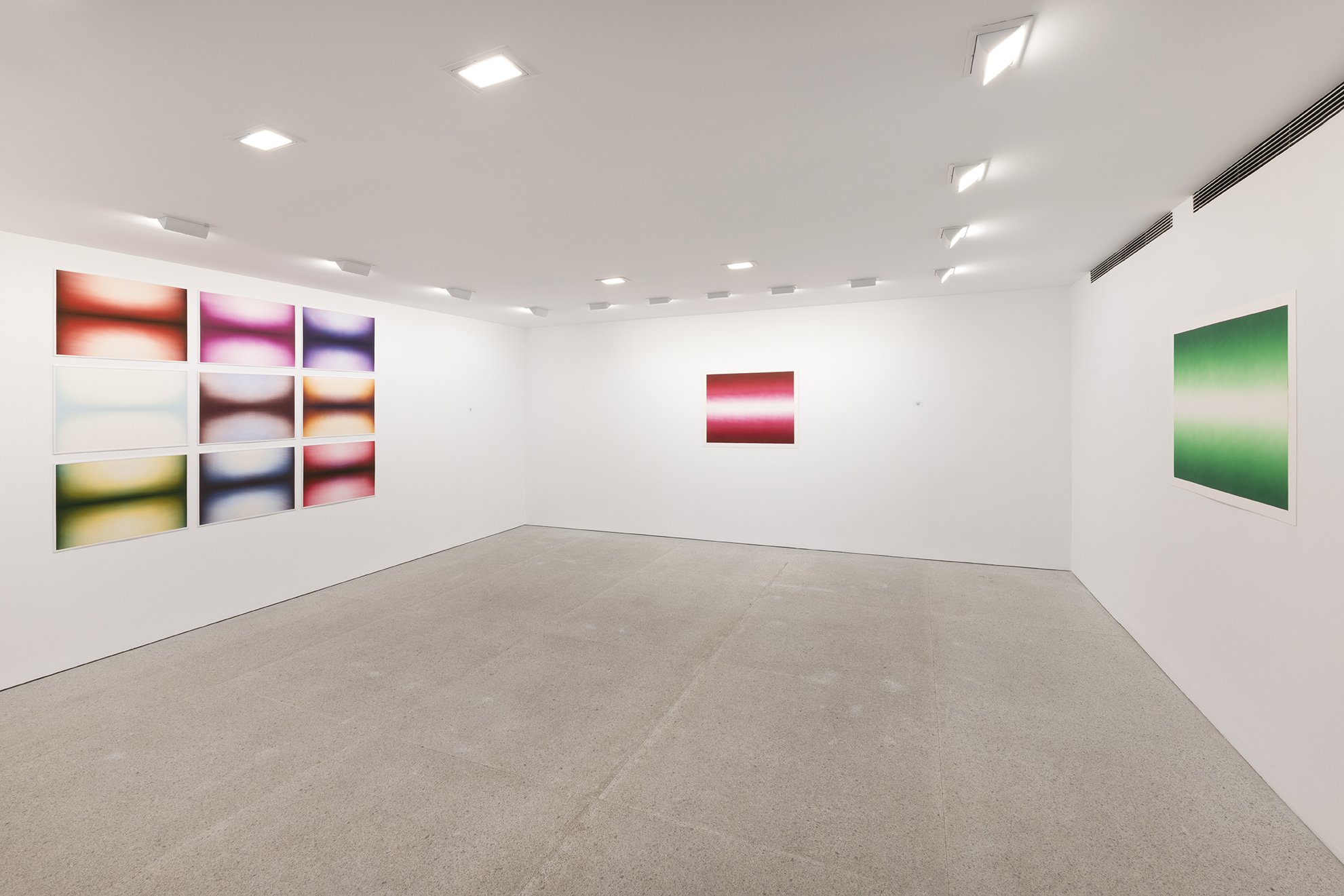

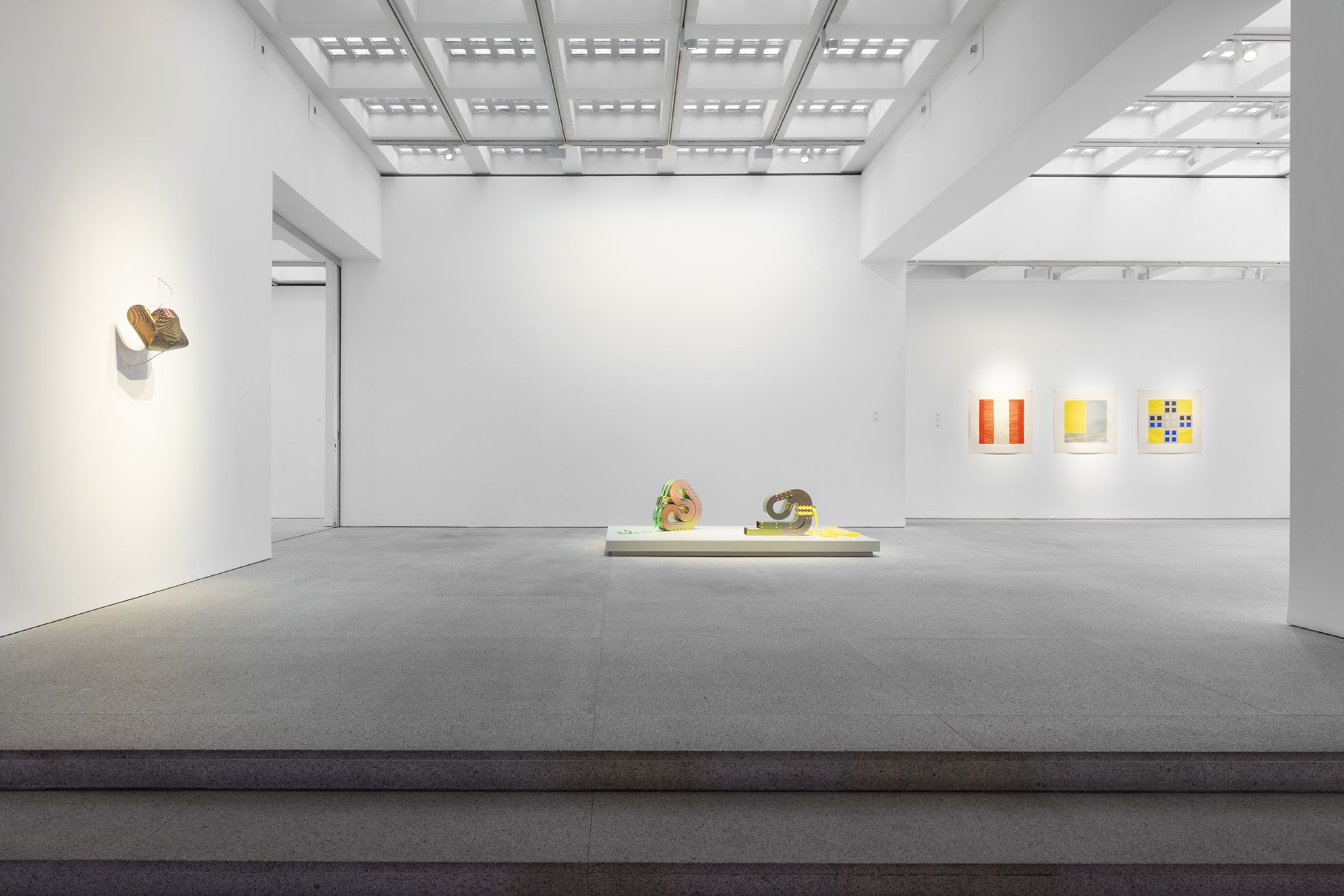


Installation views: “calor COLOR,” Galería de arte Marlborough Madrid, Spain, 2023, courtesy of Galería de arte Marlborough Photo Credit: Roberto Ruiz
To equate calor with color moves us away from a retinal approach and brings us closer to a bodily activity common to spaces of fantastic vivacity in which color is presented in a lively manner. Defending such a sense of color does not mean to state categorically that color is this or that. In order to avoid something as common in color theory as the tendency to relate shades of color to everyday objects or materials, thus blurring their true chromatic singularity, we have chosen to favor abstraction in the selection of the works. The aim is to examine the postulates of the artists present in this exhibition in relation to color, rather than favoring figuration.
The first selection of works will establish a conversation within the field of Op- art between Bridget Riley (UK, 1931) and the scientist and artist Adrien Lucca
(France, 1983). The latter specializes in the study of color with works that play with the spectrum of light to produce visual effects. His practice seeks to challenge the idea that vision is synonymous with knowledge: his works explore the limits of visual perception. Riley’s perspective, on the other hand, makes use of flat colors that play with allusions to a new landscape. The artist challenges the viewer in subtle and provocative visual experiments through optical calculation and regularities of line and color combinations. Although they belong to different generations, the plastic exercises of both artists converge in their willingness to serve scientific studies.
A second space presents a solo exhibition of the graphic work of Anish Kapoor (India, 1954) which explores in a chromatic way a mystical mood, a ceremonial and ritualistic impulse. Through his works we will try to take in his specific use of color by means of opposites to create shadows.
In addition to these proposals, there is a group exhibition with graphic works by Herbert Bayer (Austria, 1900 - United States, 1985), Piero Dorazio (Italy, 1927 - 2005), Beverly Pepper (United States, 1922 - India, 2020) and Jesús Rafael Soto (Venezuela, 1923 - France, 2005) from a specific period: 1966 to 1975. These years represent the true creative ferment around color: one of the main events was the arrival of color in television in the mid-sixties. In the artistic sphere, marked by Clement Greenberg’s defense of the reflexive flatness of color field painting, which eventually led artists to dematerialize the object, many movements and styles with color as a central impulse gained strength: pop art, optical art and minimalism are good examples.
Finally, a dialogue will be presented between the sculptors Lucas Simões (Brazil, 1980) and Blanca Muñoz (Spain, 1963), with pieces in which color is manifested through electrolysis, an electrochemical process that changes the color of metals. The Spanish sculptor works with metal and achieves iridescent results; the Brazilian, trained in architecture and urbanism, imagines forms that allow him to explore the material. Two generations united in the use of electricity as a means of tracing the change of color and its evocations.
Artist Bio:
Anish Kapoor
Anish Kapoor. Courtesy of Adam Berry
Anish Kapoor (India, 1954) is one of Britain's most celebrated artists and is considered one of the most influential sculptors of his generation. Although his artistic training took place in the UK, his work continues to draw on the richness and depth of Indian history and culture, in combination with other mythologies of the ancient world, such as Egyptian, Greek and Roman, as well as aspects of modernity.
His graphic work is characterized by the representation and transformation of hallucinatory qualities with unique and vivid colors, sometimes involving pure gradations around simple, squared or circular shapes; he also creates rich and suggestive explorations whose origins and meaning are appealing, but almost never literal or obvious.
Horizon Shadow, Untitled 03, 2010, aguafuerte, ed. de 35, 65 x 49 cm
His recent solo exhibitions include those held at: Fundación Proa, Buenos Aires; Museum of the Central Academy of Fine Arts and Imperial Ancestral Temple, Beijing; CorpArtes, Santiago de Chile; Museo Serralves, Porto; Public Art Fund, Brooklyn; MAST Foundation, Bologna; Museo Universitario Arte Contemporáneo, Mexico City; Château de Versailles; and The Jewish Museum and Tolerance Center, Moscow. His work is present in the permanent collections of the most important cultural institutions in the world, such as: Tate Gallery, London; MoMA, New York; Museo Nacional Centro de Arte Reina Sofía, Madrid; Stedelijk Museum, Amsterdam; Fundación Banco Santander; Museo Guggenheim Bilbao; and Fundación “la Caixa”, just to mention a few.
Lucas Simões
Lucas Simoes. Courtesy of the artis
The exploration of material as a form of expression in the work of Lucas Simões (Brazil, 1980) is an investigation that aims to sustain the artistic object with meaning. His training as an architect, in which technique and poetics are deeply interrelated, offers the keys to understanding his artistic production. Painting, cartography, books, photography, steel, and paper are common objects in his practice. Simões finds his means of expression in daily experimentation with materials and technical knowledge, as in his recent concrete sculptures and installations, a reflection of his research into brutalist architecture and the failure of its utopian sense.
dormente 22, 2023, acero carbono galvanizado, 73 x 34 x 17 cm
Simões has exhibited at cultural institutions around the world such as: ARCO Madrid; Casa Triângulo in São Paulo; Blouin Division in New York; Arsenal Contemporary Art in Montreal; Oscar Niemeyer Museum in Curitiba; CAAC in Seville; Museum of Contemporary Art in São Paulo; Zacheta National Gallery in Warsaw; Astrup Fearnley Museum in Oslo; Itochu Aoyam Art Square in Tokyo; and Maison Européenne de la Photographie in Paris. His work is present in numerous collections such as: Museu de Arte do Rio de Janeiro; Museu de Arte Contemporânea da cidade de São Paulo; Coleção ITAÚ de fotografia brasileira de São Paulo; Blanton Museum of Art de Austin; Centro Cultural São Paulo; Instituto Figueiredo Ferraz de Ribeirão Preto; and Fundación Kablanc de Otazu; among others.
Blanca Muñoz
Blanca Muñoz. Courtesy ©Sergio Moya
Blanca Muñoz (Madrid, 1963) graduated in Fine Arts at the Complutense University of Madrid and throughout her career has received scholarships from the Italian Government at the Calcografia Nazionale, the Royal Academy of Spain in Rome and the Directorate of Foreign Relations of Mexico. She has received, among other awards, the National Engraving Prize in 1999 and is a member of the Real Academia de Bellas Artes de San Fernando. Among her best-known monumental sculptures are the sculptural trio GORGONAS and the LUSTRAL fountain in the Plaza de España in Madrid; Altiva, in the Masaveu Foundation in Madrid; Talismán in Banca March, Madrid; Géminis, in Norman Foster’s Cepsa Tower, Madrid; Panta rei, in Málaga; Eclíptica, in the Palacio de Congresos in Badajoz; and Perseidas II, in the Parque de la Curva de Elorrieta, in Bilbao.
Romboidal. 2021. Acero inoxidable. 70 x 56 x 28 cm
Her work has been exhibited individually on several occasions at the Marlborough Gallery in New York, Madrid and Barcelona; at the Real Academia de Bellas Artes de San Fernando in Madrid; at Galerie MiniMasterpiece, Paris; at the Sala Alcalá 31 in Madrid; and at the International Biennial of Graphic Arts in Ljubljana, among others. In addition, her work has been exhibited at the Biblioteca Nacional, the Museo Nacional Centro de Arte Reina Sofía, the Museo Nacional del Prado, the Fundación Enaire, the Fundación Juan March, the Museo Würth, and the National Museum of Women in the Arts in Washington, among many other cultural institutions.
Her work is present in numerous art collections: Banco de España, Biblioteca Nacional, Colección Würth Alemania, Fundación Bancaja, Fundación María Cristina Masaveu Peterson, La Quinta Colorada in Mexico City, Museo de Bellas Artes de Álava, and Museo Nacional del Prado, among others.
Adrien Lucca
Adrien Lucca. Photo Leslie Artamonow.
Adrien Lucca (France, 1983) studied visual arts at the École de Recherche Graphique in Brussels, where he experimented with various media, including drawing on Steinbach paper. There followed an intense period of research and study of the theories of physicists and chemists such as Michel-Eugène Chevreul, Hermann von Helmholtz, Ogden Rood, Georges Roque, Françoise Viénot and Mark D. Fairchild for their recent research in the science of color.
Adrien Lucca’s interest in optical mixing led him to produce scientific drawings which he called Études. In 2010 and 2011 he continued his research at the Department of the Jan van Eyck Academy in Maastricht, and in 2014 he learned computer coding to create more complex drawings. Entirely handmade, he generated his drawings using algorithms that he designed himself based on a set of deterministic rules.
Entrelacs quisicristallins, 2016, vidriera, 60 x 192 x 5 cm
In 2019 he received a grant from the Belgian National Fund for Scientific Research to develop white light synthesizers and integrate the use of artificial light into his work. His experience with glass began in 2015, when he entered a competition organized by Bruxelles Mobilité for which he created a set of fourteen backlit stained-glass windows for the Place d’Armes metro station in Montreal. Since then, glass has become one of his favorite materials.
Adrien Lucca teaches at the Ecole Nationale Supérieure des Arts Visuels de La Cambre in Brussels. He is currently continuing his research on the complex relationship between color and light. In 2023, Lucca held his first monographic exhibition in a contemporary art museum, at the BPS22 in Charleroi, Belgium. Since 2015 he has produced monumental works in Belgium, Canada, Italy, and the Netherlands.
Bridget Riley
Bridget Riley. Photo Credit: Christian Wickler
Bridget Riley (UK, 1931) studied at Goldsmiths College and the Royal College of Art with Peter Blake and Frank Auerbach. The work of Jackson Pollock and futurism stimulated the development of what would become her signature style, Op Art, as well as her studies of pointillism and the black and white geometry of Italian Romanesque architecture. Throughout her career, her graphic work, produced by means of silkscreen printing, has sometimes anticipated her pictorial work and at other times mirrored it. Her geometric compositions seem to be full of optical effects, created with the utmost precision so that the viewer experiences both comfort and conflict.
Her work has been exhibited in international museums such as: MoMA, New York; Venice Biennale, where she won the International Painting Prize, the first woman artist to do so; Musée d’Art Moderne, Paris; National Gallery, London; National Gallery, Prague; Kunsthalle, Nuremberg; and Tate Modern, London. In addition, her work can be found in public collections around the world, including: Centre Pompidou, Paris; Dallas Museum of Art; Museum of Contemporary Art, Los Angeles; MoMA, New York; Staatsgalerie, Stuttgart; and Tate Modern, London, among many others.
Herbert Bayer
Herbert Bayer
Herbert Bayer (Austria, 1900 - United States, 1985) was a graphic designer, typographer, painter, photographer, sculptor, art director, environmental and interior designer, and architect who, using the technique of collage and photomontage, combined different images and forms on a plane that was no longer that of traditional photography, but constituted a “new reality”. The result of his work are intriguing pieces with multiple readings that evoke dadaism and surrealism.
Bayer studied at the Artists’ Cologne in Darmstadt, where he became interested in Walter Gropius’s Bauhaus manifesto. He attended the Bauhaus in Weimar, where he studied with masters such as Wassily Kandinsky, Paul Klee and László Moholy-Nagy, and was probably the most talented typographer of those who passed through the German school, although his work also encompasses painting and, above all, photographic collage. At the Bauhaus, Bayer developed a sharp visual style and adopted a sans serif (grotesque) font used in lower case for all the Bauhaus publications he designed. In 1928, Bayer left the Bauhaus to become art director of the Berlin office of Vogue magazine.
Afterglow, 1975, serigrafía, ed. de 50, 81.3 x 81.3 cm.jpg
In 1937 he set sail for the United States and from then on introduced the avant-garde of European design to North America. Bayer’s work has been exhibited at: Centre Georges Pompidou, Paris; Harvard Art Museums; MoMA, New York; ARCO Center for Visual Art, Los Angeles; and Germanisches Nationalmuseum, Nuremberg. His work is included in prominent public and private collections such as: MIT List Visual Arts Center, Whitney Museum, Guggenheim Museum, and MoMA, New York City, among many others. Bayer is also noted for monumental works such as the Mill Creek Canyon Earthworks, an environmental sculpture located in Kent, Washington.
Piero Dorazio
Piero Dorazio (Italy, 1927 - 2005) studied architecture and in the late 1940s became active in various artistic and literary circles where he met Jean Arp, Georges Braque, Sonia Delaunay, Le Corbusier, Gino Severini, Antoine Pevsner, and Georges Vantongerloo and came into contact with the School of Paris, constructivism and Italian futurism. Dorazio rediscovered the art of Giacomo Balla, who became a major influence, and became active in design, silkscreen printing and furniture design. In 1950, a visit to Paris led him to collaborate with several fellow artists in the organization of a remarkable avant-garde cooperative gallery, L’Age d’Or. While travelling in Europe and visiting New York, Dorazio developed his color-based artistic approach which, a decade later, would consolidate his international fame with works primarily concerned with color field studies and lyrical abstraction.
Fragments Frontales, 1966, litografía, ed. de 90, 63.5 x 88.9 cm
In 1953, Dorazio travelled to the United States and presented his first solo exhibitions at the Wittenborn One-Wall Gallery and the Rose Fried Gallery in New York. Dorazio exhibited at the Musée d’Art Moderne in Paris, the Albright-Knox Art Gallery in Buffalo and the Galleria Nazionale d’Arte Moderna e Contemporanea in Rome. He also participated in important international exhibitions, such as the Venice Biennale, where he exhibited in 1960, 1966 and 1988. In the following years he received private and public commissions, such as the creation of mosaics in underground stations throughout Rome.
His work is present in important collections such as: MoMA, New York; Tate Gallery, London; Centre Georges Pompidou, Paris; Peggy Guggenheim Collection, Venice; Galleria Nazionale d’Arte Moderna e Contemporanea, Rome; Museo del Novecento, Milan; Galleria Civica d’Arte Moderna e Contemporanea, Turin; National Gallery of Art, Washington; Hirshorn Museum and Sculpture Garden, Washington; Art Institute of Chicago; and Fine Arts Museums, San Francisco.
Beverly Pepper
Bevery Pepper, Courtesy Marlborough Gallery London
Beverly Pepper (United States, 1922 - Italy, 2020) began her training as a painter with Fernand Léger and André Lhote in Paris. After a trip to the temple of Angkor Wat in Cambodia, she also turned to sculpture and, together with David Smith and Alexander Calder, participated in the historic exhibition Sculture Nella Cittá in the city of Spoleto. In addition to a lifetime of gallery exhibitions, she has had numerous solo shows in museums, including MoMA, New York; Albright-Knox Art Gallery, Buffalo; Brooklyn Museum; San Francisco Museum of Art; and Ara Pacis, Rome. She is also known for her land-art works and monumental iron sculptures in the United States, Europe, and Asia. Before her death in 2020, she completed work on Beverly Pepper Park, the world’s first monothematic park of contemporary sculpture.
Blue, Silver and Yellow, 1968, repetición de papel collage con impresión, ed. de 60, 49.2 x 70.8 cm
Pepper’s works are present in major museums around the world, including: Centre Georges Pompidou, Paris; Corcoran Gallery of Art, Washington, D.C.; Dallas Museum of Art; Galleria Nazionale d’Arte Moderna, Rome; Hirshhorn Museum and Sculpture Garden, Washington, D.C., the Metropolitan Museum in New York, the MACBA in Barcelona, Spain; the Museum of Contemporary Art Chicago; the Museum of Modern Art in Sapporo, Japan; the Walker Art Center in Minneapolis; the IVAM in Valencia, Spain; and the Whitney Museum of American Art in New York.
Jesús Rafael Soto
Jesus Rafael Soto. Foto Raphael Gaillarde.
Jesús Rafael Soto’s (Venezuela, 1923 - France, 2005) quest for aesthetic representation of the immaterial and general rejection of figurative and traditional geometric form not only led to a prolific career marked by ingenuity and success, but also to the presentation of an entirely new and interactive experience for the viewer of his kinetic works. Trained at the Escuela de Artes Plásticas y Artes Aplicadas in Caracas, Soto found his formative inspiration in the Parisian avant-garde of the 1950s, moving to Paris and interacting with Jean Tinguely, Victor Vasarely, Yaacov Agam and many others associated with the Salon des Realités and the Galerie Denise René. He would also claim the optical artists Kazimir Malevich, Yves Klein and Piet Mondrian as vital to his creative process because of their complete disregard for the “object” in favor of an exploration and materialization of the ephemeral, such as Malevich’s White on White.
Soto rebelled against the limitations of two- and three-dimensionality, as well as color theory, and succeeded in creating his own stylistic methodology, involving the viewer through a mixture of media, shifting pictorial planes, scale, and color.
He has recently had solo exhibitions at: Louis Vuitton Beijing Culture and Art Space in Beijing, Centro Cultural BOD in Caracas; Hispanic Society Museum & Library in New York; and the Villa Datris Foundation in Paris.
Numerous works by Jesús Rafael Soto are in the collections of: MoMA, New York; Solomon R. Guggenheim Museum, New York; Tate Gallery, London; Stadelijk Museum, Amsterdam; Museum Boymans-van Beuningen, Rotterdam; Royal Museum of Fine Arts, Belgium; Museo Nacional de Bellas Artes, Buenos Aires; Musée d'Art Moderne, Paris; and Hara Museum of Contemporary Art, Tokyo.
The exhibit will conclude on the 27th of January next year. Please visit the Gallery’s website for more information.










